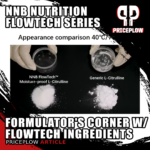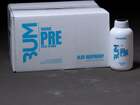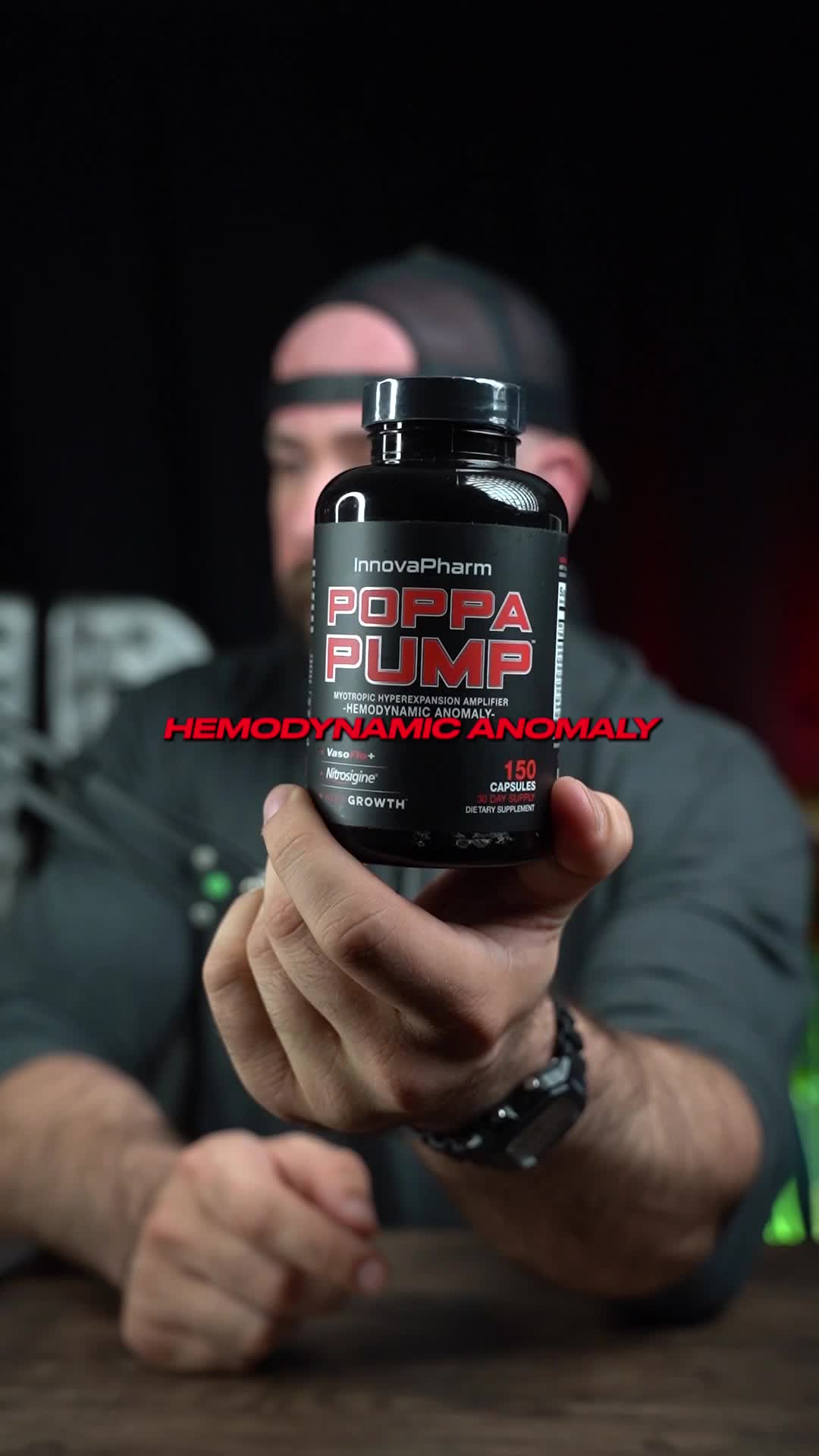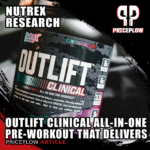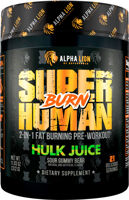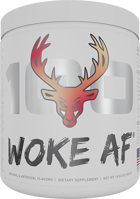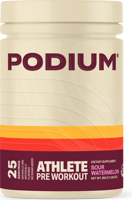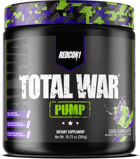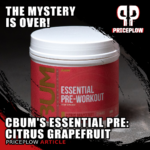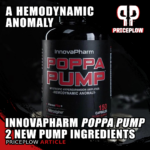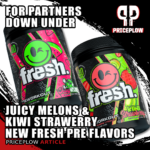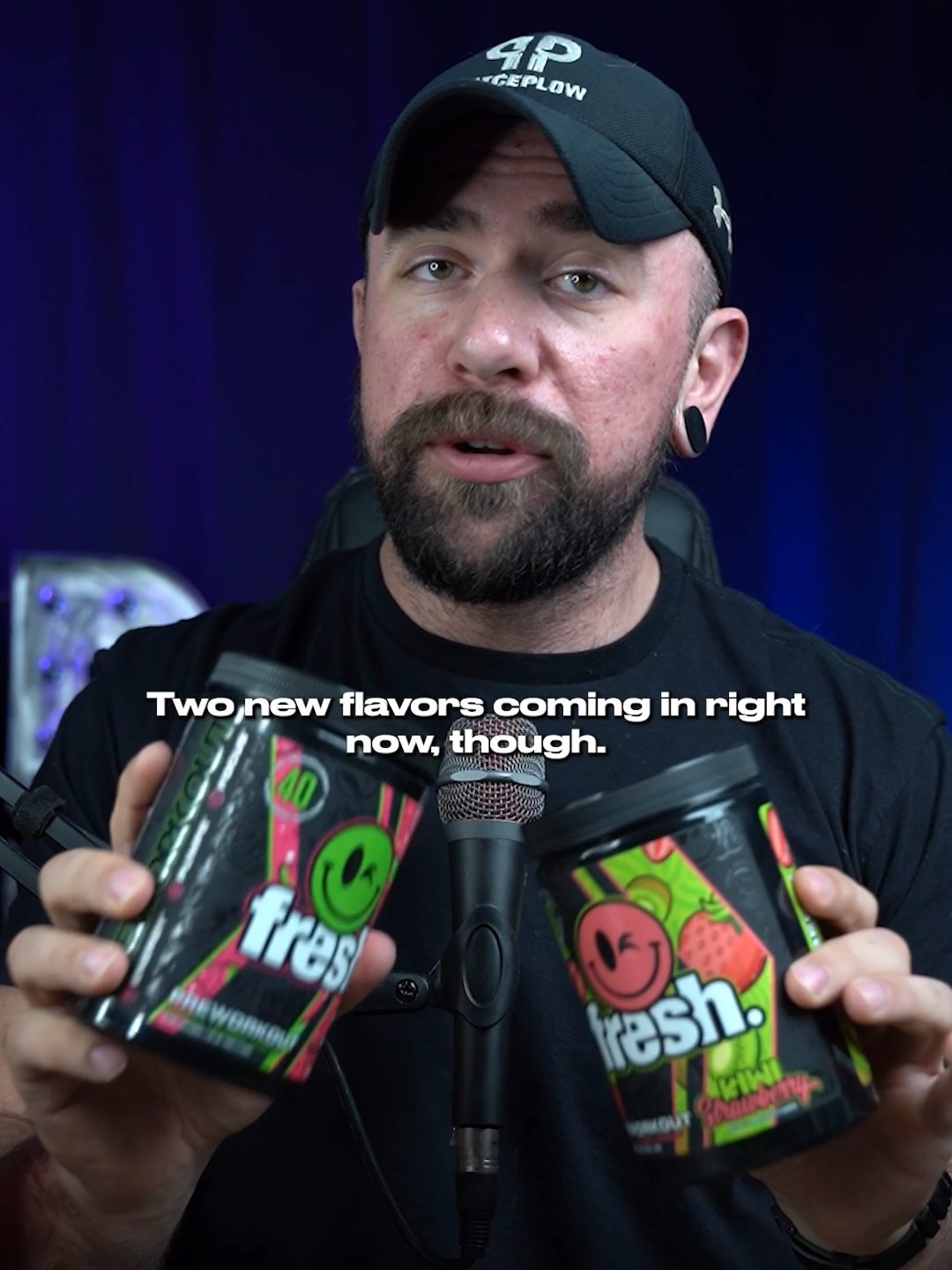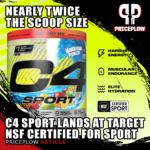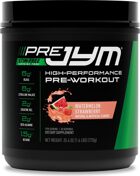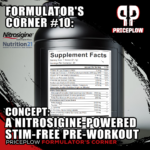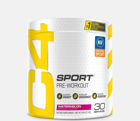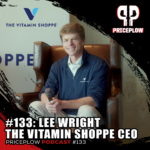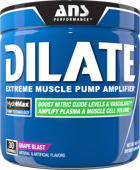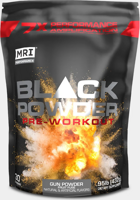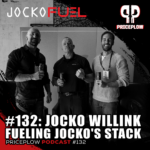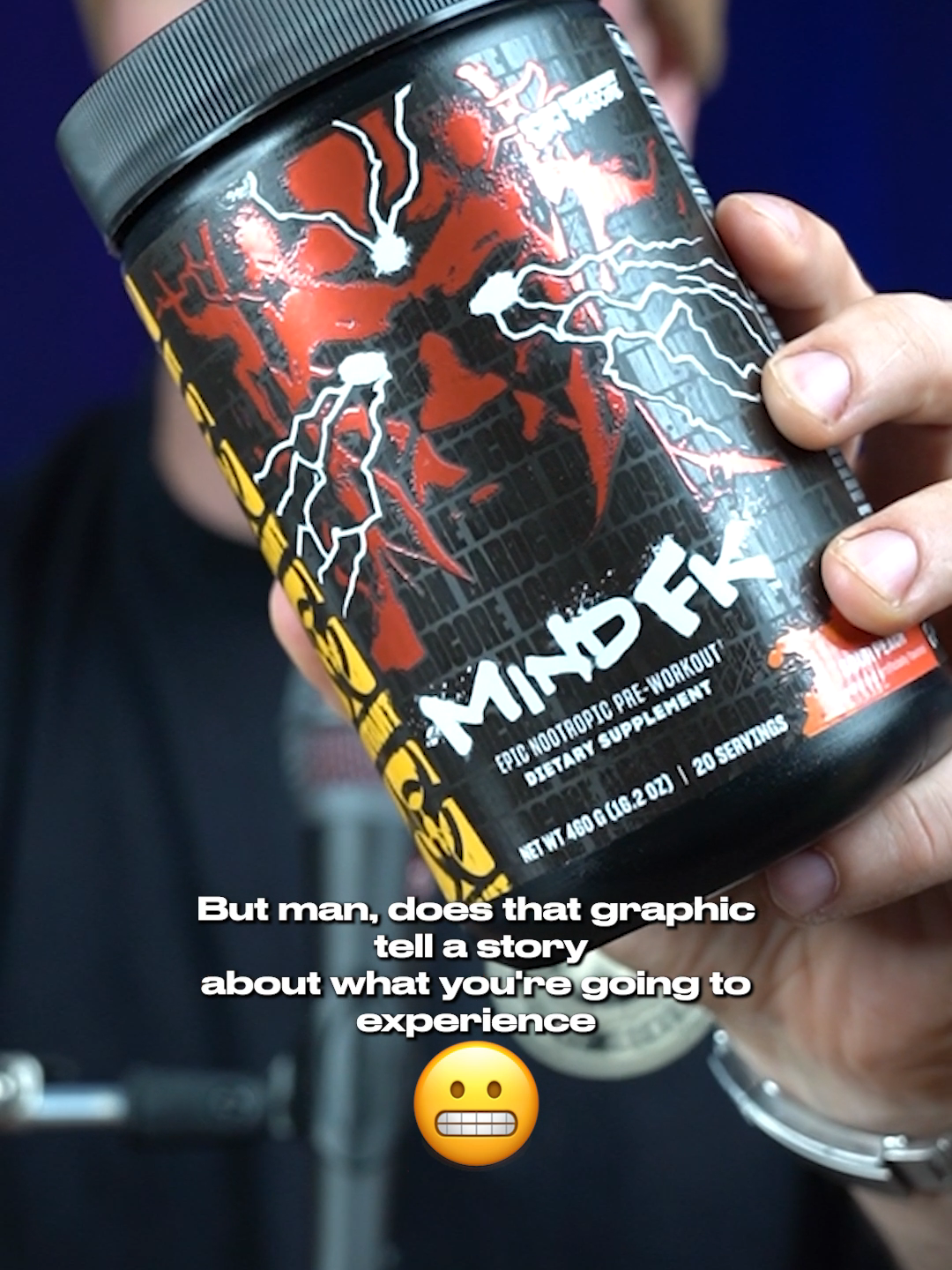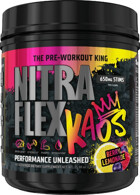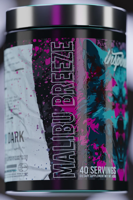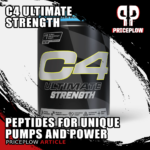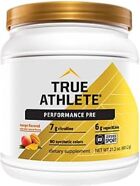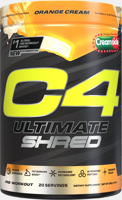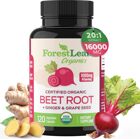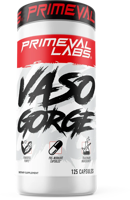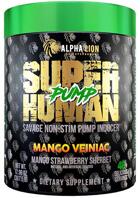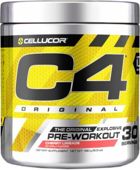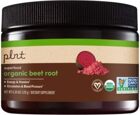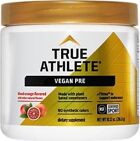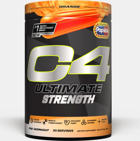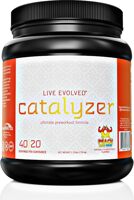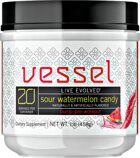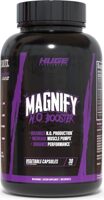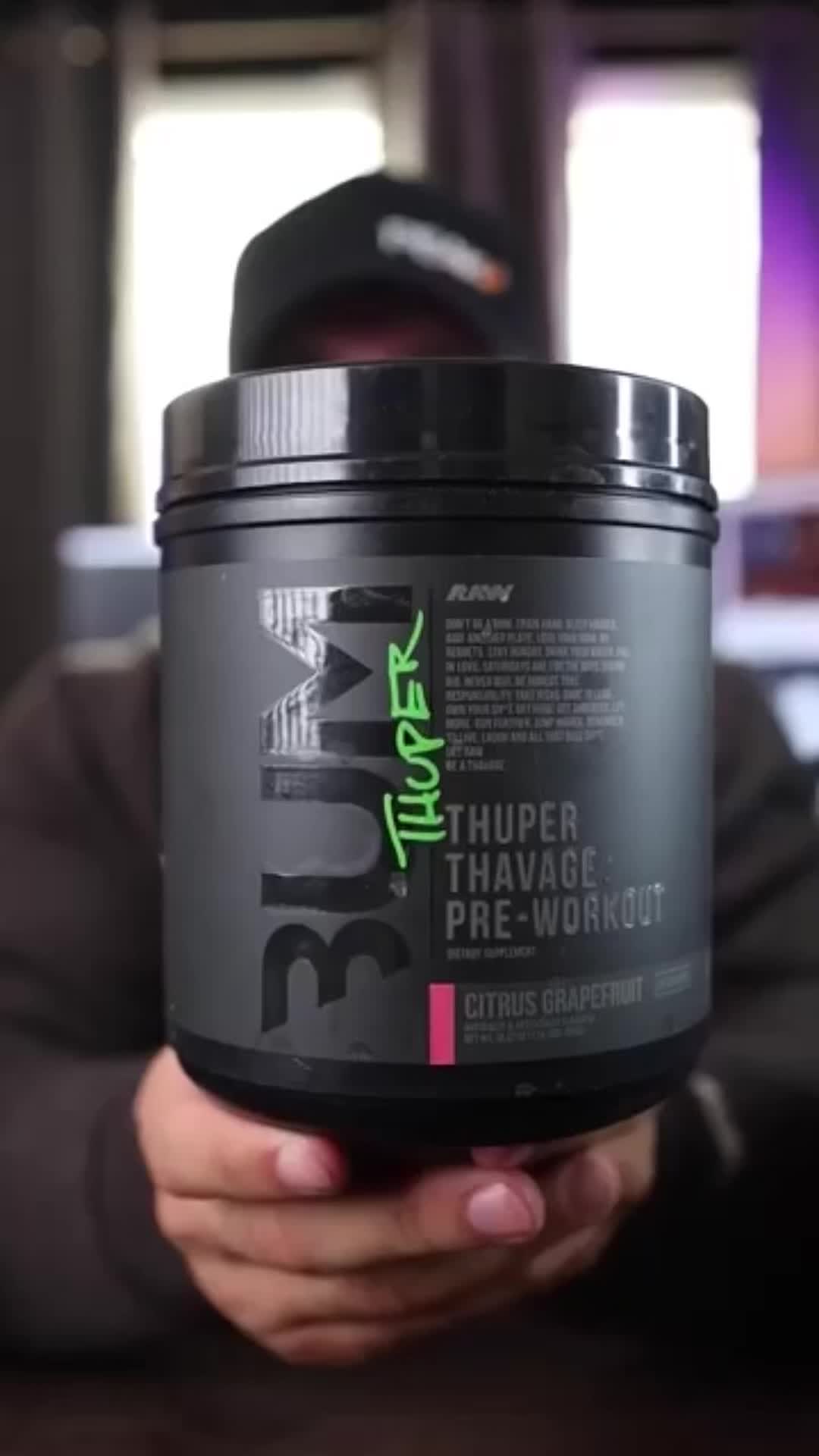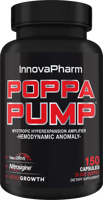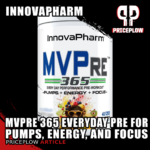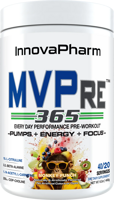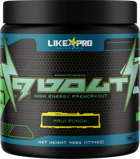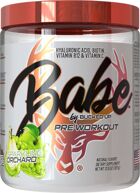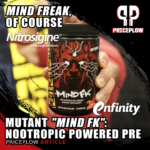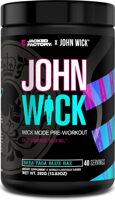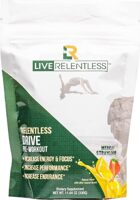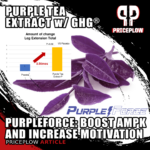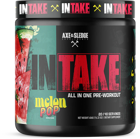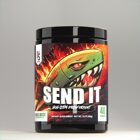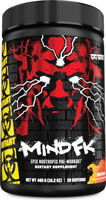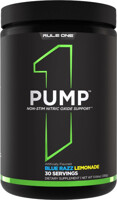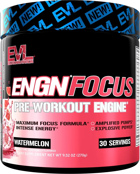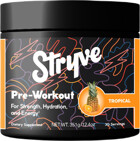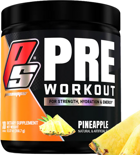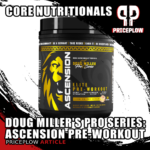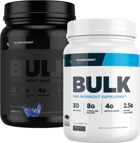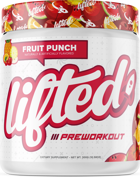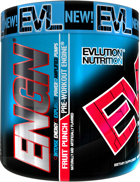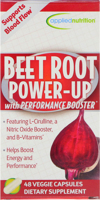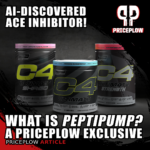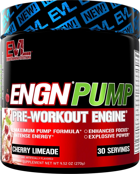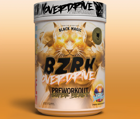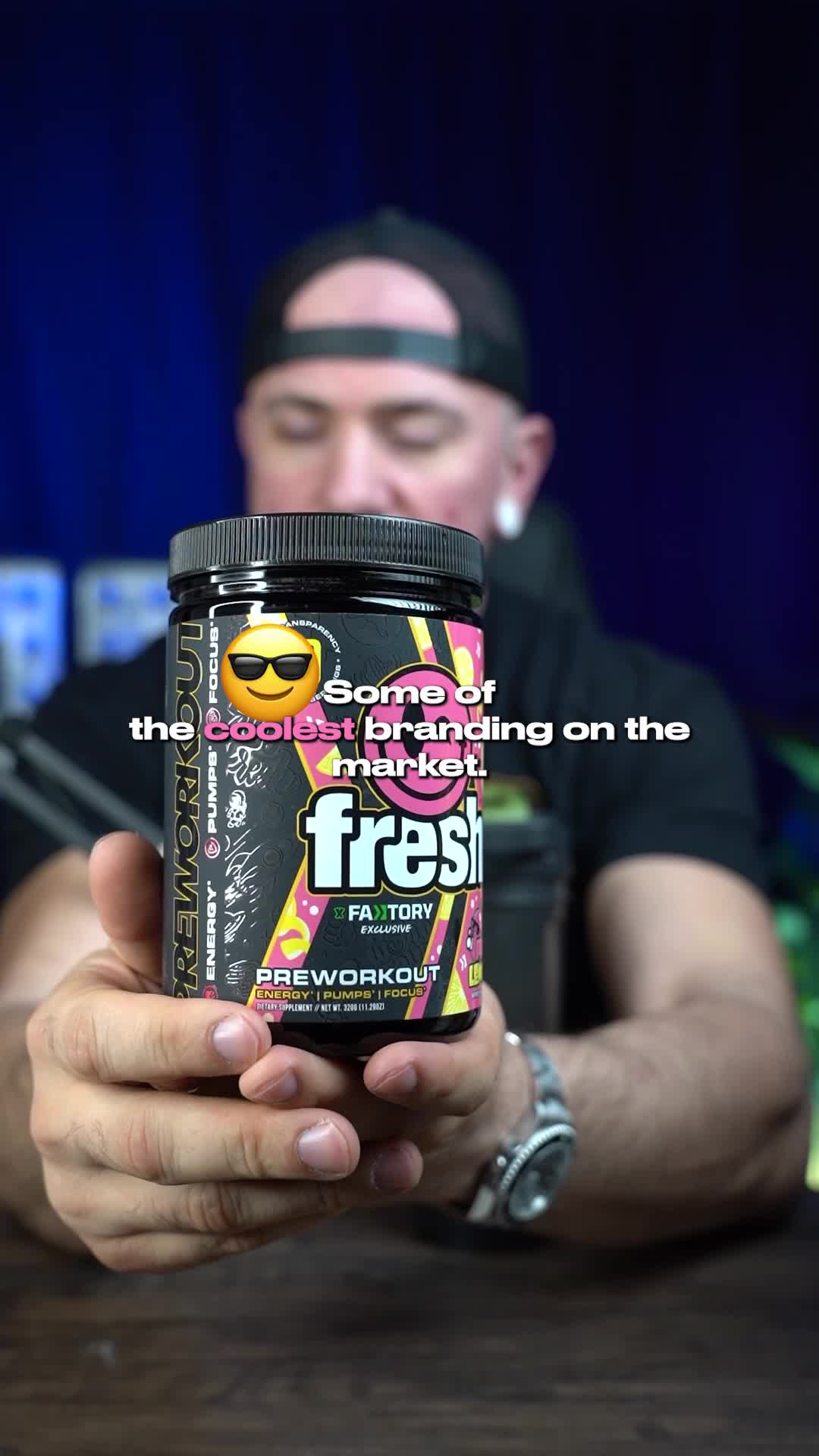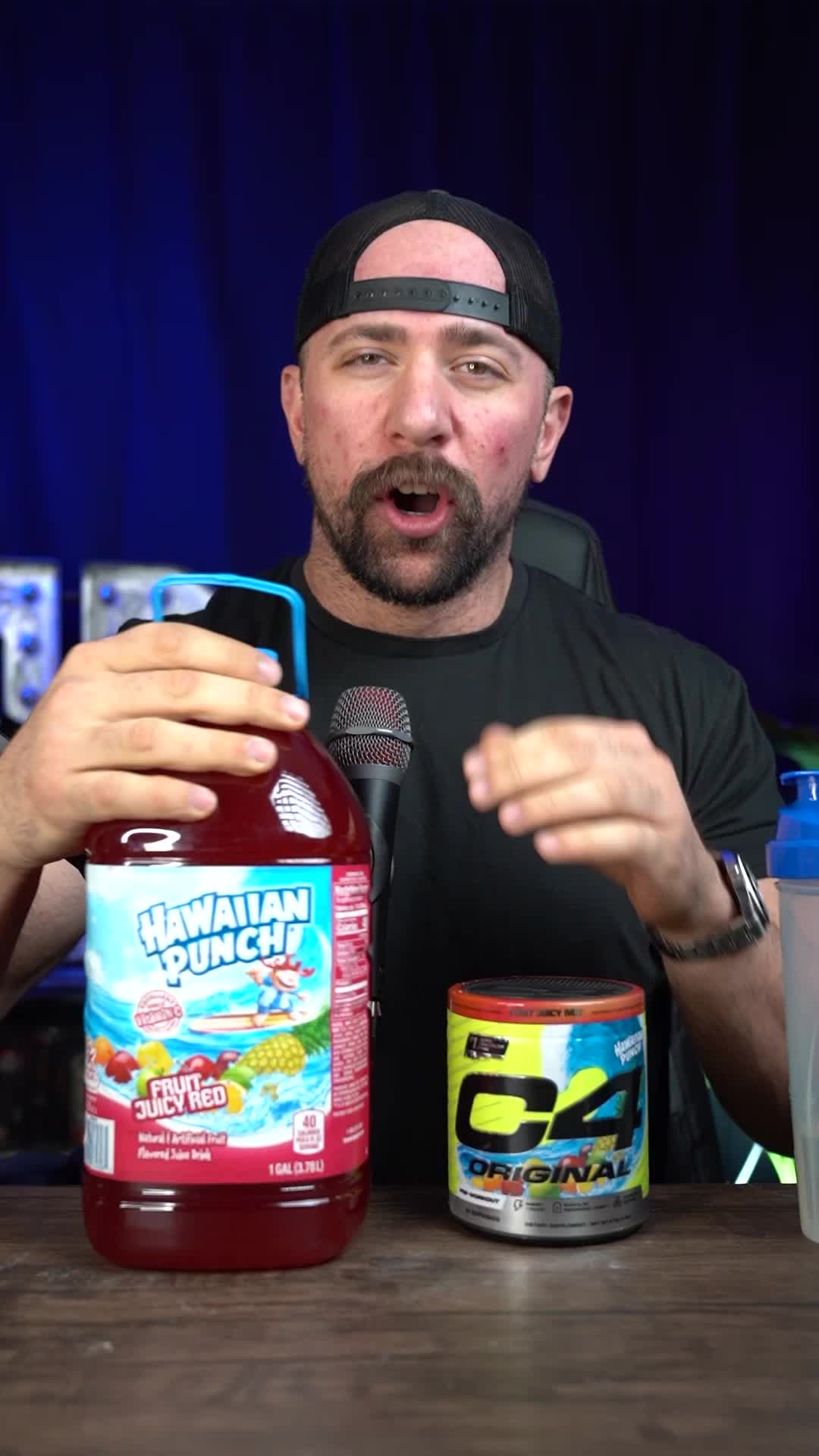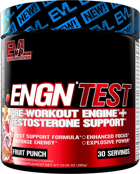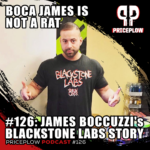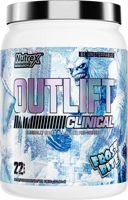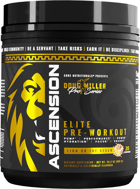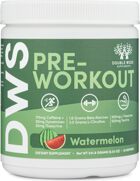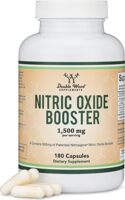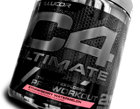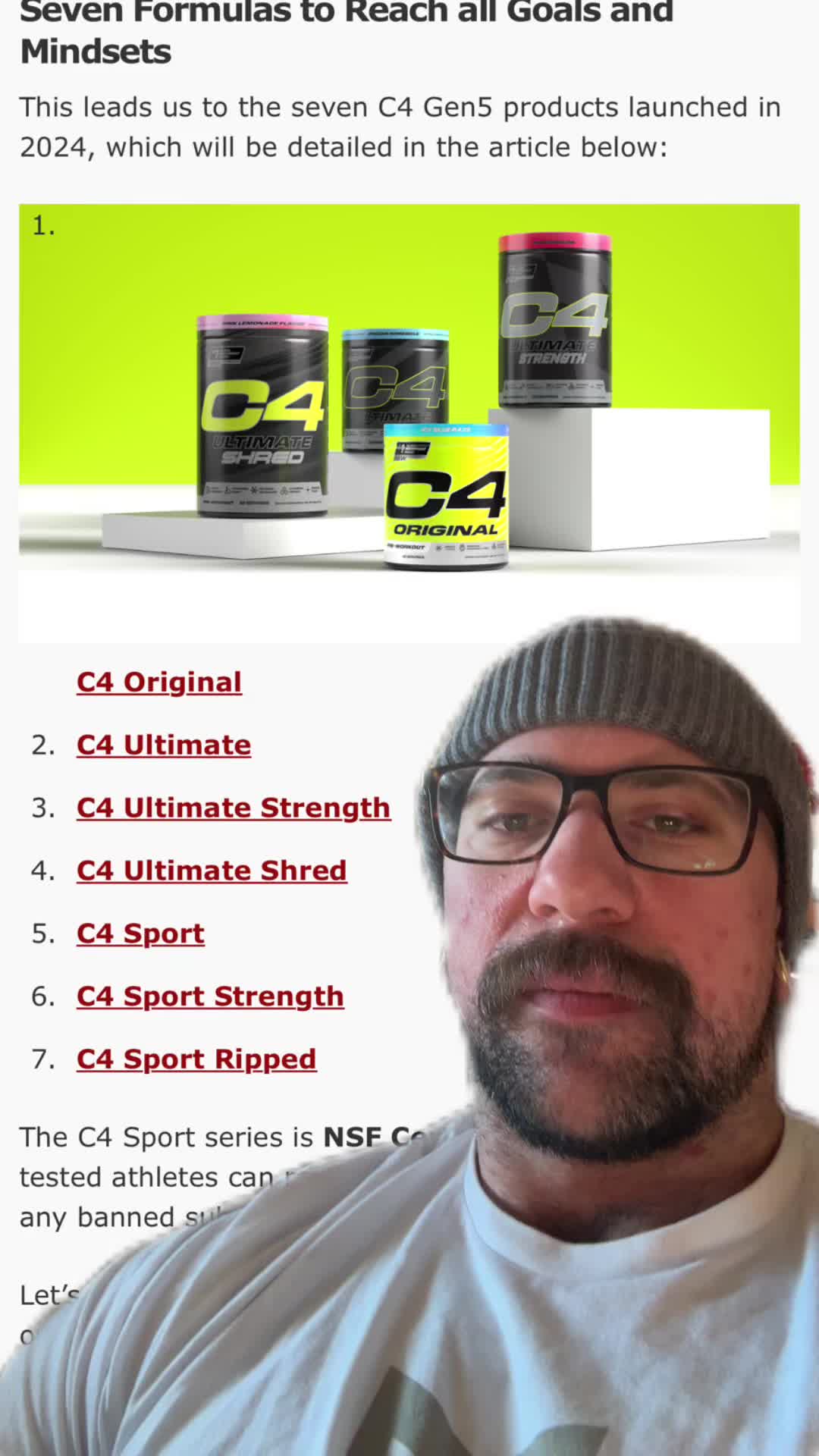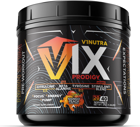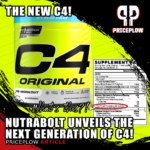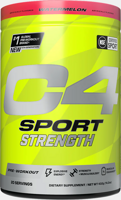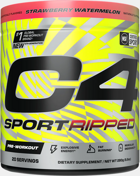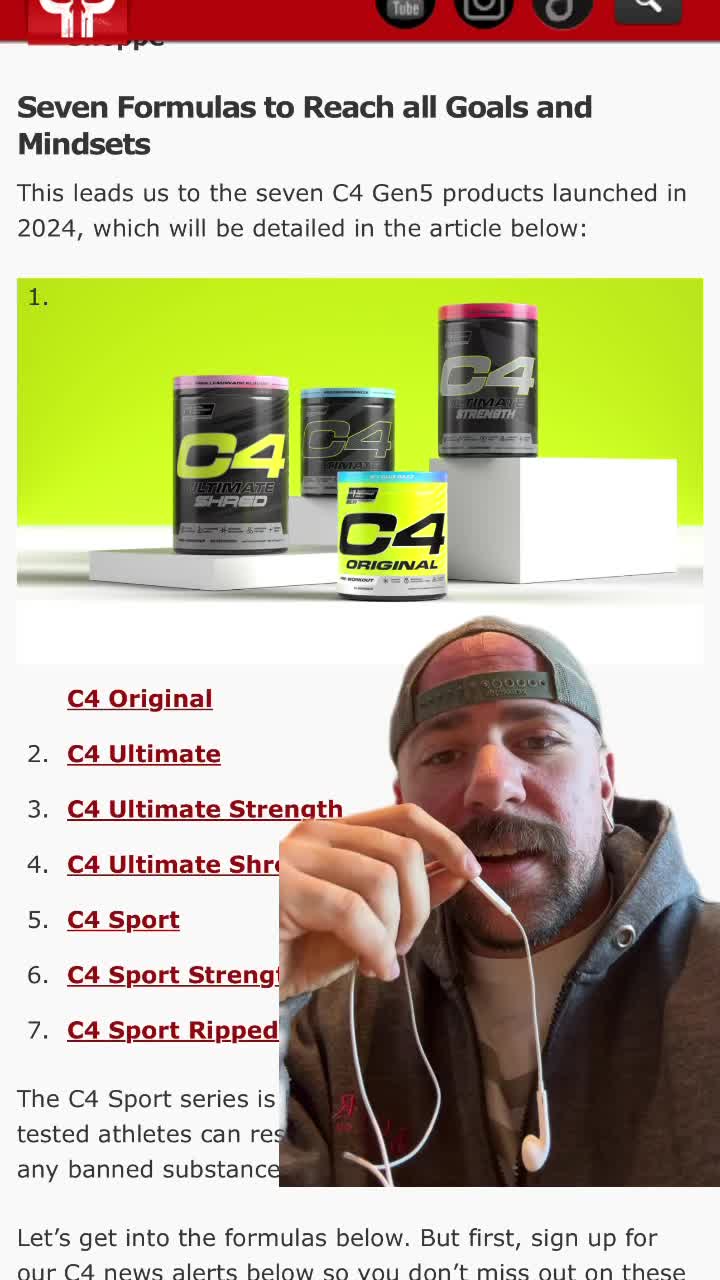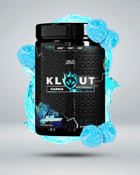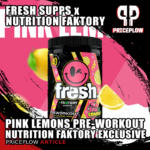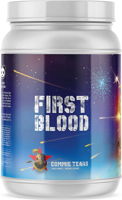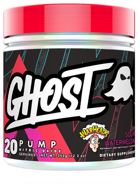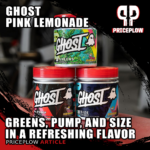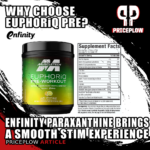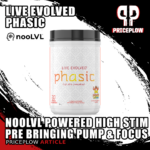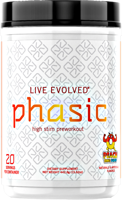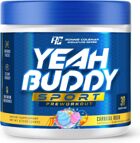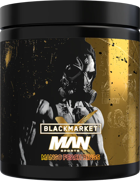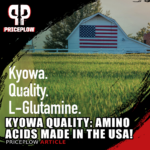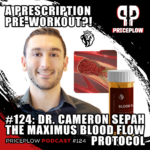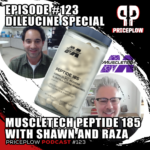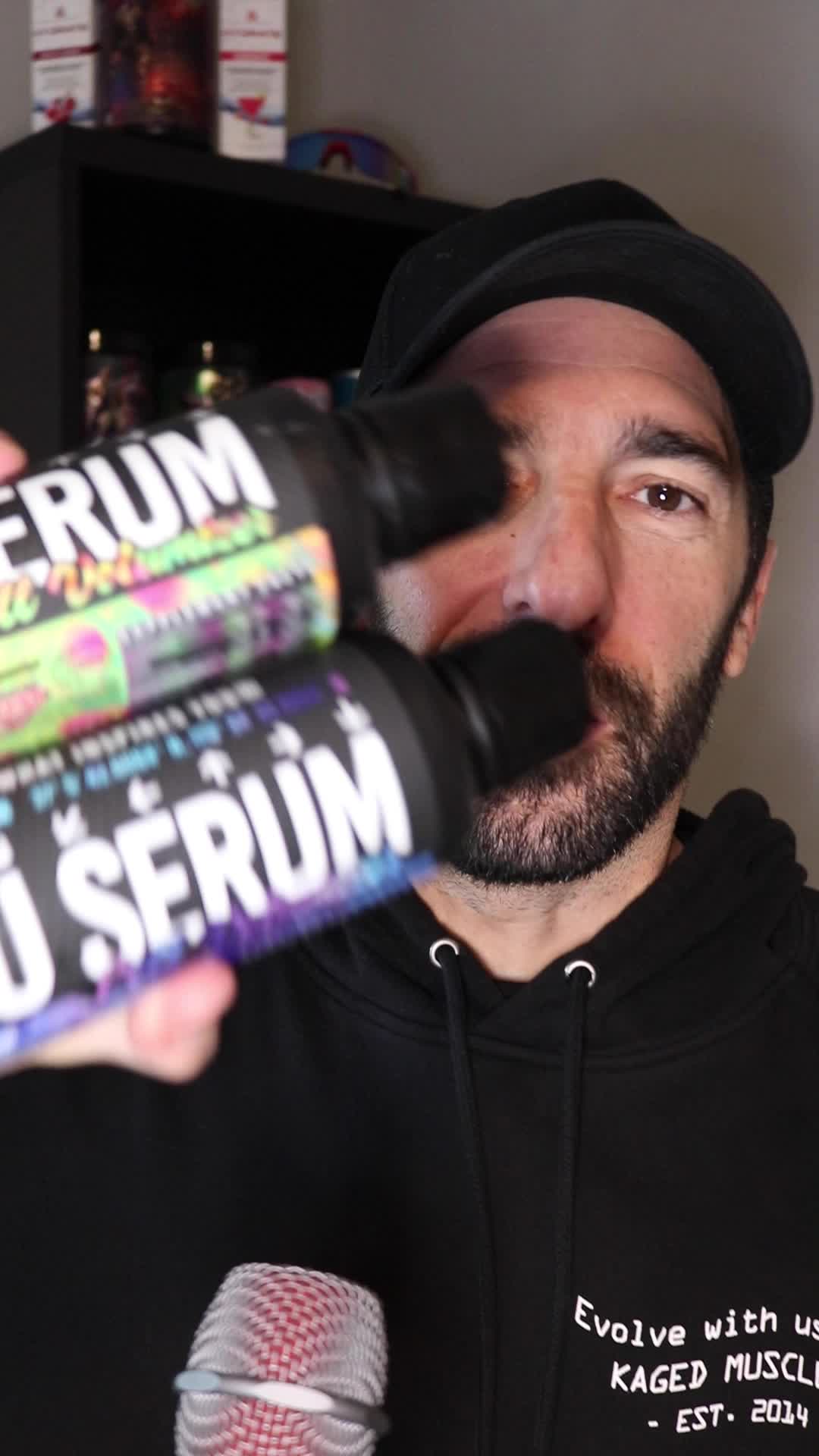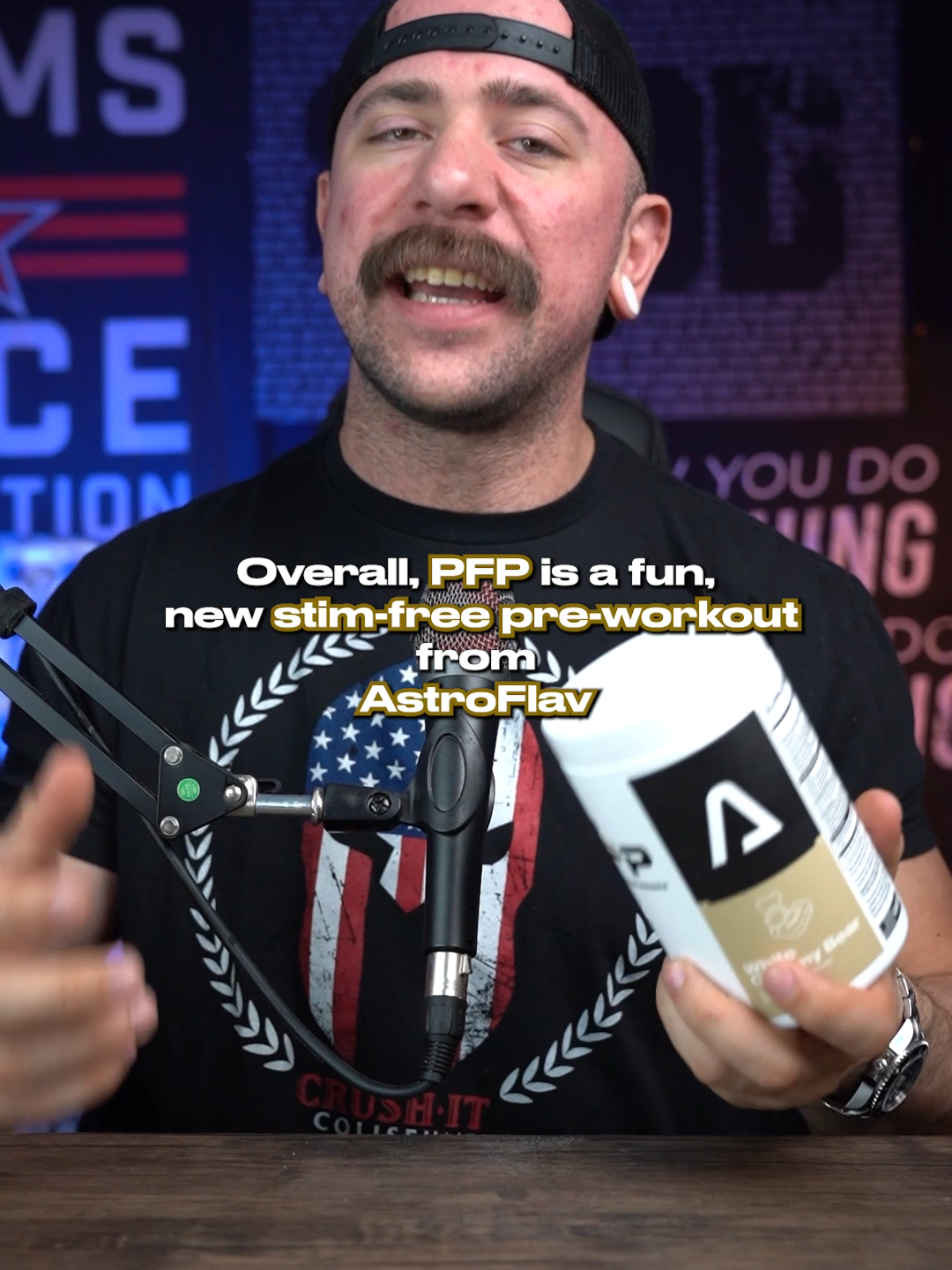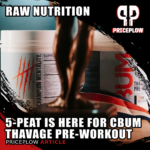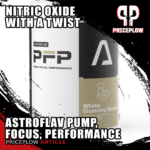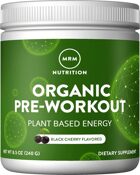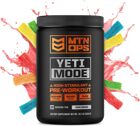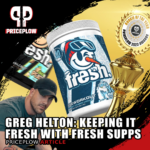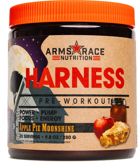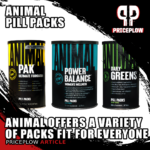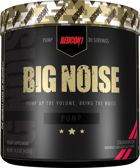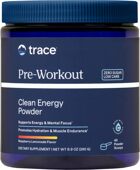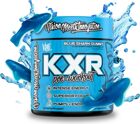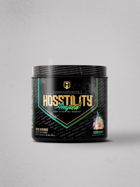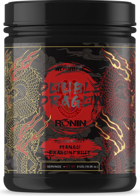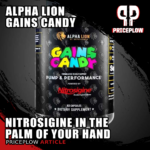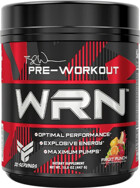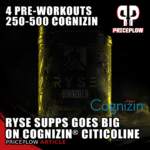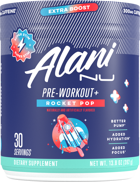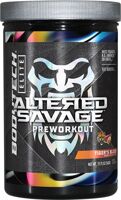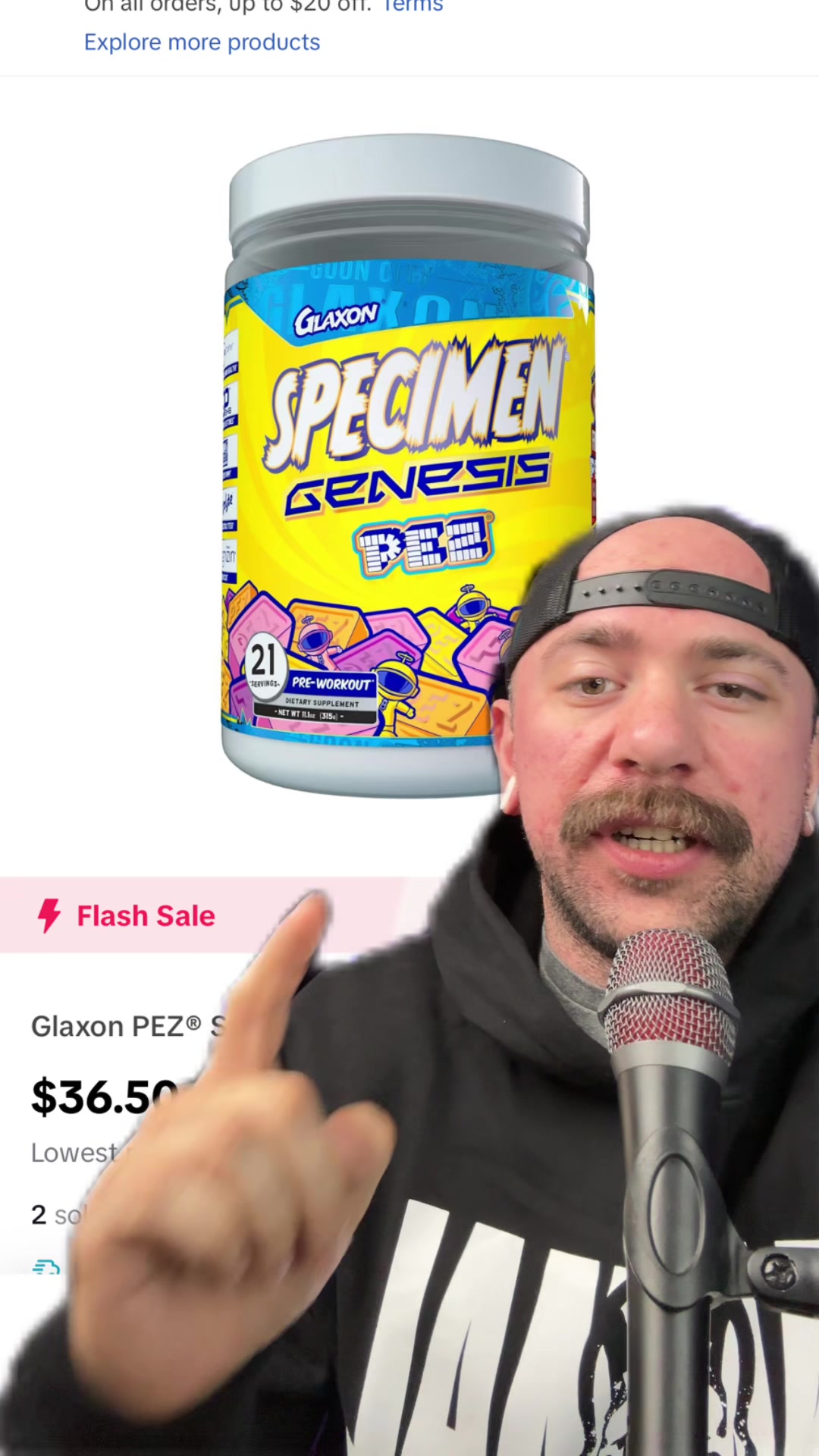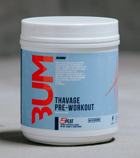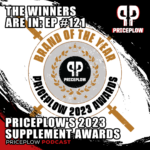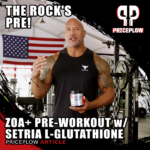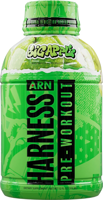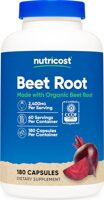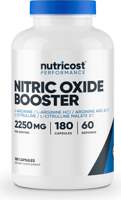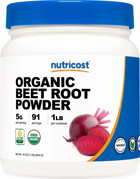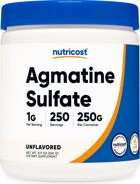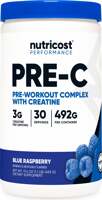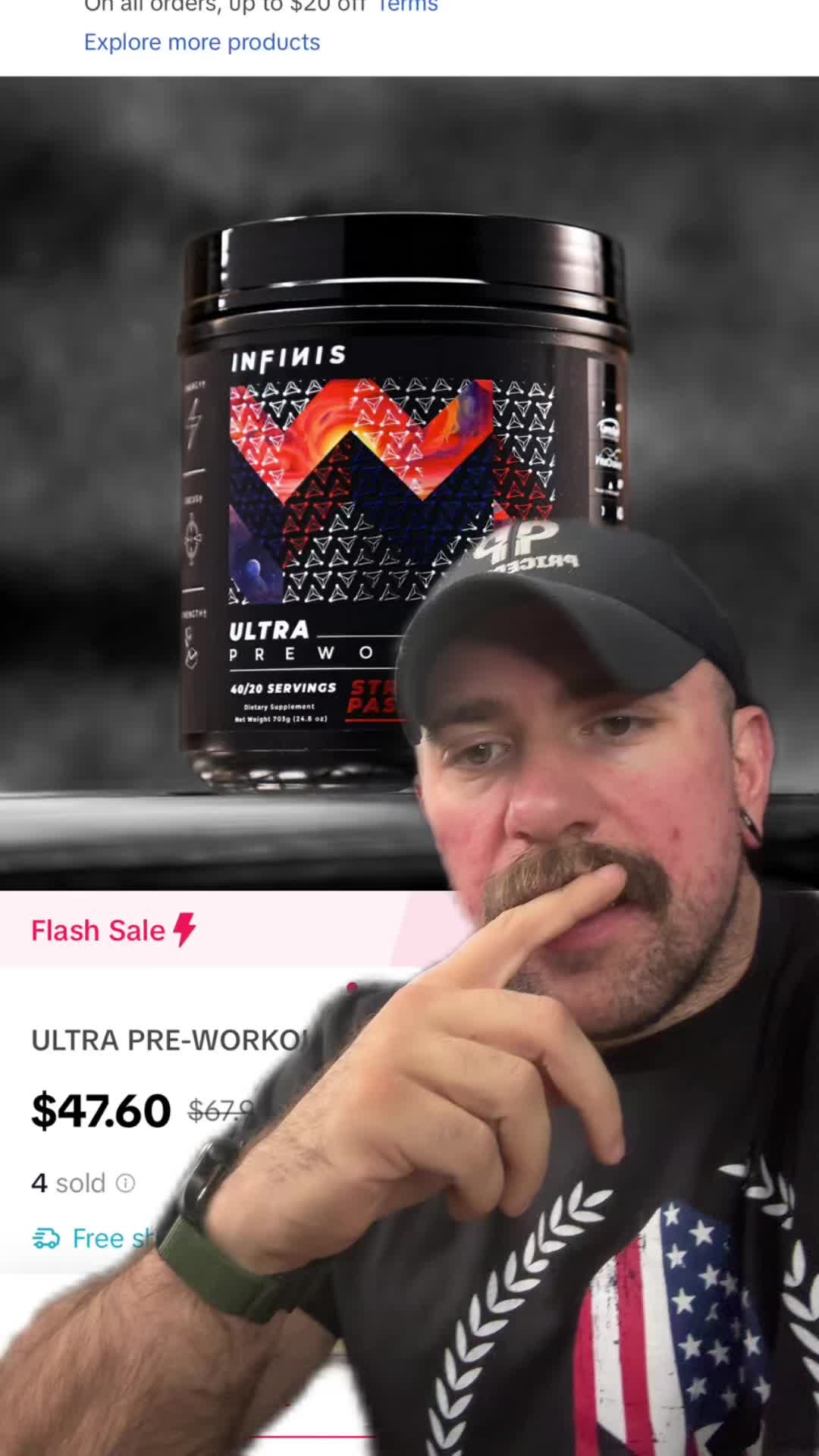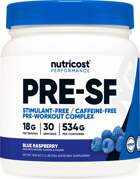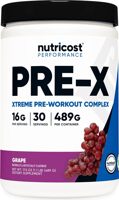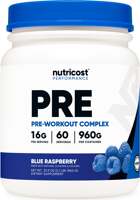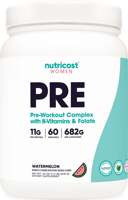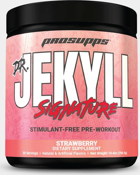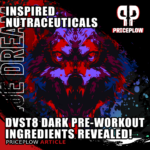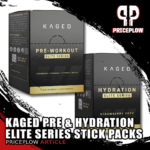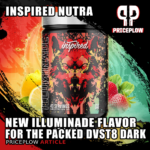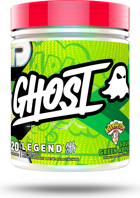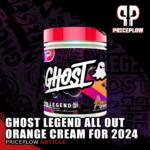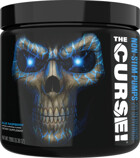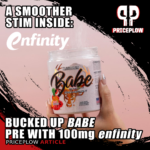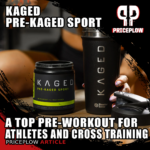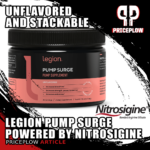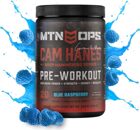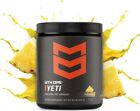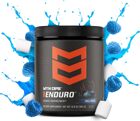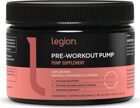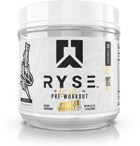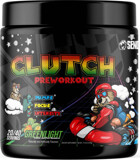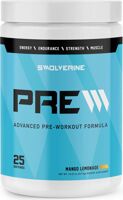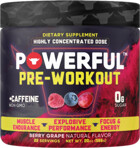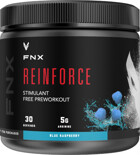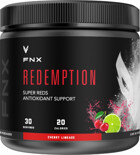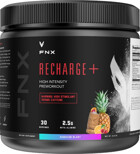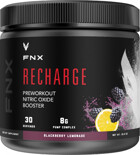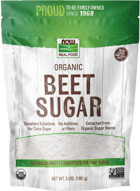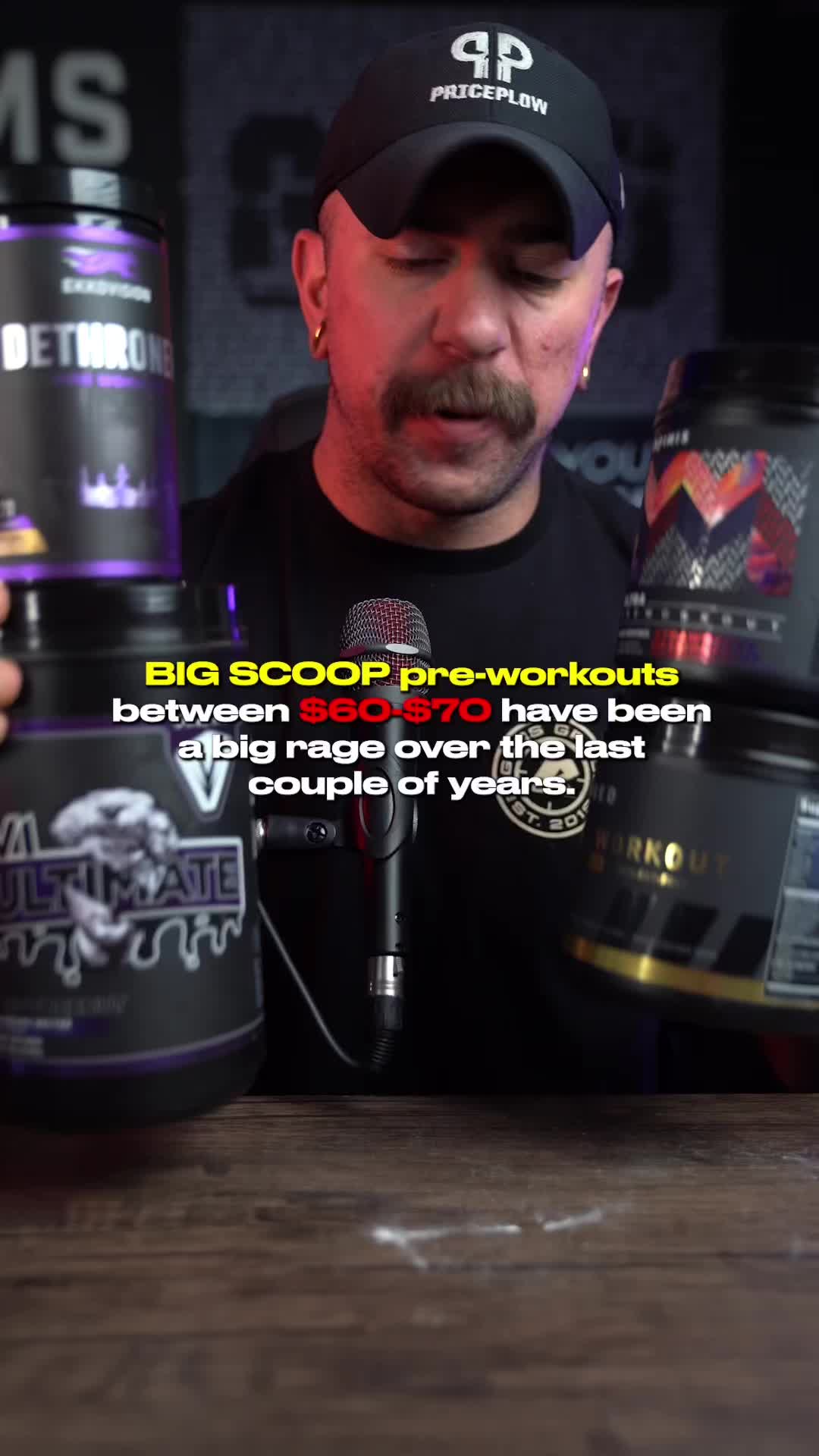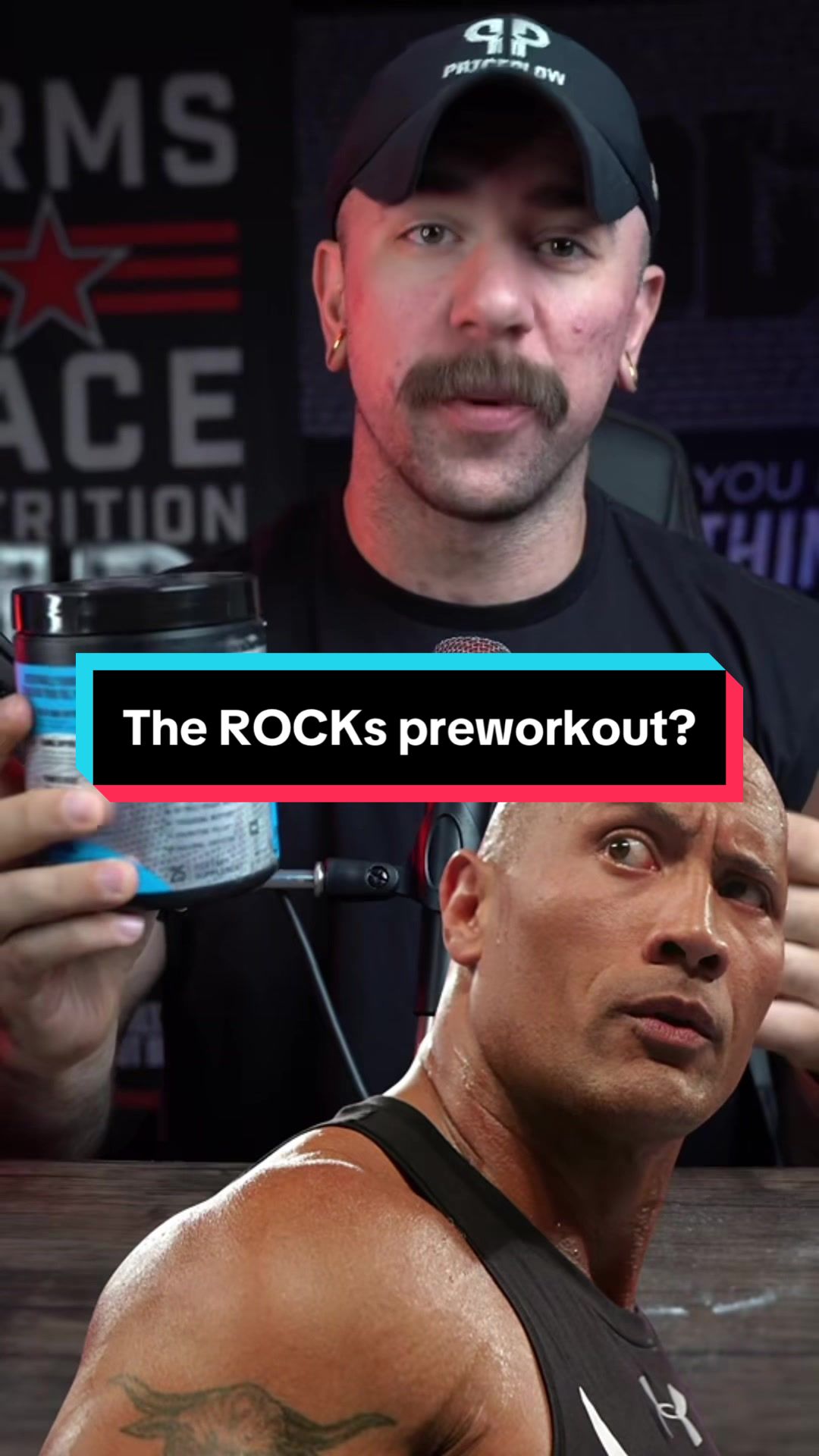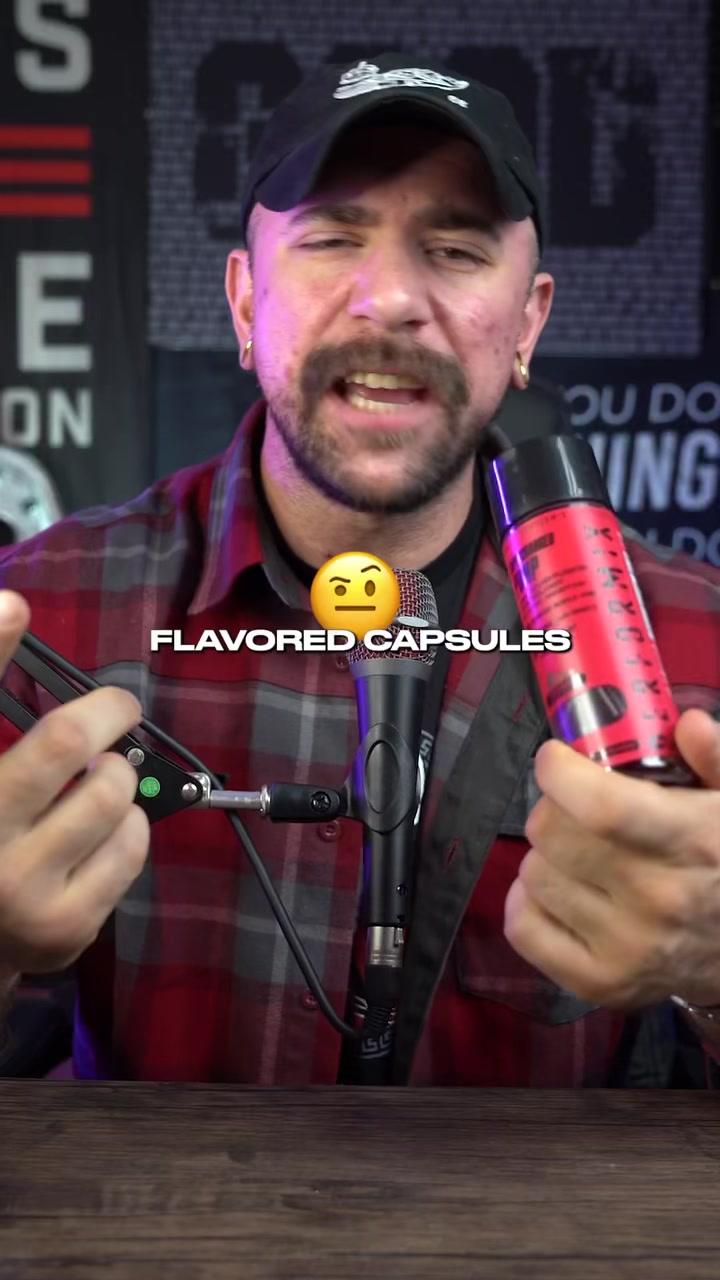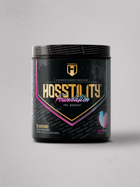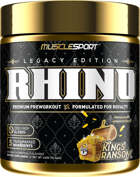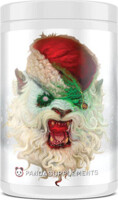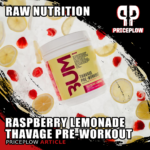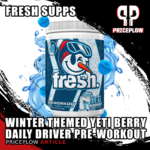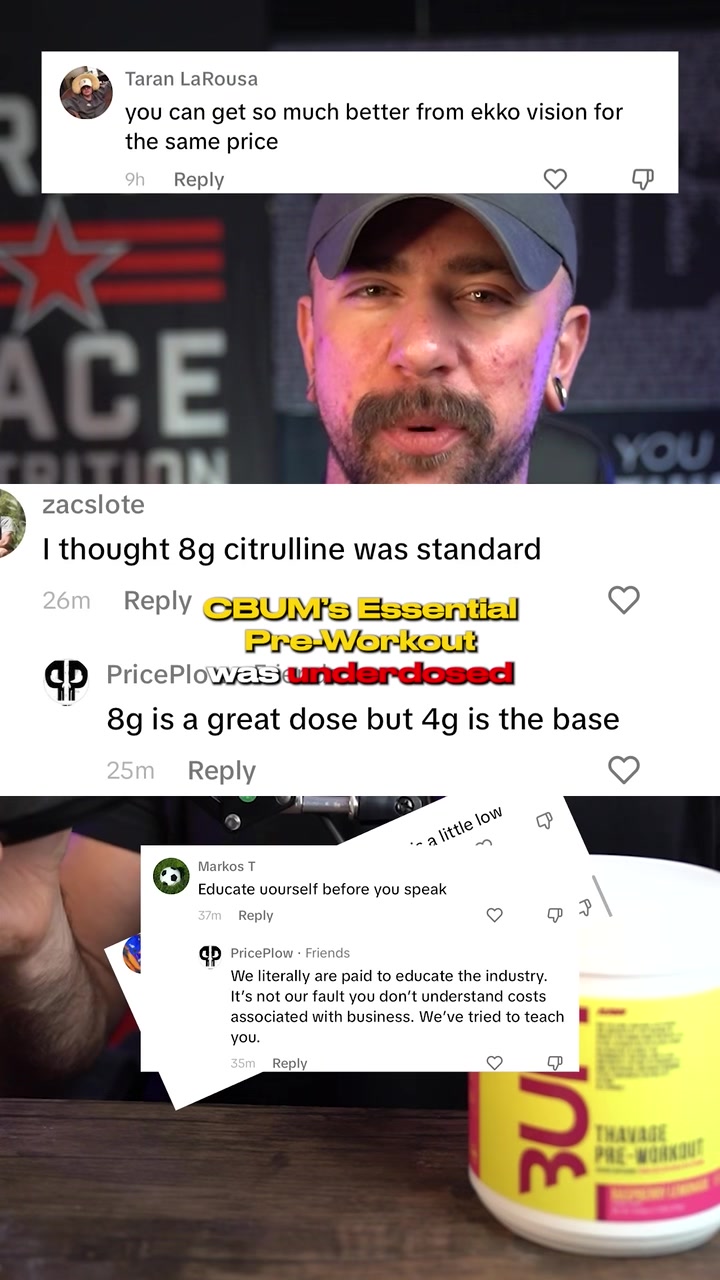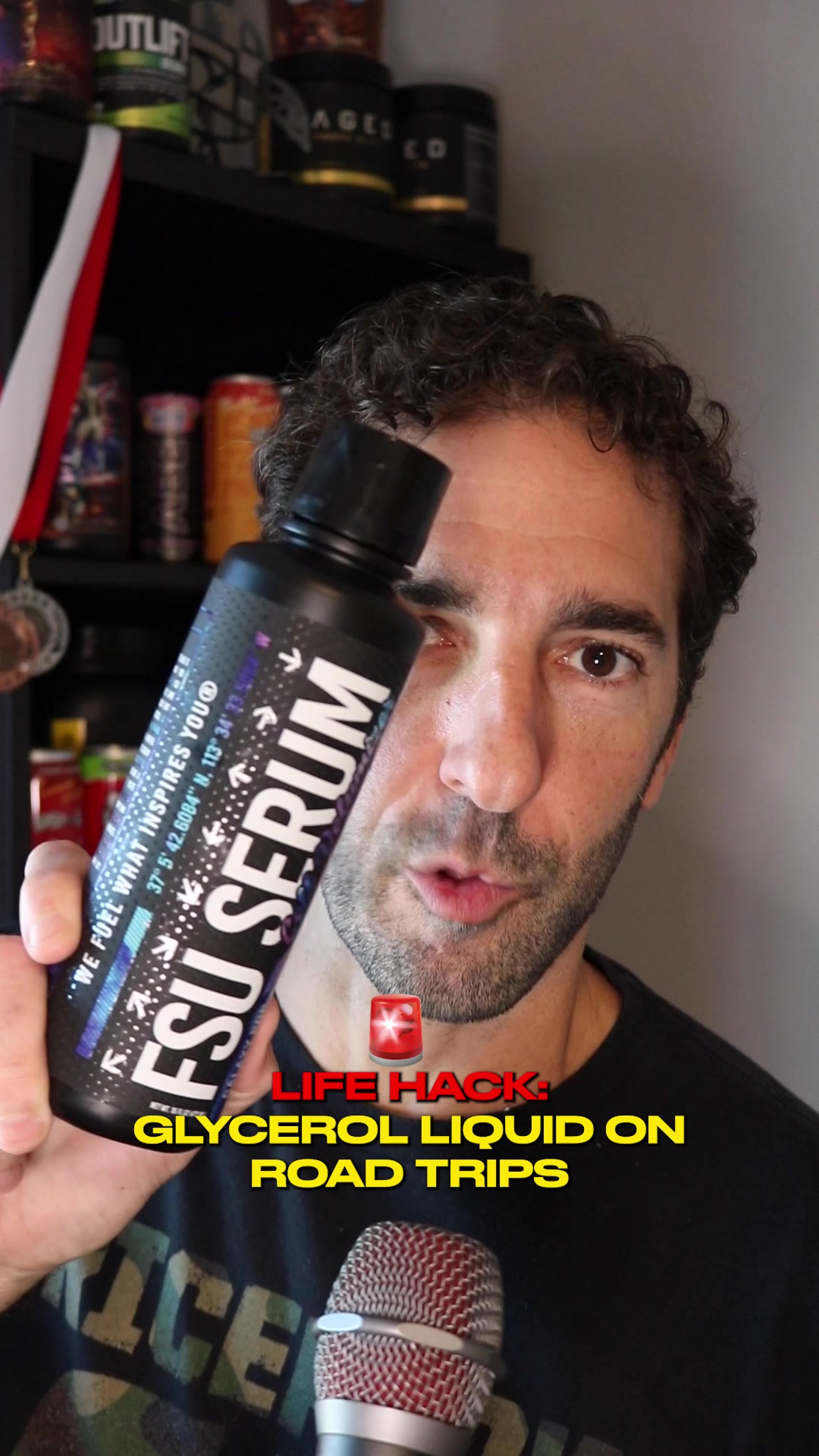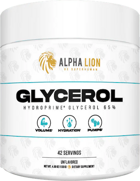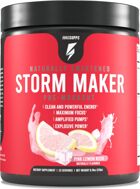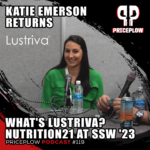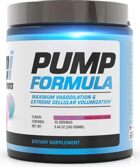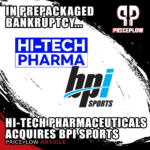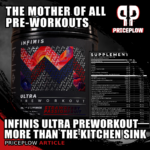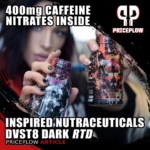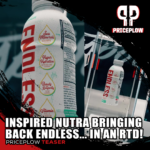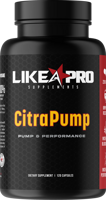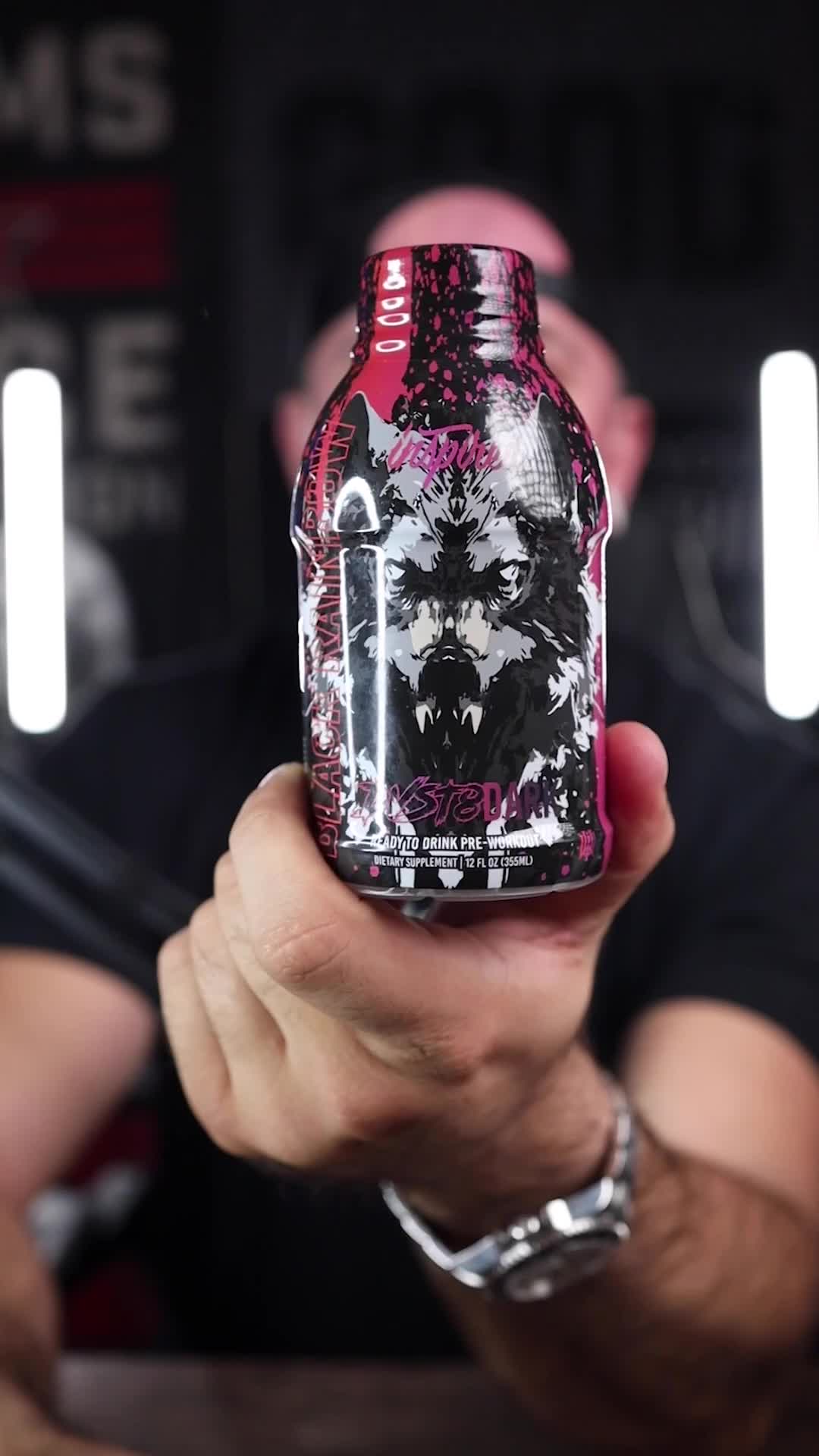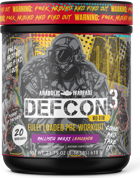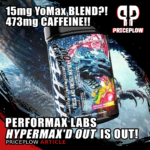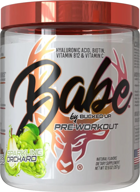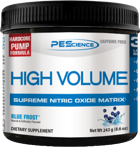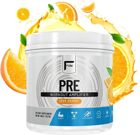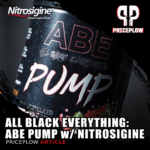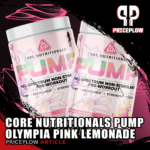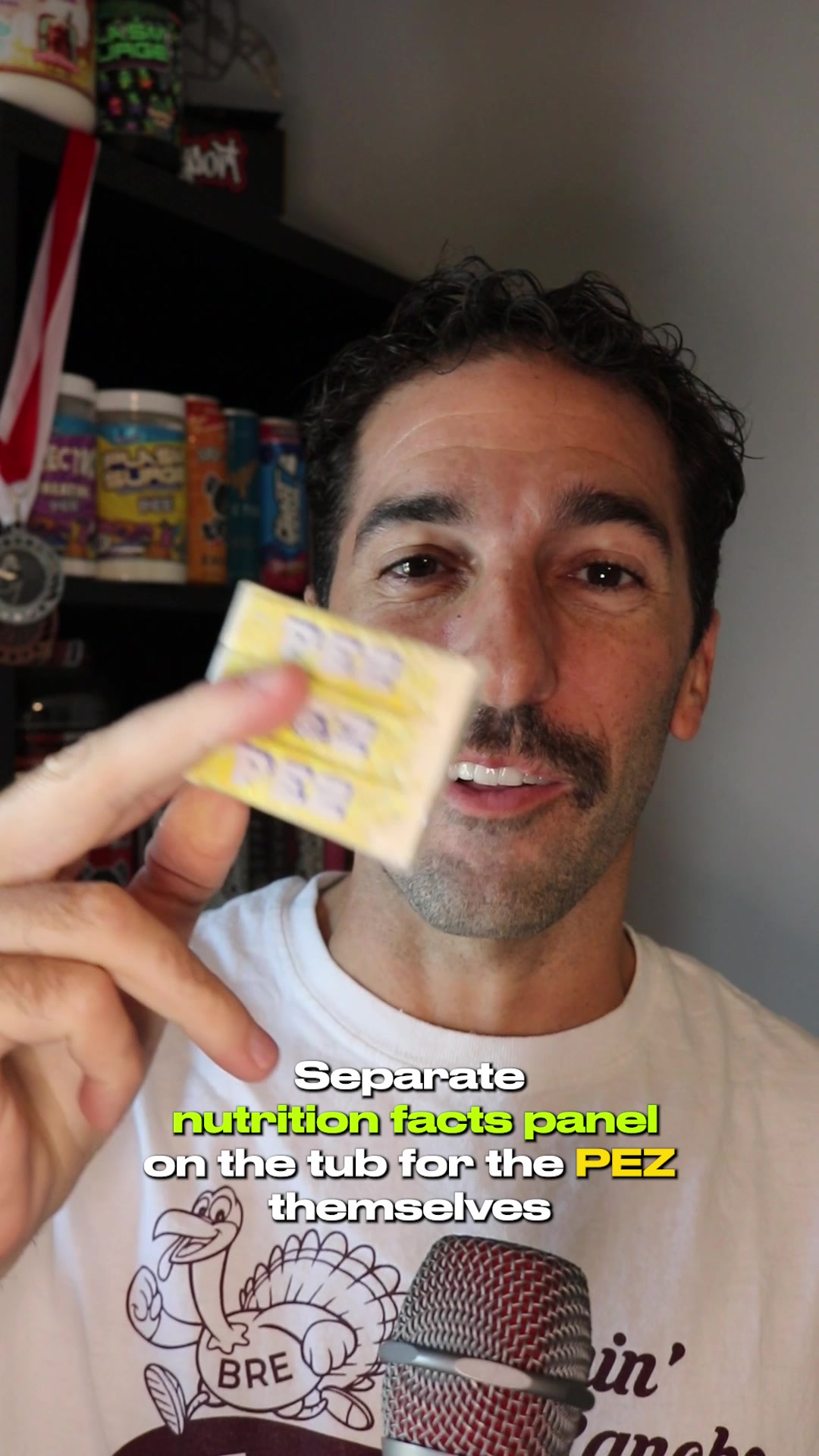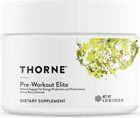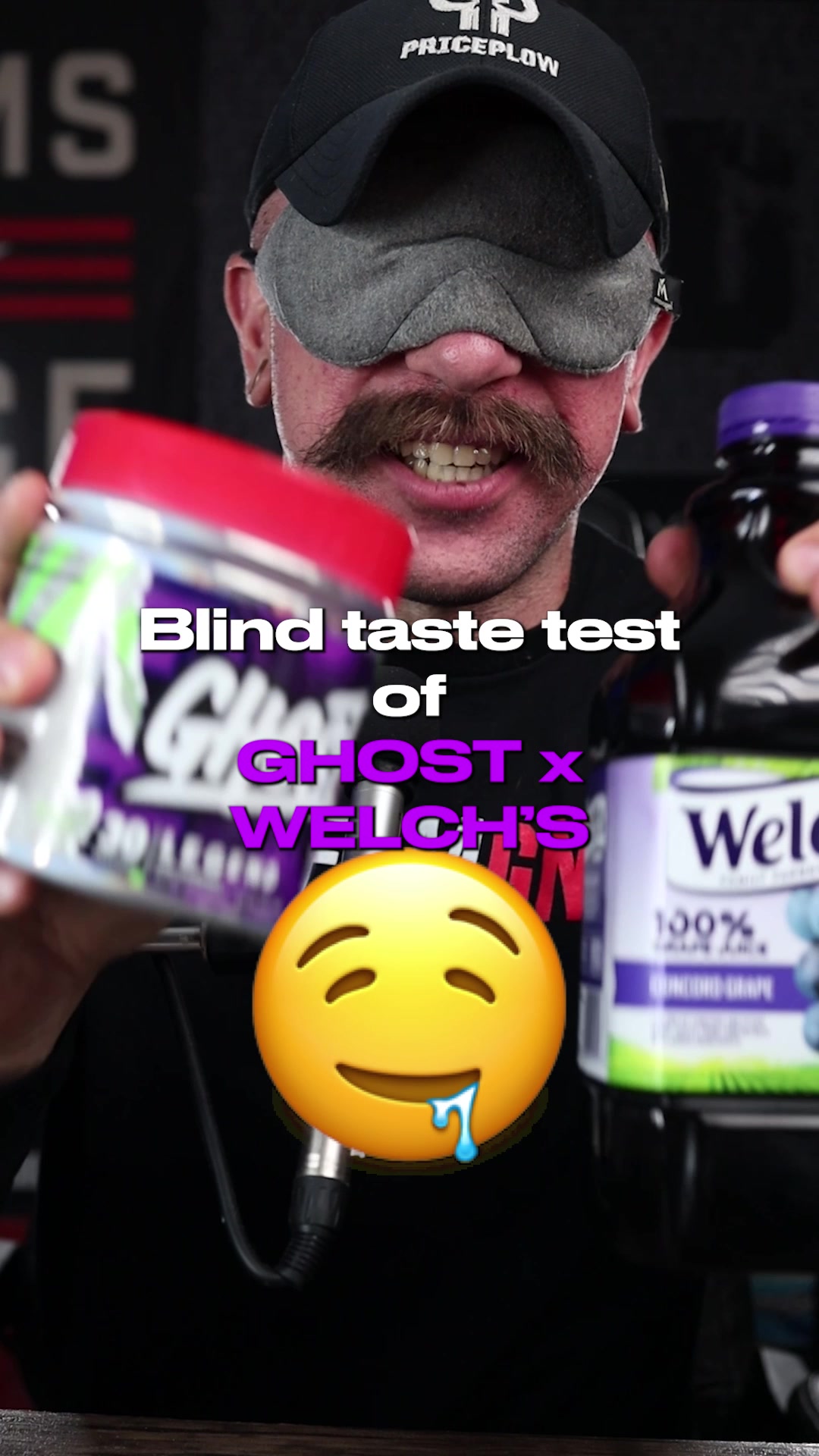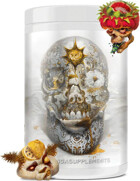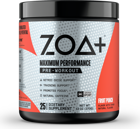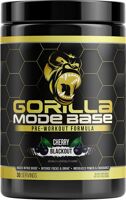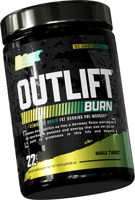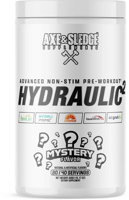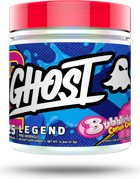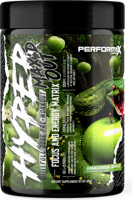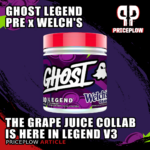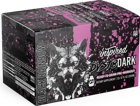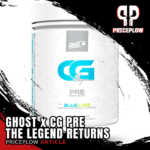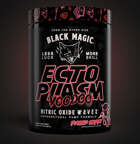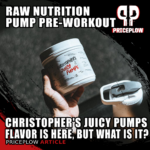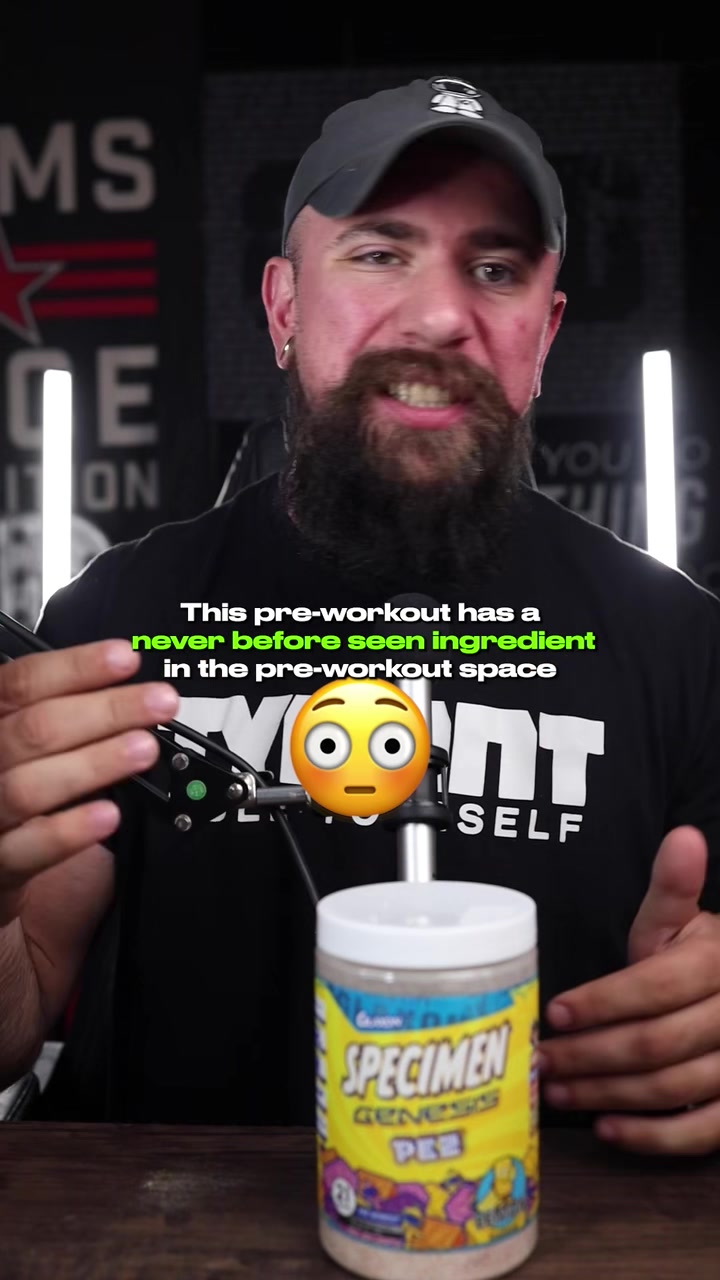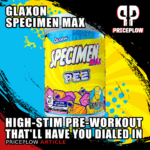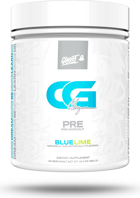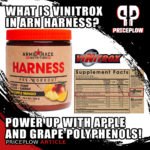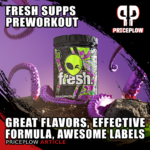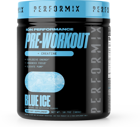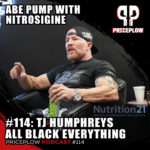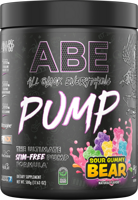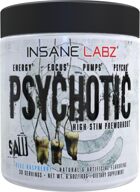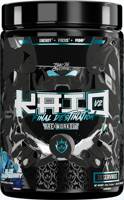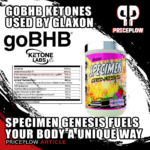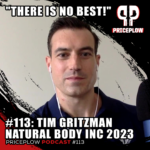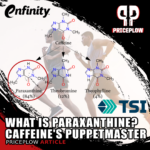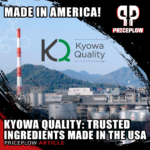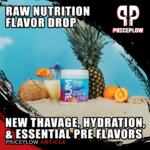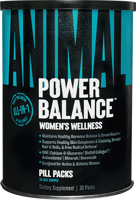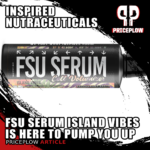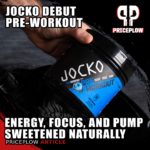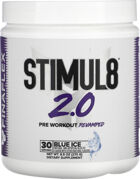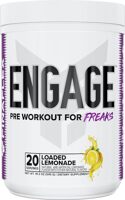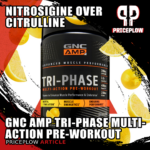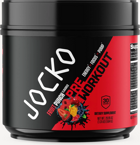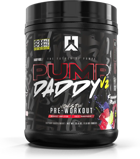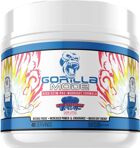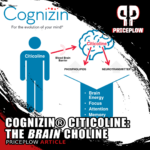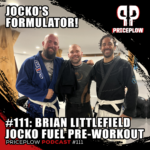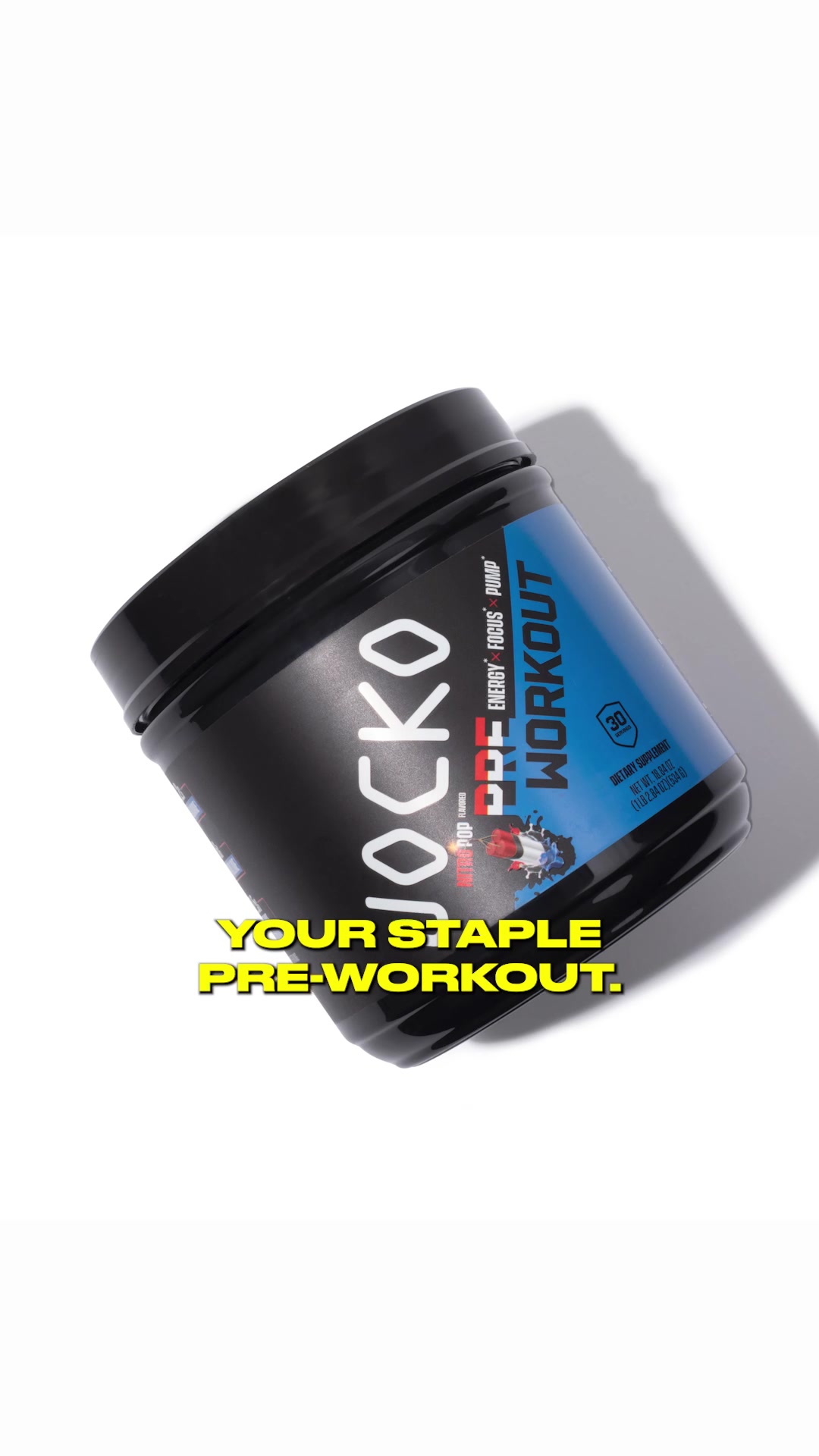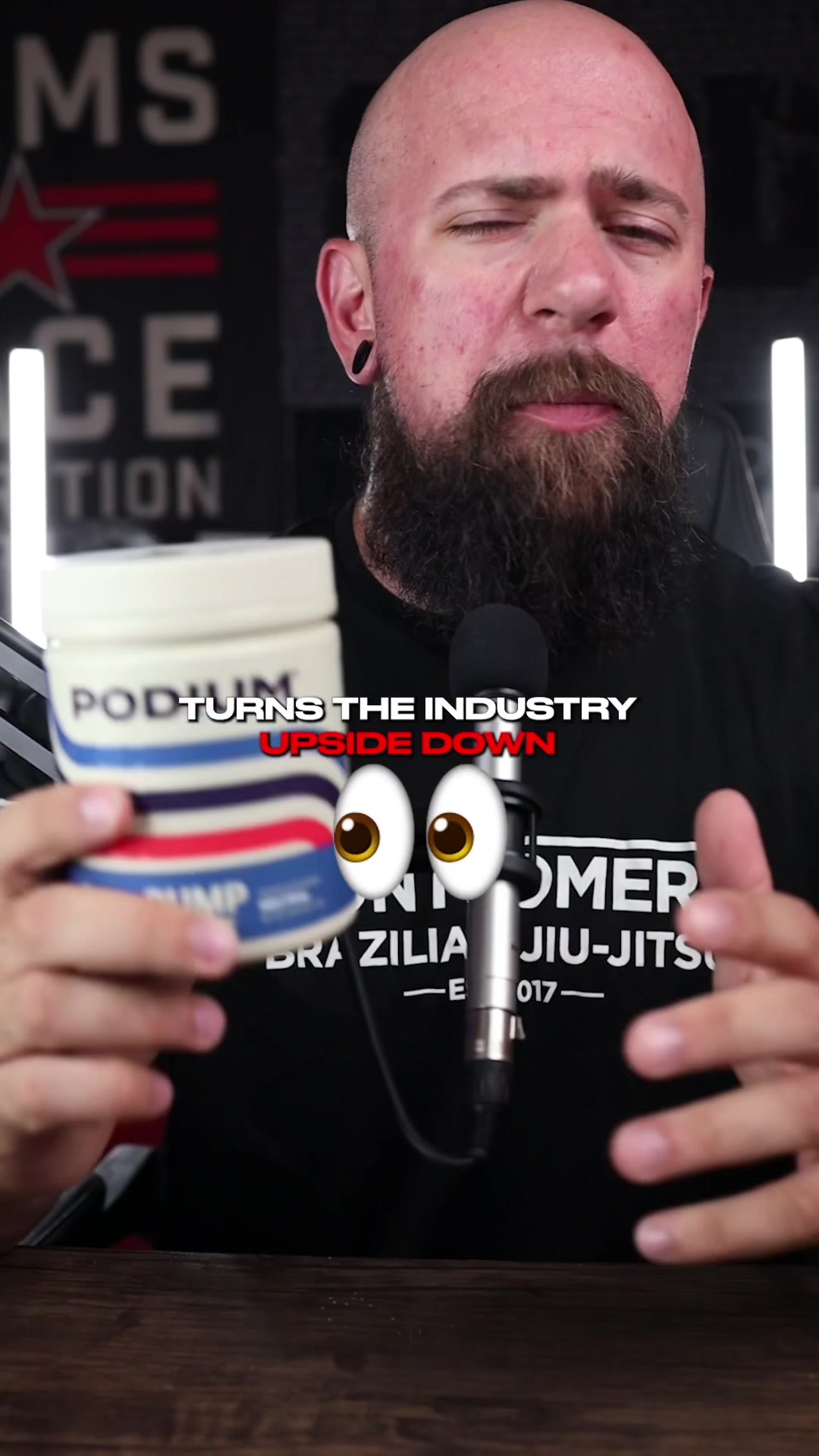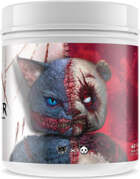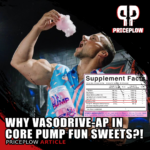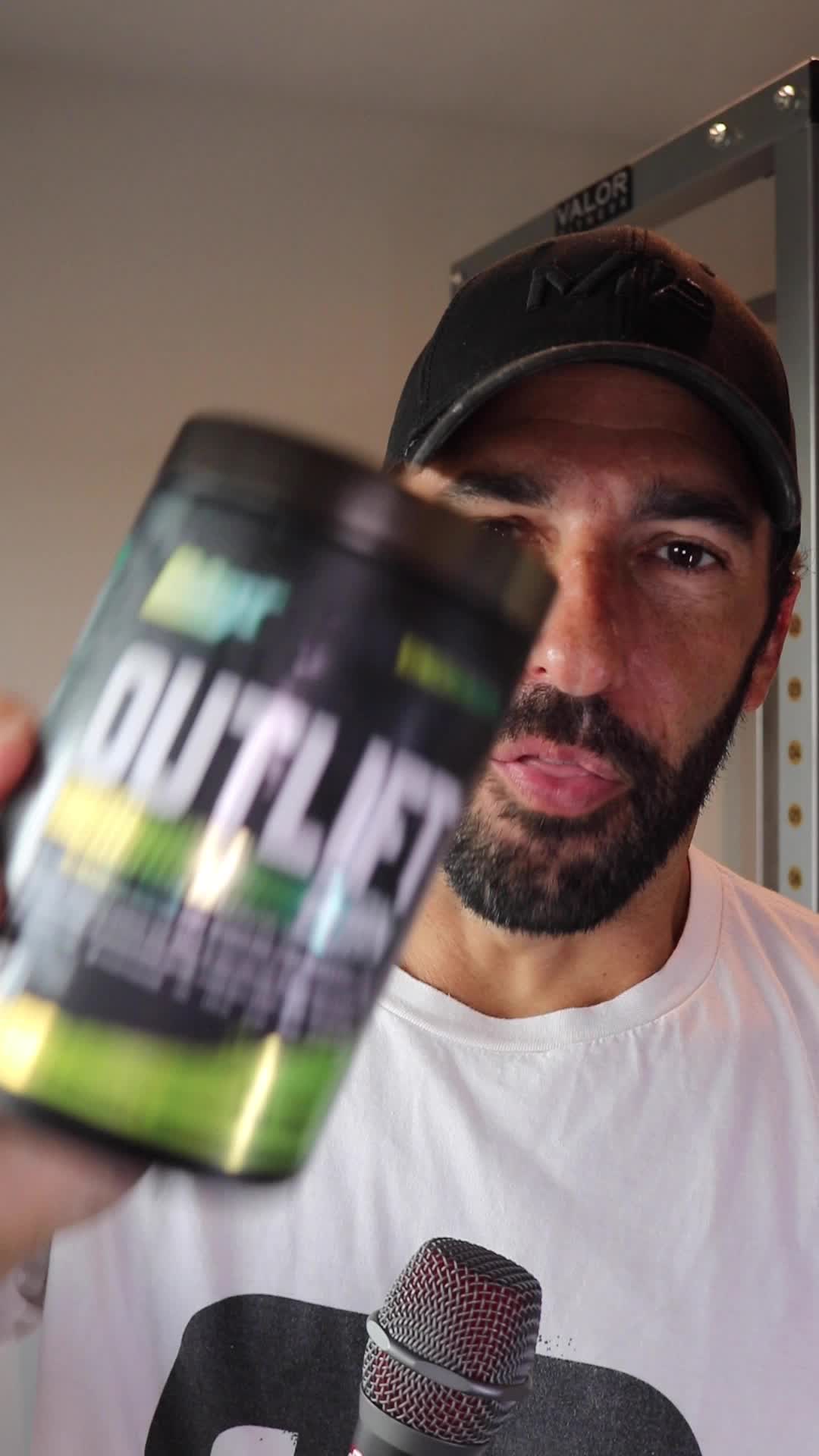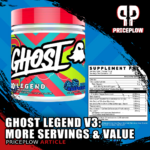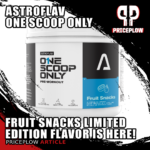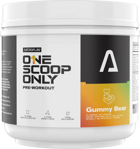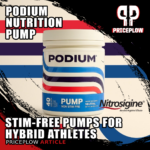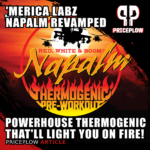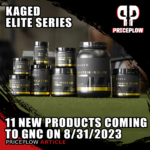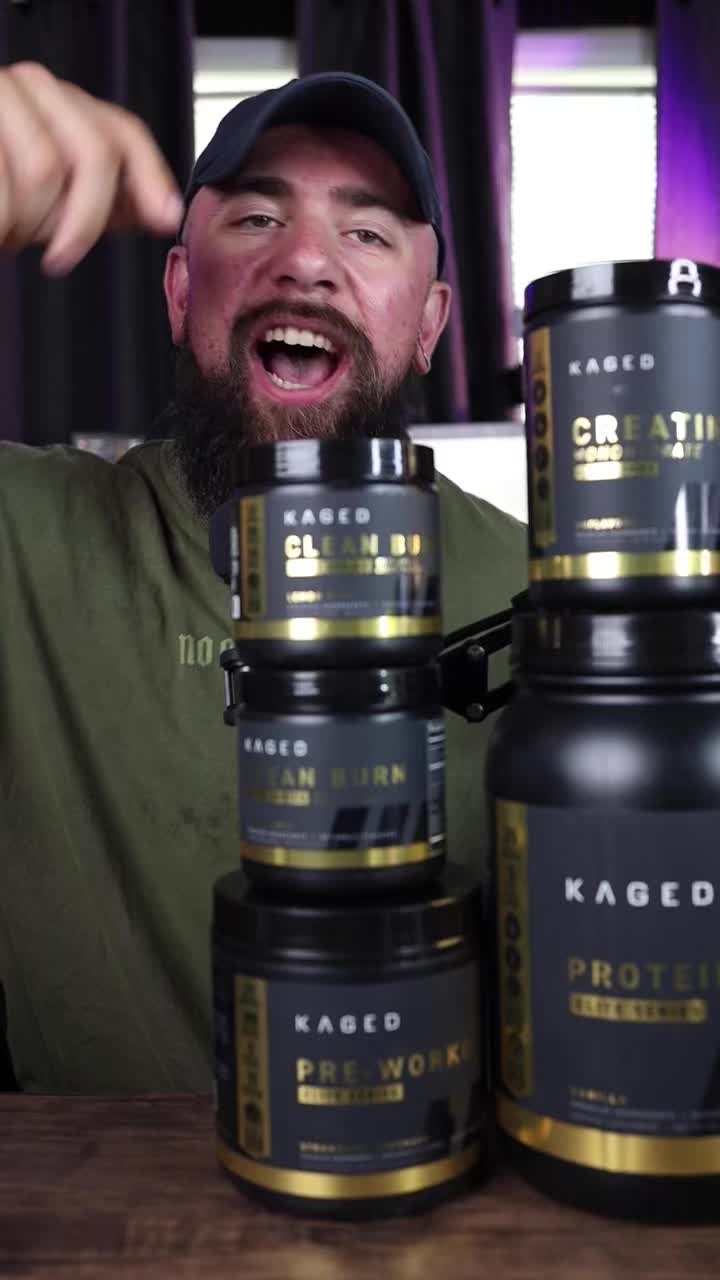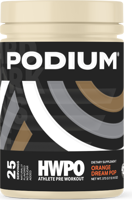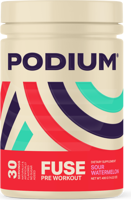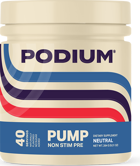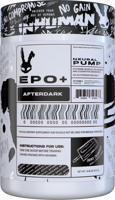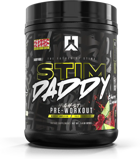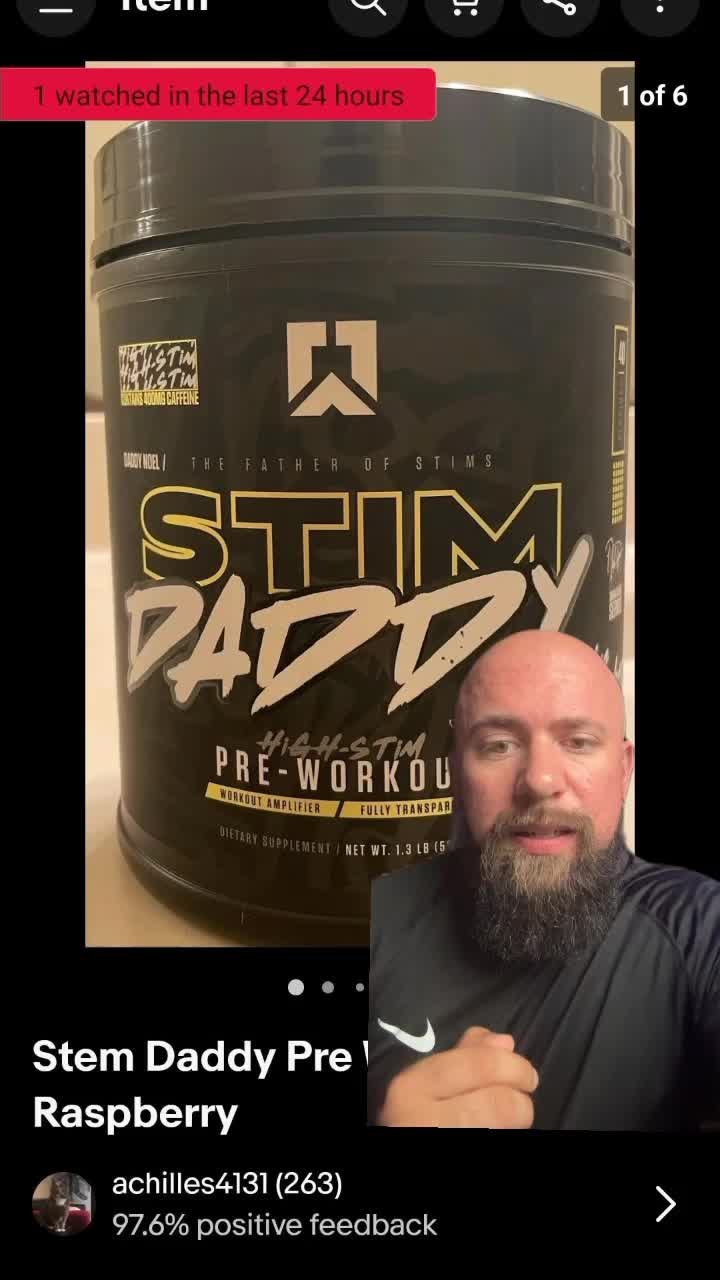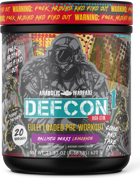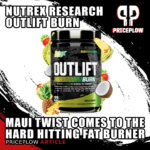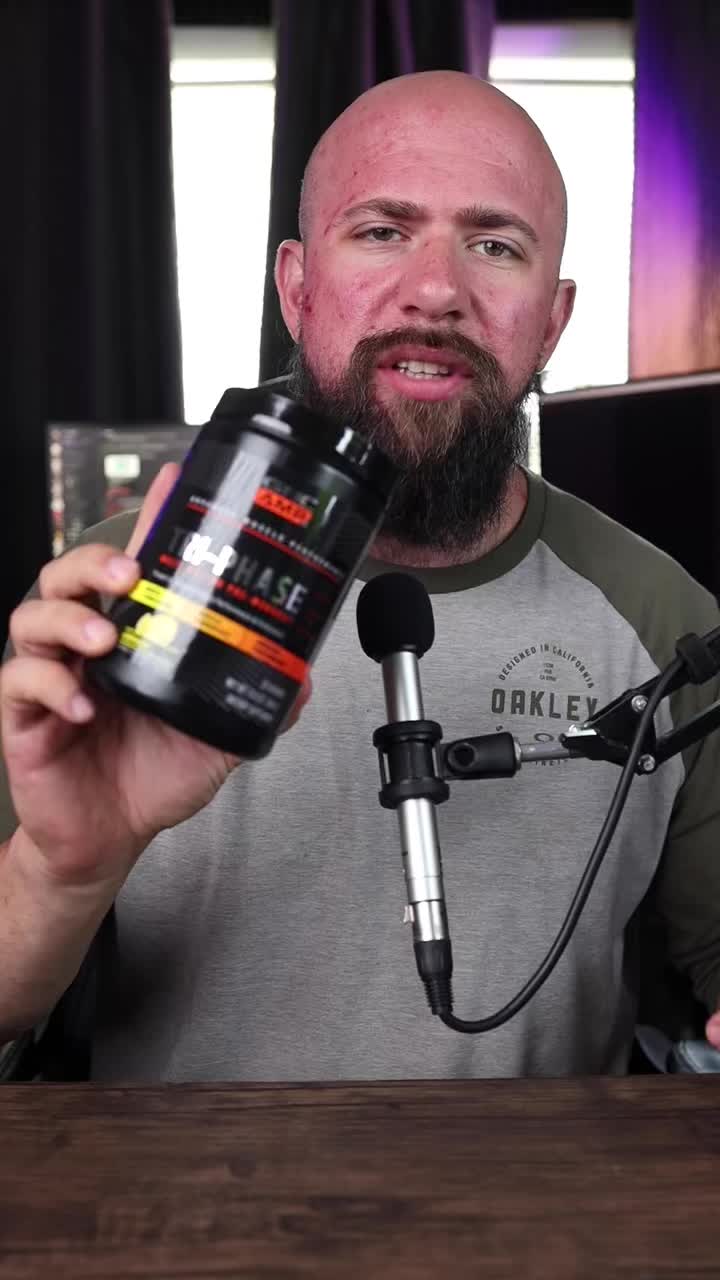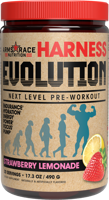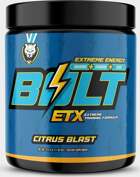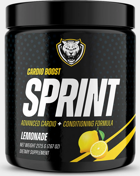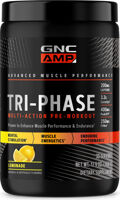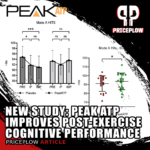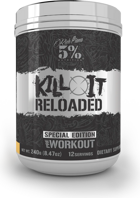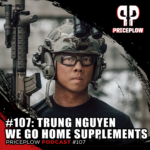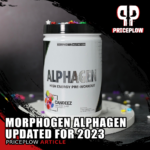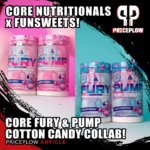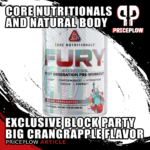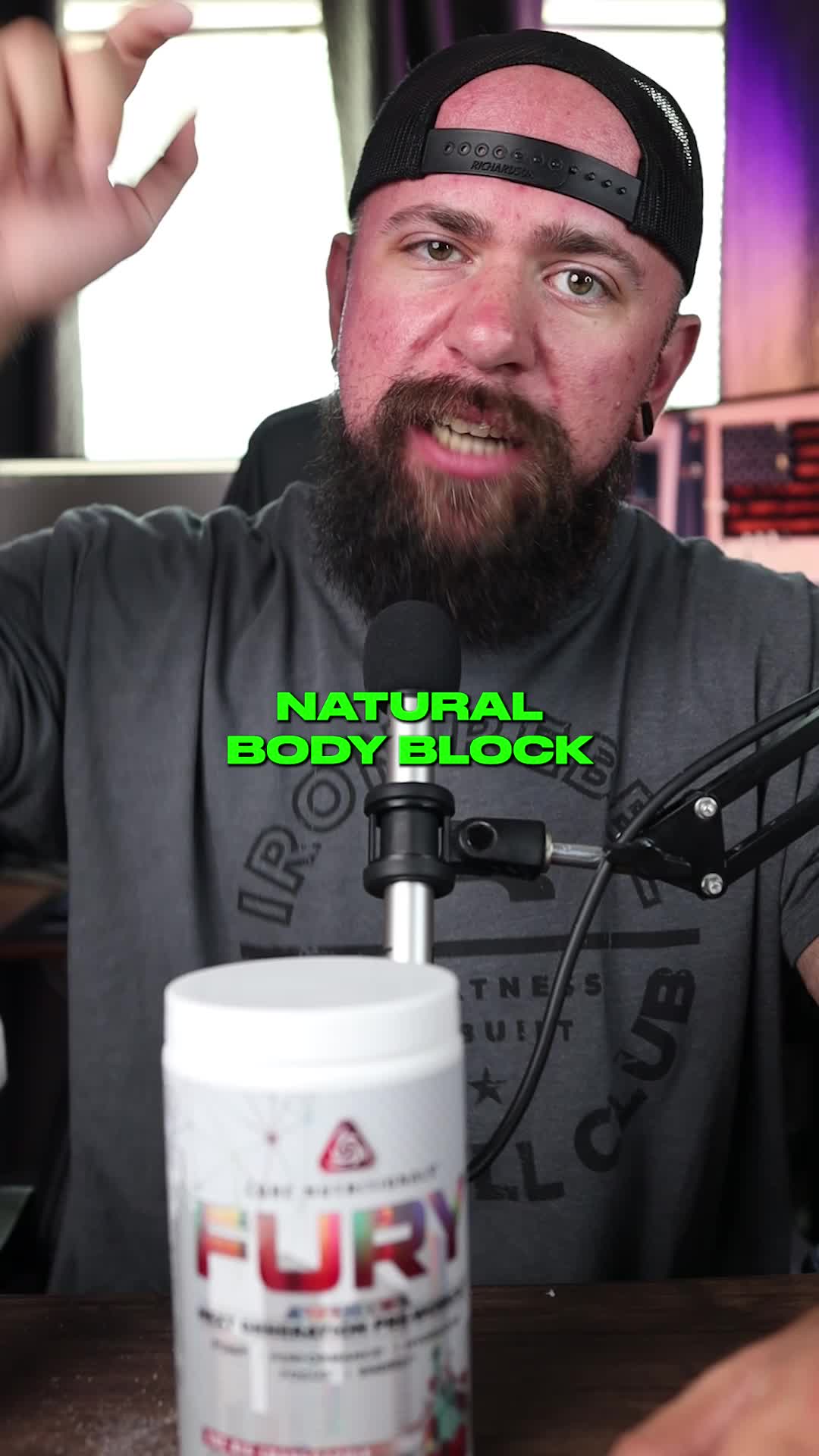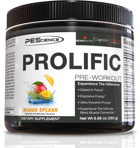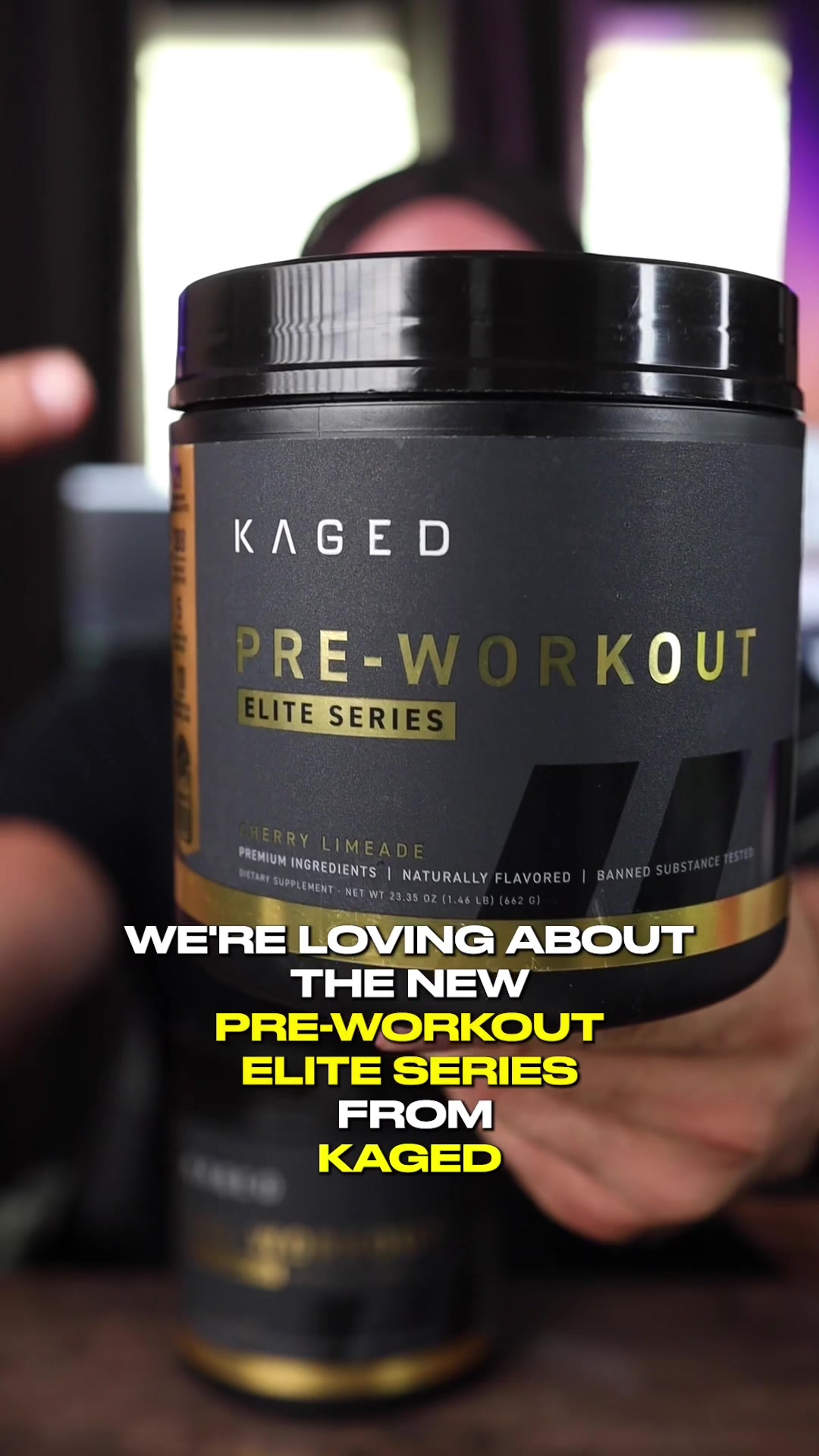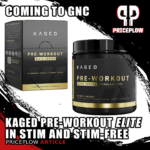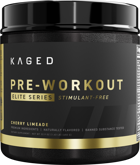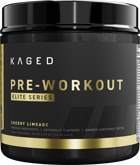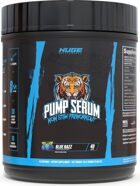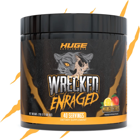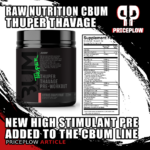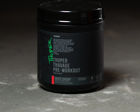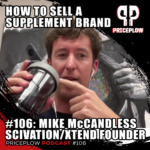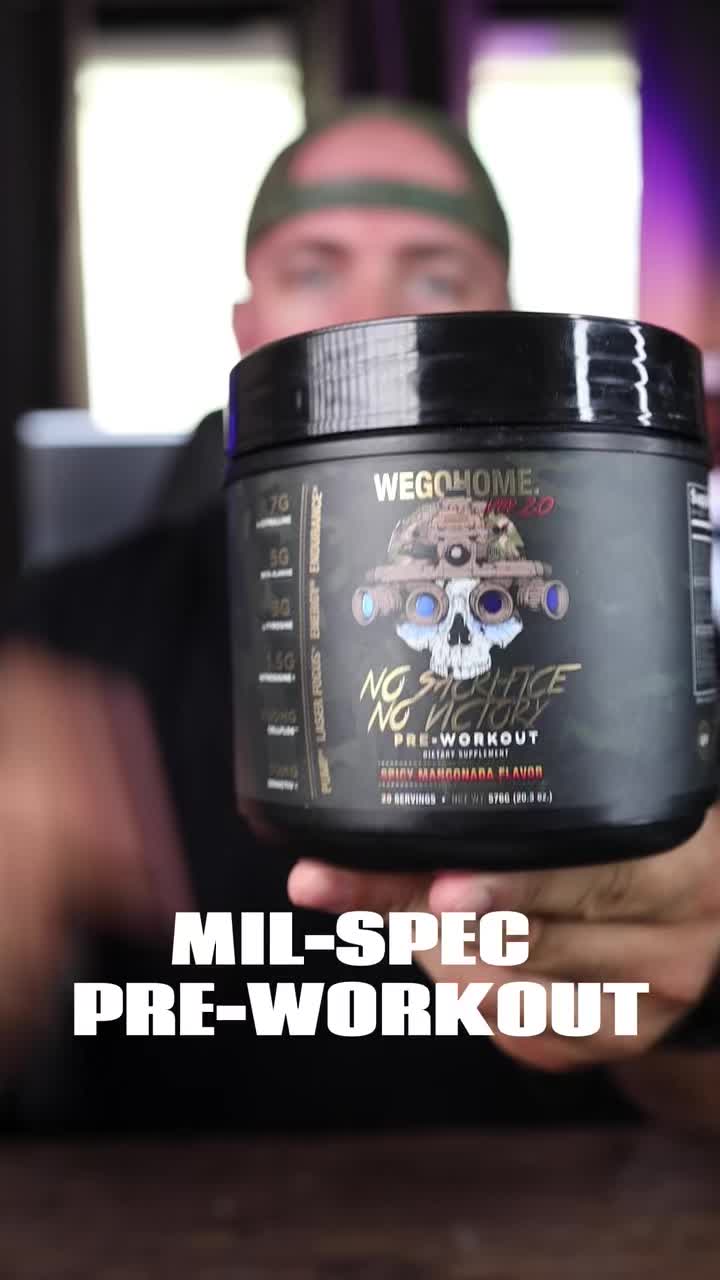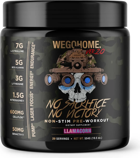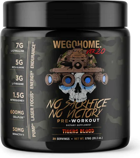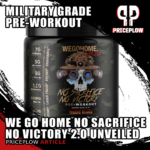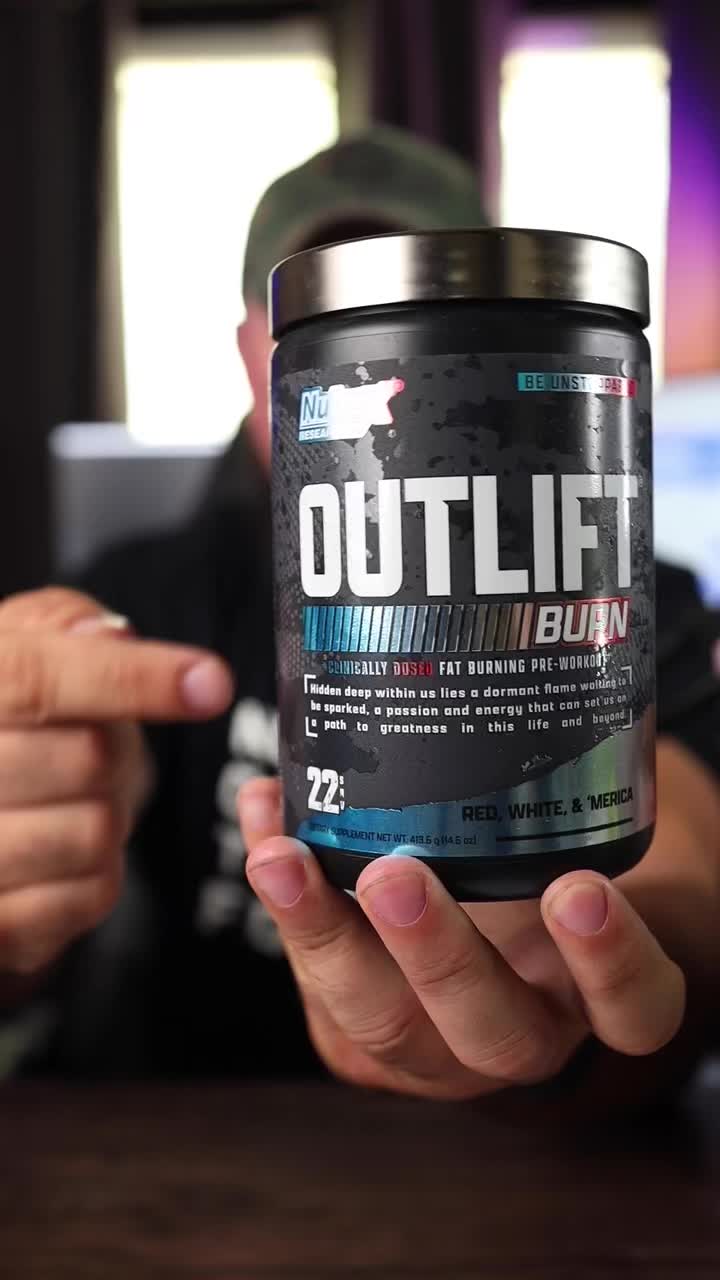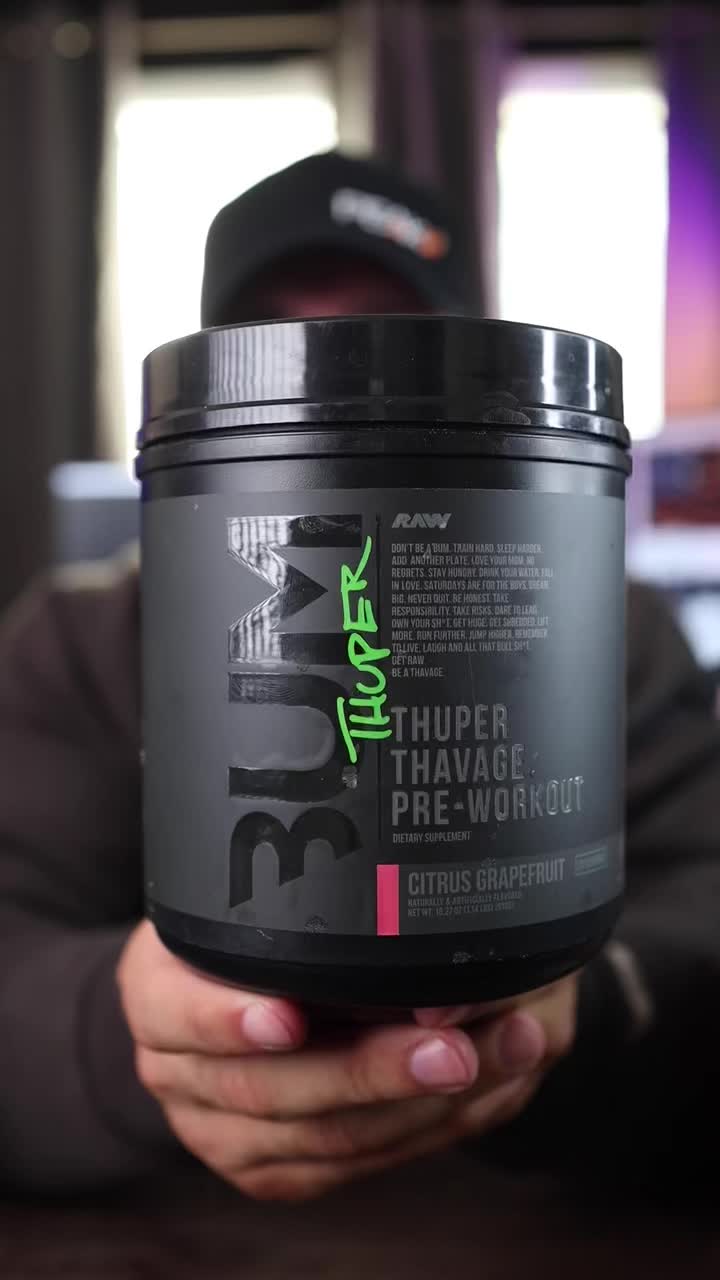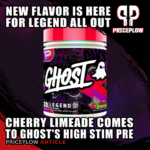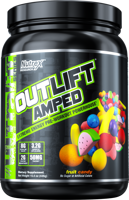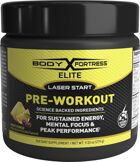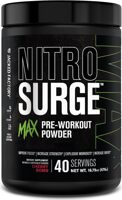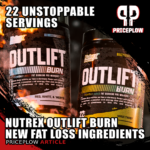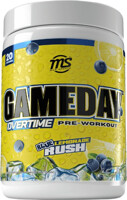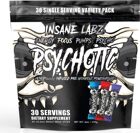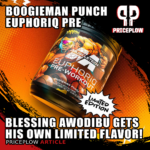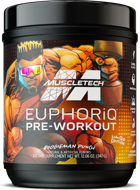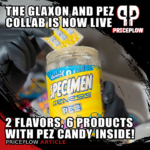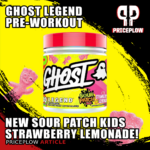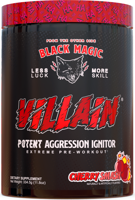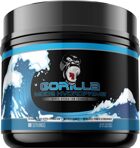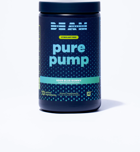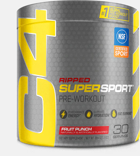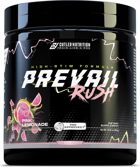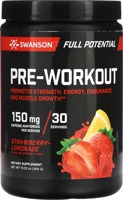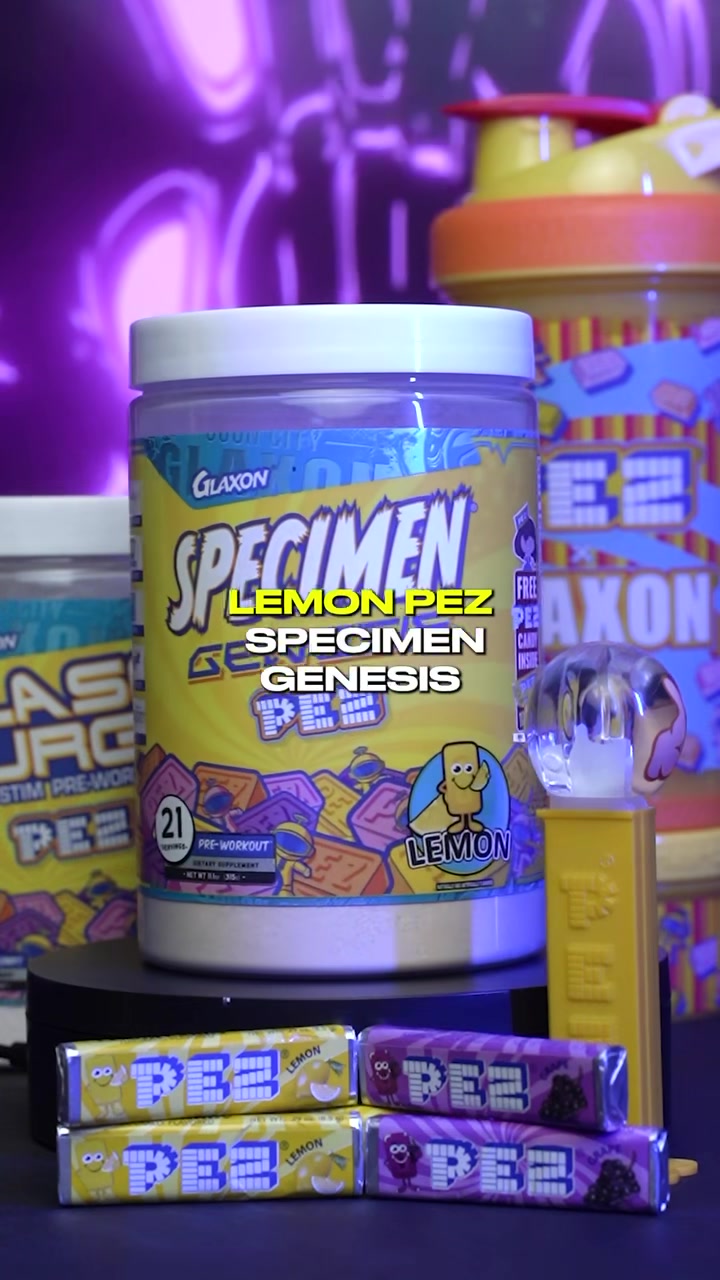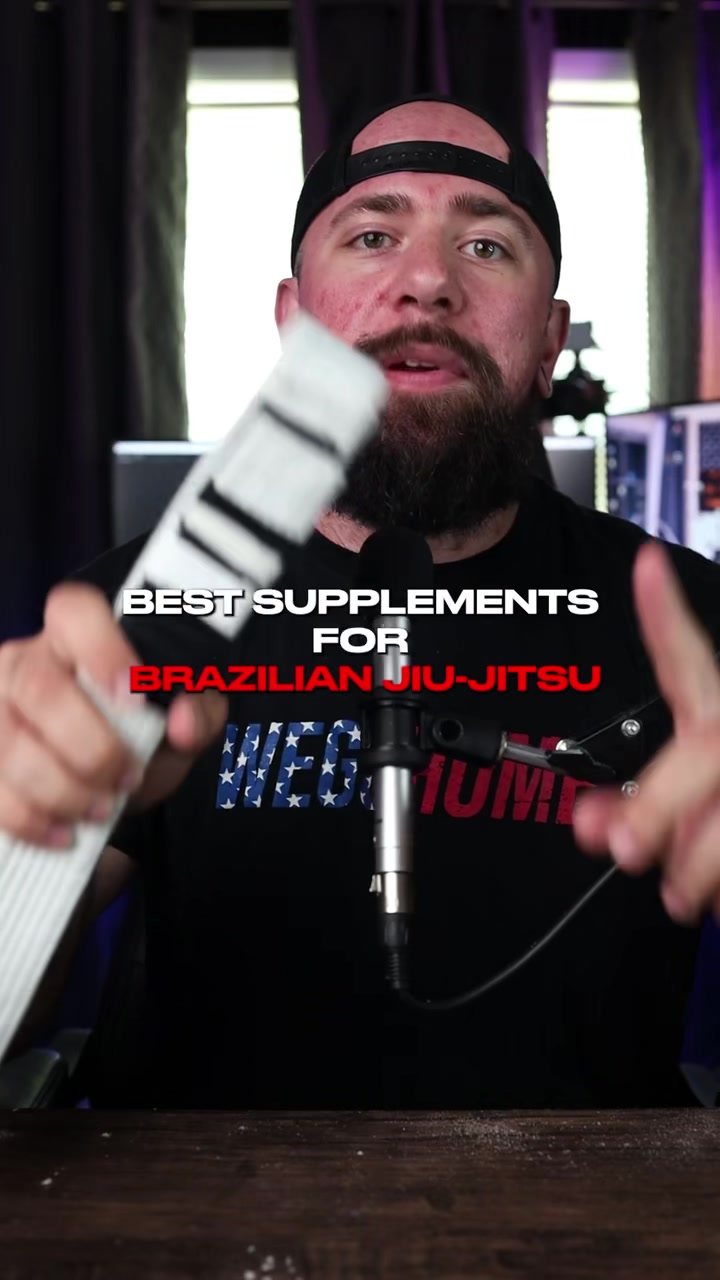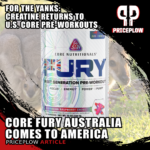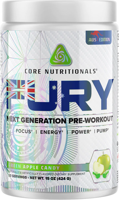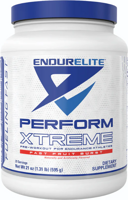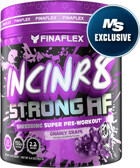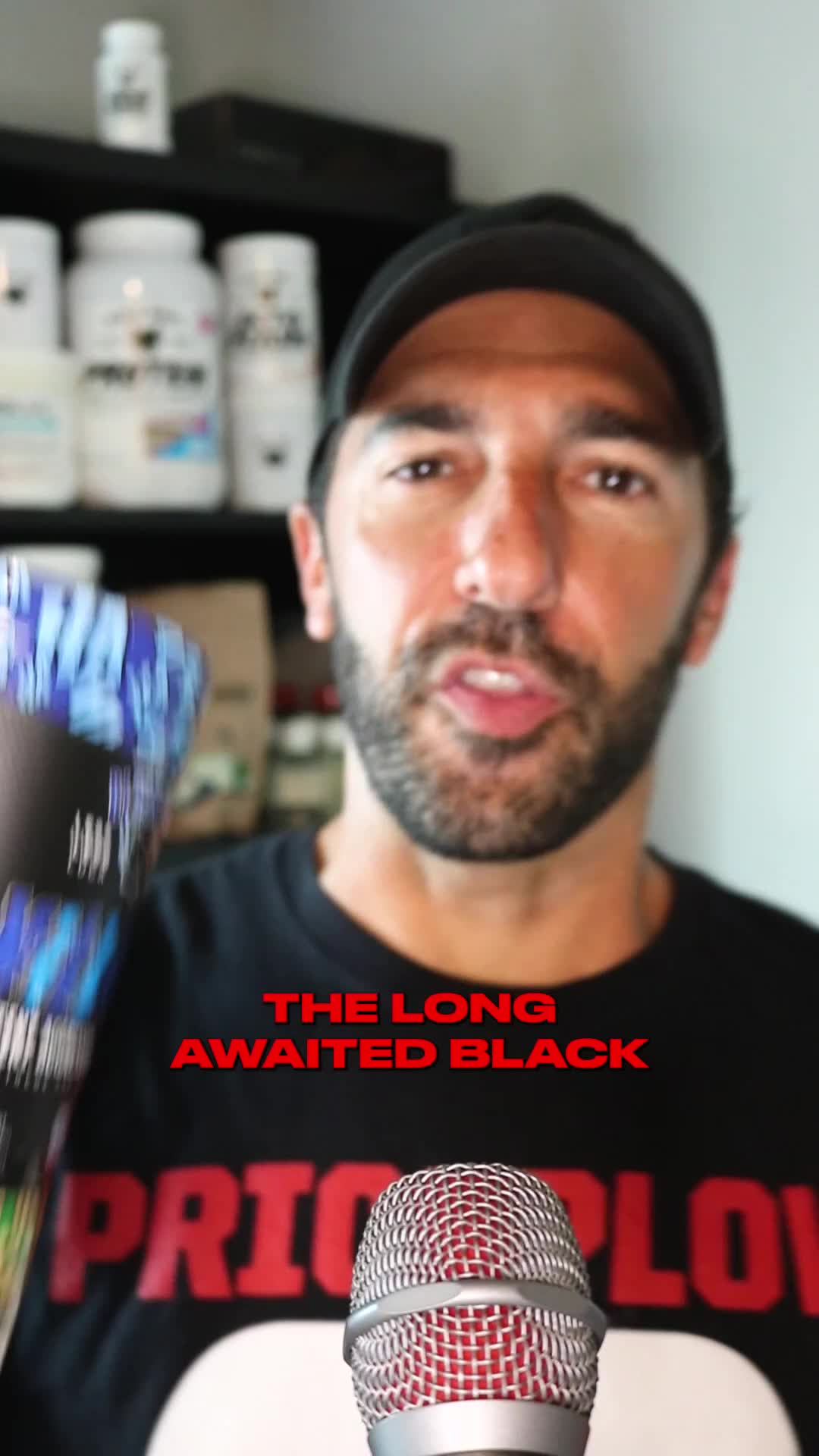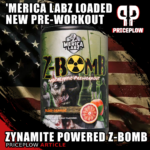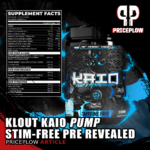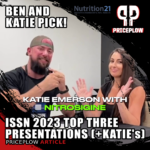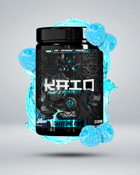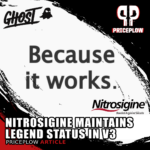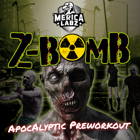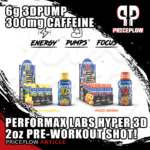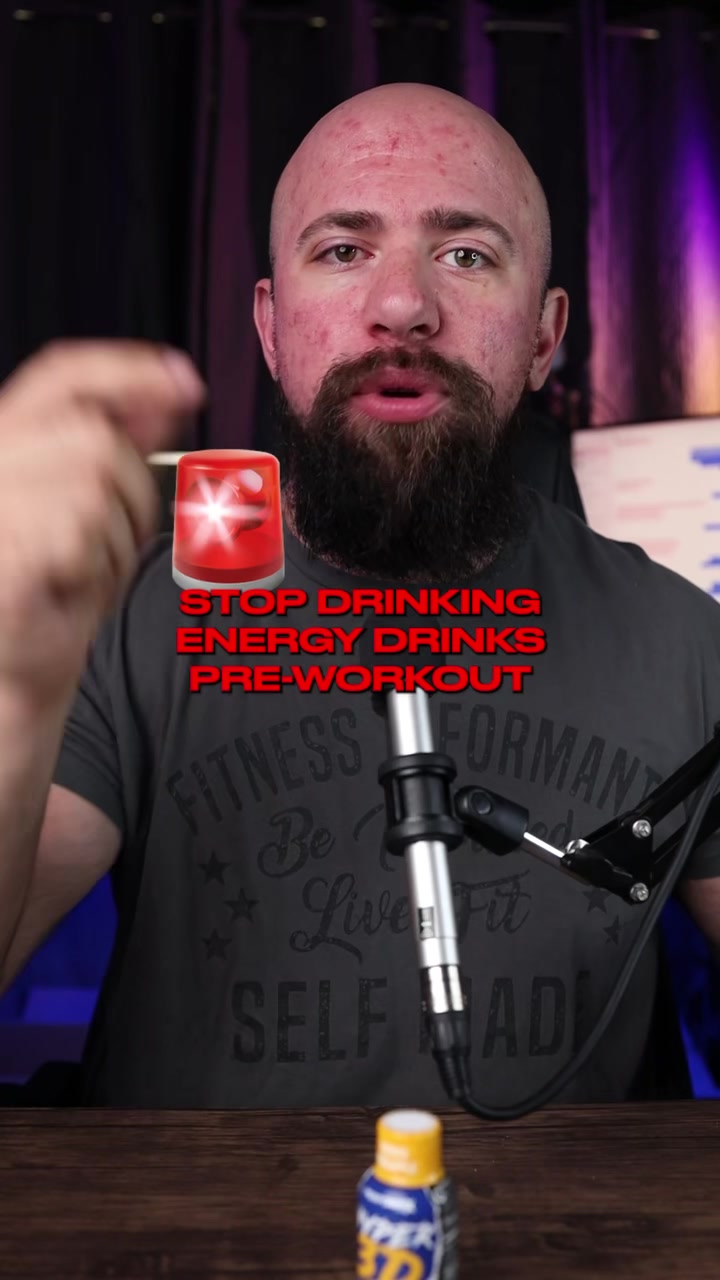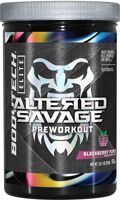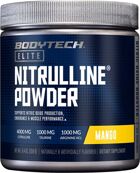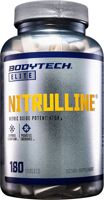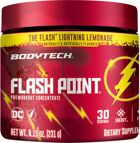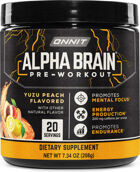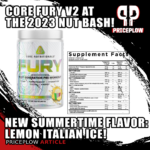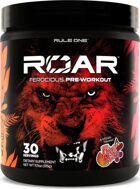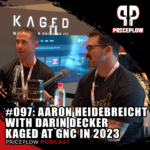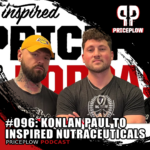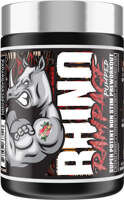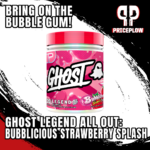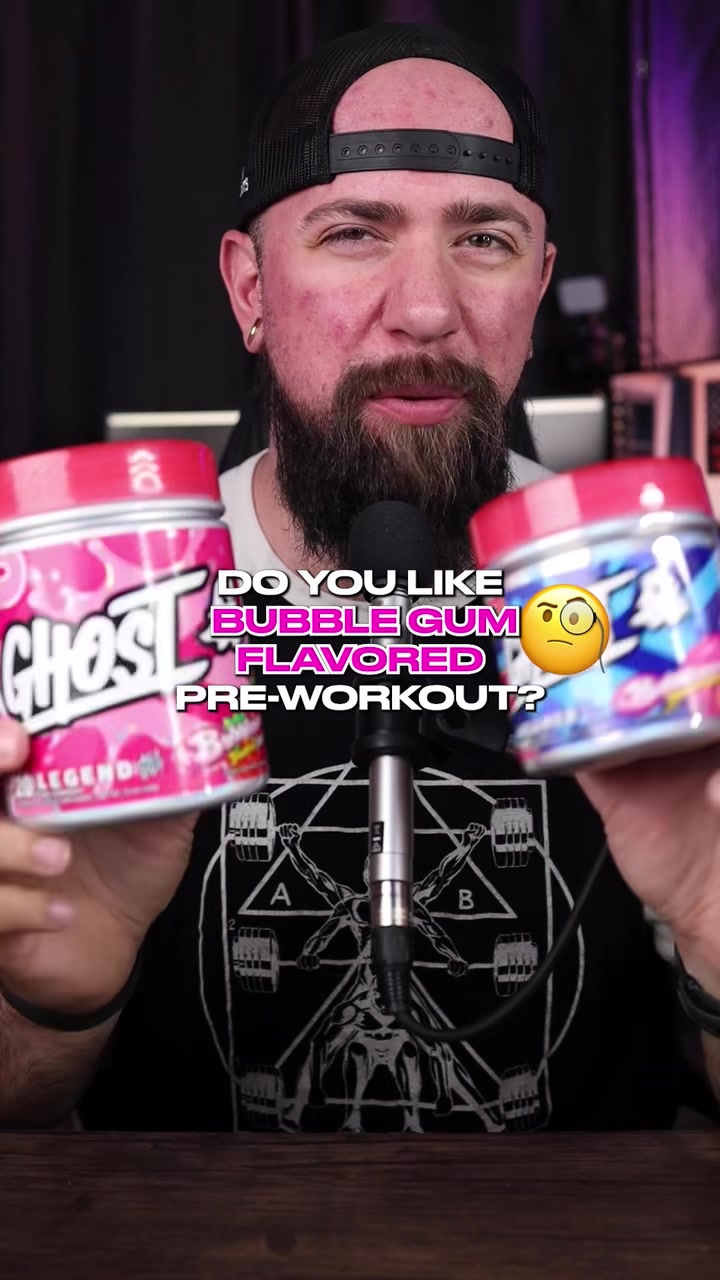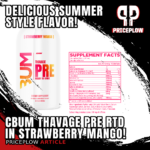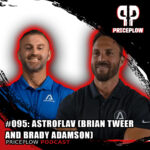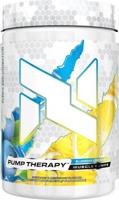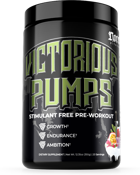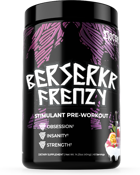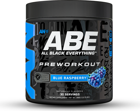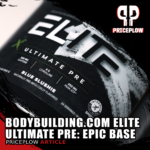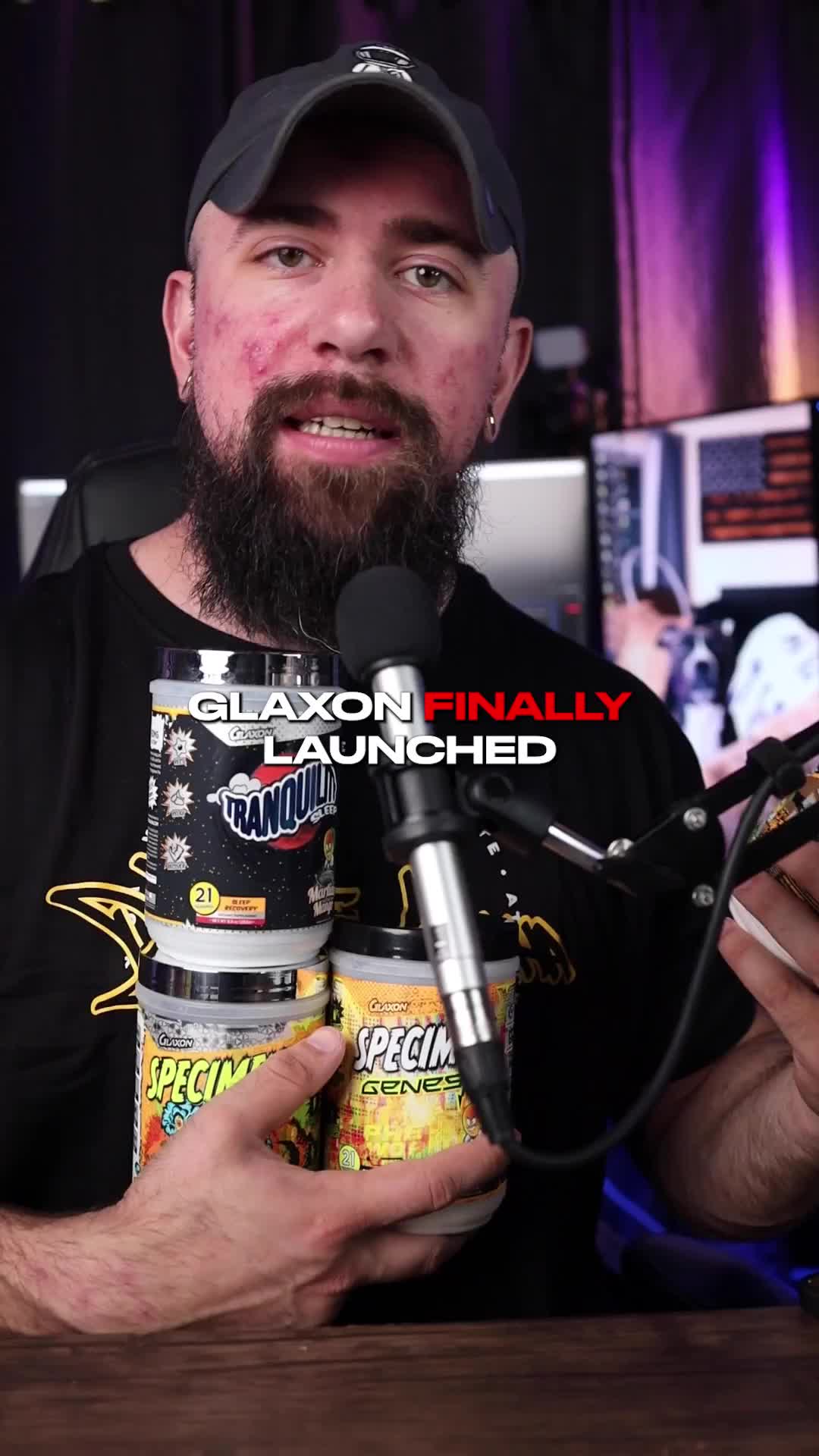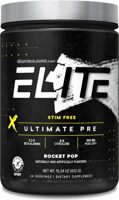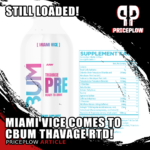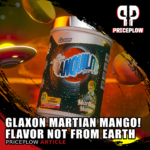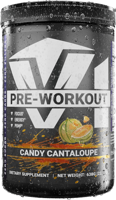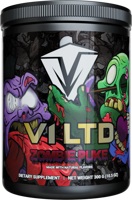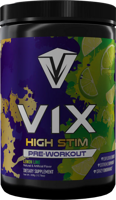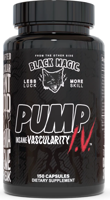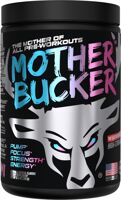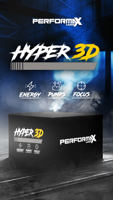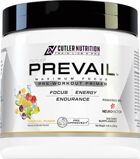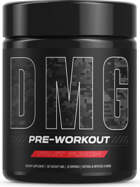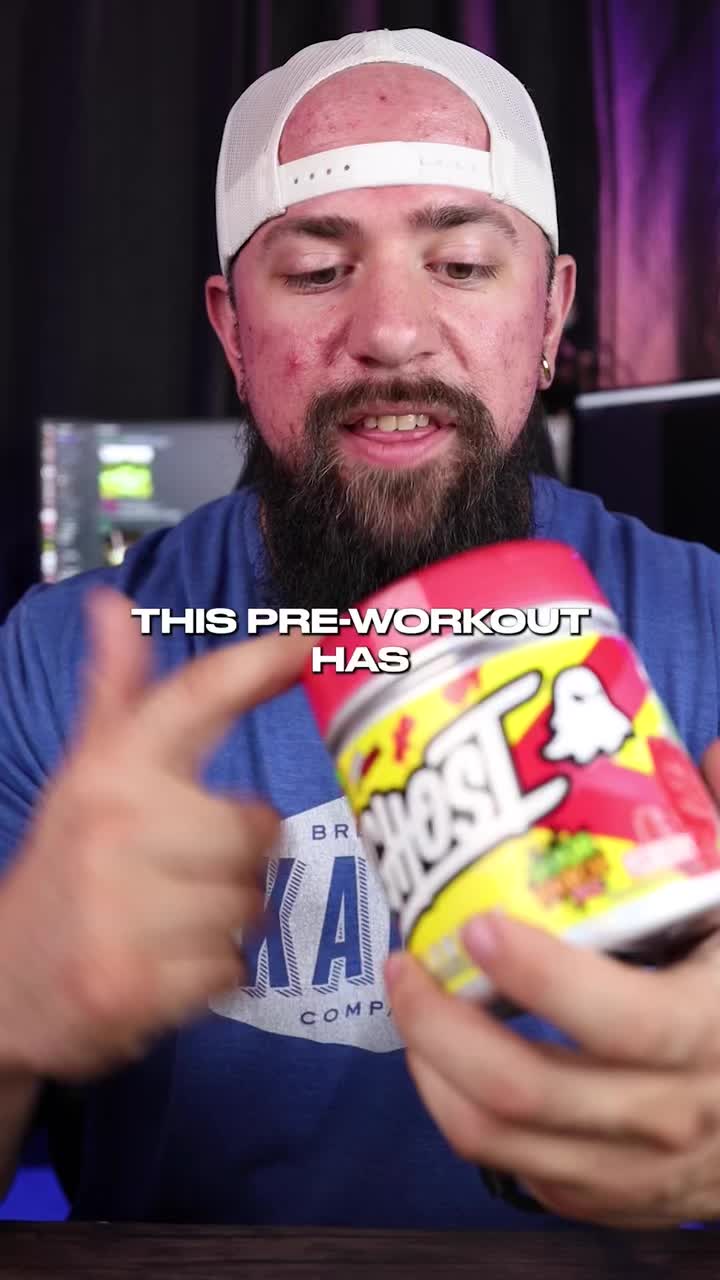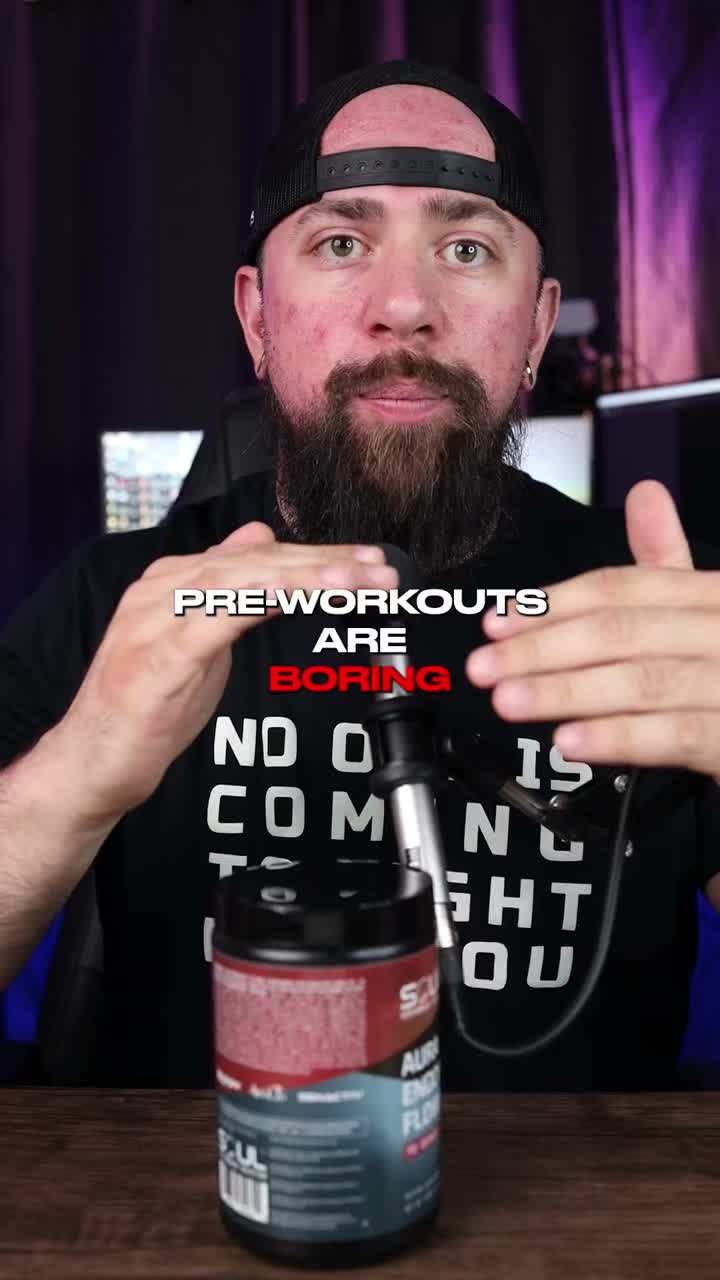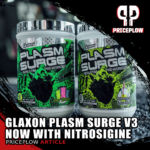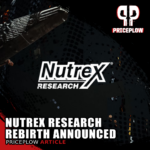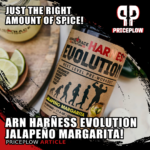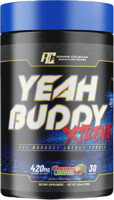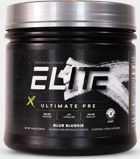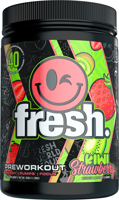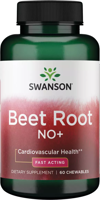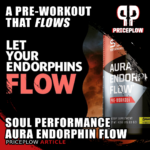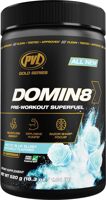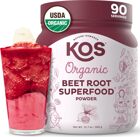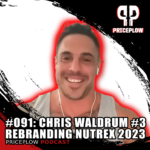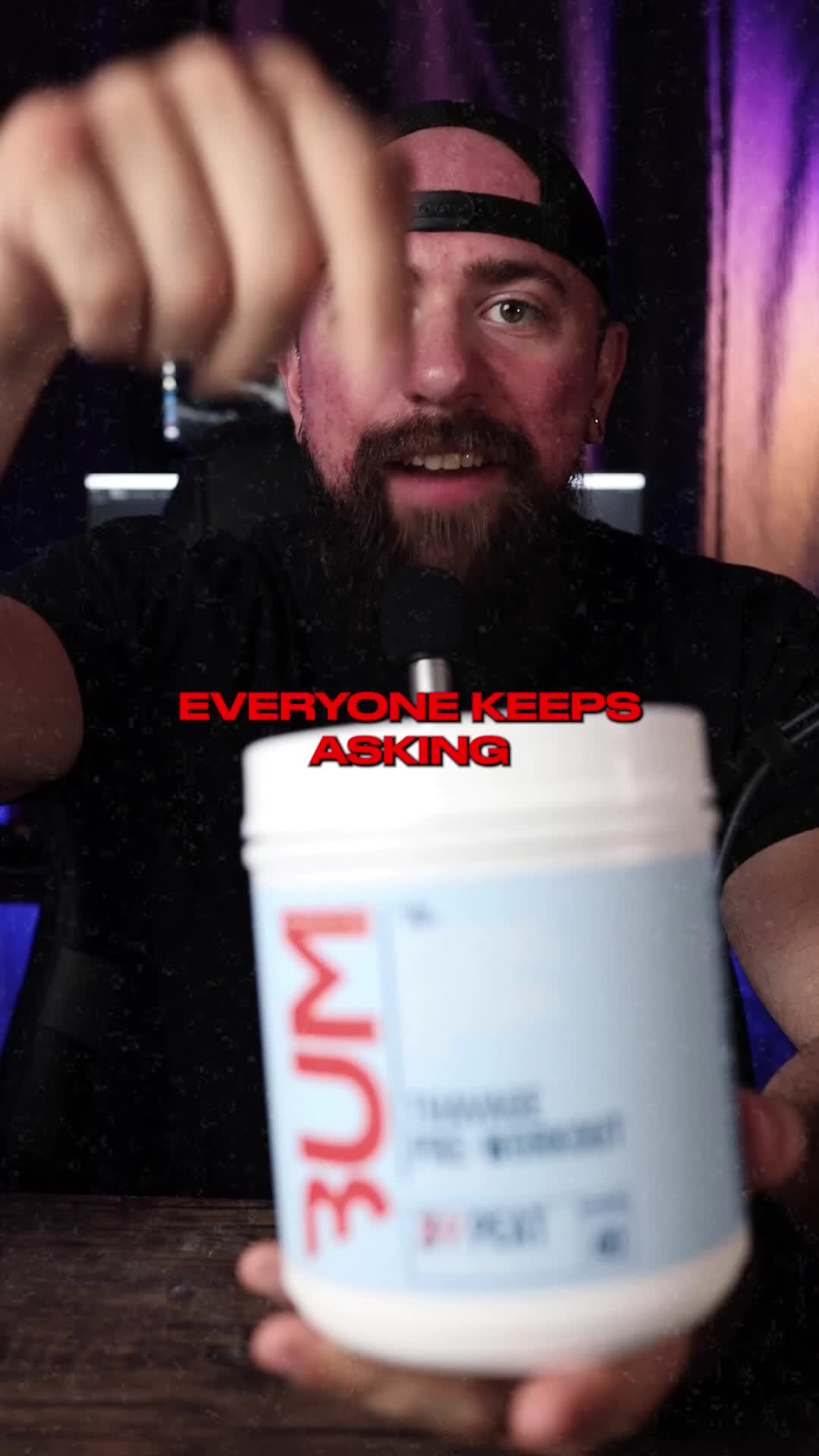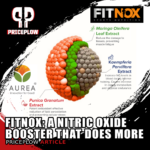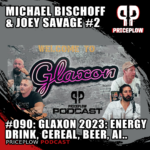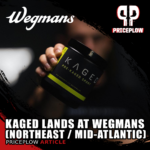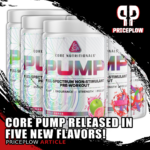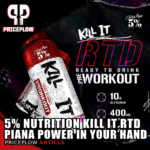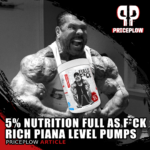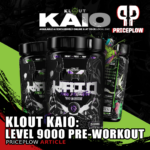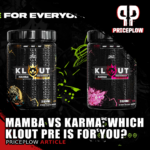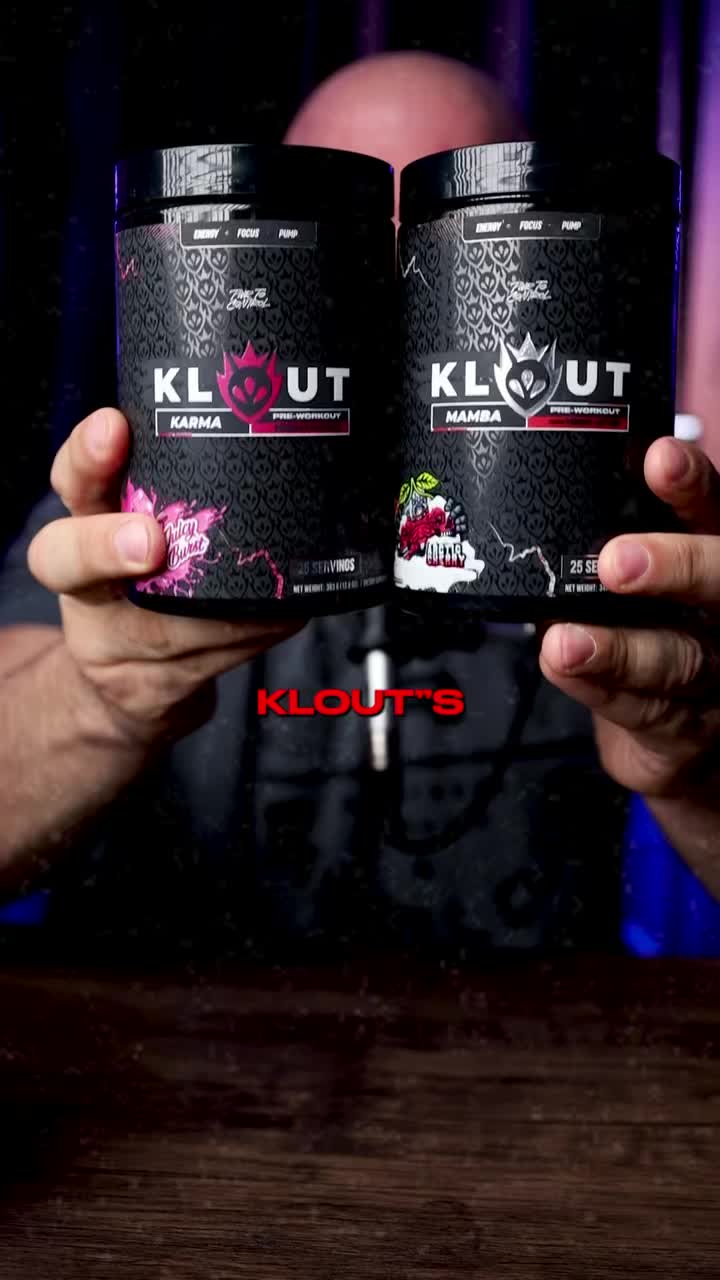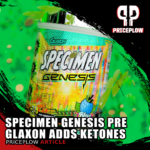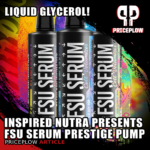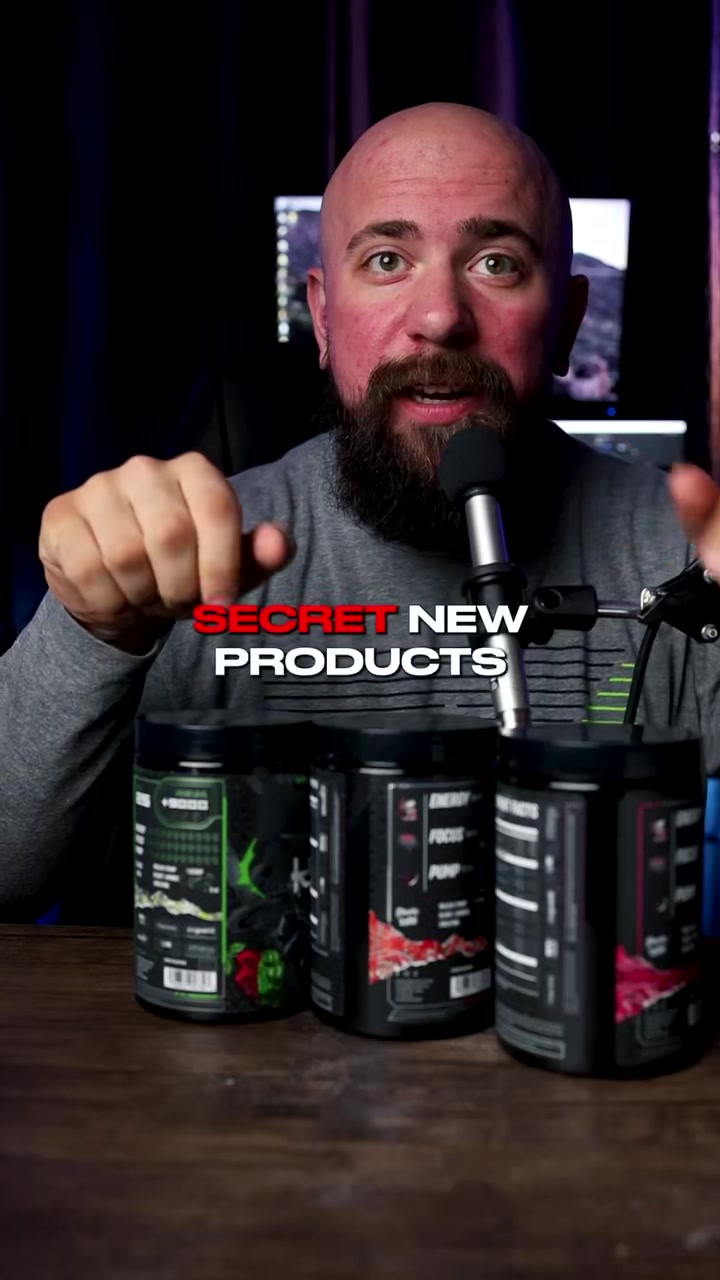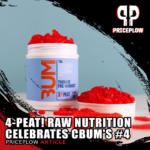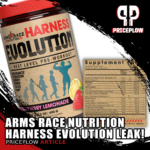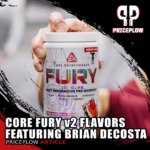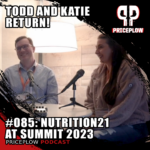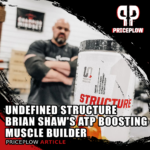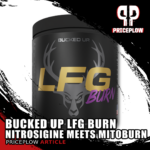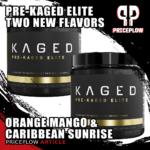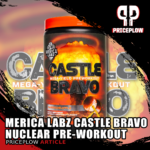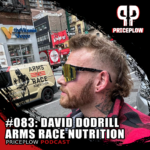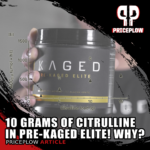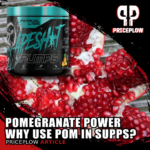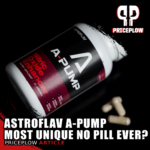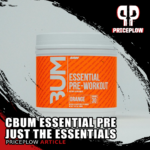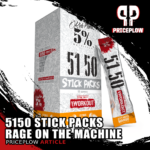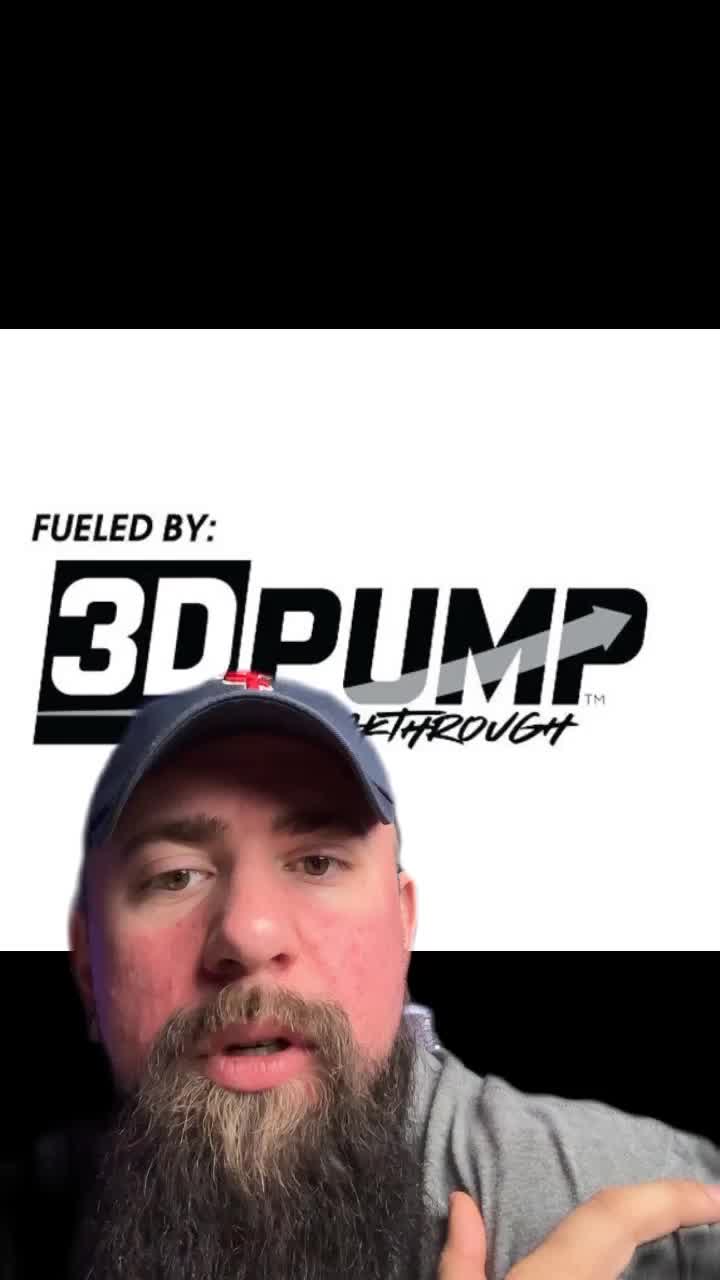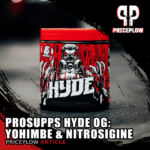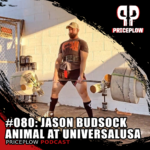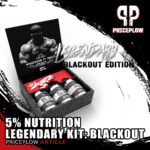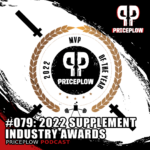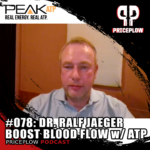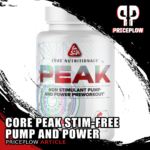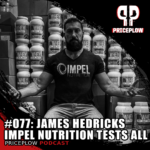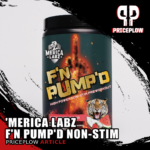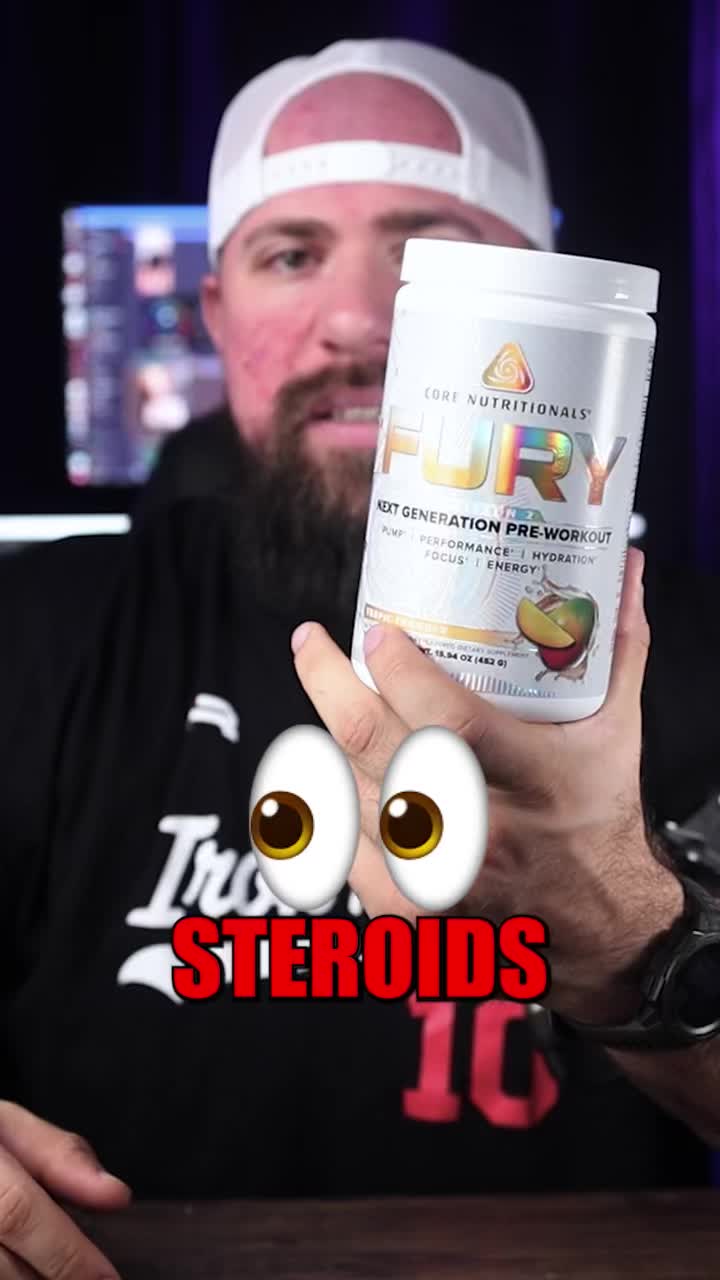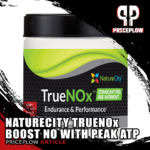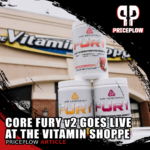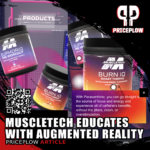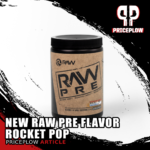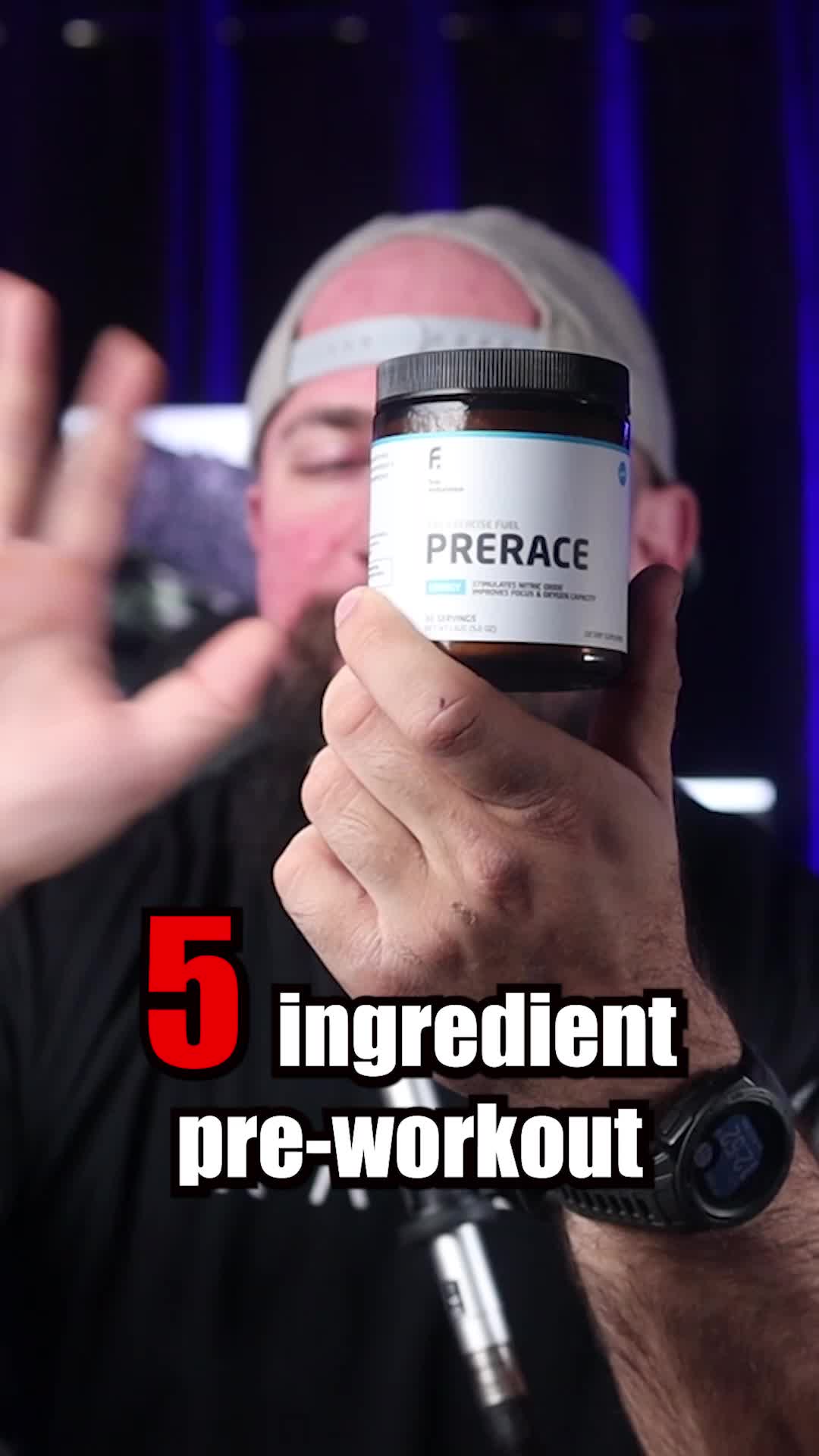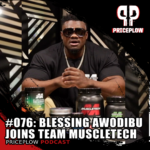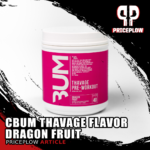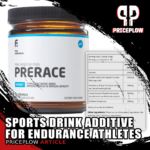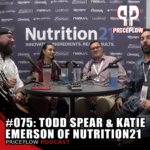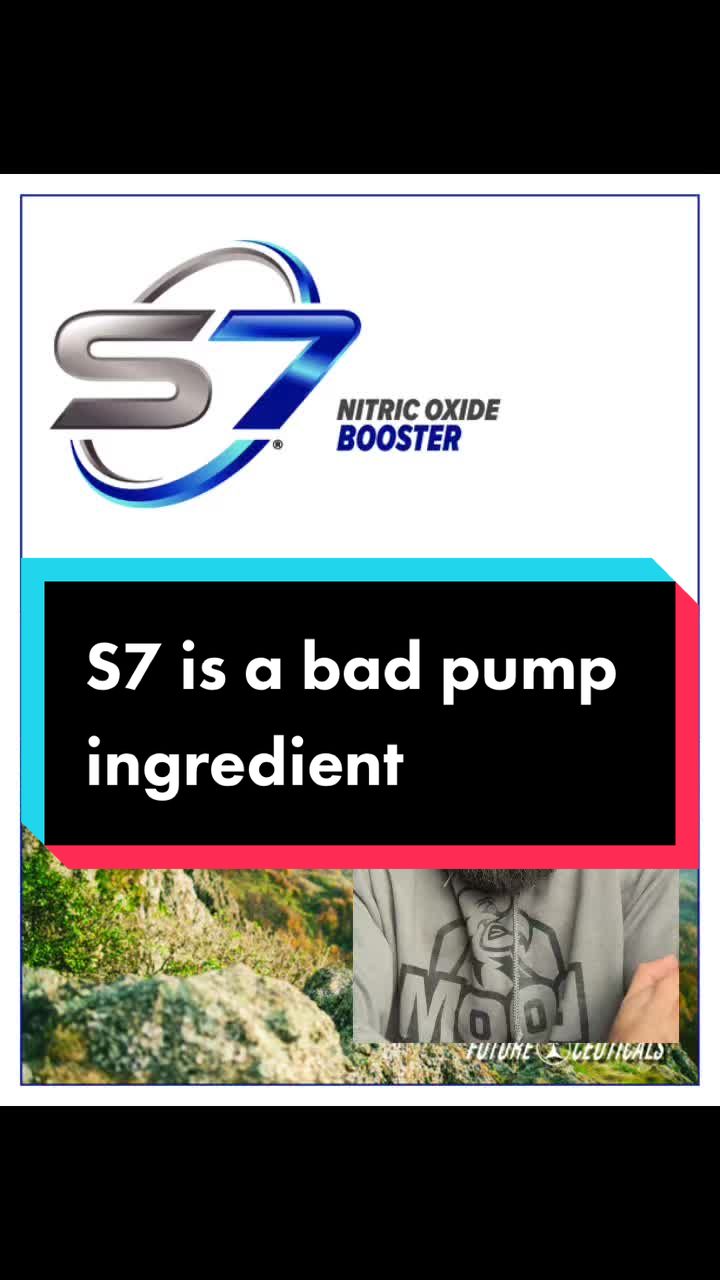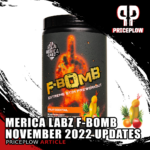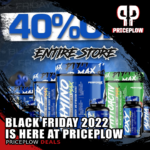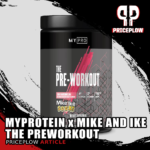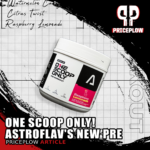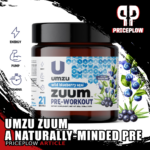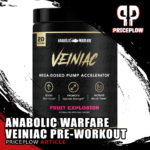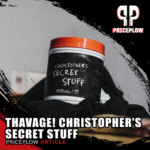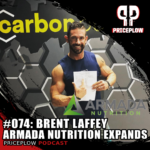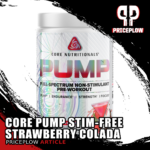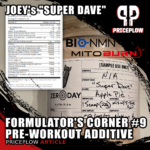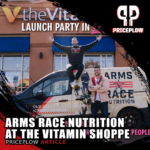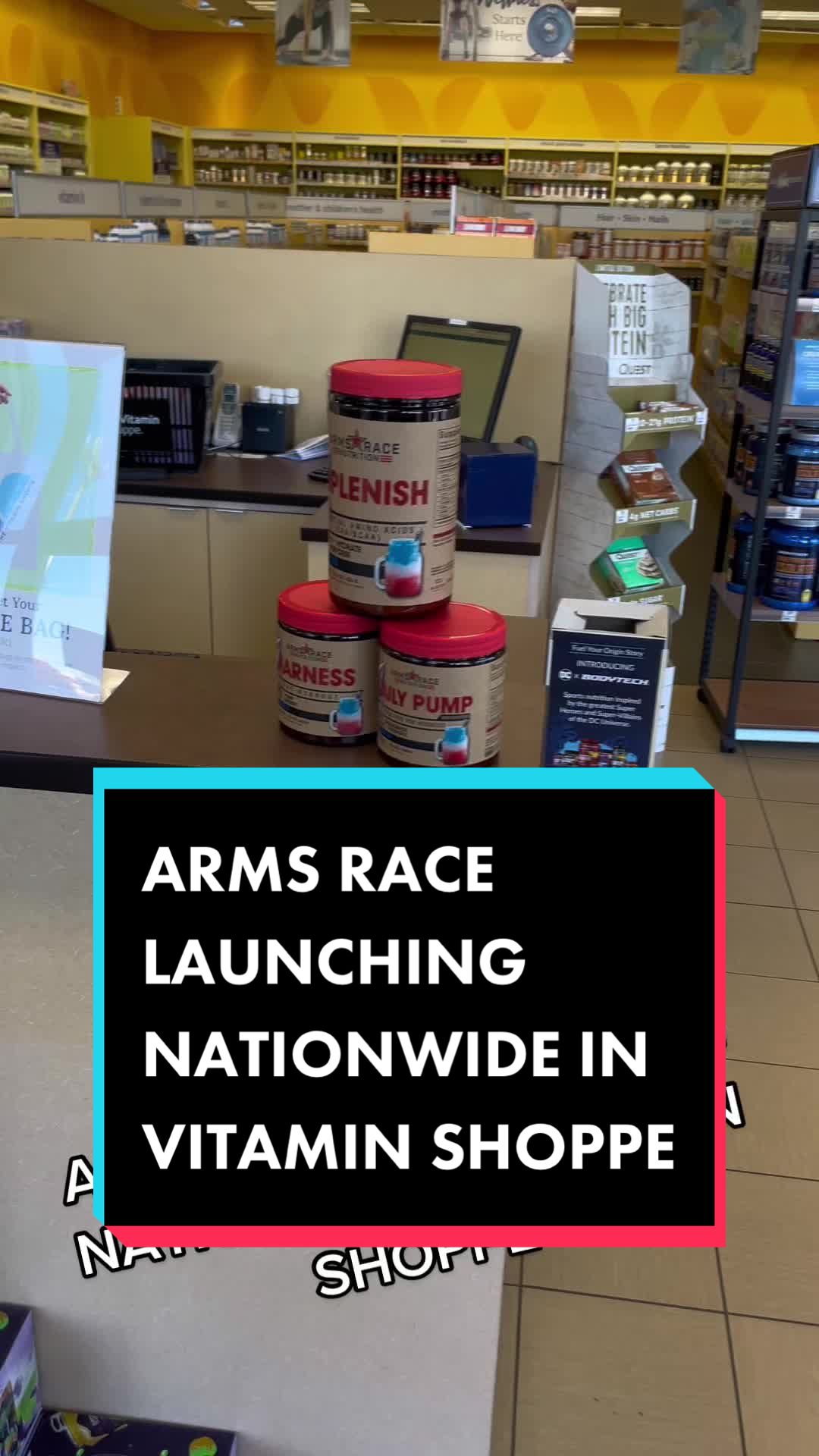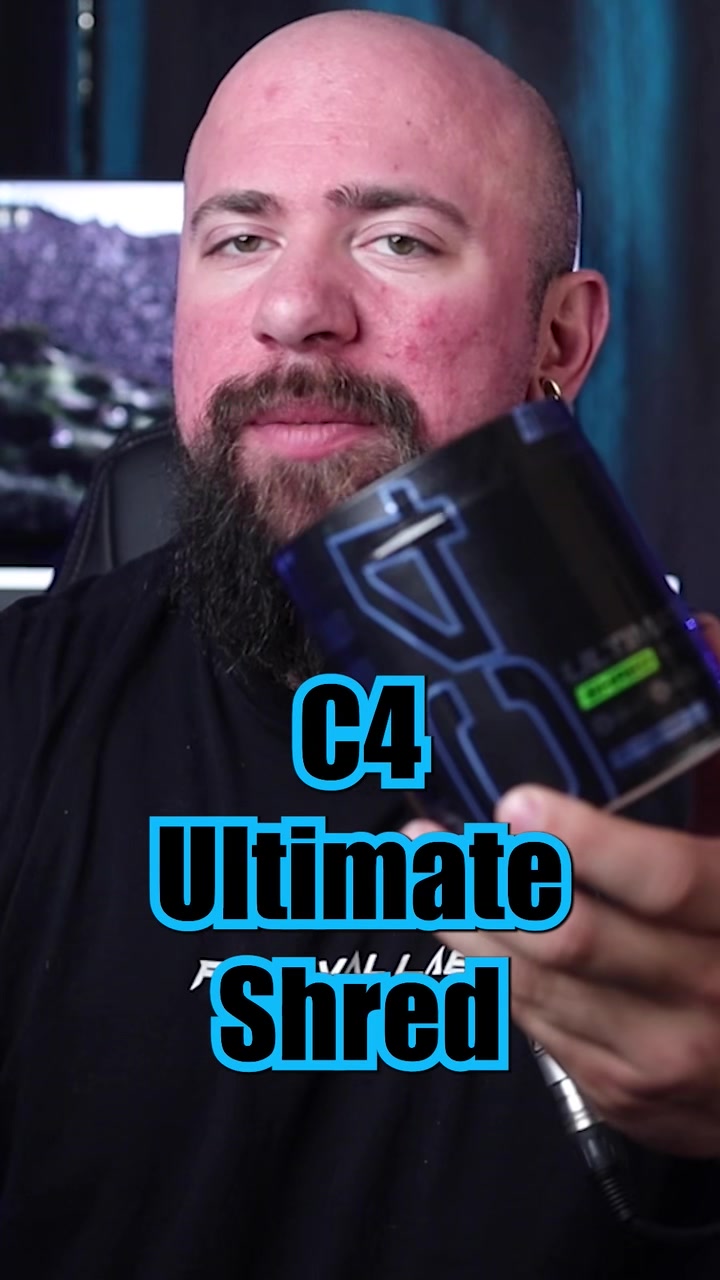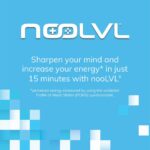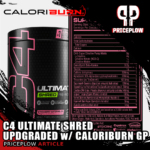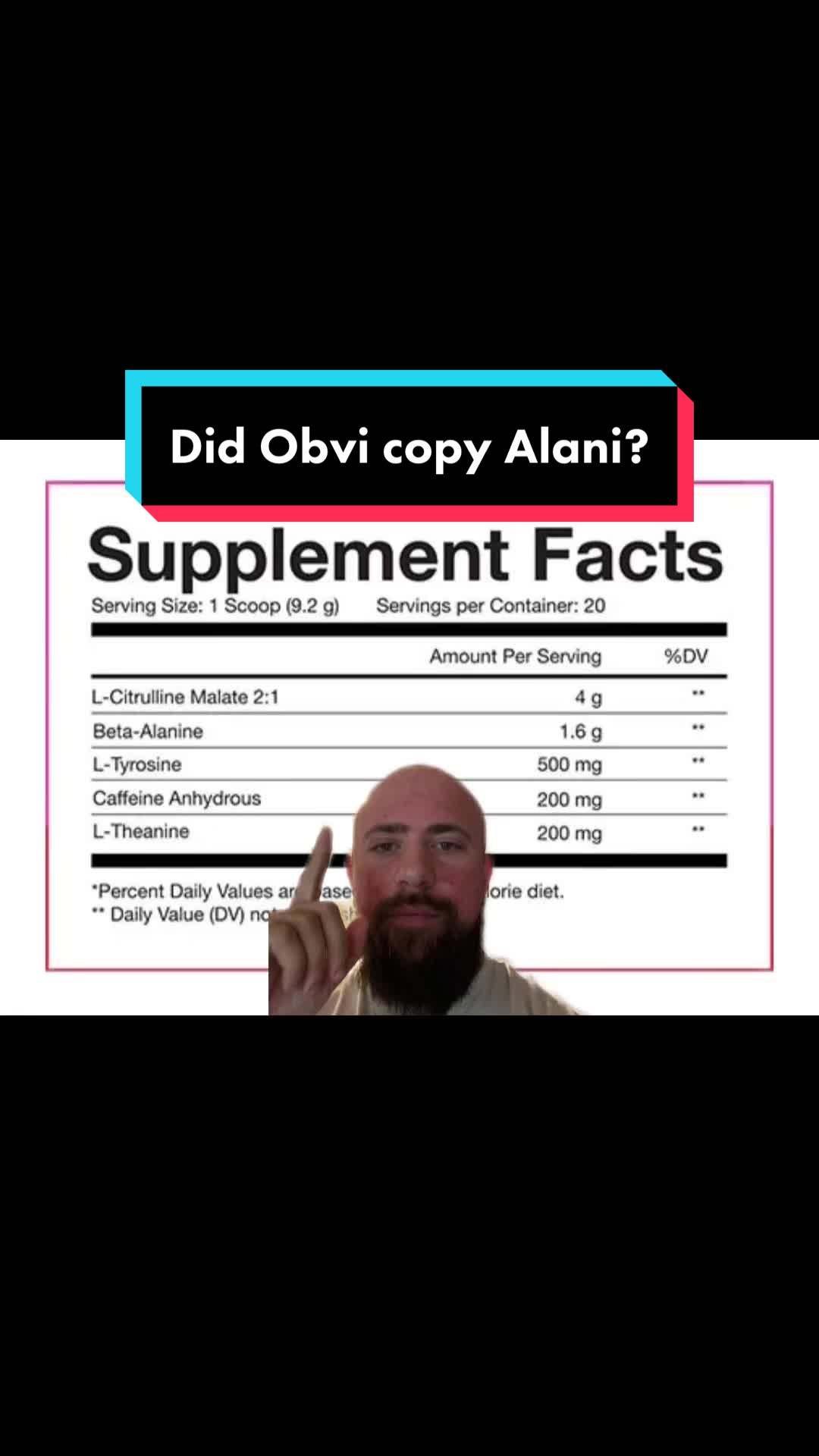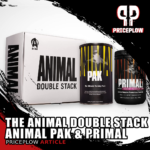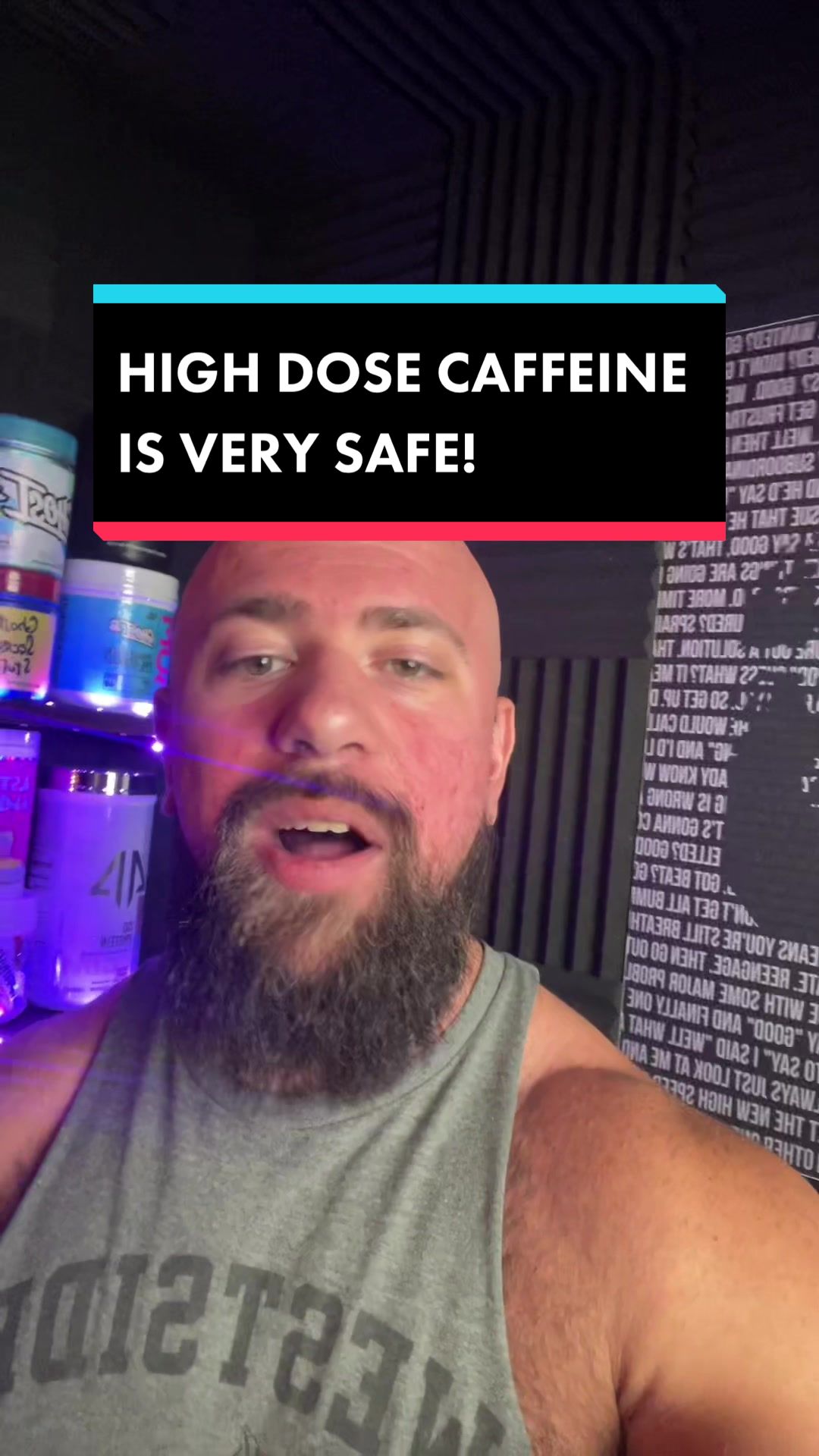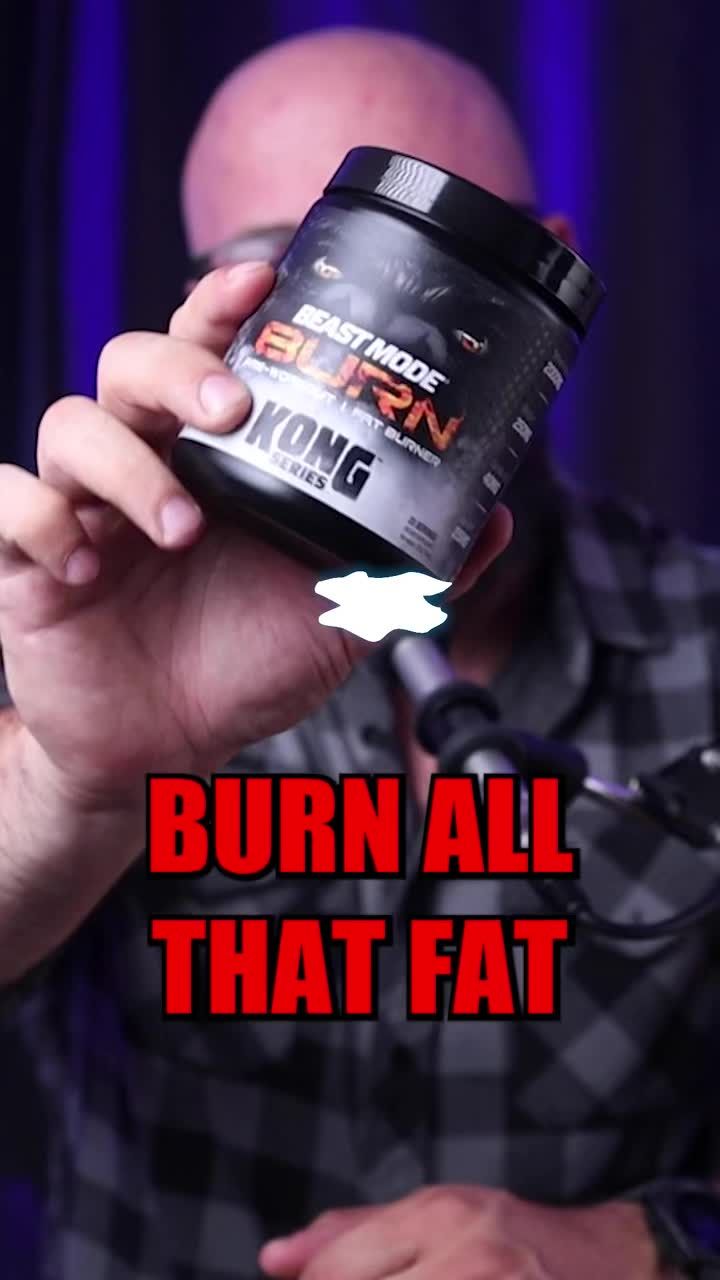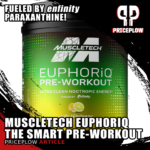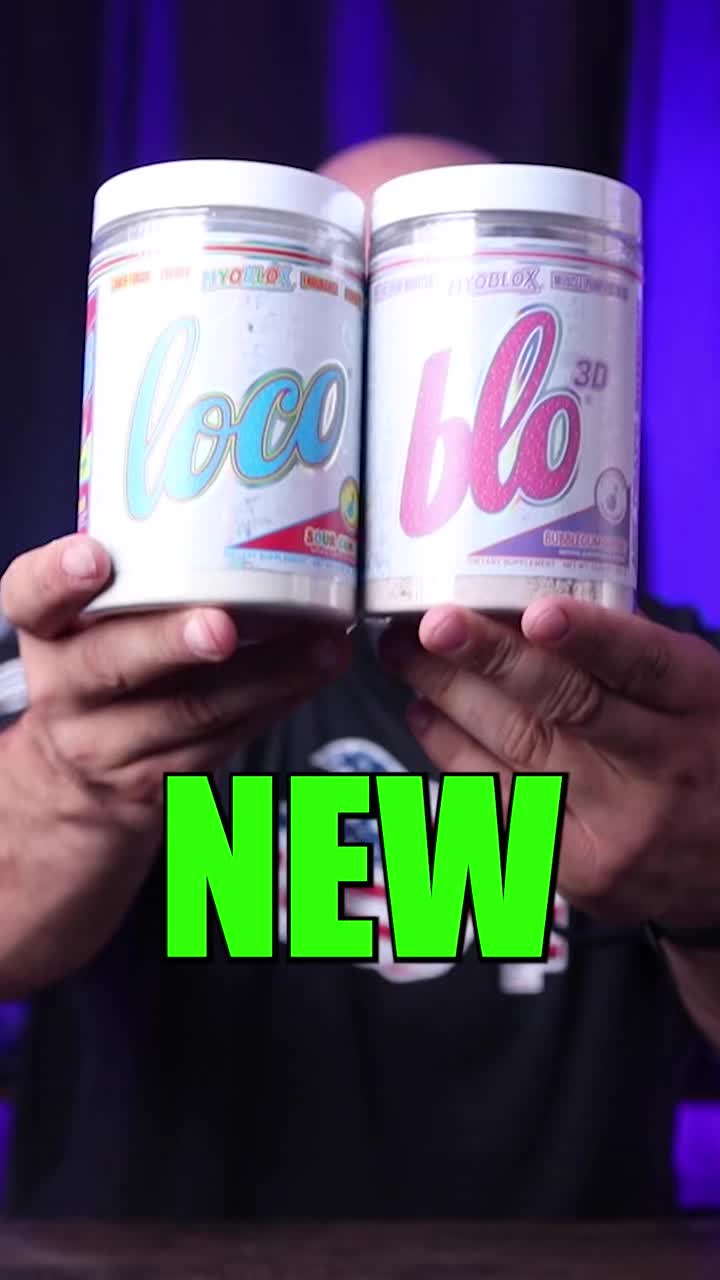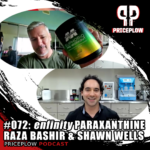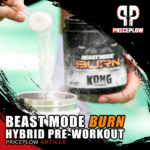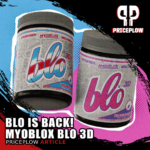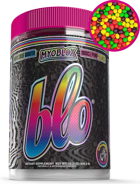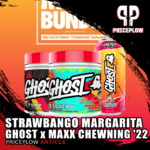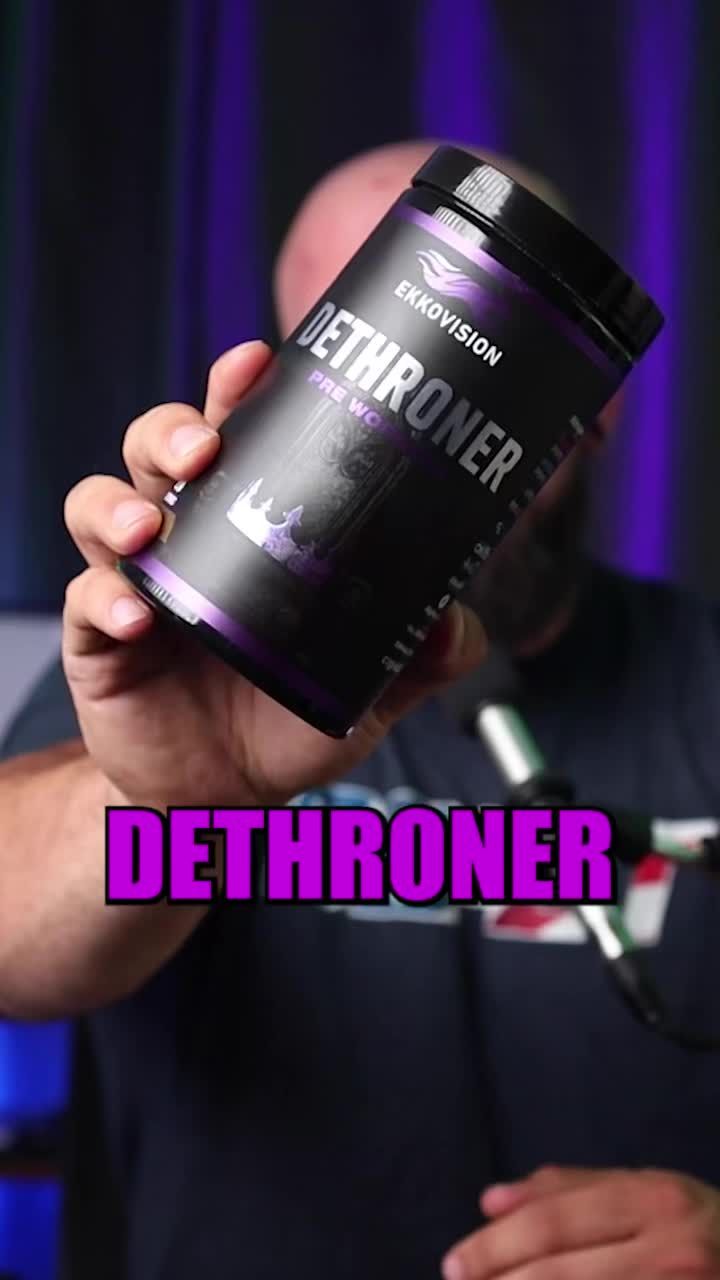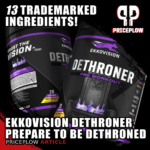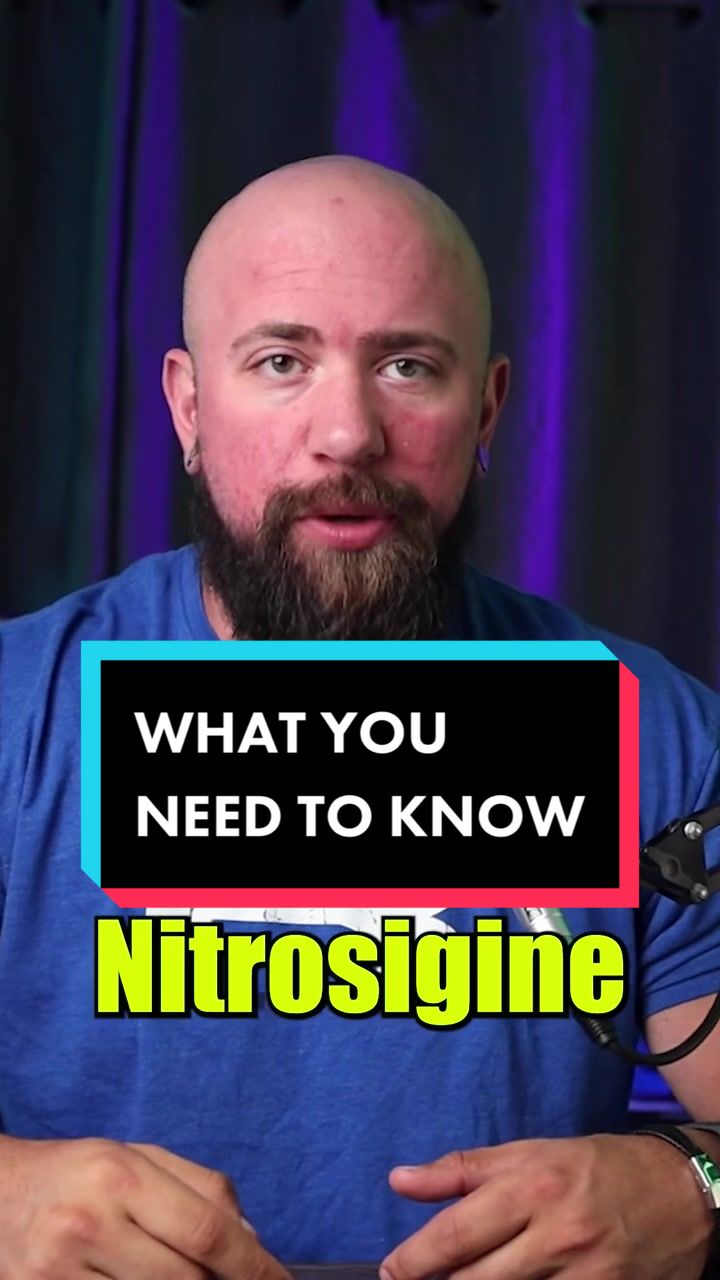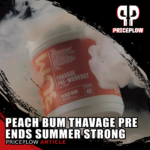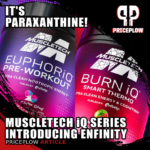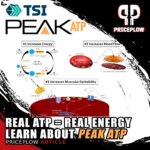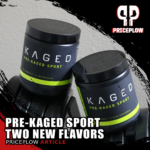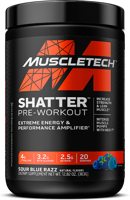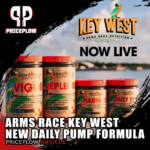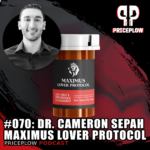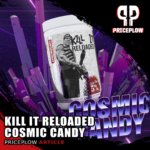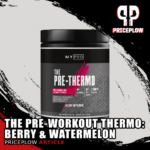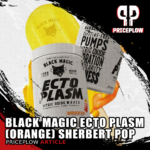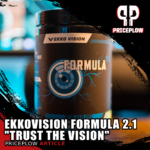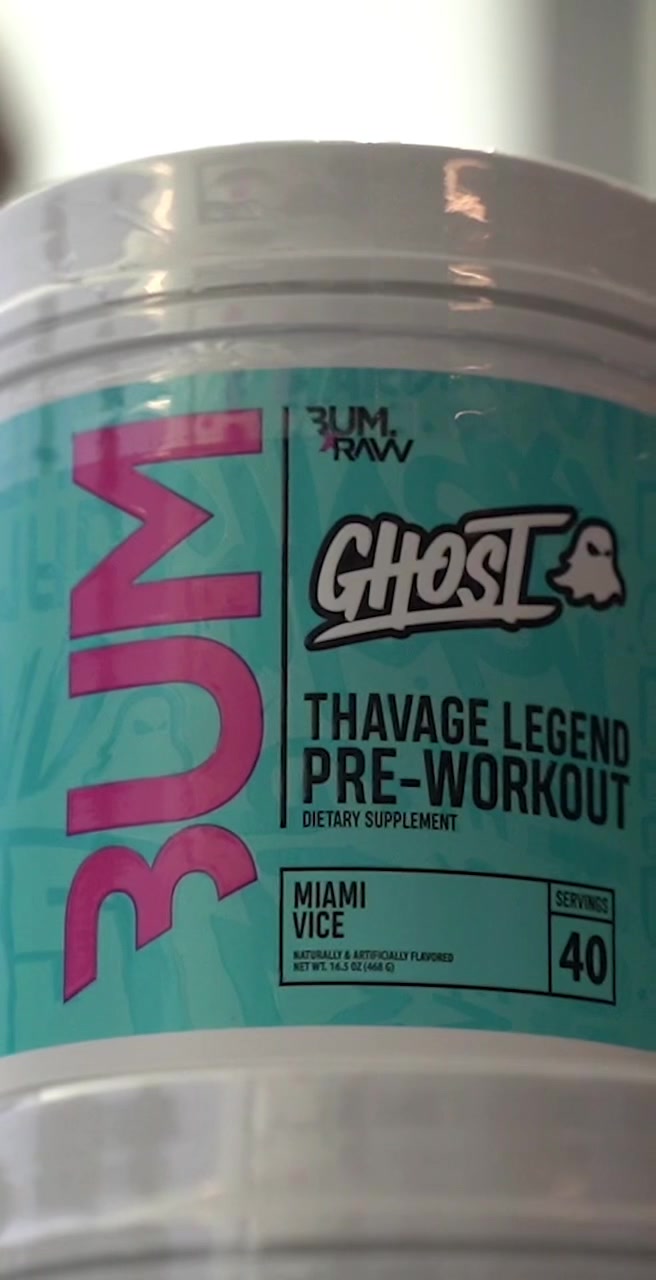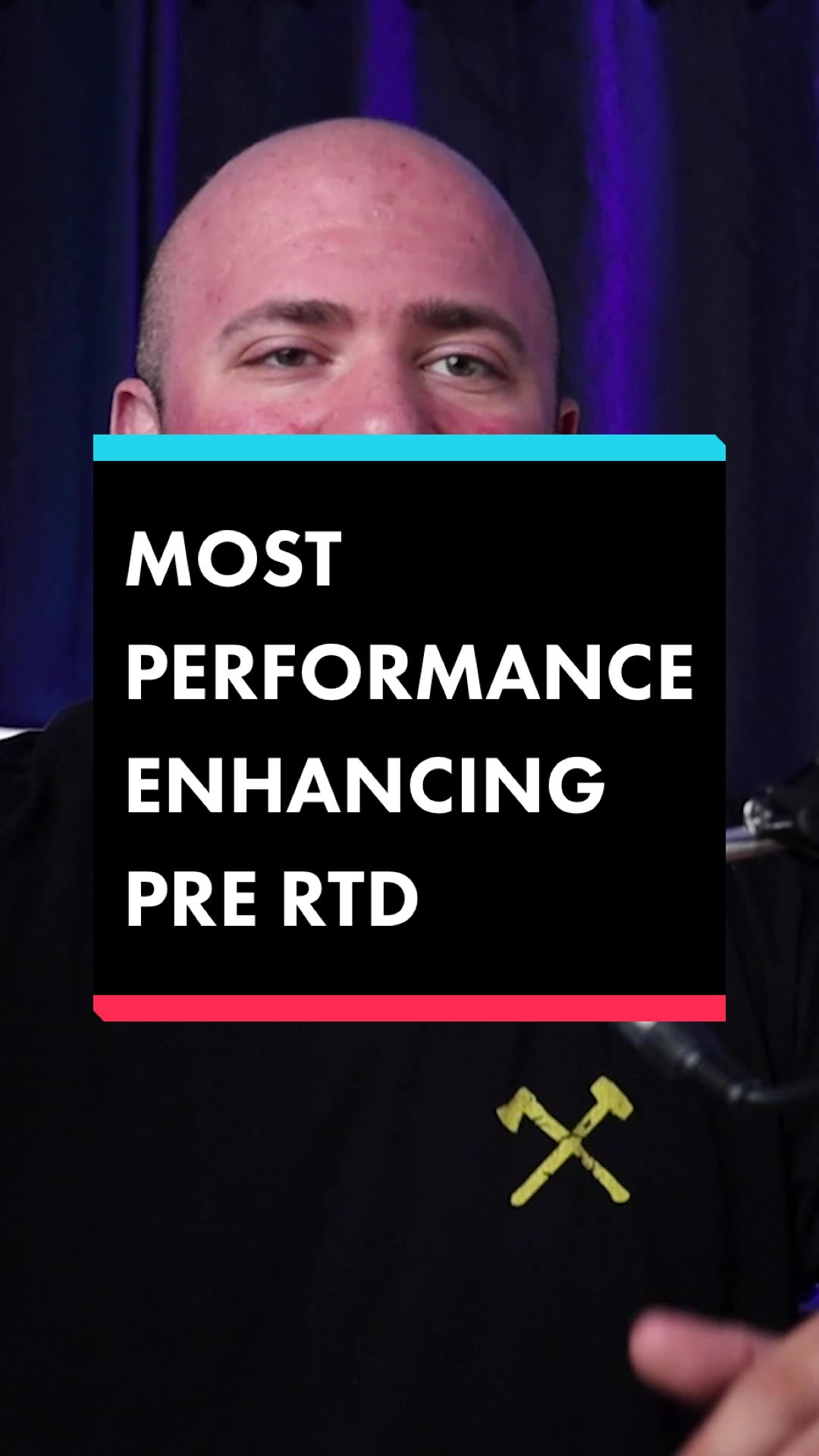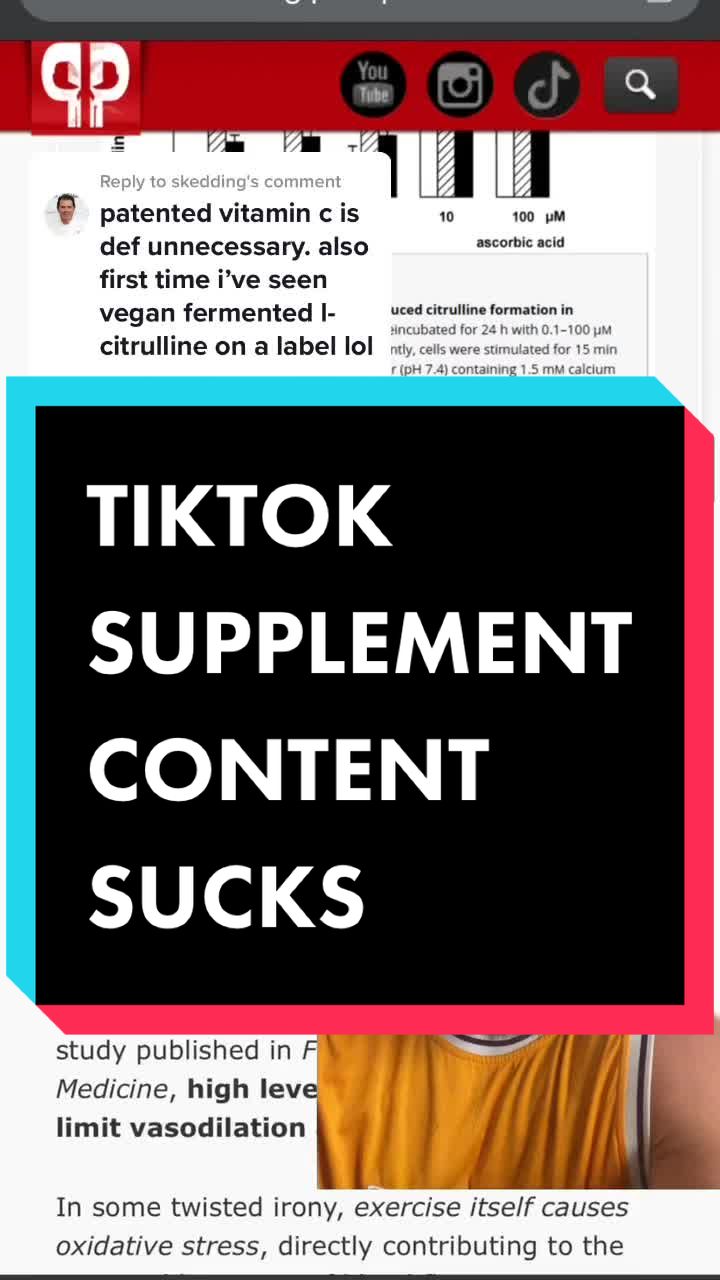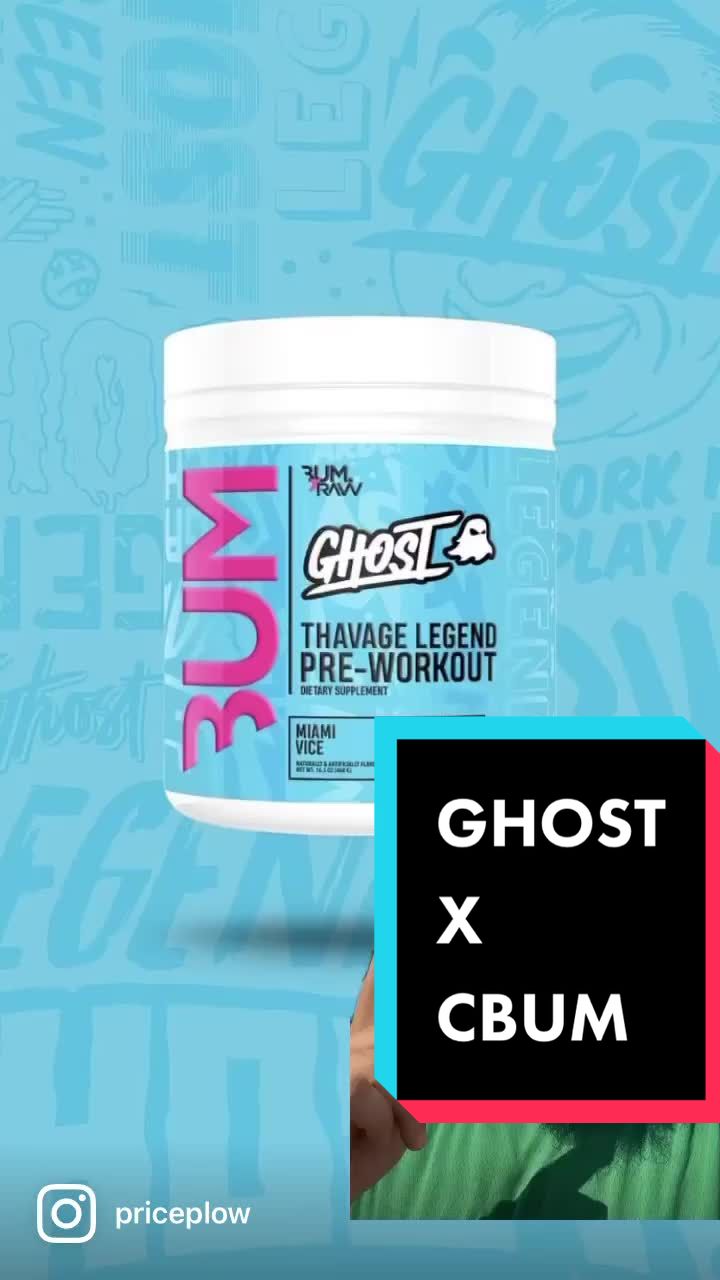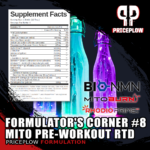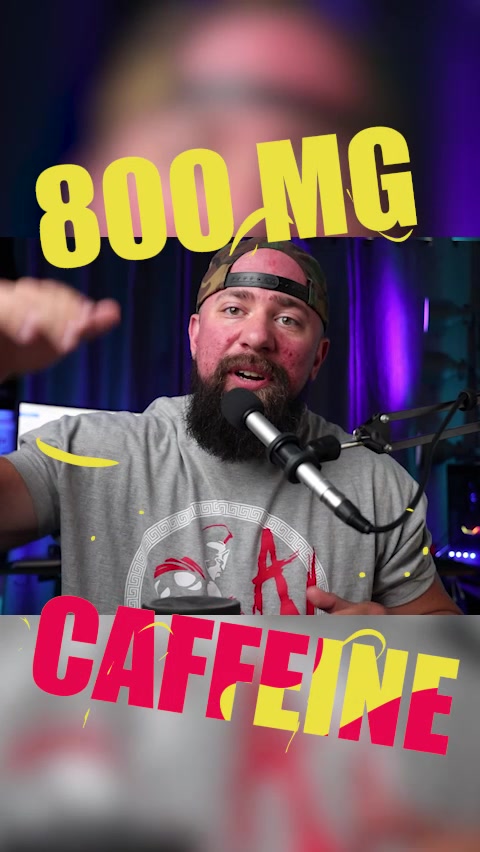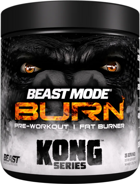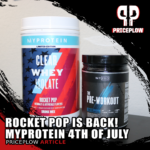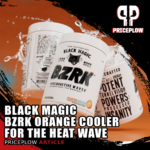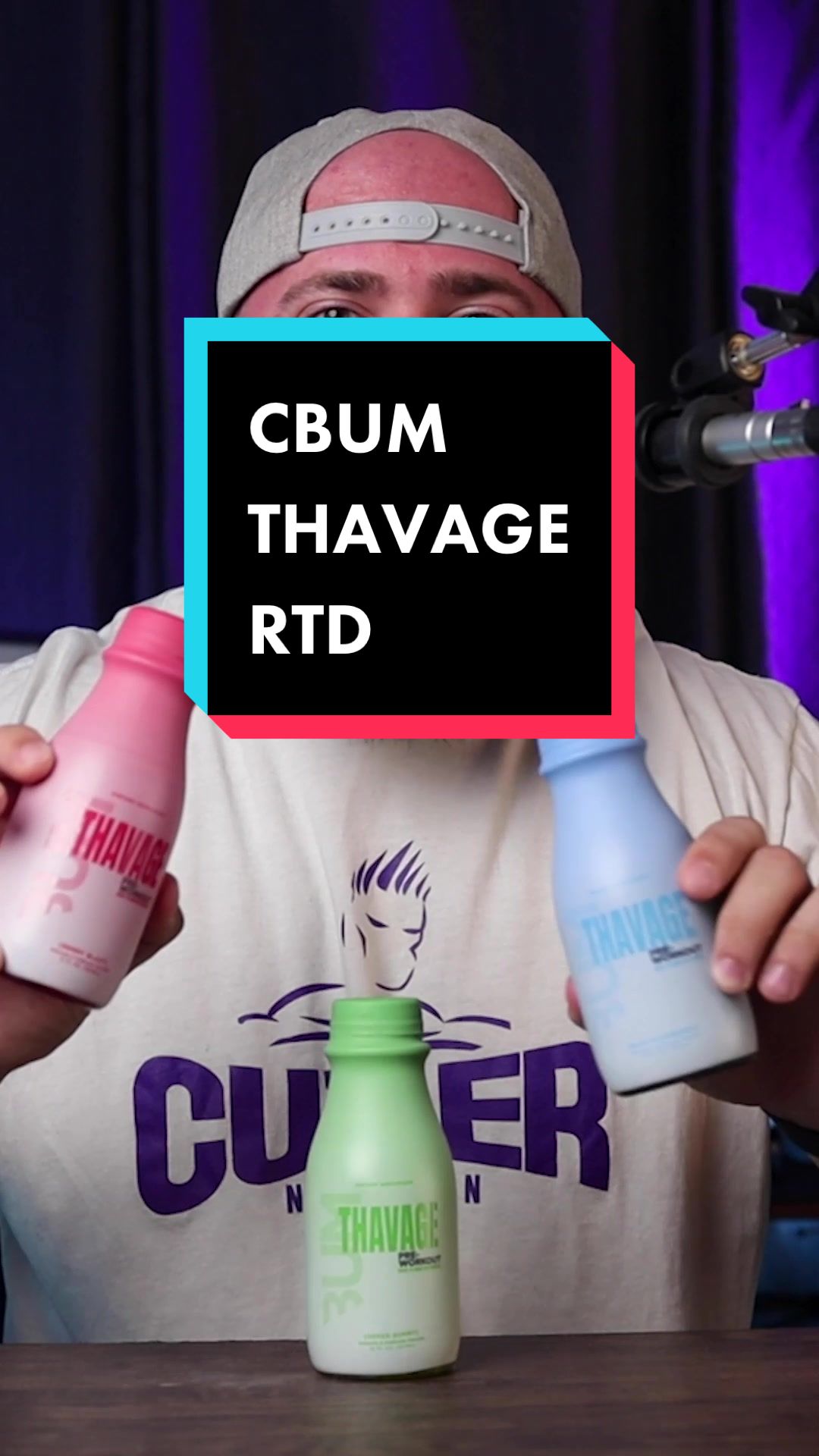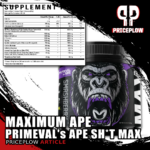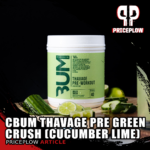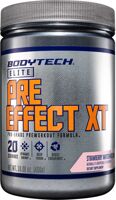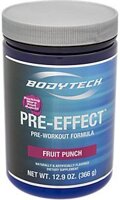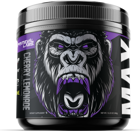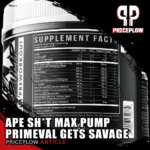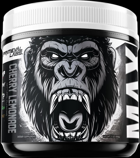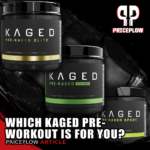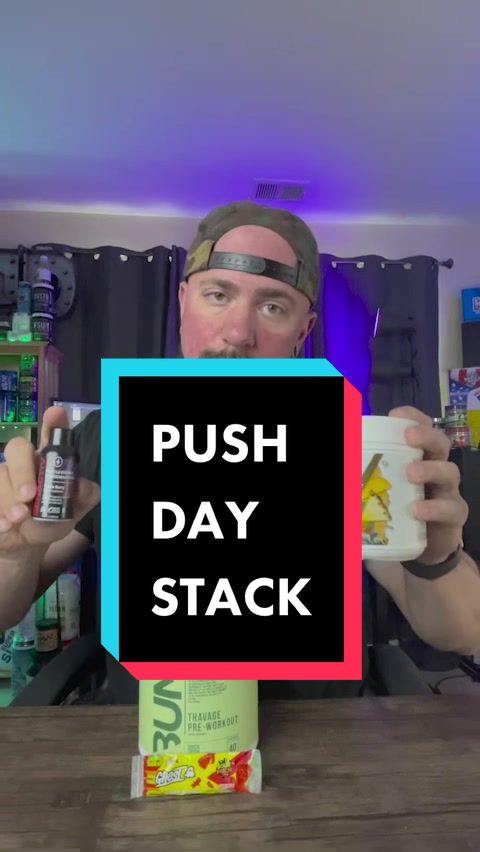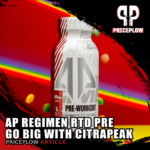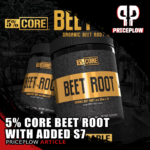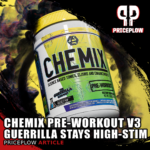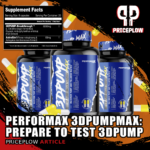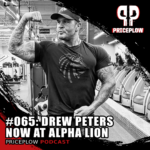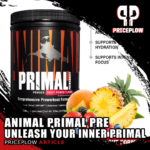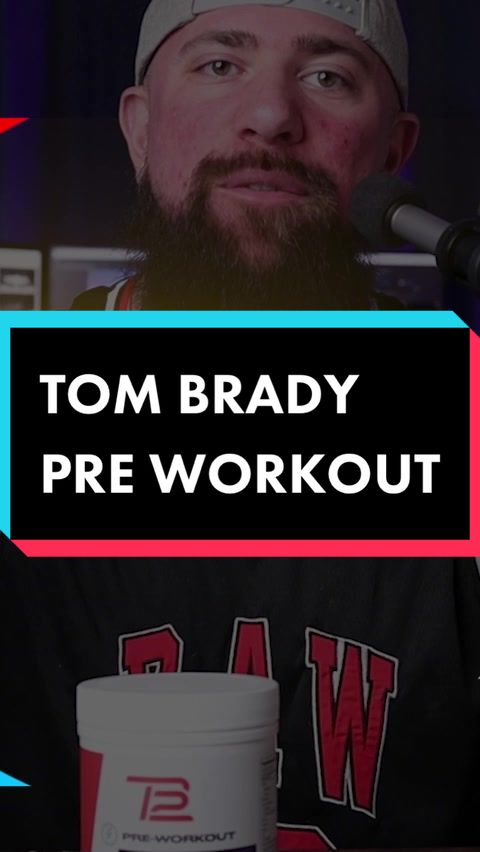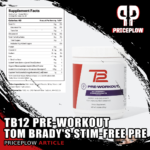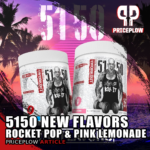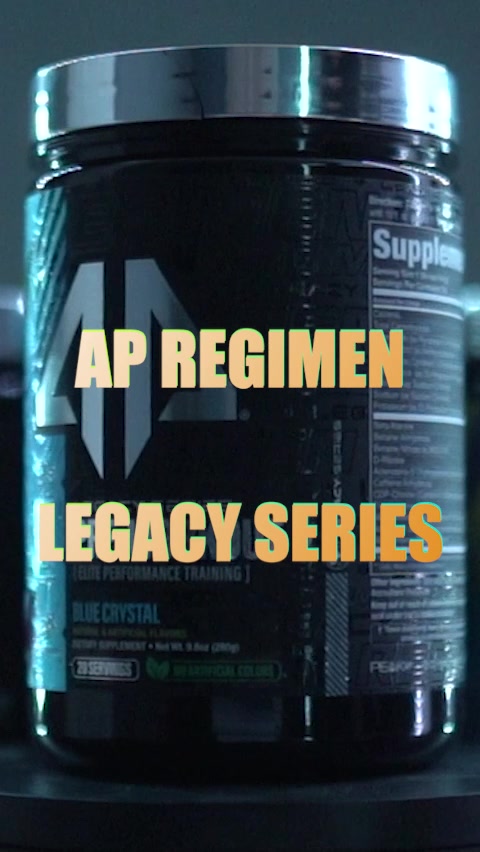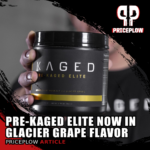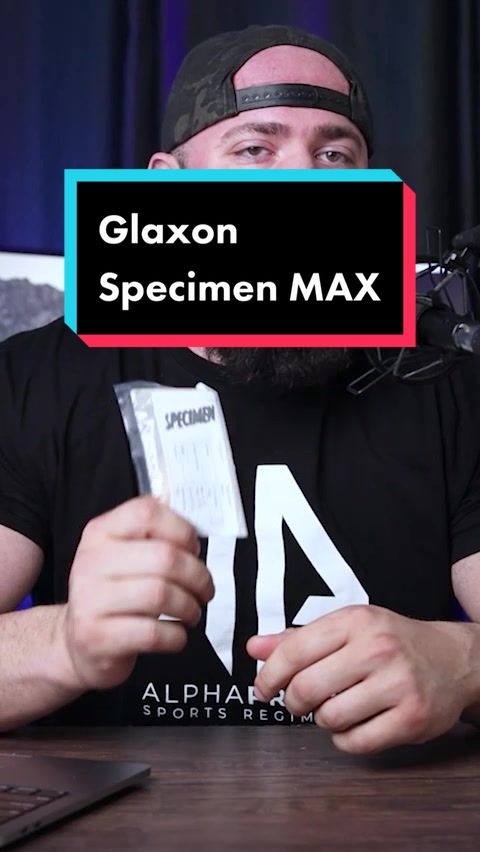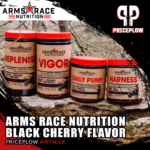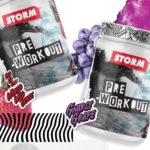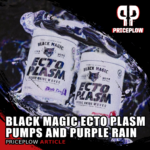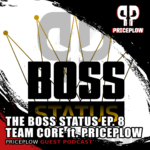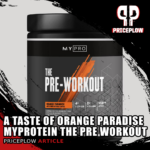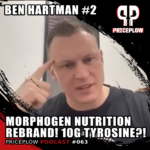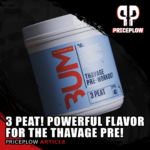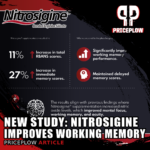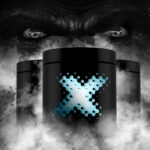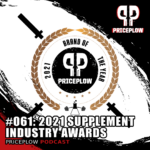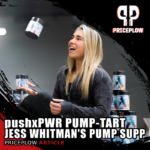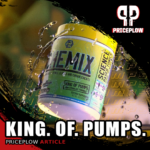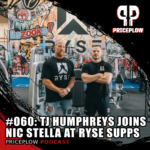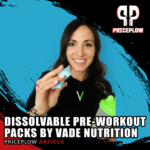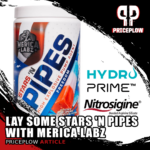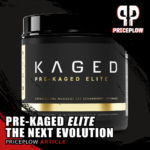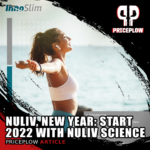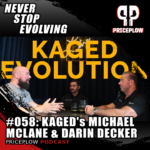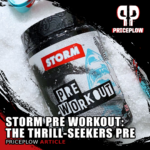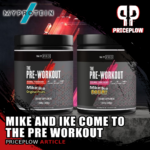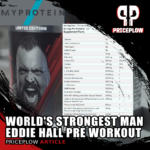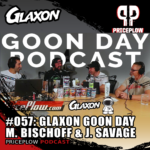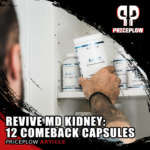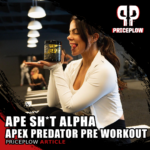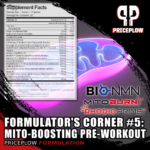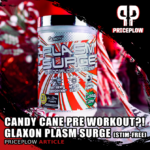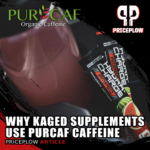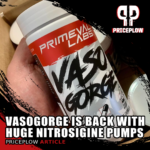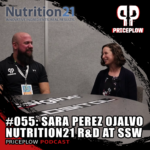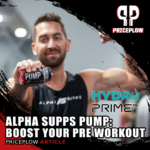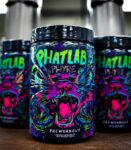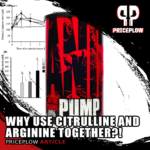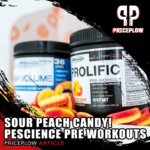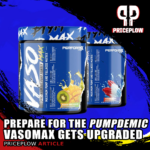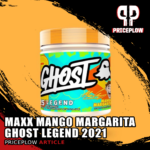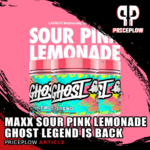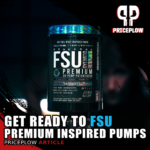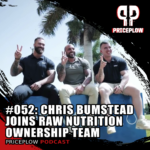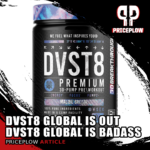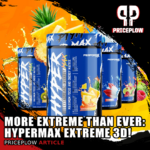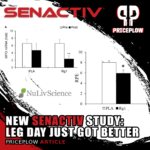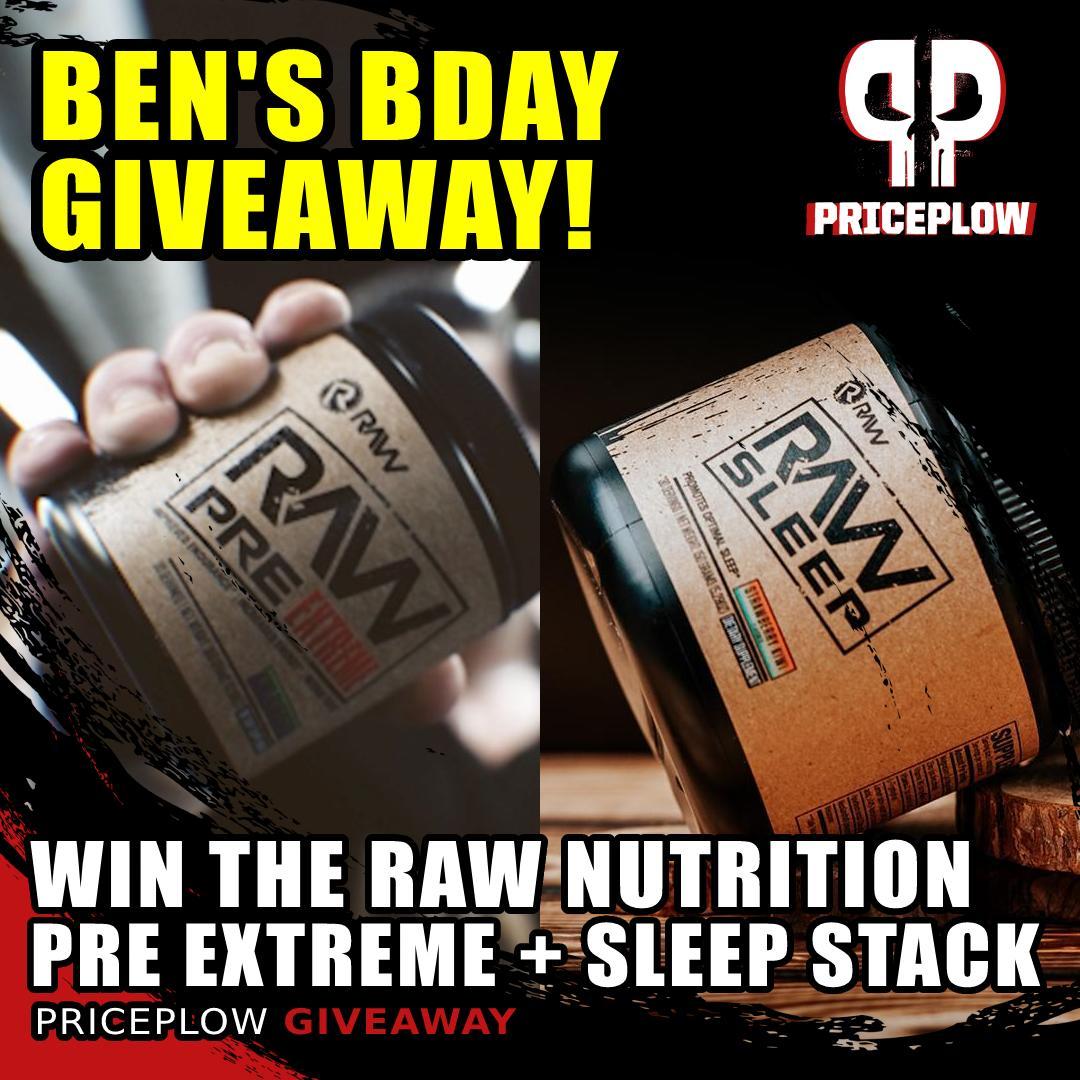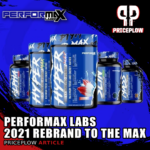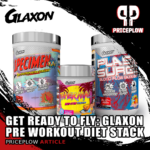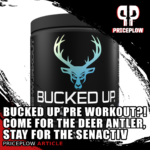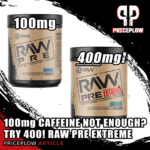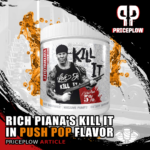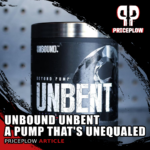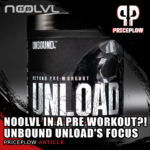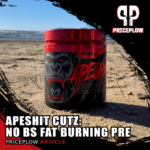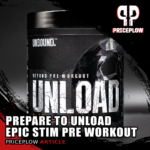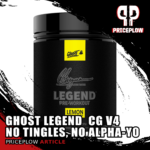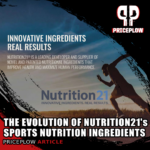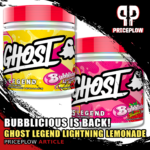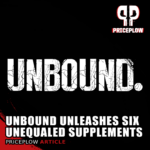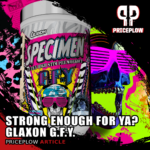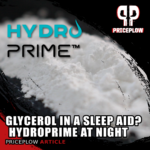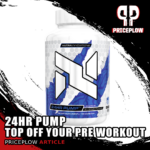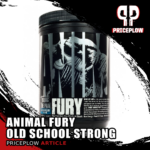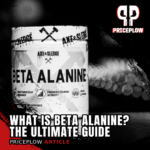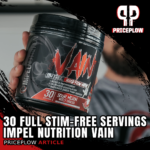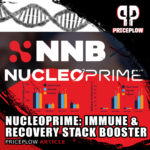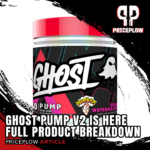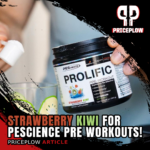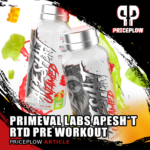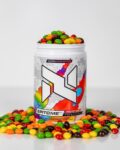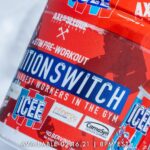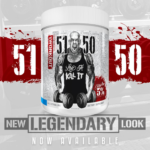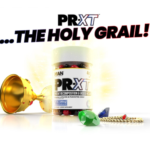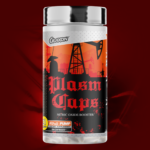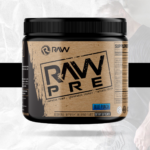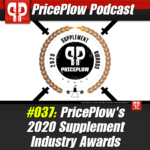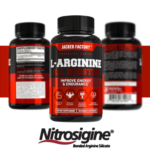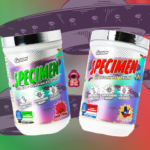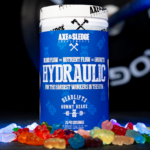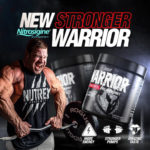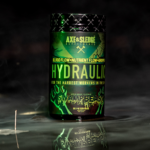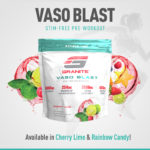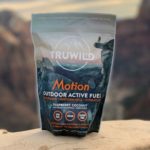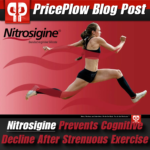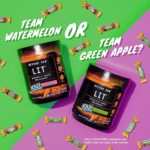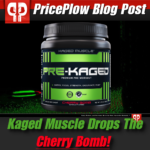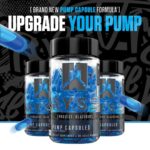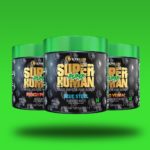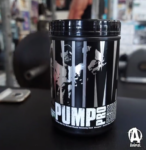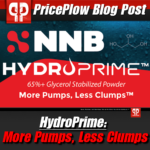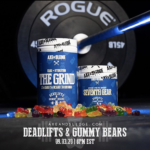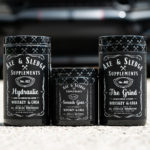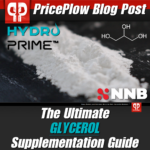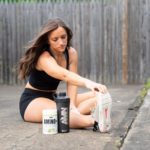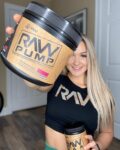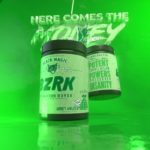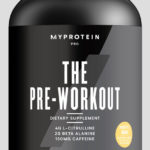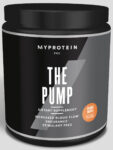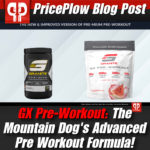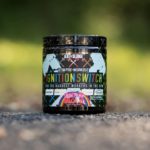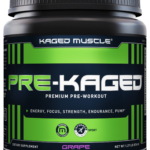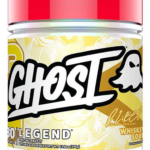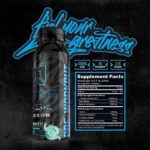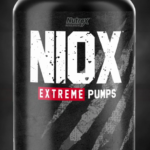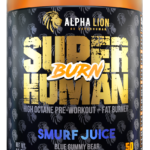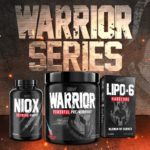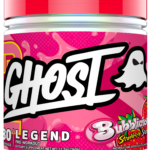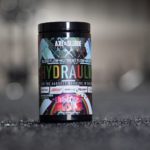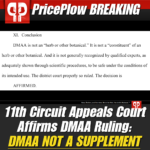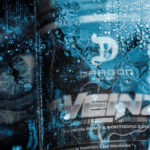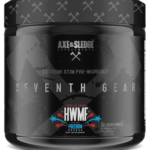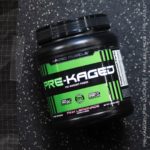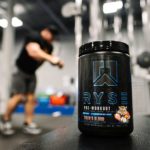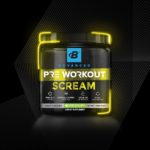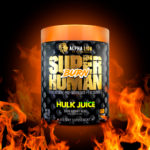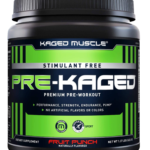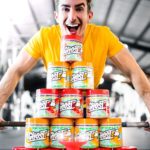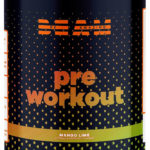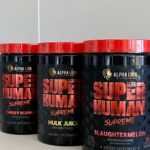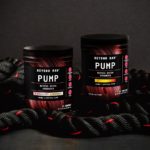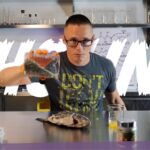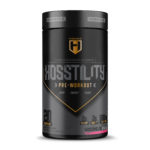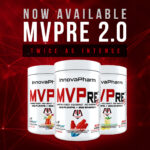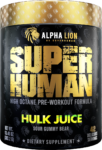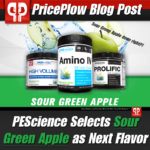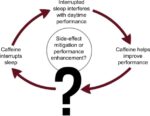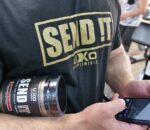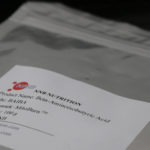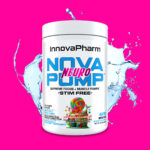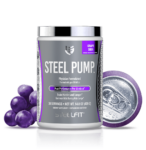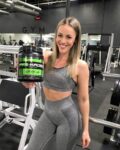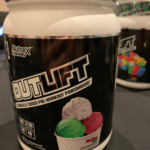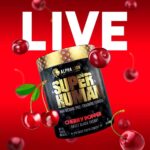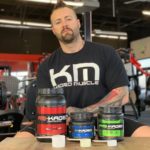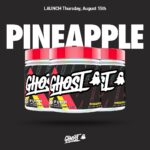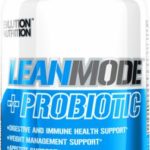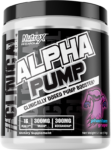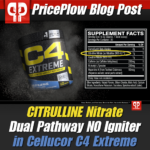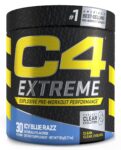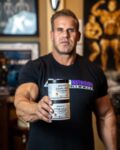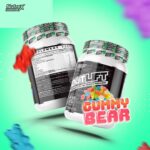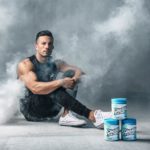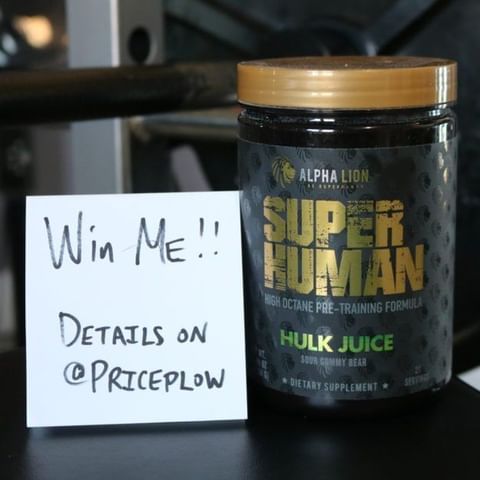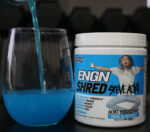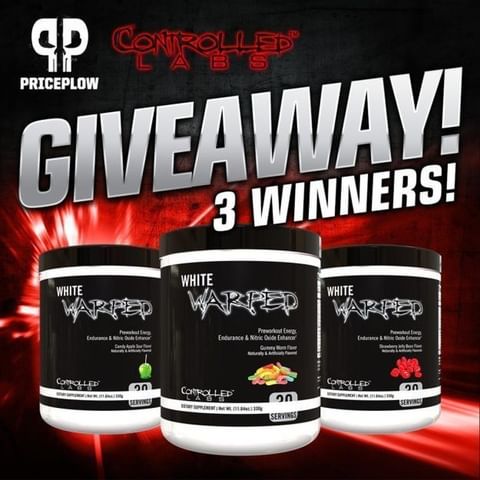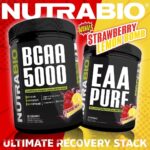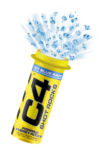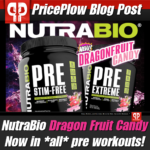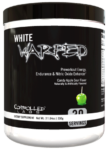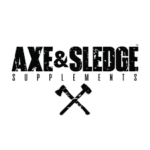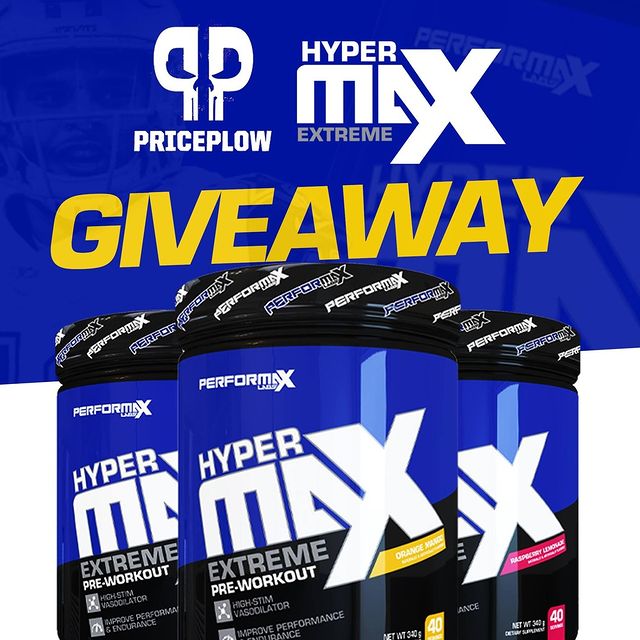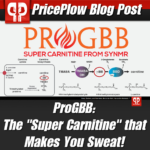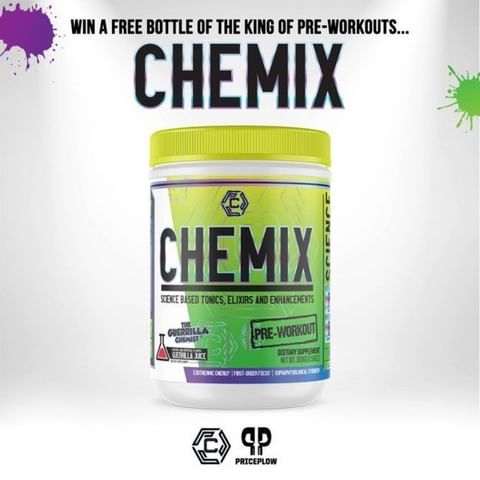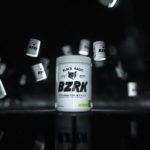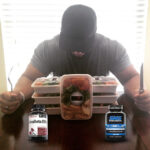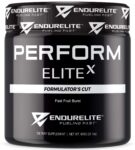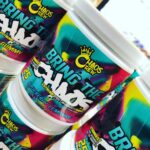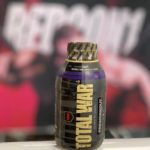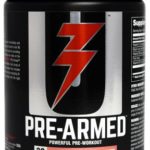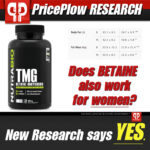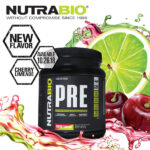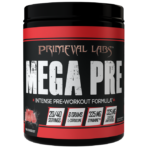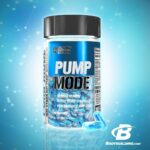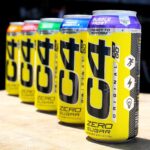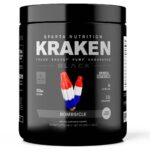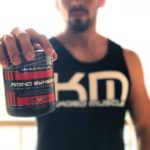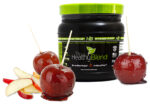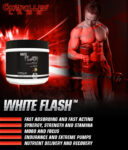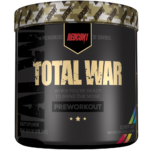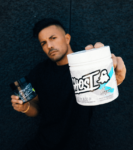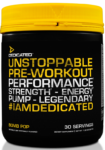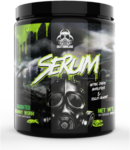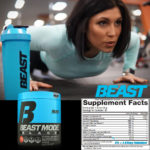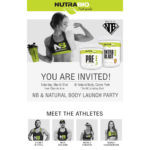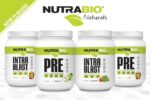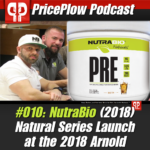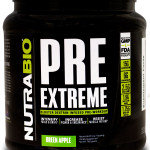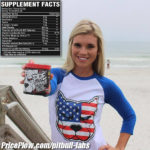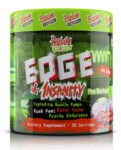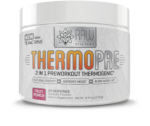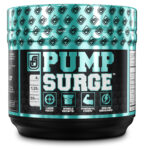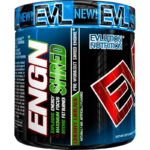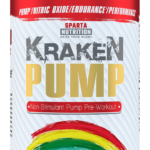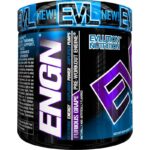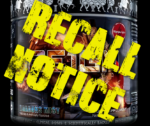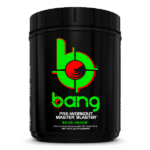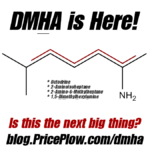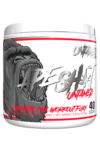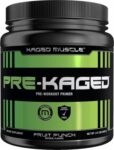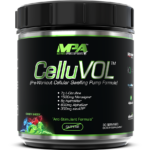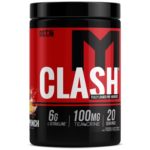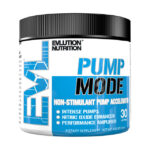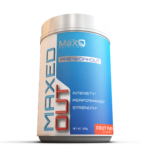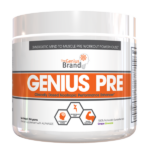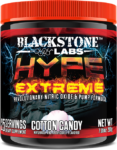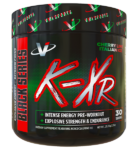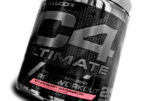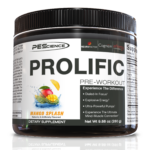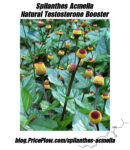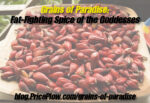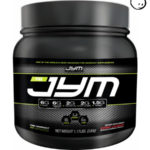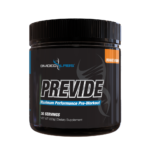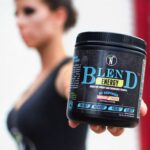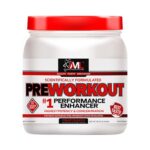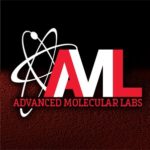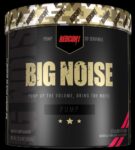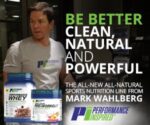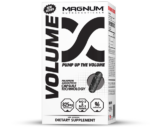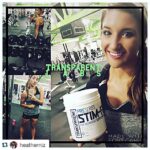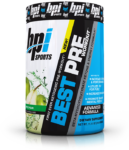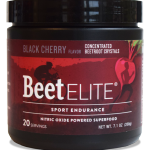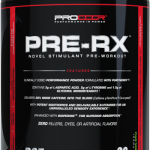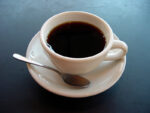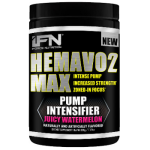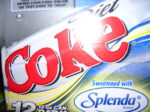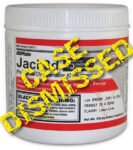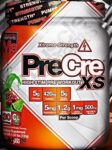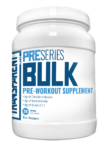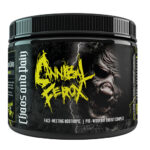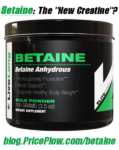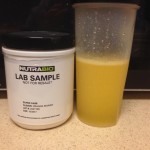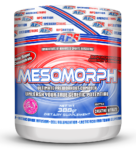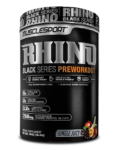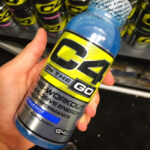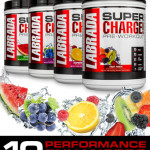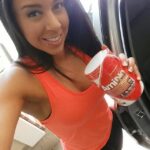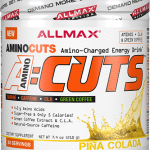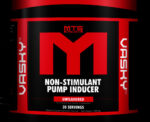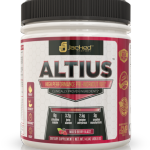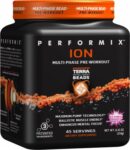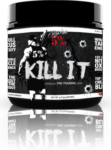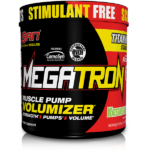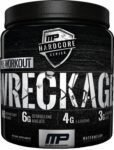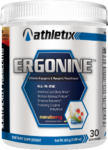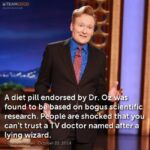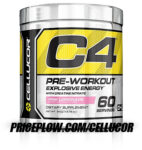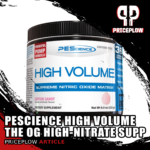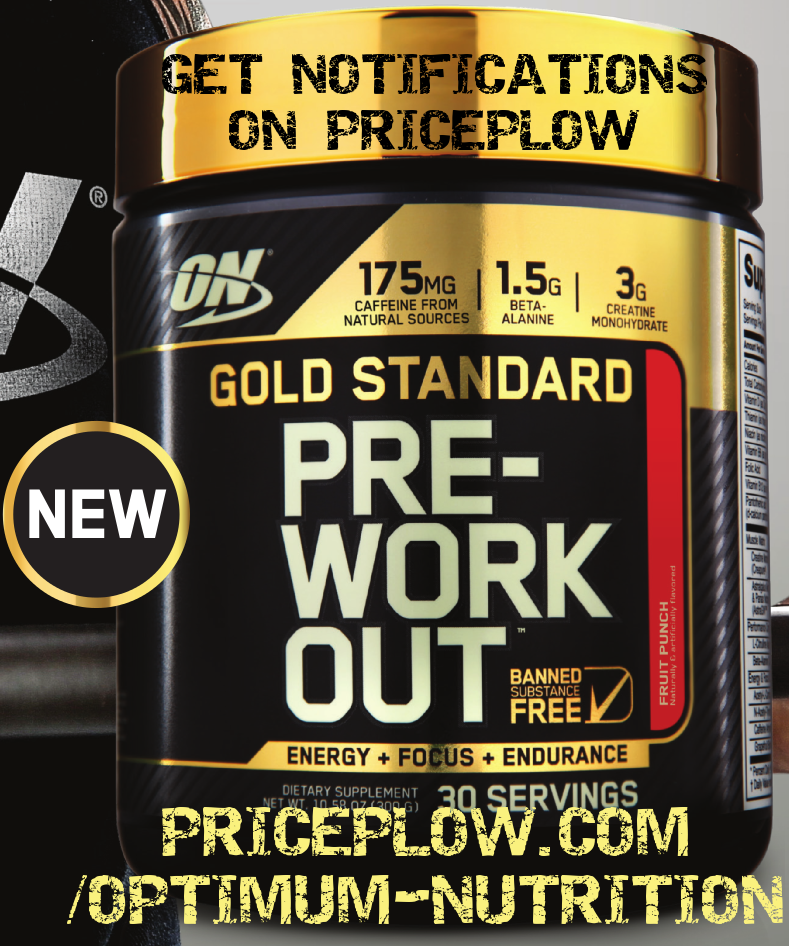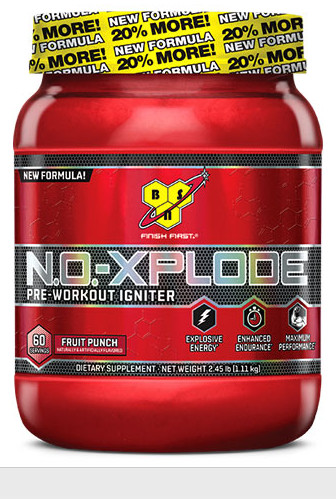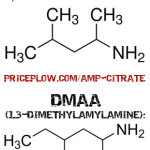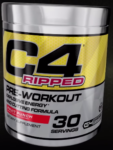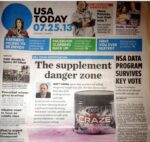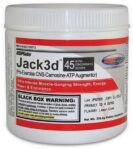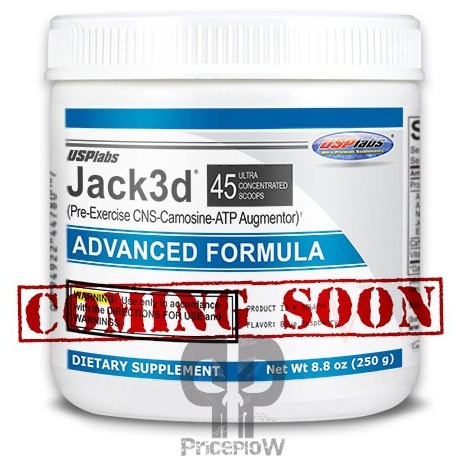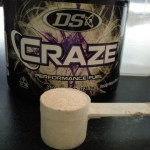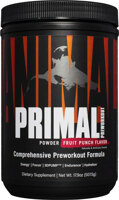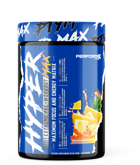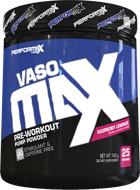Pre workout supplements contain a wide variety of ingredients, but the general effects they aim to achieve are pretty simple: allow you to perform more reps and/or at a higher resistance level when training. Ultimately, the goal is to increase energy and motivation, support muscle repair and growth, and mobilize body fat for use as fuel.
Not sure where to start?
If you're new to pre workouts, then the best place to start is the official Best Pre Workout buyer's guide on our blog.
It takes your preferences into account, and also explains the dozens and dozens of popular ingredients inside of the pre workouts, with over one hundred sources cited!
Ingredients and uses
Rather than attempting to cover every pre-workout formula on the market, it's simpler to look at some of the ingredients most commonly found in supplements.
Many of these ingredients can be used singularly — for example, most of the world's population uses caffeine for energy — but pre-workout formulas combine multiple ingredients in an attempt to achieve optimal results. In order for supplement manufacturers to gain notoriety for producing legitimately potent or effective pre-workouts, the good companies out there, of which there are many, will craft their products based on scientific studies conducted on humans (not just lab animals!).
Only those that consistently produce favorable, healthy results should make it to market. Unfortunately, there are products formulated with questionable ingredients and shoddy research — or just research on lab mice or in vitro — that still manage slip through.
Here are some of the ingredients typically found in pre-workout supplements, sorted by their primary intended effect:
Muscle strength and endurance
The following ingredients are added to pre-workouts as power and endurance boosters, but they do not need to be taken pre workout. They accumulate and saturate in your system over time.
Manufacturers simply include many of these in their pre-workouts to ensure that you are indeed getting them, and because it's convenient:
Beta-alanine/carnosine
Beta-alanine is a non-essential amino acid that serves one purpose: to improve carnosine uptake by muscle tissue. On its own, beta-alanine won't do anything to enhance your workout, but it will improve carnosine's ability to prevent acid build-up in working muscle tissue.[1]
Beta-alanine is also well known for causing a tingling sensation in the skin. It is not toxic, but this tingling feeling annoys some individuals. We like it because it alerts us to the fact that the pre-workout is in our system and it's time to start getting after it.
Creatine
Creatine is an amino acid compound that aids in overall cellular energy production, but is especially concentrated in muscle tissue. It's primarily used to support short bursts of high-intensity energy, but post-workout, it has been found to aid in muscle growth.[2,3]
Typically, you want to take 5g of creatine monohydrate each and every day - it doesn't matter when or how - just get it in. Pre-workout is a convenient time to take it, but there is no absolute timing requirement.
Betaine
Betaine, also known as trimethylglycine, or TMG, is a naturally occurring compound that supports the liver and plays a role in the development of new cells. It also naturally stimulates carnitine production, which is the primary reason for its inclusion in supplements. In addition, some studies have shown increased ability to do reps and lift weights after supplementation.[4,5]
Muscle repair and growth
Branched-chain amino acids (BCAAs)
BCAAs are four of the nine essential amino acids: They're are a daily requirement and can only be obtained through food. These four compounds are unique in that they support exercise and muscle function, aiding in glucose uptake and muscle protein synthesis.[6]
Glutamine
Glutamine is a primary fuel source for working muscle. It's another amino acid that does not contribute to muscle growth on its own, but does so indirectly by stimulating the production of cortisol. Cortisol moderates stress hormone production and aids the immune system, allowing damaged muscle tissue to heal at a faster rate.[7,8]
Carnitine - LCLT
L-carnitine L-tartrate is a sub-compound of l-carnitine that functions as an antioxidant, supports muscle repair, and helps to reduce soreness after exercise.
Nitric oxide boosters (pump enhancers)
The following ingredients promote more nitric oxide (NO) production in your bloodstream. To a limit, extra NO creates vasodilation, which is the widening of your veins, which, in turn, improves blood flow and nutrient delivery, temporarily giving you increases in strength and power.
You do not ingest NO. You take amino acids and other ingredients such as those below, which then boost NO levels.
These benefits, on their own, will not make you bigger in the long run. With the proper workout, they will get you additional sets and reps, promoting more muscle tearing. It is then up to you to eat properly in order to turn those reps into true gains.
Arginine/citrulline
Arginine is an amino acid that's used a variety of ways throughout the body, but is present in supplements because it's a precursor of nitric oxide. Citrulline is the amino acid that arginine is synthesized from, and has become popular in supplements as uptake of arginine has been shown to increase when taken as a citrulline supplement.[9,10]
In the early 2010s, a common form of arginine was AAKG, or arginine alpha ketoglutarate. This has recently been replaced by L-citrulline and the ingredients below, due to their ability to better improve NO production better than L-arginine on its own.
Agmatine
Agmatine is a fairly new supplement that serves the same function as arginine, but is believed to have superior uptake as the carboxylic acid has been removed.
Carnitine - GPLC
Carnitine directly supports cellular energy production. It has several sub-compounds that further support good health and energy, but glycine propionyl-L-carnitine (GPLC) is the most relevant to pump enhancement as it provides a significant nitric oxide boost to the muscles.[11]
Nitrates
Nitrates are a potent vasodilator — they increase blood flow to the muscles. You'll see nitrates in various compounds designed to enhance their effects even further. Some popular examples are potassium nitrate and creatine nitrate.[13]
Glycerine/glycerol monostearate
Glycerine (aka glycerin) is more well known as a soap ingredient (and possibly for getting a lot of radio play, if you grew up in the '90s), but it's also used by some bodybuilders as a pump enhancer because it's extremely effective at hydrating muscle tissue. Glycerol monostearate is simply a compound of glycerine that is commonly used as a sweetener and preservative, in addition to providing the bodybuilding benefits of glycerin (which is normally flavorless).[12]
Unlike the above ingredients, glycerol does not work via nitric oxide production. Instead, it's all about drawing water into your muscle tissue. (Think of glycerol like a sponge.) So if you have a pre-workout supplement featuring this ingredient, take it with plenty of water — 20 oz. or more.
Stimulant energy
Caffeine
Caffeine is the most widely used stimulant on Earth. As you're likely already aware from experience, the primary purpose is a rapid feeling of energy and reduction of fatigue. Caffeine is sometimes included in supplements as a fat burner because it has a very mild effect in heightening metabolism. It is not a significant contributor to weight loss.[14]
Yerba mate/theobromine
Yerba mate contains caffeine, but also theobromine and theophylline. Some believe yerba mate provides a steadier, less "jittery" and energetic feeling than other forms of caffeine.
Check it out
Synephrine and yohimbe, in the "Fat Burner" section below, are also added to pre-workout supplements for their energy-enhancing properties.
Nutritional energy
B vitamins
B-vitamin complex — the entire range of B vitamins — won't give you direct energy in the way a stimulant will. But most of them are vital in processing your food into cellular energy.[15]
Taurine
Taurine is an amino acid that's vital to digestion and muscle function. It's believed to provide energy (largely because it's heavily advertised for that purpose and is a component of many energy drinks). It should be noted that in those beverages, taurine is often accompanied by large doses of caffeine, making it unclear how much it actually contributes to feeling energetic. Like the B-vitamin complex, however, taurine is necessary for proper digestion.[16] Studies have shown that taurine is regulates cell volume. It optimizes muscle cell hydration, which in turn promotes anabolism and improves muscle function.[30]
Tyrosine
Tyrosine is an amino acid primarily needed for protein synthesis. It has also been shown to reduce feelings of fatigue in situations of high stress and to mitigate stress hormone levels. However, it hasn't been shown to have an effect on lower, more normal levels of day-to-day stress.[17]
Concentration and focus (nootropics)
Choline (vitamin Bp)/DMAE
Choline is part of the B-vitamin complex (which as a whole is vital to brain and central nervous system function) and is a daily nutritional requirement. DMAE is a choline precursor, and in addition to providing nutritionally vital choline, it's shown some promise as an enhancer of cognitive function.[18]
Theanine
Yet another amino acid, theanine, which is commonly found in tea, reduces stress hormones and increases alpha wave activity in the brain.In supplements it's very frequently paired with caffeine as several studies have demonstrated they complement and enhance each other's beneficial effects.[19,20]
Gingko biloba
Some studies have shown that the herb ginkgo biloba not only improves attention and focus, but also demonstrates promise as a treatment for dementia symptoms.[21] Studies on the effects of gingko biloba on attention have concluded it makes no difference whatsoever.[22] The facts may still be unclear, but there's enough scientific and anecdotal evidence that it may be worth a try to see if you feel gain any personal benefits from it. Plus, gingko biloba is very inexpensive. Note that you should take it for about a month before you will see any benefits.
Vinpocetine
Vinpocetine is a periwinkle plant extract that's used in some pre-workout formulas as a vasodilator, but it's also promoted and sold as a focus enhancer. This is largely based on a series of medical studies showing improvement in patients with various cerebral impairments and diseases, and one study indicating improvement in short-term memory after supplementation.[31] While there's still little in the way of supplementation studies specifically geared to memory improvement and concentration in humans, the early results are interesting and studies, up to this point, seem to concur that long-term usage is safe.
Carnitine - ALCAR
Acetyl L-carnitine (ALCAR) is the sub-compound of carnitine that fights fatigue and improves focus. It's also good for athletic endurance.
Fat burners
Green tea extract
The catechins and EGCg in green tea extract have shown some promise for weight loss in early studies, but the product is new and there are not enough conclusive human studies. Regardless of its uncertain status, you'll see green tea extract included as an ingredient in products that promise to burn fat.[23]
Hordenine
Hordenine is a stimulant that affects the central nervous system, and used to promote the production of norepinephrine. Norepinephrine is believed to help mobilize fat for use as energy and also slow digestion, which can reduce appetite. This is entirely based on conjecture since the hormone is a lipolytic. At present, no studies actually show that supplementation contributes to fat loss.
Capsaicin and cayenne pepper extracts
Capsaicin is what gives chili peppers their heat, and it has also been shown to slightly raise metabolism.[24] Capsaicin is sometimes listed in supplement ingredients as "cayenne pepper extract."
MCT oil
MCT (medium-chain triglyceride) oil is a saturated fat extracted from coconut and palm oils. MCT oils can't actually be stored as body fat, but rather, it's sent immediately to the liver for use as energy.[25] Despite not adding any calories, it has a similar feel in the mouth as other saturated fats and is sometimes used to curb fat cravings.
Synephrine
Synephrine is an extract of bitter orange. It became popular as a supplement additive when ephedrine was banned. Synephrine has been shown to raise metabolism. However, in one animal study, when combined with large doses of caffeine, the fat burner had some dangerous side effects, such as seizures, breathing difficulties, and feelings of agitation.[26] Supplements that contain synephrine typically include a warning against simultaneously consuming caffeine.
Yohimbe
Yohimbe (or yohimbine) is extracted from the bark of a tree found in western Africa. It has shown some promise in inhibiting the retention of body fat, in more than one study. Results vary greatly with cultivation methods. One FDA study found that many yohimbe products on the market did not actually contain the compound derived from tree bark used in weight loss studies.[27,28]
Forms
Pre-workout formulas most commonly come in a powder form designed for mixing into a shake, water, or fat-free milk. Ingredients sold individually may come in a caplet or powder, which allows greater freedom in dosing.
We prefer to drink our pre-workouts because they're typically tasty and more cost-effective than pills. Some of the best pre-workouts have a lot of ingredients, which would make for some extremely large pills.
Considerations
While supplement manufacturers are required to disclose their ingredients profile (see product labels), they're not obligated to disclose amounts. If you plan to use products with ingredients that can have negative or harmful side effects, such as caffeine and synephrine, it's best to purchase your pre-workouts from a manufacturer with an "open label policy," which specifies the exact amount each ingredient is used in the production process.
Unfortunately, these are still relatively rare in pre-workout formulas since some manufacturers use phrases like "proprietary formula" to keep their competitors from duplicating their secret recipes. Some companies just don't want you to know the energy boost in their pre-workout simply comes from mega-doses of caffeine. A reputable company — and there are many — will reveal their ingredients voluntarily.[29]
The FDA does not do much to verify the efficacy of supplements or whether labeling claims are true. It usually takes independent studies and a solid body of user reviews to determine when a supplement or ingredient has the advertised effect. This has been a particular problem in fat burning products where supposed "wonder supplements," like acai berry and raspberry ketones, have turned out to be duds.
It's best to speak to a doctor before making any major changes in diet or supplementation, especially if you are on prescription medications. Pre-workout supplements can contain ingredients that have contraindications with certain medicines.
Side effects
Potential side effects can vary widely depending on the ingredients.
Any product that contains stimulants may have side effects associated with consuming too much sugar or caffeine — feeling nervous or jittery, inability to sleep, gastrointestinal problems, elevated heart rate, and tremors. Addiction and dependency are also a possibility with any stimulant.
Warnings
The FDA does not regulate pre-workout supplements. Several workout stimulants have been banned after causing a rash of documented health problems, but the FDA generally limits itself to removing products from the market that contain illegal substances. This is important to know as there are many legal and healthy substances that when taken in excess can have toxic side effects. In fact, most vitamin types can cause toxicity if you take too much.
This is another example why an open-label policy is advantageous. In addition to the dangers associated with amphetamine use, a product that is legal to sell may still contain substances that can cause a professional athlete or bodybuilder to fail a doping test.
Where to buy
You can find a full range of pre-workout supplements here at PricePlow and often at 30% to 50% off of retail prices. Let our comparison shopping engine do the work so that you can get back to your workout.
References
- Artioli, G, et. al; Medicine and Science in Sports and Exercise; "Role of beta-alanine supplementation on muscle carnosine and exercise performance;" June 2010
- Rawson, ES, et. al; Journal of Strength and Conditioning Research; "Effects of creatine supplementation and resistance training on muscle strength and weightlifting performance;" November 2003
- Kilduff, LP, et. al; Medicine and Science in Sports and Exercise; "Effects of creatine on isometric bench-press performance in resistance-trained humans;" July 2002
- Trepanowski, JF, et. al; Journal of Strength and Conditioning Research; "The effects of chronic betaine supplementation on exercise performance, skeletal muscle oxygen saturation and associated biochemical parameters in resistance trained men" December 2011
- Cholewa, JM, et. al; Journal of the International Society of Sports Nutrition; "Effects of betaine on body composition, performance, and homocysteine thiolactone;" August 2013
- Cynober, L, et. al; Journal of Nutrition; "Symposium on Branched-Chain Amino Acids: Conference Summary;" January 2006
- Agostini, F, et. al; Current Opinion on Medical Nutrition and Metabolic Care; "Effect of physical activity on glutamine metabolism;" January 2010
- Neu, J, et. al; Current Opinion on Medical Nutrition and Metabolic Care; "Glutamine: clinical applications and mechanisms of action;" January 2002
- Bendahan, D, et. al; Journal of Sports Medicine; "Citrulline/malate promotes aerobic energy production in human exercising muscle;" 2002
- Sureda, A, et. al; European Journal of Applied Physiology; "L-citrulline-malate influence over branched chain amino acid utilization during exercise;" September 2010
- Volek JS, et. al.; American Journal of Physiology; "L-Carnitine L-tartrate supplementation favorably affects markers of recovery from exercise stress;" February 2002
- PubChem; "Compound Summary for Glycerol;" 2014
- Hernandez, A, et. al; The Journal of Physiology; "Dietary nitrate increases tetanic [Ca2+]i and contractile force in mouse fast-twitch muscle;" August 2012
- Westerterp-Plantenga, MS, et. al; Obesity Research; "Body weight loss and weight maintenance in relation to habitual caffeine intake and green tea supplementation;" July 2005
- Laquale, KM; Bridgewater State College; "B-complex vitamins' role in energy release;" 2006
- Lourenco, R, et. al; Nutricion Hospitalaria; "Taurine: a conditionally essential amino acid in humans? An overview in health and disease;" November-December 2002
- Young, S, et. al; Journal of Psychiatric Neuroscience; "L-Tyrosine to alleviate the effects of stress?;" May 2007
- Blin, O, et. al; Psychopharmacology; "Effects of dimethylaminoethanol pyroglutamate (DMAE p-Glu) against memory deficits induced by scopolamine: evidence from preclinical and clinical studies;" December 2009
- Vuong, QV, et. al; Critical Reviews in Food Science and Nutrition; "Epidemiological evidence linking tea consumption to human health: a review;" 2014
- Foxe, JJ, et. al; Neuropharmacology; "Assessing the effects of caffeine and theanine on the maintenance of vigilance during a sustained attention task;" June 2012
- Mohanta, TK, et. al; Natural Product Research; "Phytochemical and medicinal importance of Ginkgo biloba L;" February 2014
- Laws, KR, et. al; Human Psychopharmacology; "Is Ginkgo biloba a cognitive enhancer in healthy individuals? A meta-analysis;" November 2012
- Boschmann, M, et. al; Journal of the American College of Nutrition; "The effects of epigallocatechin-3-gallate on thermogenesis and fat oxidation in obese men: a pilot study;" August 2007
- O'Connor, Anahad; New York Times; "The Claim: Spicy Foods Raise Metabolism;" November 2006
- Babayan, VK; Lipids; "Medium chain triglycerides and structured lipids;" June 1987
- Schmitt, GC, et. al; International Journal of Toxicology; "Toxicological effects of a mixture used in weight loss products: p-synephrine associated with ephedrine, salicin, and caffeine;" March 2012
- Cimolai, N, et. al; Journal of Dietary Supplements; "Yohimbine use for physical enhancement and its potential toxicity;" December 2011
- The American Cancer Society; "Yohimbe;" November 2008
- Eudy, AE, et. al; American Journal of Health-System Pharmacy; "Efficacy and safety of ingredients found in preworkout supplements;" April 2013
- Hoffman, EK, et. al; Physiological Reviews; "Physiology of cell volume regulation in vertebraes;" January 2009
- Doxiderol; "Vinpocetine;" Retrieved February 2014
Pre Workout Supplement News on PricePlow
-
May 03, 2024 ![]()
Blog Post
Formulator’s Corner #10: NNB FlowTech Series Non-Stim Pre-Workout
NNB Nutrition's FlowTech Series of ingredients includes a variety of pre-workout ingredients that can make a whole non-stim formula on their own! -
May 03, 2024 ![]()
Product News
RAW Nutrition CBUM Thavage Pre-Workout Drink has new variations: Category: Pre Workout Drinks -
May 03, 2024 ![]()
YouTube Video
Nutrex Outlift CLINICAL: Daily Driver Pre-Workout + Creatine -
May 02, 2024 ![]()
TikTok Video
LOOP IT! @nutrex_research The OG Outlift Clinical is back * 8g citrulline * 3g creatine * 3.2g... -
May 01, 2024 ![]()
TikTok Video
If your pump supp doesn't say stuff like HEMODYNAMIC ANOMALY and MYOTROPIC HYPEREXPANSION... -
Apr 30, 2024 ![]()
YouTube Video
POPPA PUMP: A Nitric Oxide HEMODYNAMIC ANOMALY by InnovaPharm -
Apr 30, 2024 ![]()
YouTube Video
9 Pre-Workout Ingredients! Like A Pro 9 VOLT w/ Peak ATP -
Apr 30, 2024 ![]()
TikTok Video
9VOLT by like a pro brings a bang at only 9 ingredients! -
Apr 29, 2024 ![]()
Blog Post
Nutrex Outlift Clinical: Pre-Workout Backed By Science
Nutrex Research Outlift Clinical is their latest addition to their pre-workout family, featuring ingredients at efficacious dosages backed by science. -
Apr 27, 2024 ![]()
Product News
Alpha Lion SuperHuman Burn has new variations: Categories: Fat Burning Drinks, Pre Workout Supplements -
Apr 26, 2024 ![]()
Product News
DAS Labs Bucked UP 100 Pre-Workout was created.
Category: Pre Workout Supplements -
Apr 25, 2024 ![]()
YouTube Video
Does Lower-Dose Arginine Work for SPORTS? (C4 Sport 2024) -
Apr 25, 2024 Product News
Jacked Factory Nitric Surge has new variations: Categories: Improve Circulation, Nitric Oxide Supplements, Stimulant-Free Pre Workout Supplements -
Apr 24, 2024 ![]()
YouTube Video
Is 2g Beta Alanine Enough in C4 Sport?! Depends on Your Size... -
Apr 22, 2024 ![]()
YouTube Video
How Would YOU Design this Nitrosigine Stim-Free Pre-Workout? -
Apr 21, 2024 ![]()
Product News
Podium Nutrition Athlete Pre Workout has new variations: Category: Pre Workout Supplements -
Apr 21, 2024 ![]()
Product News
RAW Nutrition CBUM Thavage Pre-Workout Drink has new variations: Category: Pre Workout Drinks -
Apr 20, 2024 ![]()
Product News
Redcon1 Total War Pump was created.
Category: Pre Workout Supplements -
Apr 18, 2024 ![]()
Blog Post
CBum Essential Pre: Mystery Flavor Revealed to Be Citrus Grapefruit!
RAW Nutrition has named last year's Mystery flavor of the CBum Essential Pre-Workout: Citrus Grapefruit! Read a bit about how this pre-workout works -
Apr 18, 2024 ![]()
Blog Post
POPPA PUMP: InnovaPharm’s Stim-Free Nitric Oxide Pills with 2 New Ingredients
InnovaPharm POPPA PUMP is a nitric oxide pill formula that contains tried-and-true Nitrosigine but also has 2 new ingredients - one named HEMO-Growth! -
Apr 17, 2024 Product News
Jacked Factory Nitric Surge was created.
Categories: Improve Circulation, Nitric Oxide Supplements, Stimulant-Free Pre Workout Supplements -
Apr 16, 2024 ![]()
YouTube Video
Two New Fresh Supps Pre Flavors: Strawberry Kiwi & Juicy Melons -
Apr 16, 2024 ![]()
YouTube Video
Inside The Vitamin Shoppe Brands: Tabitha Daley, Brian Tanzer, Dustin Elliott | PricePlow 134 -
Apr 16, 2024 ![]()
Blog Post
Fresh Supps Pre: Juicy Melons & Kiwi Strawberry Flavors
Fresh Supps Pre-Workout is now available for two partners in Australia and New Zealand: Juicy Melons & Kiwi Strawberry. It's a great daily driver pre! -
Apr 16, 2024 ![]()
Product News
Black Magic BZRK Pre-Workout Drink was created.
Category: Pre Workout Drinks -
Apr 16, 2024 ![]()
Blog Post
Inside The Vitamin Shoppe Brands: Tabitha Daley, Brian Tanzer, Dustin Elliott | Episode #134
How The Vitamin Shoppe approaches formulation within their house brands and deals with regulatory concerns regarding dietary supplement ingredients -
Apr 16, 2024 ![]()
TikTok Video
Two New Fresh Supps Pre Flavors: Strawberry Kiwi & Juicy Melons @freshsupps -
Apr 15, 2024 ![]()
Blog Post
C4 Sport Upgraded in 2024: NSF Sport Certified at Target with Ripped and Strength Versions
The 2024 version of C4 Sport has landed at Target, and it's got nearly twice the scoop size iwht NSF Sport Certification for drug-tested athletes! -
Apr 11, 2024 ![]()
YouTube Video
CBUM's Mystery is Over! Essential Pre-Workout Flavor Unveiled -
Apr 10, 2024 ![]()
YouTube Video
Mutant Mind FK Brings PUMPS Next to Nootropics: Nitrosigine + Citrulline -
Apr 10, 2024 ![]()
YouTube Video
The Best New DAILY-DRIVER Pre Workout: InnovaPharm MVPre 365 -
Apr 10, 2024 ![]()
TikTok Video
We'll take Mutant's Citrulline + Nitrosigine combo over citrulline alone! -
Apr 10, 2024 ![]()
Product News
JYM Pre JYM Stim-Free was created.
Category: Stimulant-Free Pre Workout Supplements -
Apr 09, 2024 ![]()
Blog Post
Formulator’s Corner #10: A Nitrosigine-Powered Stimulant-Free Pre-Workout Supplement
How would you craft a Nitrosigine-led stimulant-free pre-workout supplement with no citrulline and no other branded ingredients? Here's how we would! -
Apr 09, 2024 ![]()
Product News
Cellucor C4 Sport has new variations: Category: Pre Workout Supplements -
Apr 08, 2024 ![]()
YouTube Video
The Vitamin Shoppe CEO: Lee Wright on Thriving in The Shoppe | PricePlow 133 -
Apr 08, 2024 ![]()
Blog Post
Lee Wright: The Vitamin Shoppe CEO Thrives in The Shoppe | Episode #133
Lee Wright, CEO of The Vitamin Shoppe, quickly jumps on the PricePlow Podcast to explain the Vitamin Shoppe Brand Summit and his visits to The Shoppe -
Apr 08, 2024 ![]()
Product News
Cellucor C4 Sport has new variations: Category: Pre Workout Supplements -
Apr 03, 2024 ![]()
Blog Post
Like A Pro Supplements 9 Volt: High-Energy Pre-Workout with 9 Ingredients
With just nine ingredients, Like a Pro Supplements 9 Volt Pre-Workout brings some zip and some potent pumps, all boosted by Peak ATP on top! -
Apr 03, 2024 ![]()
Product News
ANS Performance DILATE has new variations: Category: Stimulant-Free Pre Workout Supplements -
Apr 02, 2024 ![]()
YouTube Video
JOCKO WILLINK: Starting Jocko Fuel and Jocko's Supplement Stack | PricePlow 132 -
Apr 02, 2024 ![]()
Product News
MRI Black Powder has new variations: Category: Pre Workout Supplements -
Apr 02, 2024 ![]()
YouTube Video
Mutant Mind FK (Mind FREAK!) Nootropic Pre-Workout w/ enfinity -
Apr 02, 2024 ![]()
Blog Post
JOCKO WILLINK | PricePlow Episode #132
Jocko Willink joins PricePlow for Episode 132 to talk about founding Jocko Fuel, doing the right thing, and Jocko's entire stack from start to finish -
Apr 02, 2024 ![]()
YouTube Video
The Best C4 Formula We've Seen! C4 Ultimate STRENGTH -
Apr 02, 2024 ![]()
TikTok Video
Mutant Mind FK (it's pronoucned Mind FREAK lol) Nootropic Pre-Workout with enfinity - you gonna... -
Apr 01, 2024 ![]()
Product News
Podium Nutrition Athlete Pre Workout was created.
Category: Pre Workout Supplements -
Apr 01, 2024 ![]()
TikTok Video
The Best C4 Formula EVER? -
Mar 31, 2024 ![]()
Blog Post
2024’s Beverage Standouts at Expo West and The Vitamin Shoppe
Expo West, The Arnold, and The 2024 Vitamin Shoppe Brand Summit have come and gone, and we came away with some great functional drink trends here. -
Mar 31, 2024 ![]()
Product News
GAT Nitraflex Kaos was created.
Categories: Pre Workout Supplements, Stimulant-Free Pre Workout Supplements -
Mar 30, 2024 ![]()
Product News
Inspired Nutraceuticals DVST8 Dark has new variations: Category: Pre Workout Supplements -
Mar 29, 2024 ![]()
Blog Post
C4 Ultimate Strength: Dual Peptides Make for the Best C4 Formula Yet
C4 Ultimate Strength: The best C4 formula we've ever seen! With TWO peptides (PeptiStrong & PeptiPump), there's energy, strength, performance, & pump -
Mar 28, 2024 ![]()
Product News
True Athlete Performance Pre has new variations: Category: Pre Workout Supplements -
Mar 28, 2024 ![]()
Product News
Cellucor C4 Ultimate Shred has new variations: Categories: Fat Burning Drinks, Pre Workout Supplements -
Mar 26, 2024 ![]()
Product News
ForestLeaf Beet Root has new variations: Category: Beetroot -
Mar 26, 2024 ![]()
Deal
Primeval Labs Vasogorge hit the Hot Deals page:- 125 Capsules is on sale for $12.99 at Muscle and Strength!
-
Mar 24, 2024 ![]()
Product News
Alpha Lion SuperHuman Pump has new variations: Category: Stimulant-Free Pre Workout Supplements -
Mar 24, 2024 ![]()
Product News
Cellucor C4 Original has new variations: Category: Pre Workout Supplements -
Mar 24, 2024 ![]()
Product News
Cellucor C4 Ultimate Shred has new variations: Categories: Fat Burning Drinks, Pre Workout Supplements -
Mar 23, 2024 ![]()
Product News
PLNT Organic Beet Root was created.
Categories: Beetroot, Superfoods -
Mar 23, 2024 ![]()
Product News
True Athlete Performance Pre was created.
Category: Pre Workout Supplements -
Mar 23, 2024 ![]()
Product News
True Athlete Vegan Pre was created.
Category: Pre Workout Supplements -
Mar 23, 2024 ![]()
Product News
Cellucor C4 Ultimate Strength has new variations: Categories: Muscle Building Supplements, Pre Workout Supplements -
Mar 22, 2024 ![]()
Product News
Live Evolved Catalyzer was created.
Category: Pre Workout Supplements -
Mar 22, 2024 ![]()
Product News
Live Evolved Vessel was created.
Category: Stimulant-Free Pre Workout Supplements -
Mar 20, 2024 ![]()
Product News
Huge Supplements Magnify was created.
Category: Nitric Oxide Pills -
Mar 19, 2024 ![]()
TikTok Video
@INNOVAPHARM MVPRE 365 is a fun and different take on daily driver preworkout! -
Mar 19, 2024 ![]()
TikTok Video
@Chris Bumstead thuper thavage is here and its a fun one. Make sure to check the deal! @Raw Nutrition -
Mar 19, 2024 ![]()
Product News
InnovaPharm Poppa Pump was created.
Category: Nitric Oxide Pills -
Mar 18, 2024 ![]()
Blog Post
InnovaPharm MVPre 365 Every Day Performance Pre-Workout
InnovaPharm MVPre 365 is their every day performance pre-workout that just launched in March of 2024. This stacked formula delivers pumps, energy, and focus. -
Mar 18, 2024 ![]()
Product News
InnovaPharm MVPre 365 was created.
Category: Pre Workout Supplements -
Mar 16, 2024 ![]()
Product News
Like a Pro Supplements 9 Volt was created.
Category: Pre Workout Supplements -
Mar 15, 2024 ![]()
Product News
DAS Labs Babe Pre-Workout has new variations: Category: Pre Workout Supplements -
Mar 14, 2024 ![]()
Product News
ForestLeaf Beet Root was created.
Category: Beetroot -
Mar 14, 2024 ![]()
Product News
DAS Labs Babe Pre-Workout was created.
Category: Pre Workout Supplements -
Mar 13, 2024 ![]()
Blog Post
Mutant MIND FK: Nootropic Powered MIND FREAK Pre-Workout Supplement
Mutant Mind FK is an epic nootropic-based pre-workout with a huge combination of Nitrosigine, enfinity paraxanthine, 6g taurine + tyrosine, and more! -
Mar 13, 2024 ![]()
YouTube Video
Core Nutritionals ASCENSION - Doug Miller's Signature Pre-Workout -
Mar 13, 2024 ![]()
Product News
Jacked Factory Wick Mode has new variations: Category: Pre Workout Supplements -
Mar 13, 2024 ![]()
Blog Post
Joey Savage Launches Savage Nutra Consulting | Episode #129
Joey Savage joins Team PricePlow for Episode 129 to discuss the launch of Savage Nutra, his novel consulting company. Filmed before he left Glaxon. -
Mar 13, 2024 ![]()
TikTok Video
Pre-Workout BIGGER THAN YOUR PROTEIN! @corenutritionals ASCENSION - Doug Miller's Signature Pre-Workout -
Mar 12, 2024 ![]()
YouTube Video
What is PurpleForce? Purple Tea Extract with GHG to Boost AMPK -
Mar 12, 2024 ![]()
Product News
Relentless DRIVE Pre-Workout was created.
Category: Pre Workout Supplements -
Mar 12, 2024 ![]()
Blog Post
PurpleForce: AMPK-Boosting Purple Tea Extract with Patented GHG®
PurpleForce is a novel Purple Tea Extract that the patented AMPK-boosting compound, GHG. It's distributed by Maypro Industries and developed by Oryza -
Mar 11, 2024 ![]()
Product News
Jacked Factory Wick Mode has new variations: Category: Pre Workout Supplements -
Mar 10, 2024 ![]()
Product News
Axe & Sledge INTAKE was created.
Category: Pre Workout Supplements -
Mar 10, 2024 ![]()
Product News
UXO Supplements Send IT has new variations: Category: Pre Workout Supplements -
Mar 09, 2024 ![]()
Product News
Jacked Factory Wick Mode was created.
Category: Pre Workout Supplements -
Mar 09, 2024 ![]()
Product News
Mutant Mind FK was created.
Categories: Nootropics, Pre Workout Supplements -
Mar 07, 2024 ![]()
YouTube Video
The Animal CAGE RETURNS to The Arnold 2024 | Episode 128 -
Mar 07, 2024 ![]()
Blog Post
Animal Brings the CAGE Back: Jason Budsock & Rudy Checo | Episode #128
Animal brings THE CAGE Back to The Arnold Expo, so we record a podcast with Jason Budsock and Rudy Checo to celebrate the start of the weekend. -
Mar 07, 2024 ![]()
Product News
Rule 1 Pump - Non-Stim Nitric Oxide Support was created.
Category: Stimulant-Free Pre Workout Supplements -
Mar 07, 2024 ![]()
TikTok Video
Purpleforce: a purple tea extract by Maypro! -
Mar 07, 2024 ![]()
TikTok Video
ARNOLD EXPO TAKEAWAYS! -
Mar 06, 2024 ![]()
Product News
EVLution Nutrition ENGNFOCUS was created.
Category: Pre Workout Supplements -
Mar 05, 2024 ![]()
Deal
Stryve Nutrition Pre-Workout hit the Hot Deals page:- 30 Servings - Fruit Fusion is on sale for $6.99 at Supplement Hunt!
- 30 Servings - Watermelon is on sale for $6.99 at Supplement Hunt!
-
Mar 05, 2024 ![]()
Deal
Pro Supps PRE Workout hit the Hot Deals page:- 30 Servings - Pineapple is on sale for $7.99 at Supplement Hunt!
- 30 Servings - Watermelon is on sale for $7.99 at Supplement Hunt!
-
Mar 05, 2024 ![]()
Blog Post
Core Nutritionals Doug Miller Pro Series: Ascension Pre-Workout
Core Nutritionals Ascension pre-workout, Doug Miller's signature product that's loaded to the brim, officially launched at the Arnold 2024 Expo! -
Mar 02, 2024 ![]()
TikTok Video -
Mar 01, 2024 ![]()
Product News
Transparent Labs BULK Black was created.
Category: Pre Workout Supplements -
Mar 01, 2024 ![]()
Product News
Musclesport Lifted Preworkout was created.
Category: Pre Workout Supplements -
Feb 29, 2024 ![]()
Product News
Jacked Factory Beet Root + Nitrates was created.
Category: Beetroot -
Feb 28, 2024 ![]()
Product News
EVLution Nutrition ENGN has new variations: Category: Pre Workout Supplements -
Feb 28, 2024 ![]()
Product News
Applied Nutrition Beet Root Power-Up was created.
Category: Beetroot -
Feb 27, 2024 ![]()
Blog Post
PeptiPump: A Lentil Protein Hydrolysate Containing Bioactive Peptides
What is PeptiPump?! It's a new pump ingredient for supplements that acts as an ACE inhibitor. It's sold by Nuritas and introduced by Nutrabolt's C4! -
Feb 27, 2024 ![]()
Product News
EVLution Nutrition ENGN Pump was created.
Category: Pre Workout Supplements -
Feb 27, 2024 ![]()
Product News
Alpha Lion SuperHuman Pump has new variations: Category: Stimulant-Free Pre Workout Supplements -
Feb 27, 2024 ![]()
Product News
Black Magic BZRK OverDrive was created.
Category: Pre Workout Supplements -
Feb 26, 2024 ![]()
YouTube Video
Is PINK LEMONADE A REAL FLAVOR or is it PLACEBO?! Fresh Supps Pre Pink Lemons (Nutrition Faktory) -
Feb 26, 2024 ![]()
YouTube Video
C4 Original New Formula HAWAIIAN PUNCH! (2024) -
Feb 26, 2024 ![]()
TikTok Video
IS PINK LEMONADE A REAL FLAVOR OR JUST PLACEBO?! Fresh Supps is celebrating the opening of the... -
Feb 26, 2024 ![]()
TikTok Video
The new C4 Original formula has a HAWAIIAN PUNCH flavor - how's it stack up?! @cellucor -
Feb 22, 2024 ![]()
Product News
EVLution Nutrition ENGN Test was created.
Categories: Pre Workout Supplements, Testosterone Boosters -
Feb 21, 2024 ![]()
YouTube Video
James Boccuzzi: The Blackstone Labs Story and Prison Time | Episode 126 -
Feb 21, 2024 ![]()
Blog Post
James Boccuzzi is Not a Rat: Prison Time and His Blackstone Story | Episode #126
James Boccuzzi joins the PricePlow to tell his side of the story after serving 15 months in prison after the Blackstone Labs raid and indictments. -
Feb 21, 2024 ![]()
TikTok Video
FDA raids Blackstone Labs -
Feb 20, 2024 ![]()
YouTube Video
Arms Race Nutrition Harness RTD - Variety Pack Makes Sampling Easy -
Feb 20, 2024 ![]()
Product News
Nutrex Outlift Clinical was created.
Category: Pre Workout Supplements -
Feb 20, 2024 ![]()
Product News
Core Nutritionals Ascension was created.
Category: Pre Workout Supplements -
Feb 20, 2024 ![]()
Product News
Double Wood Supplements Pre-Workout was created.
Category: Pre Workout Supplements -
Feb 20, 2024 ![]()
Product News
Double Wood Supplements Nitric Oxide Booster was created.
Category: Nitric Oxide Pills -
Feb 20, 2024 ![]()
Product News
Cellucor C4 Ultimate has new variations: Category: Pre Workout Supplements -
Feb 19, 2024 ![]()
YouTube Video
COMMIE TEARS in a Pre-Workout! Merica Labz X Panda Supps FIRST BLOOD -
Feb 19, 2024 ![]()
Blog Post
Merica Labz x Panda Supps: FIRST BLOOD Pre-Workout Collab (460mg Caffeine!)
Merica Labz and Panda Supps are coming together to release a new pre-workout called First Blood, boasting an all around loaded formula that screams America! -
Feb 19, 2024 ![]()
Product News
Cellucor C4 Ultimate Shred has new variations: Categories: Fat Burning Drinks, Pre Workout Supplements -
Feb 19, 2024 ![]()
TikTok Video
COMMIE TEARS and FREE SHADES in a Pre-Workout?! Merica Labz X Panda Supps FIRST BLOOD -- an epic... -
Feb 19, 2024 ![]()
TikTok Video
Yall will hate on @cellucor but 2.4g of peptistrong in a pre? Sheeeesh -
Feb 18, 2024 ![]()
Product News
V1 Nutra V1X Prodigy was created.
Category: Pre Workout Supplements -
Feb 18, 2024 ![]()
Product News
Cellucor C4 Ultimate Shred has new variations: Categories: Fat Burning Drinks, Pre Workout Supplements -
Feb 18, 2024 ![]()
Product News
Cellucor C4 Ultimate has new variations: Category: Pre Workout Supplements -
Feb 18, 2024 ![]()
Blog Post
C4 2024 Pre-Workouts Unveiled by Nutrabolt! The 5th Generation is Here
The new 2024 C4 Series is here from Nutrabolt, with a new C4 formula, new pump ingredient named PeptiPump, and a total of 7 pre-workout supplements! -
Feb 18, 2024 ![]()
Product News
Cellucor C4 Sport Strength was created.
Categories: Muscle Building Supplements, Pre Workout Supplements -
Feb 18, 2024 ![]()
Product News
Cellucor C4 Sport Ripped was created.
Categories: Fat Burning Drinks, Pre Workout Supplements -
Feb 18, 2024 ![]()
Product News
Cellucor C4 Ultimate Strength was created.
Categories: Muscle Building Supplements, Pre Workout Supplements -
Feb 18, 2024 ![]()
TikTok Video
@cellucor unveils entirely new c4 line formulas and a licensed collab with Hawaiian Punch! -
Feb 17, 2024 ![]()
Product News
Klout Karma has new variations: Category: Pre Workout Supplements -
Feb 17, 2024 ![]()
Blog Post
Fresh Supps x Nutrition Faktory: Pink Lemons Preworkout
Fresh Supps is celebrating the opening of the Nutrition Faktory's new store by releasing an exclusive Pink Lemons flavored Preworkout. -
Feb 17, 2024 ![]()
Product News
Merica Labz First Blood was created.
Category: Pre Workout Supplements -
Feb 15, 2024 ![]()
Product News
Alpha Lion SuperHuman Pump has new variations: Category: Stimulant-Free Pre Workout Supplements -
Feb 15, 2024 ![]()
Product News
GHOST Pump has new variations: Category: Stimulant-Free Pre Workout Supplements -
Feb 14, 2024 ![]()
Blog Post
GHOST Pink Lemonade Flavor Lineup: Greens, Pump, and Size
GHOST is releasing a pink lemonade flavor for three of their supplements in Greens, Pump, and Size. We got to try this flavor in Summer 2023, and it was great! -
Feb 14, 2024 ![]()
Product News
UXO Supplements Send IT has new variations: Category: Pre Workout Supplements -
Feb 13, 2024 ![]()
YouTube Video
nooLVL in a Pre-Workout! Live Evolved PHASIC -
Feb 13, 2024 ![]()
Blog Post
Why EuphoriQ: The Genetic Differences of Caffeine Metabolizers
MuscleTech's EuphoriQ has paraxanthine, a metabolite of caffeine that sidesteps its side effects. We analyze caffeine metabolizer genetic differences. -
Feb 13, 2024 ![]()
TikTok Video
nooLVL in a Pre-Workout! Live Evolved PHASIC! @live.evolved -
Feb 12, 2024 ![]()
Blog Post
Live Evolved Phasic: High Stim Pre-Workout Powered by nooLVL
Live Evolved Phasic high-stim pre-workout brings a ton of ingredients together for an all around boost in the gym, with a big focus on nooLVL from Nutrition21. -
Feb 12, 2024 ![]()
Product News
Live Evolved Phasic was created.
Category: Pre Workout Supplements -
Feb 11, 2024 ![]()
Product News
Ronnie Coleman Yeah Buddy Sport was created.
Category: Pre Workout Supplements -
Feb 10, 2024 ![]()
Product News
MAN Sports Blackmarket X was created.
Category: Pre Workout Supplements -
Feb 09, 2024 ![]()
Blog Post
Amino Acids Made in the USA: Kyowa Quality’s Citrulline, Glutamine, and Arginine
Looking for dietary supplement ingredients that are made in the USA?! There aren't many, but Kyowa Hakko USA has citrulline, arginine, and glutamine! -
Feb 09, 2024 ![]()
YouTube Video
PRESCRIPTION Pre-Workout?! Dr. Cam Sepah's Maximus Blood Flow Protocol | Episode 124 -
Feb 09, 2024 ![]()
Blog Post
A Prescription Pre-Workout?! The Maximus Blood Flow Protocol by Dr. Cameron Sepah | Episode #124
Dr. Cameron Sepah of Maximus re-joins PricePlow to talk about their Blood Flow Protocol, a "prescription pre-workout" with Tadalafil and Vardenafil. -
Feb 08, 2024 ![]()
YouTube Video
CBUM 5PEAT! Chris Bumstead's Red Gummy Thavage Pre-Workout Returns -
Feb 08, 2024 ![]()
Product News
Ultralab Nutrition 2 Pumped was created.
Categories: Improve Circulation, Nitric Oxide Supplements -
Feb 08, 2024 ![]()
TikTok Video
Fresh Supps SUPPORTS LOCAL BUSINESS - The Greg Helton Model After @freshsupps Fresh Supps won... -
Feb 08, 2024 ![]()
TikTok Video
5PEAT! @cbum's @getrawnutrition Thavage Returns for another year Congrats Chris! -
Feb 07, 2024 ![]()
TikTok Video
THE ROCK Sent Us His Pre-Workout! ZOA+ Pre Now at GNC! @therock @zoaenergy @gnclivewell -
Feb 06, 2024 ![]()
Blog Post
Raza Bashir & Shawn Wells #2: Dileucine in MuscleTech Peptide 185 | Episode #123
Raza Bashir of MuscleTech and Shawn Wells of Ingenious Ingredients join the PricePlow Podcast to discuss the new dileucine ingredient in Peptide 185! -
Feb 04, 2024 ![]()
YouTube Video
Better Flavored GLYCEROL: Island Vibes FSU Serum (Inspired Nutra) -
Feb 04, 2024 ![]()
TikTok Video
Better Flavored GLYCEROL: Island Vibes FSU Serum (@inspirednutra) FSU Serum is a one-of-a-kind... -
Feb 02, 2024 ![]()
TikTok Video
AstroFlav PFP: Stim-Free Pre-Workout for Pump + Focus + Performance from @astroflav -
Feb 02, 2024 ![]()
Blog Post
Chris Bumstead’s CBUM Thavage Pre-Workout: A Pre Fit For Thavages
Chris Bumstead's CBUM Series THAVAGE Pre Workout is now out with Raw Nutrition, the brand Chris is now a partner in. This formula is STACKED. -
Feb 01, 2024 ![]()
YouTube Video
BEST STIM FREE PRE OF 2024? Astroflav PFP with Pump, Focus, and Performance -
Feb 01, 2024 ![]()
Blog Post
RAW Nutrition CBUM Thavage Pre-Workout: 5-Peat to Celebrate
RAW Nutrition is celebrating Chris Bumstead's 5th straight Olympia win by releasing a 5-Peat Thavage Pre-Workout flavor, with an updated label. -
Feb 01, 2024 ![]()
Product News
AstroFlav PFP has new variations: Category: Stimulant-Free Pre Workout Supplements -
Feb 01, 2024 ![]()
Blog Post
AstroFlav PFP: Pump Focus Performance Stim-Free Pre-Workout
AstroFlav adds a stimulant-free pre-workout powder to their line-up featuring two unique ingredients: Oligonol and PurpleForce. -
Jan 31, 2024 ![]()
YouTube Video
HUNTING and Supplements: Jake Powers, MTN OPS. PricePlow 122 -
Jan 31, 2024 ![]()
Product News
MRM Organic Pre-Workout was created.
Category: Pre Workout Supplements -
Jan 31, 2024 ![]()
Blog Post
Jake Powers: Supplements and Hunting with MTN OPS | Episode #122
Jake Powers (Director of Community at MTN OPS) joins PricePlow to talk about MTN OPS' outdoor performance supplements... and supplements for hunting! -
Jan 31, 2024 ![]()
Product News
MTN OPS Yeti Mode was created.
Category: Pre Workout Supplements -
Jan 31, 2024 ![]()
Blog Post
Greg Helton: Building Fresh Supps, PricePlow’s 2023 Rookie of The Year
Greg Helton launched Fresh Supps on February 1, 2023 with great retail success. We dig a bit into his model and how he's doing it right for retailers -
Jan 31, 2024 ![]()
TikTok Video
@merica.labz ORANGE MAN BAD FLAVOR REVIEW! -
Jan 31, 2024 ![]()
TikTok Video
@The Vitamin Shoppe x @Kaged -
Jan 31, 2024 ![]()
Product News
Arms Race Nutrition Harness has new variations: Category: Pre Workout Supplements -
Jan 30, 2024 ![]()
YouTube Video
What's TRUMP's Pre-Workout Taste Like? ORANGE Man Bad Flavor from Merica -
Jan 30, 2024 ![]()
Blog Post
Animal Pill Packs – The Full Arsenal of “Paks” Explained
Animal has a wide variety of pill pack supplements tailored to any person's possible needs, whether it's general health, joint care, women's health, or others. -
Jan 30, 2024 ![]()
Product News
Redcon1 Big Noise has new variations: Category: Stimulant-Free Pre Workout Supplements -
Jan 29, 2024 ![]()
Product News
Trace Minerals TMSport - Clean PRE workout was created.
Category: Pre Workout Supplements -
Jan 28, 2024 ![]()
Deal
VMI Sports KXR Pre-Workout hit the Hot Deals page:- 30 Servings - Blackberry Lemonade is on sale for $12.00 at Natural Body Inc!
- 30 Servings - Sour Watermelon is on sale for $12.00 at Natural Body Inc!
-
Jan 27, 2024 ![]()
Product News
AstroFlav PFP was created.
Category: Stimulant-Free Pre Workout Supplements -
Jan 26, 2024 ![]()
Product News
Hosstile Supplements Hosstility Amped was created.
Category: Pre Workout Supplements -
Jan 26, 2024 ![]()
Product News
We Go Home Double Dragon was created.
Category: Pre Workout Supplements -
Jan 25, 2024 ![]()
Product News
Cellucor C4 Original has new variations: Category: Pre Workout Supplements -
Jan 24, 2024 ![]()
TikTok Video
@Infinis Nutrition ultra pre may be a big scoop, but some of the smaller doses make all the difference -
Jan 24, 2024 ![]()
Blog Post
Alpha Lion Gains Candy Nitrosigine: Powerful Pump Pills
Alpha Lion Gains Candy Nitrosigine is an easy, single-ingredient way to add the clinically-studied blood flow supporting ingredient to your stack! -
Jan 24, 2024 ![]()
Product News
FinaFlex WRN Pre-Workout was created.
Category: Pre Workout Supplements -
Jan 22, 2024 ![]()
YouTube Video
ILLUMINADE Flavor DVST8 Dark | Inspired Nutra -
Jan 22, 2024 ![]()
Blog Post
RYSE Supps Goes Big on Cognizin® in Pre-Workout Reformulations
RYSE Supps has recently updated their pre-workout supplements, going big on Cognizin® citicoline, with doses ranging from 250-500mg for added focus! -
Jan 19, 2024 ![]()
YouTube Video
Pre-Kaged SPORT: Safe For Drug Tested Athletes! -
Jan 19, 2024 ![]()
Product News
Alani Nu Pre-Workout Plus was created.
Category: Pre Workout Supplements -
Jan 19, 2024 ![]()
Product News
BodyTech Elite Altered Savage Pre-Workout was created.
Category: Pre Workout Supplements -
Jan 19, 2024 ![]()
TikTok Video
@GHOST® x @Sour Strips 2023 PricePlow Product of the year -
Jan 18, 2024 ![]()
YouTube Video
SKIN CARE Pre-Workout with enfinity?! Bucked Up BABE Pre-Workout -
Jan 18, 2024 ![]()
TikTok Video
#greenscreen @Glaxon specimen genesis is our preworkout of the year 2023 for many reasons but... -
Jan 18, 2024 ![]()
Product News
RAW Nutrition CBUM Thavage Pre-Workout has new variations: Category: Pre Workout Supplements -
Jan 17, 2024 ![]()
YouTube Video
PricePlow's 2023 Supplement Industry Awards | Episode 121 -
Jan 17, 2024 ![]()
Blog Post
2023 Supplement Industry Awards | Episode #121
The 2023 Supplement Industry Awards on PricePlow: See Brand of the Year, Innovator of the Year, MVP of the Year, Breakout Brand, and Brand to Watch! -
Jan 16, 2024 ![]()
Blog Post
The Rock’s Setria-Boosted Pre-Workout: ZOA+ Max Performance Pre!
The Rock's pre-workout is here! ZOA+ Maximum Performance Pre Workout has 200mg natural caffeine and uses L-citrulline with Setria L-Glutathione for NO -
Jan 15, 2024 ![]()
Product News
Arms Race Nutrition Harness RTD has new variations: Category: Pre Workout Drinks -
Jan 13, 2024 ![]()
Blog Post
Arms Race Nutrition Harness RTD Pre-Workout Revealed with New Branding
The Arms Race Nutrition Harness RTD has been announced. This uncarbonated ready-to-drink pre-workout supplement will have five flavors to launch! -
Jan 12, 2024 ![]()
Blog Post
Arms Race Nutrition Harness RTD Variety Pack For Easy Sampling
Arms Race Nutrition now offers a variety pack for their Harness RTD pre-workout drink. This option provides consumers with a chance to sample different flavors. -
Jan 12, 2024 ![]()
Product News
Nutricost Beet Root was created.
Category: Beetroot -
Jan 12, 2024 ![]()
Product News
GHOST Pump has new variations: Category: Stimulant-Free Pre Workout Supplements -
Jan 11, 2024 ![]()
Product News
Nutricost Nitric Oxide Booster was created.
Category: Nitric Oxide Pills -
Jan 11, 2024 ![]()
Product News
Nutricost Organic Beet Root Powder was created.
Category: Beetroot -
Jan 11, 2024 ![]()
Product News
Nutricost Agmatine Sulfate was created.
Category: Agmatine -
Jan 11, 2024 ![]()
Product News
Nutricost Agmatine was created.
Category: Agmatine -
Jan 11, 2024 ![]()
Product News
Nutricost PRE-C was created.
Categories: Creatine, Pre Workout Supplements -
Jan 11, 2024 ![]()
TikTok Video
#greenscreen @Infinis Nutrition LOADED supplements at an insane deal -
Jan 10, 2024 ![]()
Blog Post
Animal X Gymreapers: Limited Edition Apparel Collab!
Animal and Gymreapers have teamed up for a limited-edition apparel collab (shirt, hoodies, shorts, lifting straps), and the duo make a perfect pair! -
Jan 08, 2024 ![]()
Product News
Nutricost PRE-SF was created.
Category: Stimulant-Free Pre Workout Supplements -
Jan 08, 2024 ![]()
Product News
Nutricost PRE-X was created.
Category: Pre Workout Supplements -
Jan 08, 2024 ![]()
Product News
Nutricost PRE was created.
Category: Pre Workout Supplements -
Jan 08, 2024 ![]()
Product News
Nutricost PRE (for Women) was created.
Category: Pre Workout Supplements -
Jan 06, 2024 ![]()
Blog Post
‘Merica Labz Red, White, & BOOM Pre Workout Updated in 2023 with INSANE Labels
'Merica Labz Red, White, and BOOM pre workout supplement is updated for 2023 with a powerful new formula, but it's the ARTWORK that really grabs you! -
Jan 06, 2024 ![]()
YouTube Video
ORANGE MAN BAD! Donald Trump Themed Pre-Workout (Merica Labz Red White & BOOM) -
Jan 06, 2024 ![]()
Blog Post
ORANGE MAN BAD! Merica Labz Releases Donald Trump Themed Boom Pre-Workout
Better believe it: On January 6th, 2024, Merica Labz released a Donald Trump inspired flavor of their Red, White, & Boom pre-workout: Orange Man Bad! -
Jan 05, 2024 ![]()
YouTube Video
Christopher's Juicy Pumps?! CBum's Raw Nutrition PUMP Flavor -
Jan 05, 2024 ![]()
TikTok Video
@merica.labz -
Jan 05, 2024 ![]()
Product News
Pro Supps Dr. Jekyll Signature was created.
Category: Pre Workout Supplements -
Jan 04, 2024 ![]()
YouTube Video
STRONGEST Legal Pre-Workout Still Out?! Performax Labs HyperMAX'D OUT -
Jan 04, 2024 ![]()
Blog Post
Inspired Nutraceuticals DVST8 DARK Pre-Workouts Deliver the Darkness
Inspired Nutraceuticals DVST8 DARK pre-workouts are here for extreme potency - available in two versions for 4 total flavors. -
Jan 04, 2024 ![]()
Blog Post
Stick Pack Revolution: Kaged Leans into Elite Series Single Servings
Kaged has stick packs for Pre-Workout Elite and Hydration Elite, two super-loaded supplements that you may want to test or get for on-the-go use! -
Jan 04, 2024 ![]()
Blog Post
Ghost Legend ALL OUT: The Strongest Legend Pre-Workout Yet
Ghost Legend ALL OUT is the strongest Ghost Legend pre-workout supplement ever - with 400mg caffeine blend and a dual citrulline stack for pumps! -
Jan 04, 2024 ![]()
TikTok Video
@GHOST® ALL OUT ORANGE CREAM -
Jan 03, 2024 ![]()
YouTube Video
Ghost Legend ALL OUT Orange Cream Hits the Spot! -
Jan 03, 2024 ![]()
Blog Post
Inspired Nutra DVST8 Dark Illuminade: Fruity Lemonade Flavor
Inspired Nutra dropped a fantastic pre-workout in their DVST8 Dark not too long ago, and more recently we got a new flavor of it to try out in Illuminade! -
Jan 03, 2024 ![]()
YouTube Video
Nitrosigine Standalone Capsules: Alpha Lion Gains Candy! -
Jan 03, 2024 ![]()
Product News
GHOST Legend All Out has new variations: Category: Pre Workout Supplements -
Jan 03, 2024 ![]()
Blog Post
GHOST Legend ALL OUT Orange Cream Rings in the New Year
Ghost rings in the 2024 New Year with a new Orange Cream flavor of Legend ALL OUT, their maximum-strength pre-workout supplement -
Jan 03, 2024 ![]()
Product News
JNX Sports The Curse Non-Stim Pumps was created.
Category: Stimulant-Free Pre Workout Supplements -
Jan 03, 2024 ![]()
Blog Post
Bucked Up BABE: A Skin-Supporting Pre-Workout Powered by 100mg enfinity
Bucked Up Babe Pre-Workout is a skin-supporting pre-workout supplement made for women with a smooth 100mg dose of enfinity Paraxanthine from TSI Group -
Jan 02, 2024 ![]()
Blog Post
Pre-Kaged SPORT: A Pre-Workout Built for Athletes
Kaged has a variety of pre-workout options available to consumers now, ranging from lifting to sports. Pre-Kaged Sport was formulated with the athlete in mind! -
Dec 31, 2023 ![]()
YouTube Video
Legion PUMP SURGE: Unflavored Stim-Free Nitric Oxide Topper -
Dec 31, 2023 ![]()
Blog Post
Legion Athletics Pump Surge: Unflavored Nitrosigine Pump Add-on
Legion Athletics Pump Surge is a non-stimulant pre-workout with nitric oxide support from Nitrosigine, to be stacked with other pre-workouts. -
Dec 31, 2023 ![]()
Product News
Performix SST X was created.
Categories: Gut Health Supplements, Pre Workout Supplements -
Dec 30, 2023 ![]()
Product News
Dymatize Athlete's PRE was created.
Category: Pre Workout Supplements -
Dec 30, 2023 ![]()
Product News
MTN OPS Pre-Workout - Cam Hanes was created.
Category: Pre Workout Supplements -
Dec 30, 2023 ![]()
Product News
MTN OPS YETI was created.
Category: Pre Workout Supplements -
Dec 29, 2023 ![]()
YouTube Video
THE ROCK's Pre-Workout: ZOA+ Maximum Performance Pre-Workout -
Dec 29, 2023 ![]()
Product News
MTN OPS Enduro was created.
Categories: Improve Circulation, Nitric Oxide Supplements -
Dec 29, 2023 ![]()
Product News
Legion Pump Surge was created.
Categories: Improve Circulation, Nitric Oxide Supplements -
Dec 28, 2023 ![]()
TikTok Video
@Gorilla Mind isnt my favorite pre but gorilla mode does put together ingredients that many will... -
Dec 28, 2023 ![]()
Product News
Ryse Supps CEO Pre-Workout was created.
Category: Pre Workout Supplements -
Dec 27, 2023 ![]()
Product News
Sender Clutch Pre-Workout was created.
Category: Pre Workout Supplements -
Dec 27, 2023 ![]()
Product News
Swolverine PRE was created.
Category: Pre Workout Supplements -
Dec 27, 2023 ![]()
Product News
Stryve Nutrition Pre-Workout was created.
Category: Pre Workout Supplements -
Dec 27, 2023 ![]()
Product News
Powerful Nutrition Powerful Pre-Workout was created.
Category: Pre Workout Supplements -
Dec 27, 2023 ![]()
Product News
Arms Race Nutrition Harness RTD has new variations: Category: Pre Workout Drinks -
Dec 26, 2023 ![]()
Product News
FNX Reinforce was created.
Category: Stimulant-Free Pre Workout Supplements -
Dec 26, 2023 ![]()
Product News
FNX Redemption was created.
Category: Pre Workout Supplements -
Dec 26, 2023 ![]()
Product News
FNX Recharge Plus was created.
Category: Pre Workout Supplements -
Dec 26, 2023 ![]()
Product News
FNX Recharge was created.
Categories: Nitric Oxide Supplements, Pre Workout Supplements -
Dec 23, 2023 ![]()
Product News
NOW Beet Sugar, Organic was created.
Category: Beetroot -
Dec 22, 2023 ![]()
YouTube Video
Ryse STIM DADDY Pumps Up the Cognizin and Tyrosine! -
Dec 22, 2023 ![]()
TikTok Video
What do you love about big scoop preworkouts? And what are you wanting to see changed? Heres our... -
Dec 21, 2023 ![]()
YouTube Video
Do TAURINE & CAFFEINE Negate or Synergize? Boxing Study Weighs In (Animal Chews) -
Dec 20, 2023 ![]()
TikTok Video
@The Rock brings a mainstream approach with Kyowa Setria Glutathione. -
Dec 19, 2023 ![]()
TikTok Video
Can @Infinis Nutrition bring these wild serving sizes to the bigger market? -
Dec 18, 2023 ![]()
YouTube Video
Performix Supercharged Pump: FLAVORED Capsules with Nitrosigine -
Dec 18, 2023 ![]()
Blog Post
Performix Supercharged Pump: Flavored Nitrosigine Nitric Oxide Capsules!
Performix Supercharged Pump is a nitric oxide pill supplement with Nutrition21's Nitrosigine that brings an experience, with flavored capsules! -
Dec 18, 2023 ![]()
TikTok Video
@Performix flavored capsules? Were definitely here for the Nitrosigine. Heres the infonon the... -
Dec 17, 2023 ![]()
Product News
Hosstile Supplements Hosstility Foundation was created.
Category: Pre Workout Supplements -
Dec 16, 2023 ![]()
Product News
Musclesport Rhino Legacy Edition was created.
Category: Pre Workout Supplements -
Dec 16, 2023 ![]()
Product News
Panda Supplements Panta Pre-Workout was created.
Category: Pre Workout Supplements -
Dec 15, 2023 ![]()
YouTube Video
CBum's THAVAGE Pre-Workout - If Bum's Essentials Aren't Enough -
Dec 15, 2023 ![]()
Blog Post
RAW Nutrition CBum Thavage Pre-Workout Raspberry Lemonade Release
RAW Nutrition Thavage Pre-Workout just got a new flavor in a refreshing Raspberry Lemonade. This formula covers everything you'll need for a great workout. -
Dec 14, 2023 ![]()
Blog Post
Fresh Supps YETI BERRY Pre-Workout: A COLD-Tasting Pre?!
Fresh Supps has dropped a limited winter themed flavor of their pre-workout in Yeti Berry flavor, and it actually tastes like COLD Blue Raspberry?! -
Dec 14, 2023 ![]()
TikTok Video
@Raw Nutrition preworkouts include essentials and also a big dosed THAVAGE. Which do you like? -
Dec 13, 2023 ![]()
YouTube Video
RAW Nutrition CBUM Essentials Pre-Workout: MYSTERY Flavor -
Dec 13, 2023 ![]()
YouTube Video
Fresh Supps YETI BERRY… Official Pre-Workout of Christmas? -
Dec 13, 2023 ![]()
TikTok Video
New @Chris Bumstead ESSENTIALS MYSTERY FLAVOR what could this new preworkout flavor be? -
Dec 12, 2023 ![]()
TikTok Video
The essential pre from @Chris Bumstead is just that, simple tried and true essential ingredients... -
Dec 11, 2023 ![]()
YouTube Video
PEE LESS ON ROAD TRIPS with this 1 Simple Trick (Glycerol!) -
Dec 11, 2023 ![]()
TikTok Video
PEE LESS ON ROAD TRIPS with this 1 Simple Trick - Thank you @inspirednutra -
Dec 09, 2023 ![]()
Product News
Alpha Lion Glycerol was created.
Category: Glycerol -
Dec 09, 2023 ![]()
Product News
Jacked Factory Muscle Builder was created.
Categories: Muscle Building Supplements, Nitric Oxide Pills, Nitric Oxide Supplements, Peak ATP -
Dec 06, 2023 ![]()
Product News
Inspired Nutraceuticals DVST8 Dark has new variations: Category: Pre Workout Supplements -
Dec 05, 2023 ![]()
Product News
Inno Supps Storm Maker Pre Workout was created.
Category: Pre Workout Supplements -
Dec 04, 2023 ![]()
Blog Post
Nutrition21 nooLVL & Lustriva at SupplySide West 2023 with Katie Emerson | Episode #119
Katie Emerson of Nutrition21 returns to PricePlow at SupplySide West 2023 to explain the company's retargeting of nooLVL, Lustriva, science, and more. -
Dec 02, 2023 ![]()
YouTube Video
Arms Race Harness RTD Pre-Workout Flavor Sampling! -
Dec 02, 2023 ![]()
Product News
BPI Sports Pump Formula was created.
Category: Pre Workout Supplements -
Dec 01, 2023 ![]()
YouTube Video
BPI Sports ACQUIRED by Hi-Tech Pharmaceuticals! -
Dec 01, 2023 ![]()
Blog Post
BPI Sports Acquired by Hi-Tech Pharmaceuticals in Bankruptcy Settlement
BPI Sports is to be acquired by Hi-Tech Pharmaceuticals in a prepackaged chapter 5 bankruptcy process. What's to happen with 1MR and Mike O'Hearn?! -
Dec 01, 2023 ![]()
TikTok Video
Hi-Tech Pharmaceuticals has Acquired BPI Sports! -
Dec 01, 2023 ![]()
TikTok Video
The new Arms Race Nutrition Harness RTD - Check These Out! -
Nov 30, 2023 ![]()
YouTube Video
BOOM 2023! Merica Labz Pre-Workout New MUST-SEE Labels -
Nov 30, 2023 ![]()
TikTok Video
Merica' Labz Red, White, & Boom 2023! Relabeled AND Reformulated! -
Nov 24, 2023 ![]()
Product News
RAW Nutrition CBUM Thavage Pre-Workout has new variations: Category: Pre Workout Supplements -
Nov 24, 2023 ![]()
Blog Post
Infinis Ultra Preworkout: The Mother of All Pre-Workouts Has Arrived!
Infinis Ultra Preworkout has an astonishing 13 trademarked ingredients, making it the MOTHER of all pre-workout supplements! Get a load of this! -
Nov 24, 2023 ![]()
Blog Post
Inspired Nutraceuticals DVST8 Dark RTD: Monster Pre-Workout Drink with Nitrates!
Inspired Nutra's DVST8 Dark RTD comes at a huge 400 milligrams of caffeine and is the first pre-workout drink we've seen with nitrates for epic pumps! -
Nov 24, 2023 ![]()
Blog Post
Inspired Nutraceuticals Endless RTD: For Endless Youth and Hydration
Inspired Nutraceuticals announced Endless RTD, bringing back the namesake of a carb-based sports drink from years past, but with a modern RTD spin! -
Nov 24, 2023 ![]()
Blog Post
INFINIS Has Entered the Chat: Reach Your Infinite Potential
INFINIS Nutrition: Prepare Reach Your Infinite Potential. -
Nov 23, 2023 ![]()
Product News
Arms Race Nutrition Harness RTD has new variations:- 1 Bottle - Key West
- 12 Bottles - Big Apple
- 12 Bottles - Key West
- 12 Bottles - Lemon Rush
- 12 Bottles - Rainbow Sherbet
- 12 Bottles - Venice Beach
-
Nov 22, 2023 ![]()
Product News
Like a Pro Supplements CitraPump was created.
Category: Nitric Oxide Pills -
Nov 22, 2023 ![]()
YouTube Video
DVST8 Dark RTD: Pre-Workout Drink Unlike Any Other -
Nov 21, 2023 ![]()
TikTok Video
Inspired Nutraceuticals DVST8 Dark RTD Revealed! A full pre-workout formula in a ready-to-drink bottle -
Nov 18, 2023 ![]()
Product News
Anabolic Warfare Defcon3 was created.
Category: Pre Workout Supplements -
Nov 17, 2023 ![]()
YouTube Video
ABE Pump: All Black Everything’s Stim-Free Pre-Workout with Nitrosigine -
Nov 17, 2023 ![]()
Blog Post
HyperMax’D OUT: Performax Labs INSANITY Pre-Workout Now Available
Performax Labs has teased a new limited-edition pre-workout supplement that's MAX dosed - HyperMax'D OUT! 473mg Caffeine, 15mg YoMax, 2x PEA, and more -
Nov 17, 2023 ![]()
TikTok Video
ABE Pump: All Black Everything’s Stim-Free Pre-Workout with Nitrosigine from Nutrition21 -
Nov 16, 2023 ![]()
Product News
DAS Labs Bucked Up Babe Pre-Workout was created.
Category: Pre Workout Supplements -
Nov 15, 2023 ![]()
Product News
PEScience High Volume has new variations: Category: Stimulant-Free Pre Workout Supplements -
Nov 11, 2023 ![]()
YouTube Video
GHOST, GLAXON, CELLUCOR & KYOWA: Growth of Branded Ingredients | Episode #118 -
Nov 10, 2023 ![]()
Product News
RAW Nutrition CBUM Thavage Pre-Workout Drink has new variations: Category: Pre Workout Drinks -
Nov 09, 2023 ![]()
Product News
Flow Supps PRE Workout Amplifier was created.
Category: Pre Workout Supplements -
Nov 08, 2023 ![]()
Product News
Alpha Lion SuperHuman Pump has new variations: Category: Stimulant-Free Pre Workout Supplements -
Nov 07, 2023 ![]()
Product News
RAW Nutrition CBUM Thavage Pre-Workout Drink has new variations: Category: Pre Workout Drinks -
Nov 07, 2023 ![]()
Blog Post
ABE Pump: All Black Everything’s Stim-Free Pre-Workout with Nitrosigine
All Black Everything's ABE Pump has a unique combination of both Nitrosigine and creatine monohydrate to keep the pumps coming strong -
Nov 06, 2023 ![]()
Blog Post
Core Nutritionals PUMP Pink Lemonade: 2023 Olympia Drop
After this year's Mr. Olympia, Core has released a new limited edition flavor of PUMP: Pink Lemonade - and it has the new VasoDrive-based formula! -
Nov 05, 2023 ![]()
YouTube Video
STRONGEST Pre-Workout Candy Collab? Glaxon Specimen MAX Pez -
Nov 05, 2023 ![]()
TikTok Video
Still loving the fact that @glaxon added the extra-intense SPECIMEN MAX formula to their... -
Nov 03, 2023 ![]()
Product News
Thorne Research Pre-Workout Elite was created.
Category: Pre Workout Supplements -
Nov 02, 2023 ![]()
YouTube Video
NITRIC OXIDE PARADOX? Why ViNitrox is in Arms Race Harness -
Nov 02, 2023 ![]()
YouTube Video
Blind Taste Test! Ghost Legend Welch's vs Welch's Grape Juice -
Nov 02, 2023 ![]()
Blog Post
Arms Race Nutrition Now Available at Gold’s Gym
Three incredible Arms Race Nutrition supplements (in four options total) are now available at Gold's Gym! Harness, Daily Pump, and Harness Evolution -
Nov 02, 2023 ![]()
TikTok Video
NITRIC OXIDE PARADOX? Why ViNitrox is in Arms Race Harness @arnsupps Read More on the PricePlow Blog -
Nov 02, 2023 ![]()
YouTube Video
The BEST Ketone Ester! TECTON: A Better-Tasting Ester Drink -
Nov 01, 2023 ![]()
TikTok Video
BLIND Taste Test! Ghost Legend Welch's vs actual Welch's Grape Juice @ghostlifestyle @welchs -
Oct 31, 2023 ![]()
YouTube Video
Dan Lourenço: The Meteoric Rise of Ghost Energy | Episode 116 -
Oct 31, 2023 ![]()
Product News
Panda Supplements SKULL Pre-Workout was created.
Category: Pre Workout Supplements -
Oct 31, 2023 ![]()
Product News
ZOA + Maximum Performance Pre-Workout has new variations: Categories: Nitric Oxide Supplements, Pre Workout Supplements -
Oct 30, 2023 ![]()
Product News
ZOA + Maximum Performance Pre-Workout was created.
Categories: Nitric Oxide Supplements, Pre Workout Supplements -
Oct 29, 2023 ![]()
Product News
Gorilla Mind Gorilla Mode Base Pre-Workout was created.
Category: Pre Workout Supplements -
Oct 28, 2023 ![]()
Product News
Cellucor C4 Sport has new variations: Category: Pre Workout Supplements -
Oct 28, 2023 ![]()
Product News
Nutrex Outlift Burn has new variations: Categories: Fat Burning Drinks, Pre Workout Supplements -
Oct 28, 2023 ![]()
Product News
Axe & Sledge Hydraulic V2 was created.
Category: Stimulant-Free Pre Workout Supplements -
Oct 28, 2023 ![]()
Product News
Performix SuperCharged PreWorkout was created.
Category: Pre Workout Supplements -
Oct 28, 2023 ![]()
Product News
Performix SuperCharged Pump was created.
Categories: Nitric Oxide Pills, Stimulant-Free Pre Workout Supplements -
Oct 26, 2023 ![]()
Product News
GHOST Legend has new variations: Category: Pre Workout Supplements -
Oct 25, 2023 ![]()
Product News
Performax Labs HyperMax'D OUT was created.
Category: Pre Workout Supplements -
Oct 25, 2023 ![]()
Blog Post
GHOST Legend V3 Pre-Workout Collab With Welch’s Grape!
GHOST launched V3 of their flagship pre-workout not too long ago, and now we're getting a new flavor for it in the special Welch's Grape Juice collab. -
Oct 23, 2023 ![]()
YouTube Video
Christian Guzman Pre-Workout 2023! Ghost CG PRE & FOCUS -
Oct 23, 2023 ![]()
YouTube Video
New REPHYLL (Beta Caryophyllene) Data from Aurea Biolabs -
Oct 23, 2023 ![]()
Product News
Inspired Nutraceuticals DVST8 Dark RTD was created.
Category: Pre Workout Drinks -
Oct 23, 2023 ![]()
Blog Post
GHOST CG Pre: Rock-Solid Christian Guzman Pre-Workout for 2023
GHOST and Christian Guzman recently came together to release their latest collaboration pre-workout: CG Pre. Read more to learn what's inside! -
Oct 22, 2023 ![]()
Product News
Black Magic Ecto Plasm Voodoo was created.
Categories: Nitric Oxide Supplements, Stimulant-Free Pre Workout Supplements -
Oct 20, 2023 ![]()
Blog Post
RAW Nutrition Pump: Christopher’s Juicy Pumps Mystery Flavor
RAW Nutrition Pump, their non-stimulant pre-workout, is getting a new flavor in Christopher's Juicy Pumps... but we're not exactly sure what it is! -
Oct 20, 2023 ![]()
TikTok Video
@Glaxon -
Oct 19, 2023 ![]()
Product News
GHOST Legend All Out has new variations: Category: Pre Workout Supplements -
Oct 18, 2023 ![]()
YouTube Video
Ketones in a Pre-Workout! Glaxon Specimen Genesis w/ goBHB -
Oct 17, 2023 ![]()
Blog Post
Glaxon Specimen Max: High-Stim Pre-Workout Made with PEZ Power
Glaxon Specimen Max is a high-stim twist to their famous Specimen pre-workout, featuring a variety of stimulants and ingredients that will get you dialed-in. -
Oct 17, 2023 ![]()
Product News
GHOST CG PRE was created.
Category: Pre Workout Supplements -
Oct 16, 2023 ![]()
Blog Post
What is ViNitrox in Arms Race Nutrition Harness?
ViNitrox is a unique blend of grape and apple polyphenols from Nexira designed to increase nitric oxide levels, improve muscle performance, and fight fatigue. -
Oct 12, 2023 ![]()
Blog Post
Fresh Supps Pre-Workout: Great Flavors, Effective Formula, Amazing Artwork
Fresh Supps Pre-Workout features an effective formula with science-backed ingredients combined with fantastic flavors and incredible labels and artwork. -
Oct 12, 2023 ![]()
Product News
Performix ION Performance Pre-Workout + Creatine was created.
Categories: Creatine, Pre Workout Supplements -
Oct 11, 2023 ![]()
YouTube Video
TJ Humphreys: ALL BLACK EVERYTHING | PricePlow Episode 114 -
Oct 11, 2023 ![]()
Blog Post
TJ Humphreys: All Black Everything – ABE Brings Edge | Episode #114
The man, the myth, the legend TJ Humphreys joins PricePlow for Episode 114 to talk about All Black Everything, and their new ABE Pump with Nitrosigine -
Oct 11, 2023 ![]()
Product News
All Black Everything ABE Pump was created.
Category: Stimulant-Free Pre Workout Supplements -
Oct 11, 2023 ![]()
Product News
Alpha Lion SuperHuman Pump has new variations: Category: Stimulant-Free Pre Workout Supplements -
Oct 10, 2023 ![]()
YouTube Video
GHOST x Sour Strips Collab in Four GHOST Products -
Oct 10, 2023 ![]()
Product News
Insane Labz Psychotic Saw was created.
Category: Pre Workout Supplements -
Oct 08, 2023 ![]()
YouTube Video
AstroFlav One Scoop Only: Fruit Snacks Limited Flavor -
Oct 08, 2023 ![]()
Product News
Klout Karma has new variations: Category: Pre Workout Supplements -
Oct 08, 2023 ![]()
Product News
Klout KAIO has new variations: Category: Pre Workout Supplements -
Oct 05, 2023 ![]()
YouTube Video
Fresh Supps Pre Workout: Alien OOZEBERRY Limited Edition -
Sep 29, 2023 ![]()
Blog Post
The Unique Use of goBHB Ketones in Glaxon Specimen Genesis
Glaxon took an innovative approach when making their Specimen Genesis pre-workout, adding goBHB ketones as an additional fuel source to increase performance. -
Sep 28, 2023 ![]()
YouTube Video
"THERE IS NO BEST!" Tim Gritzman, Natural Body Inc: Episode 113 -
Sep 28, 2023 ![]()
Blog Post
Tim Gritzman: Natural Body Inc 2023 Block Party Recap | Episode #113
Tim Gritzman of Natural Body Inc Joins PricePlow Podcast Episode #113 to Recap their 2023 Epic Block Party and explain his Flyby Founding Principles -
Sep 25, 2023 ![]()
Blog Post
Paraxanthine: Caffeine’s Major Metabolite for Laser-Targeted Energy
Paraxanthine is the primary metabolite of caffeine, providing most of caffeine's beneficial effects. Now you can take it directly with enfinity! -
Sep 22, 2023 ![]()
YouTube Video
MuscleTech EuphoriQ BOOGIEMAN Promo Box -
Sep 22, 2023 ![]()
Blog Post
Kyowa Quality: Trusted Supplement Ingredients Made in the USA
BioKyowa by Kyowa USA: Quality, Tested Dietary Supplement Ingredients (citrulline, arginine, and more) Made in the USA in Cape Girardeau, Missouri! -
Sep 21, 2023 ![]()
Blog Post
RAW Nutrition Huge September 2023 Flavor Drop!
RAW Nutrition just had themselves a huge day, dropping their new Essential Fat Burner along with new flavors for their Essential and Thavage Pre, and Hydration. -
Sep 20, 2023 ![]()
Product News
Universal Animal Power Balance was created.
Category: Pre Workout Supplements -
Sep 19, 2023 ![]()
Blog Post
Inspired Nutra FSU Serum Island Vibes: Tropical Pumps
Inspired Nutraceuticals FSU Serum, a liquid pump product, has a new flavor in Island Vibes, delivering massive pumps the tropical way. -
Sep 19, 2023 ![]()
Blog Post
Jocko Pre-Workout: All-Natural Daily Driver You Can Double-Scoop
The new Jocko Pre-Workout brings Jocko Fuel back to the gym with an all-natural formula and ingredients like beta-alanine, citrulline, and Dynamine! -
Sep 19, 2023 ![]()
Product News
FinaFlex Stimul8 2.0 was created.
Category: Pre Workout Supplements -
Sep 19, 2023 ![]()
Product News
FinaFlex Engage was created.
Category: Pre Workout Supplements -
Sep 18, 2023 ![]()
YouTube Video
Jocko PRE-WORKOUT! Natural Sweeteners, 200mg Caffeine -
Sep 18, 2023 ![]()
Blog Post
GNC AMP Tri-Phase Multi-Action Pre-Workout: 200mg Caffeine with Powerful Pump Blend
GNC AMP Tri-Phase Multi-Action Pre-Workout has 200mg caffeine alongside a strong citrulline-free pump blend led by Nutrition21's Nitrosigine -
Sep 16, 2023 ![]()
Product News
Jocko Fuel Pre-Workout has new variations:- 30 Servings - Blue Raspberry
- 30 Servings - Nitro Pop
- 30 Servings - Sour Grape
- 30 Servings - Sour Peach
-
Sep 15, 2023 ![]()
Product News
Ryse Supps Pump Daddy V2 was created.
Category: Stimulant-Free Pre Workout Supplements -
Sep 15, 2023 ![]()
TikTok Video
Why does Jocko Fuel use natural sweeteners? Formulator @Brian Littlefield answers -
Sep 15, 2023 ![]()
Product News
Gorilla Mind Gorilla Mode High Stim Pre-Workout was created.
Category: Pre Workout Supplements -
Sep 14, 2023 ![]()
YouTube Video
Jocko's Supplement Formulator: Brian Littlefield | Episode 111 -
Sep 14, 2023 ![]()
Blog Post
Cognizin® Citicoline: The Brain Choline
Cognizin® Citicoline is dubbed the The Brain Choline not just because provides choline and cytidine, providing a clinically-studied nootropic effect. -
Sep 14, 2023 ![]()
Blog Post
Jocko Fuel Formulator Brian Littlefield Announces Jocko Pre-Workout | Episode #111
PricePlow visited Jocko Fuel in Maine, hosting Episode #111 of the Podcast with Brian Littlefield, the company's co-founder and product formulator. -
Sep 14, 2023 ![]()
YouTube Video
GNC AMP Tri-Phase Multi-Action Pre-Workout with Nitrosigine -
Sep 14, 2023 ![]()
TikTok Video
New Jocko Willink preworkout coming! -
Sep 13, 2023 ![]()
Product News
Jocko Fuel Pre-Workout was created.
Category: Pre Workout Supplements -
Sep 13, 2023 ![]()
YouTube Video
MORE PUMP from Cotton Candy | Core Nutritionals PUMP x Fun Sweets (VasoDrive-AP) -
Sep 13, 2023 ![]()
TikTok Video
Jocko Willink finally releases his preworkout -
Sep 13, 2023 ![]()
TikTok Video
What do you think? -
Sep 13, 2023 ![]()
Product News
Black Magic Black Magic vs. Panda - Sinister Pre Workout was created.
Category: Pre Workout Supplements -
Sep 13, 2023 ![]()
TikTok Video
@CoreNutritionals beings the FUN in Fun Sweets with their preworkout collab! -
Sep 12, 2023 ![]()
YouTube Video
Nutrex Research Outlift AMPED: New High-Stim Formula -
Sep 12, 2023 ![]()
YouTube Video
Nutrex Outlift Burn MAUI TWIST - Coconut Flavor Fat Burning Pre-Workout -
Sep 12, 2023 ![]()
Product News
RAW Nutrition CBUM Thavage Pre-Workout has new variations: Category: Pre Workout Supplements -
Sep 12, 2023 ![]()
Blog Post
Core PUMP Fun Sweets Cotton Candy: Why the Switch to VasoDrive-AP
Core Nutritionals changed their Core PUMP formula for the Fun Sweets Cotton Candy collab, removing PeakO2 and adding VasoDrive-AP. We explain why here -
Sep 12, 2023 ![]()
TikTok Video
MIKE ENDED UP SWEATING THROUGH HIS SHIRT AFTER THIS ONE @nutrex_research GOT EM with the new... -
Sep 10, 2023 ![]()
Blog Post
Ghost Legend: The Pre-Workout of Legends – V3 Has Landed!
Ghost Legend V3 arrived in May 2023, and brings a full 30 serving tub and epic flavors powered by 250mg natural caffeine, 4g citrulline, & Nitrosigine -
Sep 10, 2023 ![]()
Product News
Panda Supplements Panda Supps vs Black Magic was created.
Categories: Energy & Endurance, Pre Workout Supplements -
Sep 09, 2023 ![]()
YouTube Video
GNC's KEY TO INNOVATION: Ken Huntly | Episode 110 -
Sep 09, 2023 ![]()
Blog Post
GHOST Sour Strips Collab Now Live in Four GHOST Products
GHOST partnered up with Sour Strips candy to bring a new collab to four different GHOST products. This includes ENERGY, PUMP, LEGEND, and SIZE. -
Sep 09, 2023 ![]()
Blog Post
GNC’s Merchandising Crystal Ball Operator: Ken Huntly | Episode #110
PricePlow sits down and talks with Kenneth Huntly -- VP of Merchandising at GNC -- to talk collaborative innovation during their visit for the big Kaged launch. -
Sep 08, 2023 ![]()
Product News
GHOST Pump has new variations: Category: Stimulant-Free Pre Workout Supplements -
Sep 08, 2023 ![]()
Product News
Alpha Lion SuperHuman Pump has new variations: Category: Stimulant-Free Pre Workout Supplements -
Sep 08, 2023 ![]()
Blog Post
AstroFlav One Scoop Only: Fruit Snacks Limited Flavor
AstroFlav is bringing a limited edition Fruit Snacks flavor of their flagship pre-workout One Scoop Only, featuring unique ingredients like NucleoPrime. -
Sep 07, 2023 ![]()
Product News
AstroFlav One Scoop Only Pre Workout has new variations: Category: Pre Workout Supplements -
Sep 06, 2023 ![]()
YouTube Video
Peak ATP Prevents Cognitive Decline Post-Workout! 2023 New Study -
Sep 06, 2023 ![]()
Blog Post
Podium Nutrition PUMP: Stim-Free Pre-Workout Pumps for Hybrid Athletes
Podium PUMP is a stimulant-free pre-workout supplement from Podium Nutrition that's built for hybrid athletes, with a citrulline / Nitrosigine combo! -
Sep 06, 2023 ![]()
TikTok Video
@GNC Live Well and @The Vitamin Shoppe vs @Walmart….who ya got? -
Sep 05, 2023 ![]()
YouTube Video
Morphogen ALPHAGEN: High-Energy Pre-Workout Updated in 2023 -
Sep 04, 2023 ![]()
YouTube Video
Merica Labz NAPALM Red White & Boom Pre-Workout 2023 -
Sep 04, 2023 ![]()
Blog Post
‘Merica Labz Napalm Red, White, & Boom Thermogenic Pre: Labor Day 2023 Revamp
'Merica Labz Napalm Red, White and Boom is a powerhouse thermogenic pre-workout that'll make you sweat, and Labor Day 2023 brought us an upgraded formula. -
Sep 01, 2023 ![]()
YouTube Video
Supplement Trends at SportLife Distribution: 2023 Q3 | Episode 109 -
Aug 31, 2023 ![]()
YouTube Video
GNC’S BIGGEST LAUNCH EVER! KAGED ELITE SERIES -
Aug 31, 2023 ![]()
Blog Post
Kaged ELITE Series: 11 Serious Supplements Live at GNC and Kaged
Kaged Elite Series is live at GNC, launched on 8/31/2023, featuring 11 new products and 27 total SKUs! Your journey to ELITE Begins here! -
Aug 31, 2023 ![]()
TikTok Video
@GNC Live Well x @Kaged ELITE SERIES IS LIVE! -
Aug 29, 2023 ![]()
TikTok Video
@Nutrex Research new outlift amped is here! Heres some of the things were enjoying in it -
Aug 26, 2023 ![]()
TikTok Video
@Kaged x @GNC Live Well -
Aug 25, 2023 ![]()
Product News
Podium Nutrition HWPO Athlete Pre Workout was created.
Category: Pre Workout Supplements -
Aug 25, 2023 ![]()
Product News
Podium Nutrition FUSE Pre-Workout was created.
Category: Pre Workout Supplements -
Aug 25, 2023 ![]()
Product News
Podium Nutrition PUMP Non-Stim Pre was created.
Category: Stimulant-Free Pre Workout Supplements -
Aug 25, 2023 ![]()
Product News
Afterdark EPO+ SuperNova was created.
Category: Stimulant-Free Pre Workout Supplements -
Aug 25, 2023 ![]()
Product News
Ryse Supps Stim Daddy was created.
Category: Pre Workout Supplements -
Aug 24, 2023 ![]()
TikTok Video
@RYSE Supplements stim daddy leaked on ebay? -
Aug 24, 2023 ![]()
Product News
Afterdark InHuman Pre-Workout was created.
Category: Pre Workout Supplements -
Aug 24, 2023 ![]()
Product News
Anabolic Warfare Defcon1 was created.
Category: Pre Workout Supplements -
Aug 23, 2023 ![]()
Blog Post
Nutrex Research Outlift Burn New Flavor in Maui Twist
Nutrex Research recently released their new fat burning pre-workout: Outlift Burn. They're expanding already and have released a new flavor in Maui Twist. -
Aug 23, 2023 ![]()
TikTok Video
@GNC Live Well AMP tri-phase is a really underrated pre that features some trademarked/patented... -
Aug 22, 2023 ![]()
Product News
Nutrex Outlift Burn has new variations: Categories: Fat Burning Drinks, Pre Workout Supplements -
Aug 22, 2023 ![]()
Product News
Arms Race Nutrition Harness Evolution has new variations: Category: Pre Workout Supplements -
Aug 22, 2023 ![]()
Product News
6AM Run BOLT ETX was created.
Category: Pre Workout Supplements -
Aug 22, 2023 ![]()
Product News
6AM Run SPRINT was created.
Category: Pre Workout Supplements -
Aug 21, 2023 ![]()
Product News
GNC AMP Tri-Phase Multi-Action Pre-Workout was created.
Category: Pre Workout Supplements -
Aug 21, 2023 ![]()
Blog Post
Nootropic Study: PEAK ATP Improves Cognitive Performance After Intense Exercise
A new nootropic study published in 2023 showed that PEAK ATP® helps mitigate deficits in several cognitive tasks following exhaustive exercise. -
Aug 21, 2023 ![]()
TikTok Video
Trung Nguyen brings PASSION in this episode. as owner of We Go Home, he brings VERY solid... -
Aug 20, 2023 ![]()
Product News
Rich Piana 5% Nutrition Kill It Reloaded has new variations: Category: Pre Workout Supplements -
Aug 20, 2023 ![]()
YouTube Video
TRUNG NGUYEN: We Go Home Supplements | PricePlow Episode 107 -
Aug 19, 2023 ![]()
Blog Post
Trung Nguyen: We Go Home’s Authentic, Aggressive Supplements | Episode #107
Retired US Army Ranger Trung Nguyen founded We Go Home Supplements, and joins the PricePlow Podcast to discuss keeping it aggressive and authentic -
Aug 18, 2023 ![]()
Blog Post
Morphogen ALPHAGEN: High-Energy Pre-Workout Updated in 2023
Morphogen Nutrition AlphaGen is a bombshell of a pre-workout supplement with TEN grams of L-Tyrosine alongside potent stims! This, you have to try -
Aug 17, 2023 ![]()
Product News
RAW Nutrition CBUM Thavage Pre-Workout Drink has new variations: Category: Pre Workout Drinks -
Aug 14, 2023 ![]()
Blog Post
CORE Nutritionals Fun Sweets Cotton Candy Collab Now in 3 Products
Core Nutritionals announced a flavor collab with Fun Sweets Cotton Candy: Core Pump & Fury both in Cherry Berry & Blue Raspberry cotton candy flavors! -
Aug 11, 2023 ![]()
Blog Post
Core Nutritionals x Natural Body Inc. The Big Crangrapple!
Core Nutritionals has teamed up with Natural Body Inc. for the 2023 Block Party to release an exclusive "The Big Crangrapple" flavor for their Fury V2. -
Aug 11, 2023 ![]()
TikTok Video
Whos hitting the @NaturalBodyInc block party this weekend? Heres what to check from @CoreNutritionals -
Aug 11, 2023 ![]()
Product News
Klout KAIO has new variations: Category: Pre Workout Supplements -
Aug 10, 2023 ![]()
YouTube Video
Core Nutritionals Fury V2: The Big Crangrapple NBI Exclusive Flavor! -
Aug 09, 2023 ![]()
YouTube Video
WE GO HOME: No Sacrifice No Victory Pre-Workout 2.0! -
Aug 08, 2023 ![]()
YouTube Video
Kaged Pre-Workout ELITE Coming to GNC: MAX Catalyst Inside -
Aug 08, 2023 ![]()
YouTube Video
CBUM THUPER THAVAGE High-Stim Pre-Workout from Raw Nutrition -
Aug 08, 2023 ![]()
YouTube Video
Core Nutritionals x Fun Sweets Cotton Candy Collab -
Aug 08, 2023 ![]()
Product News
Alpha Lion SuperHuman Pump has new variations: Category: Stimulant-Free Pre Workout Supplements -
Aug 08, 2023 ![]()
Product News
PEScience Prolific has new variations: Category: Pre Workout Supplements -
Aug 08, 2023 ![]()
TikTok Video
@Kaged x @GNC Live Well -
Aug 07, 2023 ![]()
YouTube Video
Nutrex Research Outlift Burn: Their New Fat Burning Pre-Workout Featuring a New Ingredient -
Aug 07, 2023 ![]()
Product News
PEScience High Volume has new variations: Category: Stimulant-Free Pre Workout Supplements -
Aug 07, 2023 ![]()
Blog Post
Kaged Pre-Workout ELITE Series: Your Journey to Elite Starts Here
Kaged Pre-Workout Elite Series is an updated spin on Pre-Kaged Elite, coming in both stimulant and stimulant-free options at GNC through Spring 2024 -
Aug 07, 2023 ![]()
Product News
Kaged Pre-Workout Elite Stimulant-Free was created.
Category: Stimulant-Free Pre Workout Supplements -
Aug 07, 2023 ![]()
Product News
Kaged Pre-Workout Elite was created.
Category: Pre Workout Supplements -
Aug 05, 2023 ![]()
Product News
RAW Nutrition CBUM Thavage Pre-Workout has new variations: Category: Pre Workout Supplements -
Aug 05, 2023 ![]()
Product News
Huge Supplements Pump Serum was created.
Category: Stimulant-Free Pre Workout Supplements -
Aug 05, 2023 ![]()
Product News
Huge Supplements Wrecked Enraged was created.
Category: Pre Workout Supplements -
Aug 05, 2023 ![]()
TikTok Video
@CoreNutritionals x FUN SWEETS! -
Aug 04, 2023 ![]()
Blog Post
RAW Nutrition’s CBUM Thuper Thavage Pre-Workout Out Now
RAW Nutrition is expanding the CBUM pre-workout line with a new high-stimulant product called Thuper Thavage, available in Citrus Grapefruit and White Cherry -
Aug 04, 2023 ![]()
Product News
RAW Nutrition Thuper Thavage has new variations: Category: Pre Workout Supplements -
Aug 04, 2023 ![]()
Blog Post
Mike McCandless: How to Sell a Supplement Brand | Episode #106
Mike McCandless is the founder of Scivation, who created Xtend and sold the business to Nutrabolt. He explains how to sell a business on PricePlow -
Aug 04, 2023 ![]()
TikTok Video
MILITARY GRADE PRE-WORKOUT? -
Aug 04, 2023 ![]()
Product News
We Go Home No Sacrifice No Victory Non-Stim Pre-Workout has new variations: Category: Stimulant-Free Pre Workout Supplements -
Aug 04, 2023 ![]()
Product News
We Go Home No Sacrifice No Victory Pre-Workout has new variations:- 20 Servings - Spicy Mangonada (Mango Slush)
- 20 Servings - Tigers Blood (Watermelon, Strawberries, Coconut)
-
Aug 03, 2023 ![]()
Blog Post
We Go Home No Sacrifice No Victory 2.0 Pre-Workout Is Live
We Go Home's No Sacrifice No Victory 2.0 Pre-Workout launch is getting closer and closer, and we have the pleasure to break down the ingredients inside. -
Aug 03, 2023 ![]()
TikTok Video
#longervideos @Nutrex Research outlift burn! -
Aug 03, 2023 ![]()
Product News
RAW Nutrition CBUM Thavage Pre-Workout has new variations: Category: Pre Workout Supplements -
Aug 03, 2023 ![]()
TikTok Video
#longervideos thuper thavage by @Chris Bumstead @Raw Nutrition -
Aug 03, 2023 ![]()
TikTok Video
#longervideos @GHOST® legend all out cherry limeade! -
Aug 02, 2023 ![]()
YouTube Video
GHOST's high stim LEGEND ALL OUT gets a new flavor in Cherry Limeade -
Aug 02, 2023 ![]()
Blog Post
GHOST’s High Stim LEGEND ALL OUT now in Cherry Limeade
GHOST's high stim pre-workout LEGEND ALL OUT is expanding its family of flavors and getting a GHOST fan favorite in Cherry Limeade. -
Aug 02, 2023 ![]()
Product News
Nutrex Outlift Amped has new variations: Category: Pre Workout Supplements -
Aug 02, 2023 ![]()
Blog Post
Nutrex Research Outlift AMPED: New High-Stim Formula Arrives
Nutrex Research redesigned one of their most popular pre workouts, OutLift AMPED! The full formula for 2023 is coming soon! -
Aug 02, 2023 ![]()
Product News
GHOST Legend All Out has new variations: Category: Pre Workout Supplements -
Jul 29, 2023 ![]()
YouTube Video
NeuroFactor / CognatiQ: Coffee Fruit Extract Nootropic for BDNF? -
Jul 29, 2023 ![]()
Product News
Body Fortress Elite Laser Start Pre-Workout was created.
Category: Pre Workout Supplements -
Jul 29, 2023 ![]()
Product News
Jacked Factory NitroSurge Max was created.
Category: Pre Workout Supplements -
Jul 28, 2023 ![]()
YouTube Video
Peak ATP® + Creatine: A Powerful ATP-Boosting Stack -
Jul 27, 2023 ![]()
Product News
Cellucor C4 Ultimate has new variations:- 20 Servings - Bare Knuckle Blood Orange
- 20 Servings - Nectarine Guava Knockout
- 20 Servings - Pomegranate Piledriver
-
Jul 26, 2023 ![]()
YouTube Video
How Vitamin Shoppe Picks their Top Brands | Jack Gayton - Episode 105 -
Jul 26, 2023 ![]()
Blog Post
Jack Gayton: How The Vitamin Shoppe Picks Brands | Episode #105
Jack Gayton is The Vitamin Shoppe's Divisional Vice President of Merchandising (the retailer's head buyer). He explains what TVS looks for in a brand. -
Jul 26, 2023 ![]()
Blog Post
Nutrex Outlift BURN Fat Burning Pre-Workout with Metabolyte
Nutrex Outlift Burn is out and available now, and the fat burning pre-workout supplement features a new electrolyte ingredient, Metabolyte! -
Jul 26, 2023 ![]()
Product News
Nutrex Outlift Burn has new variations: Categories: Fat Burning Drinks, Pre Workout Supplements -
Jul 26, 2023 ![]()
TikTok Video
Blessed to be able to sit down with Divisional Vice President of @The Vitamin Shoppe to discuss... -
Jul 24, 2023 ![]()
Product News
We Go Home No Sacrifice No Victory Non-Stim Pre-Workout was created.
Category: Stimulant-Free Pre Workout Supplements -
Jul 22, 2023 ![]()
Blog Post
Bruce Kneller Returns with His New Nootropic Ingredient | Episode #104
Bruce Kneller returns to PricePlow with his forthcoming nootropic ingredient, which he hopes will come to market in 2024. We test and discuss details -
Jul 22, 2023 ![]()
Product News
MAN Sports Gameday Overtime was created.
Category: Pre Workout Supplements -
Jul 22, 2023 ![]()
Product News
Insane Labz Psychotic Black was created.
Category: Pre Workout Supplements -
Jul 21, 2023 ![]()
Blog Post
Peak ATP + Creatine: A Powerful ATP-Boosting Stack
Peak ATP is a well-researched performance ingredient, but what better way to take things a step further than to pair it with science-backed creatine. -
Jul 20, 2023 ![]()
TikTok Video
@CoreNutritionals or @Arms Race Nutrition -
Jul 19, 2023 ![]()
YouTube Video
BOOGIEMAN PUNCH MuscleTech EuphoriQ is Here! But What is It? -
Jul 19, 2023 ![]()
Blog Post
MuscleTech EuphoriQ BOOGIEMAN PUNCH is Here and Ready to Rumble
MuscleTech athlete Blessing Awodibu is getting his own signature Boogieman Punch flavor for the innovative EuphorIQ pre-workout, featuring enfinity inside. -
Jul 19, 2023 ![]()
Product News
MuscleTech EuphoriQ has new variations: Category: Pre Workout Supplements -
Jul 19, 2023 ![]()
TikTok Video
BOOGIEMAN PUNCH EuphoriQ Pre-Workout is here from @muscletech and @blessing_theboogieman !!... -
Jul 18, 2023 ![]()
YouTube Video
Ghost Legend Sour Patch Kids Strawberry Lemonade! -
Jul 18, 2023 ![]()
YouTube Video
Glaxon PEZ Collab is Live: 6 products, 2 flavors, PEZ Candy in the Tub! -
Jul 18, 2023 ![]()
Blog Post
Glaxon x PEZ Collab: Six Products with Candy in Every Tub!
The Glaxon and PEZ Candy collaboration is here, with all three pre-workouts in PEZ Lemon and three more products in PEZ Grape flavor! -
Jul 18, 2023 ![]()
Blog Post
Ghost Legend x Sour Patch Kids Strawberry Lemonade
GHOST and Sour Patch Kids are here to bring you another collaboration flavor in Strawberry Lemonade available in the updated 30 serving LEGEND pre-workout. -
Jul 18, 2023 ![]()
TikTok Video
The first new flavor of @GhostLifestyle Legend V3 is here: A Strawberry Lemonade candy collab... -
Jul 18, 2023 ![]()
TikTok Video
Are you GRAPE or LEMON? The @glaxon X @pezcandyusa collab is now live - and so realistic they... -
Jul 18, 2023 ![]()
Product News
Black Magic Villain has new variations: Category: Pre Workout Supplements -
Jul 18, 2023 ![]()
Product News
Gorilla Mind Gorilla Mode HydroPrime was created.
Category: Glycerol -
Jul 18, 2023 ![]()
Product News
BEAM pure pump was created.
Category: Stimulant-Free Pre Workout Supplements -
Jul 17, 2023 ![]()
YouTube Video
INSIDE KRIS GETHIN LEAVING KAGED -
Jul 17, 2023 ![]()
Product News
Alpha Lion SuperHuman Core was created.
Category: Pre Workout Supplements -
Jul 17, 2023 ![]()
Product News
Cellucor C4 Ripped SuperSport was created.
Category: Pre Workout Supplements -
Jul 16, 2023 ![]()
Product News
Cutler Nutrition Prevail Rush was created.
Category: Pre Workout Supplements -
Jul 15, 2023 ![]()
Product News
Swanson Pre-Workout was created.
Category: Pre Workout Supplements -
Jul 13, 2023 ![]()
TikTok Video
@Glaxon x @pez ?! -
Jul 12, 2023 ![]()
Blog Post
Ghost Lifestyle Teenage Mutant Ninja Turtles Collab: 2023 Updates
Ghost Lifestyle's Teenage Mutant Ninja Turtles collab is launching in the UK and AUS/NZ, featuring 5 turtle ooze flavored supplements to power you up. -
Jul 12, 2023 ![]()
Product News
Nutrex Outlift Burn was created.
Categories: Fat Burning Drinks, Pre Workout Supplements -
Jul 12, 2023 ![]()
TikTok Video
Best supplements for Brazillian Jiu Jitsu! -
Jul 10, 2023 ![]()
YouTube Video
Creatine's Back in a CORE Pre-Workout: Core FURY Australia Comes to the US! -
Jul 10, 2023 ![]()
Blog Post
Core FURY AUSTRALIA Brings Creatine Back to a US-Based Core Pre-Workout
Core FURY Australia is a pre-workout supplement with creatine originally made for Down Under, but now available the US, with several flavors available -
Jul 10, 2023 ![]()
Product News
Core Nutritionals FURY Australian Edition was created.
Category: Pre Workout Supplements -
Jul 08, 2023 ![]()
YouTube Video
LUCIFERINE?! 6,666mg CITRULLINE?! DVST8 DARK Pre-Workout: Inspired Nutra REALLY Outdid Themselves -
Jul 08, 2023 ![]()
TikTok Video
LUCIFERINE?! 6,666mg CITRULLINE?! DVST8 DARK Pre-Workout: @InspiredNutra REALLY Outdid... -
Jul 08, 2023 ![]()
Product News
EndurElite Perform Extreme was created.
Category: Pre Workout Supplements -
Jul 07, 2023 ![]()
YouTube Video
Why Klout KAIO PUMP? Loaded Stim-Free Pre-Workout w/ 5g Carbs -
Jul 07, 2023 ![]()
TikTok Video
Do NOT Miss this stim-free pump supplement... 3DPump, Peak ATP, tons of goodies... there's even... -
Jul 06, 2023 ![]()
YouTube Video
ZOMBIE Apocalypse Pre-Workout: 'Merica Labz Z-Bomb is Here with Zynamite! -
Jul 06, 2023 ![]()
Product News
FinaFlex Incinr8 Strong AF was created.
Category: Pre Workout Supplements -
Jul 06, 2023 ![]()
TikTok Video
NOOTROPIC-Heavy Pre-Workout -- Black Magic Supply VILLAIN final tasting in 4 flavors -
Jul 05, 2023 ![]()
YouTube Video
Black Magic VILLAIN: Final Tasting Review | Nootropic Pre-Workout -
Jul 04, 2023 ![]()
Product News
Inspired Nutraceuticals DVST8 Dark has new variations: Category: Pre Workout Supplements -
Jul 03, 2023 ![]()
Blog Post
Merica Labz Z-Bomb: Zynamite Powered Pre-Workout for the Zombie Apocalypse
'Merica Labz has released their zombie apocalyptic themed pre-workout Z-Bomb with Zynamite and PurpleForce, bringing users a powerful and unique experience. -
Jul 03, 2023 ![]()
Product News
We Go Home No Sacrifice No Victory Pre-Workout was created.
Category: Pre Workout Supplements -
Jul 03, 2023 ![]()
TikTok Video
Day in the life at @GNC Live Well ! Making content for that @Kaged elite series! -
Jul 01, 2023 ![]()
Product News
Inspired Nutraceuticals DVST8 Dark has new variations:- 20 Servings - Blue Dream (Blueberry Blue Razz)
- 20 Servings - Killaid (Strawberry Gummy Candy)
- 20 Servings - Malibu Breeze (Strawberry Watermelon)
-
Jul 01, 2023 ![]()
Blog Post
Klout KAIO PUMP & Performance is Live and LOADED
Klout KAIO Pump & Performance, a new stimulant-free pre-workout supplement from KLOUT PWR, is on its way July 1, 2023! -
Jul 01, 2023 ![]()
Product News
Cellucor C4 Ultimate Shred has new variations: Categories: Fat Burning Drinks, Pre Workout Supplements -
Jun 30, 2023 ![]()
Product News
Cellucor C4 Ultimate Shred has new variations: Categories: Fat Burning Drinks, Pre Workout Supplements -
Jun 29, 2023 ![]()
YouTube Video
BEST NEW SPORT SUPPLEMENTS AT ISSN 2023 -
Jun 28, 2023 ![]()
Blog Post
The Top ISSN 2023 Presentations, with Katie Emerson of Nutrition21
At the International Society of Sports Nutrition (ISSN) 2023 Conference and Expo, there were some incredible presentations worth keeping an eye on! -
Jun 27, 2023 ![]()
YouTube Video
BEST Pre-Workout SHOT (by a longshot!): Performax Labs Hyper 3D -
Jun 26, 2023 ![]()
YouTube Video
Dan Fabricant, NPA President: Why Show Up in Washington DC | Episode 100 -
Jun 25, 2023 ![]()
Product News
Klout KAIO Pump was created.
Category: Stimulant-Free Pre Workout Supplements -
Jun 23, 2023 ![]()
Product News
Swanson Agmatine Sulfate was created.
Categories: Agmatine, Heart Health Supplements, Nootropics -
Jun 21, 2023 ![]()
Product News
GHOST Legend All Out has new variations: Category: Pre Workout Supplements -
Jun 21, 2023 ![]()
Blog Post
Because it Works: Ghost’s Use of Nitrosigine Continues to Move Markets
2023 brought us Legend V3 from Ghost, and they kept one of their biggest changes from V2 in 2021 -- a full 1.5g dose of Nutrition21's Nitrosigine. -
Jun 19, 2023 ![]()
Product News
Merica Labz Z-Bomb was created.
Category: Pre Workout Supplements -
Jun 19, 2023 ![]()
YouTube Video
RAW Nutrition's CBUM Thavage Pre-Workout RTD in Two New Flavors! -
Jun 16, 2023 ![]()
Product News
Hi-Tech Pharmaceuticals Krank3D was created.
Category: Pre Workout Supplements -
Jun 16, 2023 ![]()
Product News
Inspired Nutraceuticals DVST8 Dark was created.
Category: Pre Workout Supplements -
Jun 16, 2023 ![]()
Blog Post
Performax Labs Hyper 3D: Innovative 2oz Pre-Workout Shot
Performax Labs Hyper 3D is an innovative 2oz ready-to-drink pre-workout supplement shot with 300mg caffeine and 6g 3DPump-Breakthrough! -
Jun 16, 2023 ![]()
TikTok Video
Stop drinking energy drinks preworkout! -
Jun 13, 2023 ![]()
Blog Post
Black Magic Supply VILLAIN: Neurotransmitter-Boosting Nootropic Pre-Workout
The Black Magic Supply VILLAIN pre-workout is out, and is full of neurotransmitter-boosting nootropics and is citrulline-free, thanks to Nitrosigine! -
Jun 13, 2023 ![]()
Product News
BodyTech Elite Altered Strength Pre-Workout was created.
Categories: Caffeine, Nitric Oxide Pills, Nitric Oxide Supplements, Pre Workout Supplements -
Jun 12, 2023 ![]()
Product News
BodyTech Elite Nitrulline Powder was created.
Categories: Improve Circulation, Nitric Oxide Supplements, Stimulant-Free Pre Workout Supplements -
Jun 12, 2023 ![]()
Product News
BodyTech Elite Nitrulline was created.
Categories: Improve Circulation, Nitric Oxide Supplements, Stimulant-Free Pre Workout Supplements -
Jun 12, 2023 ![]()
Product News
BodyTech Flash Point Pre-Workout Concentrate was created.
Category: Pre Workout Supplements -
Jun 12, 2023 ![]()
Product News
BodyTech Flash Point Burn was created.
Category: Pre Workout Supplements -
Jun 11, 2023 ![]()
Product News
Onnit Alpha Brain Pre-Workout was created.
Category: Pre Workout Supplements -
Jun 10, 2023 ![]()
YouTube Video
Core Nutritionals Fury V2: New Summertime Flavor! -
Jun 10, 2023 ![]()
Product News
Pro Supps PRE Workout was created.
Category: Pre Workout Supplements -
Jun 10, 2023 ![]()
Blog Post
Core Nutritionals Fury V2 Lemon Italian Ice to Beat the Heat
Core Nutritionals is attending the 2023 Nutrition Corner Nut Bash and bringing along with them the new Lemon Italian Ice flavored Fury V2 pre-workout. -
Jun 09, 2023 ![]()
YouTube Video
RYAN DELUCA: Exit Bodybuilding.com, Enter Black Box VR | PricePlow 099 -
Jun 09, 2023 ![]()
Blog Post
Ryan DeLuca: Exit Bodybuilding.com, Enter Black Box VR | Episode #099
Ryan Deluca, founder of Bodybuilding.com, joins PricePlow to talk about his new venture, Black Box VR, which brings virtual reality to physical fitness -
Jun 09, 2023 ![]()
Product News
Black Magic Villain has new variations: Category: Pre Workout Supplements -
Jun 09, 2023 ![]()
TikTok Video
@GNC Live Well sales culture is changing! -
Jun 09, 2023 ![]()
Product News
Alpha Lion SuperHuman Pump has new variations: Category: Stimulant-Free Pre Workout Supplements -
Jun 09, 2023 ![]()
Product News
Rule 1 ROAR was created.
Category: Pre Workout Supplements -
Jun 06, 2023 ![]()
YouTube Video
Boost Your Brain Power: CognatIQ (Formally NeuroFactor) Explained! -
Jun 05, 2023 ![]()
YouTube Video
GNC COO and VP Nate Frazier & Ken Huntly: 2023 Strategy @ GNC Franchise Convention | PricePlow 098 -
Jun 05, 2023 ![]()
YouTube Video
Kaged to GNC with 27 New SKUs: Aaron Heidebreicht & Darin Decker (PricePlow 097) -
Jun 05, 2023 ![]()
TikTok Video
@GNC Live Well SECRET INTERNAL CONFERENCE? -
Jun 05, 2023 ![]()
Blog Post
Nate Frazier & Ken Huntly: Why GNC? Strategy in 2023 | Episode #098
GNC's Nate Frazier (COO) & Ken Huntly (VP Sports Nutrition) join the PricePlow Podcast to discuss the Kaged partnership and GNC's strategy in 2023 -
Jun 05, 2023 ![]()
Blog Post
Kaged at GNC in 2023: Aaron Heidebreicht & Darin Decker | Episode #097
Aaron Heidebreicht and Darin Decker join the PricePlow Podcast from the GNC Franchise Convention with major Kaged partnership updates, including GNC! -
Jun 03, 2023 ![]()
Blog Post
Konlan Paul & Landon Suggs: KJ Paul to Inspired Nutraceuticals | Episode #096
Konlan James Paul of V1 Nutra and Landon Suggs of Inspired Nutraceuticals join the PricePlow Podcast to talk about KJ Paul's new role at Inspired! -
Jun 03, 2023 ![]()
Product News
Musclesport Rhino Rampage Pumped was created.
Category: Nitric Oxide Pills -
Jun 02, 2023 ![]()
YouTube Video
KONLAN JAMES TO INSPIRED NUTRA | KJ Paul and Landon Suggs (PricePlow 096) -
Jun 02, 2023 ![]()
TikTok Video
@Konlan Paul joins @Inspired Nutra ! -
Jun 01, 2023 ![]()
YouTube Video
Ghost x Bubblicious: New Legend All Out and Gamer Flavors! -
Jun 01, 2023 ![]()
YouTube Video
Performax Labs Hyper3D: Innovative Pre-Workout Shot -
Jun 01, 2023 ![]()
Blog Post
CBum Thavage RTD Pre-Workout: Is This Even Possible?
Chris Bumstead's CBUM Series THAVAGE Pre Workout RTD is now out with Raw Nutrition. This formula is more stacked than any RTD we've seen! -
Jun 01, 2023 ![]()
TikTok Video
HOW SERIOUS ARE YOU? Brian Tweer, founder of @AstroFlav, talks personal development, asking how... -
Jun 01, 2023 ![]()
Blog Post
Ghost Legend ALL OUT Bubblicious Strawberry Splash for Summer Workouts
Birthday celebrations are in the air and what better way to celebrate then to release a new flavor for Ghost Legend All Out in Bubblicious Strawberry Splash. -
Jun 01, 2023 ![]()
TikTok Video
@GHOST® x BUBBLICIOUS in GAMER and LEGEND ALL OUT -
Jun 01, 2023 ![]()
TikTok Video
Performax launches Hyper 3D- a liquid shot preworkout thst actually packs efficacy, not just caffeine. -
May 31, 2023 ![]()
Blog Post
RAW Nutrition’s CBUM Thavage RTD Strawberry Mango: A First at 24 Hour Fitness
RAW Nutrition's CBUM Thavage Pre-Workout Ready-to-Drink keeps the flavor train rolling with a delicious new summer style Strawberry Mango. -
May 30, 2023 ![]()
YouTube Video
BODYBUILDING.com Elite Ultimate Pre-Workouts: Loaded With Great Ingredients -
May 30, 2023 ![]()
YouTube Video
Jersey Shore Supplements to AstroFlav: Brian Tweer & Brady Adamson (PricePlow 095) -
May 30, 2023 ![]()
Blog Post
Brian Tweer & Brady Adamson: From Jersey Shore Supplements to AstroFlav | Episode #095
Brian Tweer, founder of Jersey Shore Supplements and AstroFlav, joins the PricePlow Podcast with Brady Adamson to talk business, formulas, and mindset -
May 29, 2023 ![]()
Product News
Nutra Innovations Pump Therapy was created.
Category: Stimulant-Free Pre Workout Supplements -
May 29, 2023 ![]()
Product News
Norse Fitness Victorious Pumps was created.
Category: Stimulant-Free Pre Workout Supplements -
May 28, 2023 ![]()
Product News
Norse Fitness Berserkr Frenzy was created.
Category: Pre Workout Supplements -
May 27, 2023 ![]()
Product News
All Black Everything ABE Ultimate Pre-Workout was created.
Category: Pre Workout Supplements -
May 26, 2023 ![]()
YouTube Video
Glaxon Plasm Surge Now Has Nitrosigine! New Martian Mango Flavor -
May 26, 2023 ![]()
Blog Post
Bodybuilding.com ELITE Ultimate Pre-Workouts Bring a Loaded Base
Bodybuilding.com has a new lineup of Elite Ultimate PRE-Workouts, one with stims and the other stim-free, with the base anchored by Peak ATP and more! -
May 26, 2023 ![]()
TikTok Video
@BuckedUp were happy to do your label review -
May 26, 2023 ![]()
TikTok Video
MARTIAN MANGO?! @Glaxon updated PLASM SURGE with Nitrosigine, but still kept a ton of citrulline... -
May 25, 2023 ![]()
TikTok Video
@bodybuildingcom ELITE ULTIMATE PRE -
May 24, 2023 ![]()
Product News
Bodybuilding.com ELITE Ultimate PRE Stim-Free was created.
Category: Stimulant-Free Pre Workout Supplements -
May 24, 2023 ![]()
Blog Post
RAW Nutrition’s CBUM Thavage RTD Brings Back Miami Vice Flavor
Raw Nutrition's loaded CBUM Thavage Pre-Workout RTD is now available in the delicious summertime Miami Vice flavor. -
May 22, 2023 ![]()
Blog Post
Glaxon’s Unearthly Martian Mango Flavor in Four Supps
A flavor unlike anything on planet Earth! Glaxon's new Martian Mango is available in their pre-workouts and Tranquility sleep aid. -
May 21, 2023 ![]()
Product News
RAW Nutrition Thuper Thavage was created.
Category: Pre Workout Supplements -
May 21, 2023 ![]()
TikTok Video
BIG SCOOP PRES are all the rage- heres some weve been enjoying -
May 20, 2023 ![]()
Product News
V1 Nutra V1 Pre-Workout was created.
Category: Pre Workout Supplements -
May 20, 2023 ![]()
Product News
V1 Nutra V1 LTD was created.
Category: Pre Workout Supplements -
May 20, 2023 ![]()
Product News
V1 Nutra Pump X was created.
Category: Pre Workout Supplements -
May 20, 2023 ![]()
Product News
V1 Nutra V1X High Stim Pre-Workout was created.
Category: Pre Workout Supplements -
May 20, 2023 ![]()
Product News
Black Magic Pump I.V. was created.
Category: Nitric Oxide Pills -
May 19, 2023 ![]()
Product News
DAS Labs Bucked Up Mother Bucker was created.
Category: Pre Workout Supplements -
May 18, 2023 ![]()
Product News
Performax Labs Hyper 3D Pre-Workout Shot was created.
Categories: Energy Shots, Pre Workout Drinks -
May 18, 2023 ![]()
Product News
Cutler Nutrition Prevail has new variations: Categories: Nootropics, Pre Workout Supplements -
May 18, 2023 ![]()
Product News
American Metabolix DMG was created.
Category: Pre Workout Supplements -
May 17, 2023 ![]()
YouTube Video
Soul Performance Nutrition Does Pre-Workout Differently... -
May 17, 2023 ![]()
YouTube Video
NEW GHOST LEGEND V3 EXPLAINED -
May 17, 2023 ![]()
Product News
GHOST Legend has new variations: Category: Pre Workout Supplements -
May 17, 2023 ![]()
TikTok Video
@GHOST® -
May 17, 2023 ![]()
TikTok Video
Pre is boring. @soulperformancenutrition is not. -
May 16, 2023 ![]()
YouTube Video
3DPump Breakthrough STUDY: More PUMPS Per Gram vs Citrulline! -
May 15, 2023 ![]()
YouTube Video
What is nooLVL in 1 Minute? Gaming Supplement Ingredient with Research -
May 15, 2023 ![]()
TikTok Video -
May 12, 2023 ![]()
Blog Post
Glaxon Plasm Surge: Non-Stim Pre Workout Now with Nitrosigine (2023 V3)
Glaxon Plasm Surge, a stimulant-free pre-workout supplement, is now at V3 and includes Nitrosigine alongside citrulline and even more arginine! -
May 11, 2023 ![]()
Blog Post
Nutrex Research REBIRTH Officially Here in 2023
Nutrex Research has announced a major rebrand, and it will be run by their new Chief Marketing Officer and Brand Director, Chris Waldrum! -
May 11, 2023 ![]()
Blog Post
3DPump Breakthrough STUDY: 6g Takes on 8g L-Citrulline!
New study published: 6 grams of 3DPump-Breakthrough vs. 8 grams of L-Citrulline! We dig into the nitric oxide pump details here on the PricePlow Blog. -
May 10, 2023 ![]()
Product News
Alpha Lion SuperHuman Pump has new variations: Category: Stimulant-Free Pre Workout Supplements -
May 09, 2023 ![]()
Product News
RAW Nutrition CBUM Thavage Pre-Workout Drink has new variations: Category: Pre Workout Drinks -
May 06, 2023 ![]()
YouTube Video
Black Magic Supply VILLAIN Tasting Review and Label Leak! -
May 05, 2023 ![]()
YouTube Video
Jalapeño Margarita Pre-Workout! Harness Evolution Cinco De Mayo -
May 05, 2023 ![]()
Blog Post
Arms Race Harness Evolution Jalapeño Margarita Celebrates Cinco De Mayo
Arms Race Nutrition Harness Evolution is one of the hottest pre-workout supplements to launch in 2023, and now they have a Jalapeño Margarita flavor! -
May 05, 2023 ![]()
Product News
Cellucor C4 Ultimate Energy Drink (Carbonated) was created.
Categories: Energy Drinks, Pre Workout Drinks -
May 05, 2023 ![]()
Product News
Ronnie Coleman Yeah Buddy Xtreme was created.
Category: Pre Workout Supplements -
May 02, 2023 ![]()
Product News
Bodybuilding.com ELITE Ultimate PRE was created.
Category: Pre Workout Supplements -
May 02, 2023 ![]()
Product News
Fresh Supps Preworkout was created.
Category: Pre Workout Supplements -
Apr 30, 2023 ![]()
Product News
Swanson Beet Root NO+ was created.
Categories: Beetroot, Heart Health Supplements -
Apr 25, 2023 ![]()
YouTube Video
GHOST x TMNT v2! Shredder BURN BLACK! -
Apr 24, 2023 ![]()
Blog Post
Soul Performance Nutrition Aura Endorphin Flow: Optimized Nitric Oxide AND Hydration
Soul Performance Nutrition Aura Endorphin Flow is a pre-workout with plenty of electrolytes and nitric oxide boosting Nitrosigine to support cognition -
Apr 22, 2023 ![]()
YouTube Video
FitNox: The Ultimate Nitric Oxide Booster? -
Apr 22, 2023 ![]()
Product News
Arms Race Nutrition Harness RTD was created.
Category: Pre Workout Drinks -
Apr 21, 2023 ![]()
Product News
PVL Domin8 was created.
Category: Pre Workout Supplements -
Apr 20, 2023 ![]()
YouTube Video
Inspired FSU SERUM: Liquid Glycerol Prestige Pumps -
Apr 20, 2023 ![]()
Product News
KOS Organic Beet Root Superfood was created.
Categories: Beetroot, Superfoods -
Apr 18, 2023 ![]()
Product News
Black Magic Villain was created.
Category: Pre Workout Supplements -
Apr 15, 2023 ![]()
YouTube Video
Chris Waldrum: Leading Nutrex Research's Rebrand | Episode 091 -
Apr 15, 2023 ![]()
Blog Post
Chris Waldrum #3: Rebranding Nutrex Research for the Future | Episode #091
Chris Waldrum returns to PricePlow, but this time he's representing Nutrex Research as he gets ready to lead their rebrand. We talk about that and more! -
Apr 14, 2023 ![]()
YouTube Video
Impel Nutrition IN Pre MAX Pre-Workout: DESANTIS SAUCE -
Apr 12, 2023 ![]()
YouTube Video
New Pre-Workout Coming from Black Magic Supply in 2023! -
Apr 11, 2023 ![]()
YouTube Video
RePEAT: CBum 4 PEAT Flavor Same as 3 PEAT! -
Apr 11, 2023 ![]()
TikTok Video
You knew it was coming… CBUM’s 4 PEAT flavor of Raw Nutrition’s Thavage Pre-Workout! -
Apr 10, 2023 ![]()
YouTube Video
FIVE Brand New Core Pump Flavors -
Apr 07, 2023 ![]()
YouTube Video
YOUR FINAL PRE | KAIO by Klout Pre-workout -
Apr 06, 2023 ![]()
Blog Post
Fitnox: Nitric Oxide Faciliation That’s Fast-Acting and Long-Lasting
Fitnox is a patented supplement ingredient from Aurea Biolabs made from three botanical sources that's great at facilitating nitric oxide production. -
Apr 06, 2023 ![]()
Blog Post
Glaxon to the Moon: Michael Bischoff & Joey Savage #2 | Episode #090
Glaxon's Michael Bischoff and Joey Savage bring beta Glaxon Energy Drinks and Cereal to the PricePlow Podcast in their second episode with us, #090! -
Apr 05, 2023 ![]()
YouTube Video
Glaxon Energy Drink RTD?! PricePlow Podcast 090 -
Apr 04, 2023 ![]()
YouTube Video
BRIAN SHAW'S CREATINE - UNDEFINED STRUCTURE -
Apr 04, 2023 ![]()
YouTube Video
Glaxon Specimen GENESIS: Ketone Salts in a Pre Workout -
Apr 04, 2023 ![]()
Blog Post
Kaged Supplements Now at Wegmans Grocery Stores!
A selection of Kaged supplements are now available at Wegmans, a grocery chain in the Northeast and Mid-Atlantic. -
Apr 03, 2023 ![]()
Blog Post
Core PUMP Released in Five Flavors for Spring 2023
Core PUMP has FIVE new flavors to the menu in Spring 2023: two Australian flavors, Apple Guava, Sour Candy, and Watermelon Grape! -
Mar 31, 2023 ![]()
Blog Post
5% Nutrition KILL IT RTD: Rich Piana Power in the Palm of Your Hands
5% Nutrition KILL IT is now in RTD (ready-to-drink) form, yet with far more caffeine than the OG pre — 400mg! There's also 10g glycerol for pumps! -
Mar 29, 2023 ![]()
Blog Post
5% Nutrition Full As F*ck: Rich Piana’s Stim-Free Pump Pre Workout
Rich Piana and 5% Nutrition have just released their stim free pump pre workout Full As F*ck that's packed to the gills with nitric oxide boosters. -
Mar 29, 2023 ![]()
Blog Post
Klout KAIO: Klout’s Final Destination Pre-Workout at GNC
Klout KAIO is Klout's Level 9000 pre-workout that will be exclusive to GNC! It has 382 milligrams of caffeine in one single-scoop serving and nitrates -
Mar 27, 2023 ![]()
TikTok Video
Honestly its annoying how people leak this stuff but Klout KAIO will be here soon enough. @priceplow -
Mar 22, 2023 ![]()
YouTube Video
KLOUT KARMA VS MAMBA - Which Pre-Workout is for YOU? -
Mar 22, 2023 ![]()
YouTube Video
Inspired Nutra FSU SERUM - LIQUID Glycerol for Gym Pumps! -
Mar 22, 2023 ![]()
Blog Post
Mamba vs. Karma: Which Klout Pre-Workout is For You?
Klout has a few epic pre-workout supplements slated for 2023, the first two being MAMBA and KARMA. But what are the differences? We break it down. -
Mar 22, 2023 ![]()
TikTok Video
KLOUT PRES- WHICH IS FOR YOU? -
Mar 21, 2023 ![]()
YouTube Video
GHOST LEGEND V3 Details Leak | Preworkout Formula Updates Coming -
Mar 20, 2023 ![]()
YouTube Video
GHOST Lifestyle 2023 Plans: Dan Lourenco on PricePlow Podcast 088 -
Mar 20, 2023 ![]()
YouTube Video
LFG! Best Preworkout from Bucked Up -
Mar 20, 2023 ![]()
Blog Post
Dan Lourenço #4: Ghost Lifestyle’s Plans for 2023 | Episode #088
Dan Lourenço, co-founder and CEO of Ghost Lifestyle, jumps back onto the PricePlow Podcast to recap their incredible 2022, and gets us hyped for 2023 -
Mar 17, 2023 ![]()
Blog Post
Glaxon Specimen Genesis: A Pre-Workout Powered with Added Ketones
Glaxon Specimen Genesis: The next evolution of Glaxon's Specimen Series of pre-workouts is here, and it's a powerful ketone powered version! -
Mar 15, 2023 ![]()
Blog Post
Inspired Nutraceuticals FSU SERUM: Liquid Glycerol Prestige Pumps
Inspired Nutraceuticals is bringing LIQUID GLYCEROL to the pre-workout pump market with FSU Serum, loaded with betaine nitrate and 20g glycerol! -
Mar 15, 2023 ![]()
TikTok Video
@klout_pwr -
Mar 15, 2023 ![]()
TikTok Video
@buckedup LFG BURN is their best sku yet. -
Mar 14, 2023 ![]()
YouTube Video
Arms Race Harness EVOLUTION Breakdown -
Mar 14, 2023 ![]()
YouTube Video
The Power of Pomegranate: Primeval Labs Ape Sh*t Pumps -
Mar 13, 2023 ![]()
YouTube Video
Discussing New Core Fury Flavors at The Arnold! -
Mar 13, 2023 ![]()
Blog Post
KLOUT Releases Onslaught of New Supplements in Spring 2023
KLOUT is coming with an enormous onslaught of epic supplements, including KIAO, the "Final Destination" pre-workout, for their sophomore season! -
Mar 13, 2023 ![]()
Product News
Klout KAIO was created.
Category: Pre Workout Supplements -
Mar 12, 2023 ![]()
YouTube Video
MuscleTech is Back in Bodybuilding (Arnold 2023), Boogieman Punch Teased -
Mar 10, 2023 ![]()
YouTube Video
New Pre-Kaged Elite Flavors: Orange Mango and Caribbean Sunrise -
Mar 09, 2023 ![]()
Blog Post
4 PEAT! CBUM’s Thavage Pre-Workout Racks Up Another Victory
4 PEAT is here! Raw Nutrition’s celebration flavor for Chris Bumstead’s fourth consecutive Classic Physique Mr. Olymypia is now out! -
Mar 08, 2023 ![]()
YouTube Video
CASTLE BRAVO Pre-Workout | 450mg Caffeine from Merica Labz -
Mar 04, 2023 ![]()
Blog Post
Arms Race Harness EVOLUTION is Here and “Orange Julian” is Amazing
The Arms Race Nutrition Harness EVOLUTION pre-workout supplement label is out, bringing a similar powerful energy blend but far more ergogenic pumps! -
Mar 03, 2023 ![]()
Blog Post
Core FURY Now in Black Cherry and Sour Watermelon Strawberry Flavors!
Two brand new flavors are coming to Core FURY: Black Cherry and the DeCosta Living Series Sour Watermelon Strawberry! -
Mar 02, 2023 ![]()
YouTube Video
Morphogen AlphaGen Pre-Workout: A Monster Dose of Tyrosine -
Mar 01, 2023 ![]()
YouTube Video
Todd Spear & Katie Emerson Return: Nutrition21 at Summit 2023 -
Mar 01, 2023 ![]()
Blog Post
Todd Spear & Katie Emerson: Nutrition21 at Summit West 2023 | Episode #085
Todd Spear and Katie Emerson of Nutrition21 return to PricePlow at Summit 2023 to talk about the latest in the active nutrition industry -
Feb 28, 2023 ![]()
Blog Post
Undefined Nutrition STRUCTURE: Brian Shaw’s ATP-Boosting Muscle Builder
Take your gains to the next level with Brian Shaw's ATP-boosting muscle builder supplement, Undefined Nutrition STRUCTURE. Featuring Peak ATP and HMB! -
Feb 27, 2023 ![]()
Blog Post
MuscleTech Partners with Ryan DeLuca’s Black Box VR at ASF 2023
MuscleTech has announced a partnership with Black Box VR at the 2023 ASF in Columbus, OH. Black Box VR is from Bodybuilding.com founder Ryan Deluca. -
Feb 27, 2023 ![]()
Blog Post
Bucked Up LFG Burn: Go Big on Burn and Pumps with Nitrosigine
Bucked Up LFG is a fat burning pre-workout supplement that combines the pump power of Nutrition21's Nitrosigine with weight loss support from MitoBurn -
Feb 22, 2023 ![]()
YouTube Video
Why TEN GRAMS of L-Citrulline in Pre-Kaged Elite?! -
Feb 22, 2023 ![]()
Blog Post
Pre-Kaged Elite Has Two New Flavors: Orange Mango and Caribbean Sunrise
The monstrous Pre-Kaged Elite pre-workout supplement now has two new flavors to go with that huge formula: Orange Mango and Caribbean Sunrise. -
Feb 20, 2023 ![]()
Blog Post
Merica Labz Castle Bravo: The Thermonuclear Bomb of Pre-Workouts
Merica Labz Castle Bravo is the next great pre-workout supplement from the patriotic brand, with the thermonuclear detonation of 450mg caffeine! -
Feb 13, 2023 ![]()
YouTube Video
David Dodrill: Arms Race Nutrition Swings Big in 2023 -
Feb 13, 2023 ![]()
Blog Post
David Dodrill – Arms Race Nutrition Takes on 2023 | Episode #083
David Dodrill of Arms Race Nutrition joins PricePlow to talk about the 2023 roadmap, including Harness Evolution, new Foundation Bars, and an RTD! -
Feb 13, 2023 ![]()
TikTok Video
I dont even dry scoop often, injust saw a news story ahout it and had to reiterare my stance for... -
Feb 12, 2023 ![]()
YouTube Video
Dry Scooping: UNHEALTHY? Or misunderstood? -
Feb 12, 2023 ![]()
YouTube Video
CBum Essential Pump RTD: Consistent Pumps in a Bottle -
Feb 11, 2023 ![]()
Blog Post
CBum Essential Pump RTD: Mastering the Raw Nutrition Basics
RAW Nutrition continues their 2023 mission to perfect the basics with their stimulant-free CBum Essential Pump RTD. -
Feb 10, 2023 ![]()
TikTok Video
@cbum @getrawnutrition -
Feb 09, 2023 ![]()
YouTube Video
HARNESS EVOLUTION REVEALED | Arms Race Nutrition Pre-Workout -
Feb 07, 2023 ![]()
Blog Post
10 Grams of Citrulline?! Why Pre-Kaged Elite Goes Big and Competitors Go Home
Why are there 10 grams of L-citrulline in Pre-Kaged Elite, when Pre-Kaged had 6.5 and most pre-workouts have 3-4 grams, sometimes 6? Nitric Oxide! -
Feb 06, 2023 ![]()
YouTube Video
ANALYZING SUPPLEMENT TRENDS | Scott Dicker SPINS | PricePlow Podcast 082 -
Feb 06, 2023 ![]()
Blog Post
Scott Dicker – Analyzing Supplement Trends at SPINS | Episode #082
Scott Dicker joins PricePlow to discuss his role at SPINS, a health-focused data technology company that provides retail insights, analytics, and trends. -
Feb 05, 2023 ![]()
YouTube Video
AstroFlav's A-Pump is Here! -
Feb 04, 2023 ![]()
YouTube Video
AstroFlav A-Pump: Nitric Oxide Pills Unlike Anything You’ve Seen -
Feb 03, 2023 ![]()
YouTube Video
ProSupps HYDE OG: Nitrosigine and Yohimbe Now at Walmart! -
Feb 03, 2023 ![]()
Blog Post
Pomegranate Power: Why Pom Extract Belongs in Sports Supplements
Pomegranate is a nutritional powerhouse, and is drastically underutilized in athletic supplements. Primeval Labs is showing the pomegranate way. -
Feb 03, 2023 ![]()
Blog Post
AstroFlav A-Pump: Nitric Oxide Pills Unlike Anything You’ve Seen
AstroFlav A-Pump is a nitric oxide capsule supplement with the most unique ingredient profile we've seen. An ultimate complementary pre-workout stacker! -
Feb 02, 2023 ![]()
YouTube Video
CBum Essential Pre-Workout! Raw Nutrition's Affordable Pre -
Feb 02, 2023 ![]()
Blog Post
CBum Essential Pre-Workout: Just the Raw Essentials
CBum Essential Pre-Workout: RAW and Chris Bumstead have answered the call: a pre-workout that has just the essentials, at just the right price. -
Feb 01, 2023 ![]()
Blog Post
One Stick Pack to Rule Them All: 5% Nutrition 5150 Pre-Workout
Go full beast mode with Rich Piana's 5% Nutrition’s 5150 High-Stim Pre-Workout… now in stick packs! Perfect for the man on the go. -
Jan 31, 2023 ![]()
YouTube Video
Kaged MINDSET w/ Brian Rand & Team Kaged | Episode 081 -
Jan 30, 2023 ![]()
Blog Post
Team Kaged w/ Brian Rand: Mindset Nootropic Launch | Episode #081
The Kaged Mindset nootropic is here, so Team Kaged (Brian Rand, Darin Decker, and Aaron Heidebreicht) join PricePlow to discuss the launch in #081. -
Jan 30, 2023 ![]()
TikTok Video -
Jan 27, 2023 ![]()
Blog Post
ProSupps HYDE Combines Nitrosigine and OG Yohimbe for Big Energy
The latest version of the classic ProSupps Hyde is out for 2023, and it brings a full dose of Nitrosigine, 375mg caffeine, and OG yohimbe for energy! -
Jan 25, 2023 ![]()
TikTok Video
@glaxon -
Jan 24, 2023 ![]()
YouTube Video
ANIMAL FORMULATOR TELLS ALL | Universal Nutrition | Jason Budsock | Episode 080 -
Jan 24, 2023 ![]()
Blog Post
Jason Budsock – Animal at Universal Nutrition | Episode #080
Jason Budsock, a 20-year employee at Animal / Universal USA, joins the PricePlow Podcast to reminisce on the past and get fired up for Animal's future -
Jan 18, 2023 ![]()
Blog Post
5% Nutrition Legendary Kit: BLACKOUT Edition in Maui Twist
Rich Piana's 5% Nutrition has released the Legendary Kit: Blackout Edition, with Kill It RELOADED, ALL DAY YOU MAY and Full as F*ck in a new Maui Twist flavor! -
Jan 16, 2023 ![]()
Blog Post
2022 Supplement Industry Awards | Episode #079
The 2022 Supplement Industry Awards on PricePlow: See Brand of the Year, Innovator of the Year, MVP of the Year, Breakout Brand, and Brand to Watch! -
Jan 14, 2023 ![]()
YouTube Video
BEST SUPPLEMENTS OF 2022 | PricePlow Brand AWARDS 2022 -
Jan 14, 2023 ![]()
Product News
Arms Race Nutrition Harness Evolution was created.
Category: Pre Workout Supplements -
Jan 14, 2023 ![]()
TikTok Video
BRAND OF THE YEAR- @GHOST® -
Jan 12, 2023 ![]()
YouTube Video
WORST PRE-WORKOUT EVER?! | GYMSHARK -
Jan 12, 2023 ![]()
TikTok Video
RIP -
Jan 11, 2023 ![]()
YouTube Video
ATP (Adenosine Triphosphate) and Peak ATP with Dr. Ralf Jaeger | PPP 078 -
Jan 11, 2023 ![]()
Blog Post
Dr. Ralf Jaeger: Using ATP for Nitric Oxide & Blood Flow | Episode #078
Dr. Ralf Jaeger joins the PricePlow Podcast to dive into ATP (adenosine triphosphate), and how supplementing Peak ATP improves workout performance. -
Jan 09, 2023 ![]()
YouTube Video
Unleash Your Full POWER with Core PEAK Stim-Free Pump-Booster -
Jan 09, 2023 ![]()
Blog Post
Core PEAK: Stimulant-Free Nitric Oxide Booster for PEAK Pumps
Core Nutritionals has unleashed their newest nitric oxide booster. Core Peak stacks incredibly well with the Core Fury pre-workout! -
Jan 06, 2023 ![]()
YouTube Video
Get F'N PUMP'D: 'Merica Labz Stim-Free Pre-Workout -
Jan 03, 2023 ![]()
YouTube Video
Dragonfruit Thavage! Last Year's Excellent Pre-Workout Flavor -
Dec 31, 2022 ![]()
TikTok Video
@Impel_ceo @Impel Nutrition -
Dec 30, 2022 ![]()
YouTube Video
James Hedricks: Impel Nutrition Tests Everything | PPP 077 -
Dec 30, 2022 ![]()
YouTube Video
NatureCity TrueNOx: Finally, a Nitric Oxide Supplement with Peak ATP! -
Dec 29, 2022 ![]()
Blog Post
James Hedricks: Impel Nutrition Tests Everything | Episode #077
James Hedricks of Impel Nutrition joins the PricePlow Podcast and talks about growing a small supplement brand, but doing it the RIGHT way in Florida. -
Dec 28, 2022 ![]()
TikTok Video
Insane @corenutritionals deal at @thevitaminshoppe -
Dec 27, 2022 ![]()
Blog Post
‘Merica Labz F’N PUMP’D: Get Ready to Get F’n Pumped!
'Merica Labz just keeps coming out with insanely awesome products -- their newest is F'n Pump'd, a non-stim pre-workout deserving of its name. -
Dec 24, 2022 ![]()
YouTube Video
NEW CORE FURY V2 | Core Nutritionals Pre-Workout -
Dec 23, 2022 ![]()
TikTok Video
@CoreNutritionals x @The Vitamin Shoppe -
Dec 23, 2022 ![]()
Blog Post
NatureCity TrueNOx: Boost Nitric Oxide AND Cellular Energy
NatureCity TrueNOx is a powerful stim-free pre-workout, offering substantial nitric oxide and energy support with the help of Peak ATP and Nitrosigine -
Dec 19, 2022 ![]()
YouTube Video
DO IT FOR 'MERICA! The New Merica Labz F-BOMB (Fruit Cocktail!) -
Dec 16, 2022 ![]()
YouTube Video
Augmented Reality Meets Supplements: MuscleTech Educates the Masses -
Dec 16, 2022 ![]()
Blog Post
Core Nutritionals FURY Pre-Workout v2 Available Everywhere
The Core Nutritionals FURY v2 Pre-Workout Supplement is here, and it's first available at The Vitamin Shoppe! See this powerful, well-rounded pre here -
Dec 15, 2022 ![]()
Blog Post
MuscleTech Augmented Reality Brings Product Education
MuscleTech is using a high-tech Augmented Reality (AR) platform to educate consumers about their new enfinity-fueled iQ series! See how it works here -
Dec 15, 2022 ![]()
YouTube Video
Mike & Ike CARIBBEAN PUNCH Myprotein The Pre-Workout! -
Dec 10, 2022 ![]()
Blog Post
Raw PRE Rocket Pop: Nostalgic and Sensibly Stimulating
Raw Nutrition has added a brand new Rocket Pop flavor to their flagship pre-workout, Raw PRE! This is the low-caffeine (100mg) option from Raw -
Dec 09, 2022 ![]()
Blog Post
The Top 5 Supplement Industry Trends from SupplySide West 2022
SupplySide West 2022 has come and gone, but today we look back at the top 5 trends and discussions we had - with a big one looming over the industry. -
Dec 07, 2022 ![]()
YouTube Video
A Well-Formulated ENDURANCE Supplement! First Endurance PreRace 2.0 -
Dec 07, 2022 ![]()
TikTok Video
FIRST ENDURQNCE- PRERACE A simple, straight to the point preworkout that is even unflavored so... -
Dec 06, 2022 ![]()
YouTube Video
Blessing Awodibu: The Boogieman Joins Team MuscleTech | PPP 076 -
Dec 06, 2022 ![]()
Blog Post
Blessing Awodibu: The Boogieman Joins MuscleTech | Episode #076
Blessing Awodibu (The Boogieman) has joined MuscleTech! We show his press conference and interview him on our podcast to talk bodybuilding and life -
Dec 05, 2022 ![]()
YouTube Video
What is CHRISTOPHER'S SECRET STUFF? CBum Thavage Pre-Workout Flavor -
Dec 03, 2022 ![]()
YouTube Video
Blessing Awodibu Joins MuscleTech: FULL PRESS INTERVIEW -
Dec 01, 2022 ![]()
Blog Post
CBum Thavage Unleashes the Dragon with Dragon Fruit Pre-Workout Flavor
CBum Thavage Pre-Workout is out with a new flavor: Dragon Fruit. What better way to get amped up for a workout? -
Nov 30, 2022 ![]()
YouTube Video
Nutrition21 at SupplySide West 2022: Todd Spear & Katie Emerson -
Nov 30, 2022 ![]()
Blog Post
First Endurance PreRace 2.0: A Smarter Endurance Supplement
First Endurance PreRace 2.0 is a major upgrade from the original PreRace and PreRace Caps, with better blood flow thanks to Nutrition21's Nitrosigine! -
Nov 30, 2022 ![]()
Blog Post
Todd Spear & Katie Emerson: Nutrition21 at SupplySide West 2022 | Episode #075
Todd Spear and Katie Emerson of Nutrition21 join the PricePlow Podcast at SupplySide West 2022 to talk about research and the supplement industry! -
Nov 30, 2022 ![]()
TikTok Video
Citrulline or Nitrosigine…Which are you picking? -
Nov 29, 2022 ![]()
YouTube Video
EPICATECHIN: Cocoa Flavonol that Boosts Muscle & Nitric Oxide -
Nov 28, 2022 ![]()
TikTok Video
S7 by futureceuricals is a poor pump ingredient. But tiktok influenfers and brands want you to... -
Nov 27, 2022 ![]()
Blog Post
Arms Race Nutrition APPLE PIE MOONSHINE Flavor in Four Supps
Arms Race Nutrition has a delicious new APPLE PIE MOONSHINE flavor system for its Harness, Daily Pump, Vigor, and Replenish supplements! -
Nov 25, 2022 ![]()
Blog Post
Merica Labz Drops an F-BOMB (Extreme Stim Pre-Workout)
Merica Labz F-Bomb is a HIGH-stimulant pre-workout supplement, topping out at roughly 475 milligrams of caffeine and tons of other goodies! -
Nov 24, 2022 ![]()
Blog Post
Black Friday / Cyber Monday Supplement Deals 2022
Black Friday 2022 for Supplements is upon us! PricePlow's Black Friday / Cyber Monday round-up is here, and coupon-based price drops are coming! -
Nov 24, 2022 ![]()
Blog Post
Myprotein The Pre-Workout Gets New Mike and Ike Flavors: Caribbean Punch and Sour Watermelon
Myprotein has released more THE Pre-Workout flavors, with two new Mike and Ike collaborations - Mike and Ike Caribbean Punch and Sour Watermelon! -
Nov 23, 2022 ![]()
Blog Post
The CBum Legend Thavage Collab (Miami Vice) Returns from Ghost / Raw Nutrition!
Bet you didn't have this on your 2022 bingo card: Ghost and Raw Nutrition's Chris Bumstead Thavage Legend Pre-Workout collab (Miami Vice) is back! -
Nov 23, 2022 ![]()
YouTube Video
ONE SCOOP ONLY! AstroFlav's Potent Pre Workout with NucleoPrime -
Nov 23, 2022 ![]()
YouTube Video
The Animal DOUBLE STACK: Primal Pre-Workout and Animal Pak -
Nov 23, 2022 ![]()
Blog Post
ONE Scoop Only! AstroFlav’s New Powerful Pre-Workout
AstroFlav's One Scoop Only Pre-Workout packs quite a punch in a single scoop, and is the first to feature NucleoPrime nucleotides! -
Nov 23, 2022 ![]()
TikTok Video
@AstroFlav -
Nov 19, 2022 ![]()
YouTube Video
APPLE PIE MOONSHINE Supplements from Arms Race Nutrition! -
Nov 18, 2022 ![]()
Product News
AstroFlav One Scoop Only Pre Workout was created.
Category: Pre Workout Supplements -
Nov 16, 2022 ![]()
YouTube Video
UMZU ZUUM?! Naturally-Sweetened Pre-Workout with Nitrosigine! -
Nov 15, 2022 ![]()
YouTube Video
The Best PRE-WORKOUT Additive... That Doesn't Exist! Formulator's Corner 09 -
Nov 15, 2022 ![]()
TikTok Video
@Glaxon -
Nov 14, 2022 ![]()
Blog Post
Umzu ZUUM: A Naturally-Minded Pre-Workout Supplement
UMZU Zuum: Pre-workout supplement that’s sweetened with cane sugar and stevia, has 150 milligrams of natural caffeine, and a full dose of Nitrosigine! -
Nov 14, 2022 ![]()
TikTok Video
@Blessing Awodibu x @MuscleTech -
Nov 13, 2022 ![]()
TikTok Video
@Arms Race Nutrition -
Nov 12, 2022 ![]()
YouTube Video
Unboxing: Arms Race Nutrition Apple Pie MOONSHINE Supplements -
Nov 10, 2022 ![]()
YouTube Video
CHUGGABLE! Pineapple Mango Low-Stim Pre-Workout | Myprotein Pro Range -
Nov 08, 2022 ![]()
YouTube Video
Black Magic BZRK VOODOO Fall 2022: GRIM AETHER Flavor! -
Nov 04, 2022 ![]()
Blog Post
Anabolic Warfare Veiniac: Pump it Up a Notch with the Return of Norvaline
The newest addition to Anabolic Warfare's Black Series is Veiniac, a stim-free pre-workout that brings back norvaline for long-lasting pumps! -
Nov 02, 2022 ![]()
Blog Post
Chistopher’s Secret Stuff: Raw Nutrition’s CBum Thavage Limited Edition Pre
It's Christopher's Secret Stuff, a November 2022 limited-edition release of Chris Bumstead's Raw Nutrition's CBum Thavage Pre-Workout! -
Nov 01, 2022 ![]()
YouTube Video
Armada Nutrition (Supplement Manufacturer) is Expanding! Brent Laffey | Podcast 074 -
Nov 01, 2022 ![]()
YouTube Video
STRAWBERRY COLADA Pumps! CORE PUMP & Colada Etymology -
Nov 01, 2022 ![]()
Blog Post
Brent Laffey: Armada Nutrition History and Manufacturing Expansion | Episode #074
Brent Laffey of Armada Nutrition joins PricePlow for episode #074 to talk about Armada’s history and expansion! Learn about supplement manufacturing! -
Oct 31, 2022 ![]()
YouTube Video
What is PEAK ATP? How ATP Supplements Work Through BLOOD FLOW -
Oct 31, 2022 ![]()
Blog Post
CORE Pump: Strawberry Colada Stim-Free Pumps
CORE Nutritionals has released a refreshing new flavor of its stimulant-free pre-workout, Core PUMP. It's Strawberry Colada: yes - strawberry coconut! -
Oct 28, 2022 ![]()
Blog Post
Formulator’s Corner #09: An Additive Pre Workout SUPPORT Supplement
How do you make your pre-workout supplement even better? With this formula made by Glaxon's Joey Savage for Dave Cook on the PricePlow Discord! -
Oct 27, 2022 ![]()
Blog Post
Arms Race Nutrition Now in Vitamin Shoppe
Arms Race Nutrition is now available at The Vitamin Shoppe. Come check out what the latest "Arms Dealer" has to offer. -
Oct 27, 2022 ![]()
YouTube Video
C4 Ultimate SHRED Upgraded: Fat Burning Pre-Workout Drink -
Oct 24, 2022 ![]()
YouTube Video
Pre-Kaged Sport: Best WATERMELON Flavor EVER -
Oct 24, 2022 ![]()
TikTok Video
@armsracenutrition1 -
Oct 24, 2022 ![]()
TikTok Video
@Kaged -
Oct 24, 2022 ![]()
TikTok Video
@Arms Race Nutrition -
Oct 21, 2022 ![]()
TikTok Video
@cellucor c4 ultimate shred! -
Oct 20, 2022 ![]()
YouTube Video
top 5 rtd horizontal -
Oct 18, 2022 ![]()
YouTube Video
Caffeine's REPLACEMENT? | MuscleTech EuphoriQ Pre-Workout with enfinity (Paraxanthine) -
Oct 18, 2022 ![]()
Blog Post
nooLVL: A Next-Generation Nootropic Focus Ingredient
The first clinically-dosed nooLVL-based supplement is coming: Focus 2.0 by Advanced.GG Gaming Supplements! Read how Nutrition 21's nooLVL works! -
Oct 13, 2022 ![]()
Blog Post
Cellucor C4 Ultimate Shred Upgraded with CaloriBurn GP for Extra Shred
Cellucor C4 Ultimate Shred has been upgraded with NNB Nutrition's CaloriBurn GP grains of paradise extract for more pre-workout burn than ever before! -
Oct 13, 2022 ![]()
TikTok Video
#greenscreen -
Oct 08, 2022 ![]()
Blog Post
The Animal Double Stack: Primal Pre-Workout and Animal Pak Stacked to Save
With the Animal Double Stack, the classic meets the novel - get the legendary Animal Pak and Animal Primal pre-workout together for a discount! -
Oct 08, 2022 ![]()
YouTube Video
GHOST ALL OUT LEGEND BREAKDOWN 60 seconds -
Oct 07, 2022 ![]()
TikTok Video
High dose caffeine is very safe! Talking about Ghost Legend All Out and stimulants in preworkout -
Oct 05, 2022 ![]()
YouTube Video
KLOUT PWR?! A New Supplement Company You Should Know About -
Oct 05, 2022 ![]()
TikTok Video
@GHOST® -
Oct 02, 2022 ![]()
TikTok Video
@NaturalBodyInc BLOCK PARTY! -
Sep 30, 2022 ![]()
TikTok Video
I forgot I was wearing their shirt -
Sep 29, 2022 ![]()
YouTube Video
MyoBlox BLO 3D: Pumps from 3DPUMP Breakthrough Technology -
Sep 28, 2022 ![]()
YouTube Video
Adhatoda Vasica?! The New MyoBlox LOCO Pre-Workout (2022) -
Sep 27, 2022 ![]()
TikTok Video
Who’s excited? -
Sep 26, 2022 ![]()
Product News
GHOST Legend All Out was created.
Category: Pre Workout Supplements -
Sep 26, 2022 ![]()
YouTube Video
Beast Mode BURN: Hybrid Fat-Burning Pre-Workout for Beasts -
Sep 26, 2022 ![]()
TikTok Video
@BeastSportsNutrition BEAST MODE BURN #fatburner #fatburners #supplement #supplements #weightloss -
Sep 23, 2022 ![]()
Blog Post
MyoBlox LOCO: Strong Psychoactive Pre-Workout with Vasaka
MyoBlox Loco has been upgraded in 2022, and the highly psychoactive, high-energy pre-workout supplement has 400 milligrams of caffeine and VASAKA! -
Sep 21, 2022 ![]()
Blog Post
MuscleTech EuphoriQ: Smart Pre-Workout with enfinity Paraxanthine
MuscleTech EuphoriQ is the smarter pre-workout supplement - an enfinity-powered nootropic pre-workout supplement with paraxanthine instead of caffeine! -
Sep 20, 2022 ![]()
TikTok Video
@MuscleTech’s new EuphorIQ preworkout features the brand new Enfinity patented paraxanthine. Are... -
Sep 16, 2022 ![]()
YouTube Video
Sweet Sherbet Pumps - ECTO PLASM Sherbet Pop by Black Magic -
Sep 15, 2022 ![]()
YouTube Video
YEA IT'S REAL- DETHRONER BY EKKOVISION -
Sep 15, 2022 ![]()
TikTok Video
@ -
Sep 14, 2022 ![]()
YouTube Video
enfinity Paraxanthine in MuscleTech EuphoriQ / Burn iQ Explained | Raza Bashir & Shawn Wells | #072 -
Sep 14, 2022 ![]()
Blog Post
Raza Bashir & Shawn Wells: MuscleTech enfinity Paraxanthine Launch | Episode #072
Raza Bashir of MuscleTech and Shawn Wells of Ingenious Ingredients join the PricePlow Podcast to discuss enfinity paraxanthine in the MuscleTech iQ Series! -
Sep 14, 2022 ![]()
Blog Post
Beast Mode BURN: Fat Burning Pre-Workout Hybrid Brings the Beast Back
Beast Mode Burn is a 2-in-1 hybrid fat-burning pre-workout supplement that has the famed MitoBurn / CaloriBurn combo, but just 200mg of caffeine! -
Sep 14, 2022 ![]()
TikTok Video
Caffeine supplementation: do you like it? Consider trying the new enfinity in @MuscleTech EuphorIQ -
Sep 14, 2022 ![]()
Product News
Klout Karma was created.
Category: Pre Workout Supplements -
Sep 13, 2022 ![]()
Blog Post
BLO is Back! MyoBlox BLO 3D Brings Big Breakthrough Pumps & Hydration
MyoBlox BLO is back, this time with an updated name in BLO 3D. That means it has the new 3D-PUMP Breakthrough ingredient, and tons of hydration -
Sep 13, 2022 ![]()
Product News
MyoBlox BLO 3D was created.
Categories: Nitric Oxide Supplements, Stimulant-Free Pre Workout Supplements -
Sep 09, 2022 ![]()
YouTube Video
STRAWBANGO GHOST ENERGY?! MAXX CHEWNING x GHOST LIFESTYLE 2022 -
Sep 09, 2022 ![]()
Blog Post
Ghost X Maxx Chewning 2022: Limited Edition Energy, Legend, and Pump
Ghost and Maxx Chewning are back together, and for 2022, they have a trademarked STRAWBANGO MARGARITA flavor for Ghost Energy Drink, Legend, and Pump! -
Sep 09, 2022 ![]()
TikTok Video
DETHRONER by @EKKOVISION @Em -
Sep 09, 2022 ![]()
TikTok Video
@maxxchewning x @ghostlifestyle AT @vitaminshoppevn or online! #ghostlifestyle #maxxchewning... -
Sep 08, 2022 ![]()
TikTok Video
@GHOST® @Maxxchewning @The Vitamin Shoppe -
Sep 07, 2022 ![]()
YouTube Video
NITROSIGINE in 1 Minute: Inositol-Stabilized Arginine Silicate -
Sep 07, 2022 ![]()
Blog Post
Ekkovision DETHRONER: Consider Your Pre-Workout Dethroned -
Sep 07, 2022 ![]()
TikTok Video
Nitrosigine by Nutrition21 is one of our favorite pump ingredients…here’s why -
Sep 05, 2022 ![]()
YouTube Video
Not Too Spicy! Myprotein The Pre Thermo New Flavors -
Aug 31, 2022 ![]()
Blog Post
CBUM Thavage Pre-Workout Peach Bum to Shut Summer Down
Chris Bumstead's Thavage Pre Workout from Raw Nutrition now comes in a PEACH BUM flavor to tie off a huge August set of releases -
Aug 29, 2022 ![]()
YouTube Video
PARAXANTHINE: Next Generation Caffeine... Launching by MuscleTech -
Aug 29, 2022 ![]()
Blog Post
MuscleTech iQ Series Supplements with New Stimulant: enfinity Paraxanthine!
MuscleTech has revealed their new iQ series of supplements, and it will include a new stimulant -- paraxanthine -- named enfinity! Learn about it here -
Aug 29, 2022 ![]()
Product News
MuscleTech EuphoriQ was created.
Category: Pre Workout Supplements -
Aug 23, 2022 ![]()
Blog Post
PEAK ATP: The Ultimate Guide to Disodium ATP Supplements
Peak ATP is a revolutionary dietary supplement ingredient that increases extracellular levels of ATP leading to increased muscle excitability. -
Aug 22, 2022 ![]()
Blog Post
Pre-Kaged Sport Now in Watermelon and Blue Raspberry
Pre-Kaged Sport now comes in two new flavors: Watermelon and Blue Raspberry! The watermelon flavor is the PERFECT blend of candy and real flavoring! -
Aug 18, 2022 ![]()
Blog Post
(Expired) GNC’s 2022 Live Well Sale
GNC is excited to announce their Live Well Sale, a semi-annual event with a BOGO50 promotion alongside a sweepstakes with a $100,000 grand prize! -
Aug 18, 2022 ![]()
TikTok Video
BUY ONE GET ON 50% OFF ALMOST ENTIRE SITE @gnclivewell -
Aug 04, 2022 ![]()
Product News
MuscleTech Shatter Pre-Workout was created.
Category: Pre Workout Supplements -
Aug 04, 2022 ![]()
Blog Post
Arms Race Nutrition Key West Flavor Brings New Daily Pump Formula
A new Key West flavor system is here from Arms Race Nutrition, and it brought us a new Daily Pump formula with it! Think "Sex on the Beach" flavor -
Aug 04, 2022 ![]()
Blog Post
The Maximus Lover Protocol: Dr. Cameron Sepah Boosts Libido | Episode #070
Dr. Cameron Sepah of Maximus returns to the PricePlow Podcast to discuss the Maximus Lover Protocol: 5mg tadalafil and 2mg PT-141 / Bremelanotide! -
Aug 04, 2022 ![]()
Blog Post
Vaughn Walker’s Raw Nutrition RAW Pre Sour Flavor Will Return!
Vaughn Walker has a new limited-edition flavor of Raw Nutrition's RAW Pre -- with just 100 milligrams of caffeine in 2 scoops -- and it's SOUR as F***! -
Aug 03, 2022 ![]()
TikTok Video -
Aug 02, 2022 ![]()
Blog Post
5% Nutrition KILL IT Reloaded Now Comes in Cosmic Candy
Rich Piana's KILL IT RELOADED from 5% Nutrition (sporting 325 milligrams of total caffeine next to 4g citrulline) now comes in a COSMIC CANDY flavor! -
Aug 01, 2022 ![]()
Blog Post
Myprotein The Pre-Workout Thermo Releases Berry and Watermelon Flavors
Myprotein has released Berry and Watermelon flavors of their The Pre-Workout Thermo, a fat burning pre-workout hybrid supplement -
Jul 28, 2022 ![]()
YouTube Video
BEST SUPP EVENT 2022 | CBUM X GHOST X INAKA POP UP -
Jul 28, 2022 ![]()
YouTube Video
Formulator's Corner #08: BEST PERFORMANCE PREWORKOUT RTD? -
Jul 28, 2022 ![]()
TikTok Video -
Jul 27, 2022 ![]()
Blog Post
Black Magic Supply Ecto Plasm Now in (Orange) Sherbet Pop
Black Magic Supply Ecto Plasm - a stimulant-free pre-workout supplement focused on pumps - has a new (orange) Sherbet Pop flavor! -
Jul 25, 2022 ![]()
Blog Post
Ekkovision Formula 2.1: New-Gen Pre-Workout with 7 Trademarked Ingredients
Ekkovision Formula 2.1 is a pre-workout supplement with seven trademarked ingredients, one of them being the patented Nitrosigine for pumps! -
Jul 24, 2022 ![]()
TikTok Video
@getrawnutrition x @ghostlifestyle x @inakapower -
Jul 23, 2022 ![]()
TikTok Video
@getrawnutrition @GHOST® @Inaka Power -
Jul 22, 2022 ![]()
TikTok Video -
Jul 22, 2022 ![]()
TikTok Video
Replying to @skedding #greenscreen -
Jul 21, 2022 ![]()
TikTok Video -
Jul 20, 2022 ![]()
Blog Post
Formulator’s Corner #08: Mitochondria-Boosting Pre-Workout RTD
Tired of pre-workout drinks with too much caffeine? Using NNB Nutrition's novel ingredients, we made a mitochondrial health boosting pre workout RTD! -
Jul 19, 2022 ![]()
YouTube Video
Boost Libido & Sex with Maximus LOVER Protocol | Dr. Cameron Sepah | PPP #070 -
Jul 18, 2022 ![]()
TikTok Video
@getrawnutrition -
Jul 12, 2022 ![]()
Product News
Beast Beast Mode BURN was created.
Categories: Fat Burning Drinks, Pre Workout Supplements -
Jul 06, 2022 ![]()
YouTube Video
MOST LOADED PREWORKOUT? STIM and NON STIM! Apeshit MAX and Apeshit MAX PUMP! -
Jul 03, 2022 ![]()
YouTube Video
4th of July ROCKET POP Protein & Pre-Workout | Myprotein 2022 -
Jul 02, 2022 ![]()
Blog Post
Myprotein’s 4th of July Bash: Rocket Pop Clear Whey Isolate & The Pre-Workout
Myprotein's US division is celebrating the 2022 4th of July with a ROCKET POP flavor extension of their Clear Whey Isolate and The Pre-Workout! -
Jul 01, 2022 ![]()
YouTube Video
Drink BZRK ORANGE COOLER from an ALE HORN - It's HOT AF OUT -
Jun 29, 2022 ![]()
TikTok Video
@getrawnutrition gets the deadlift day right #healthadepopit #deadlift #powerlifting... -
Jun 25, 2022 ![]()
Blog Post
Black Magic BZRK Orange Cooler in Time for the Hot Summer of 2022
Just in time for the HOT 2022 summer, Black Magic Supply has launched an ORANGE COOLER of their hit pre-workout supplement, BZRK! Get [Orange] Cooler -
Jun 21, 2022 ![]()
YouTube Video
BEST PREWORKOUT RTD | THAVAGE RTD CBUM X Raw Nutrition (Chris Bumstead) -
Jun 21, 2022 ![]()
TikTok Video
@cbum x @getrawnutrition THAVAGE RTD -
Jun 17, 2022 ![]()
Blog Post
Primeval Labs Ape Sh*t MAX: Maximum Ape-Like Pre-Workout Energy
Primeval Labs Ape Sh*t MAX is a 400 milligram caffeinated pre-workout monster that goes big on everything - energy, pumps, focus, and strength! -
Jun 16, 2022 ![]()
Product News
RAW Nutrition CBUM Thavage Pre-Workout Drink was created.
Category: Pre Workout Drinks -
Jun 13, 2022 ![]()
Blog Post
CBUM Thavage Pre-Workout Green Crush Still on the Loose
It sold out nearly immediately on Raw Nutrition’s site, but is still out there in the wild — CBUM's Green Crush (Cucumber Lime) Thavage Pre! -
Jun 12, 2022 ![]()
Product News
BodyTech Elite Pre-Effect XT was created.
Category: Pre Workout Supplements -
Jun 12, 2022 ![]()
Product News
BodyTech Pre-Effect was created.
Category: Pre Workout Supplements -
Jun 11, 2022 ![]()
Product News
Primeval Labs Ape Sh*t MAX Pre-Workout was created.
Category: Pre Workout Supplements -
Jun 08, 2022 ![]()
Blog Post
Primeval Labs Ape Sh*t MAX PUMP: Unleash the Inner Primate Pump
Primeval Labs Ape Sh*t MAX Pump is going all-in on stim-free pumps, focus, and strength, fronted with Nitrosigine. Just look at this label! -
Jun 08, 2022 ![]()
Product News
Primeval Labs Ape Sh*t MAX Pump was created.
Category: Stimulant-Free Pre Workout Supplements -
Jun 08, 2022 ![]()
TikTok Video
@Kaged has a lot of pres- which one is best for you? Watch the full explainer story our YouTube -
Jun 06, 2022 ![]()
Blog Post
Which Kaged Pre-Workout Supplement is For You?
Kaged has four different pre-workout supplement options, but which one is best for you?! We break down the Kaged Pre-Workout options in this article -
May 26, 2022 ![]()
YouTube Video
SOUR Peach Rings Pre-Workout | Myprotein The Pre Workout -
May 25, 2022 ![]()
TikTok Video -
May 20, 2022 ![]()
YouTube Video
Chemix Pre-Workout V3 | ALL 3 FLAVORS TASTED NOW -
May 20, 2022 ![]()
YouTube Video
GLAXON SPECIMEN MAX LAUNCH PARTY -
May 20, 2022 ![]()
YouTube Video
CitraPeak?! Alpha Prime Supps RTD Pre-Workout: 400mg Caffeine! -
May 18, 2022 ![]()
TikTok Video
@AP Regimen @Arms Race Travels @CoreNutritionals @merica.labz -
May 17, 2022 ![]()
TikTok Video
Loving this stack! Hydrate, focus, pump up, lower inflammation, and get recovering. -
May 16, 2022 ![]()
YouTube Video
ADD THESE TO YOUR PRE | PUMPIES by Axe and Sledge -
May 16, 2022 ![]()
Blog Post
Axe & Sledge PUMPIES: Blood Flow to More Than Just Muscles
Axe & Sledge Pumpies is Seth Feroce's new stimulant-free pre-workout nitric oxide pill, with 5 capsules containing a full clinical dose of Nitrosigine -
May 11, 2022 ![]()
Blog Post
Alpha Prime Supps Pre-Workout RTD: Level Up with More in Each Bottle
Alpha Prime Supps Pre-Workout RTD has a whopping 405 milligrams caffeine, 8 grams citrulline malate, and amplifies it with the novel CitraPeak NO booster! -
May 09, 2022 ![]()
YouTube Video
CHEMIX Pre-Workout V3 is Here, and it Feels GREAT -
May 05, 2022 ![]()
YouTube Video
CBUM CHANGED HIS PRE | New Bumstead x RAW pre -
May 04, 2022 ![]()
Blog Post
5% Nutrition Core Beet Root with Added S7
5% Nutrition's Core Beet Root Extract has more than NO-boosting beetroot - there's also a clinically-studied dose of S7 to improve NO bioavailability! -
May 02, 2022 ![]()
YouTube Video
WE LEAK EVERYTHING | Ghost HQ VLOG -
Apr 27, 2022 ![]()
Blog Post
Chemix Pre-Workout V3: Guerilla Chemist’s High-Energy Pre Rises Again!
Chemix Pre Workout is Guerilla Chemist's pre workout, and he's chasing the "KING OF STIMS" title, as it's packed with edgy stimulants and nootropics! -
Apr 26, 2022 ![]()
YouTube Video
BLACK MAGIC BZRK VOODOO | 2022 Edition -
Apr 26, 2022 ![]()
YouTube Video
ANIMAL PRIMAL | MOST EXCITING PRE YET -
Apr 25, 2022 ![]()
Blog Post
Dan Lourenco & Ryan Hughes #2 – GHOST x TMNT and the Future of Collabs | Episode #066
Dan Lourenço and Ryan Hughes of Ghost invite Team PricePlow to Chicago to launch the TMNT Collab, and talk about the future of collabs on the podcast -
Apr 23, 2022 ![]()
YouTube Video
GHOST HQ: THE PRICEPLOW PODCAST -
Apr 22, 2022 ![]()
Blog Post
Performax Labs 3DPUMPMax: The Best Way to Test 3DPUMP Breakthrough!
Looking for the best way to try 3DPUMP Breakthrough all on its own? Performax Labs 3DPUMPMax is the way to go, bringing it in 8 capsules with AstraGin -
Apr 20, 2022 ![]()
TikTok Video
@ghostlifestyle -
Apr 18, 2022 ![]()
YouTube Video
TEENAGE MUTANT NINJA TURTLES | GHOST COLLAB -
Apr 15, 2022 ![]()
TikTok Video
@Drew Peters @Alpha Lion -
Apr 14, 2022 ![]()
YouTube Video
DREW PETERS | PricePlow Episode 065 -
Apr 14, 2022 ![]()
Blog Post
Alpha Lion 2022 Update with Drew Peters | Episode #065
Drew Peters is now the Alpha Lion formulator, so we cover some of their supplements launched in early 2022 like SuperHuman Sport and SuperHuman Scorch -
Apr 14, 2022 ![]()
YouTube Video
Myprotein The Pre Workout Green Apple - 150mg Caffeine Pre -
Apr 13, 2022 ![]()
Blog Post
Animal PRIMAL Pre-Workout: Unleash Your Inner Primal
Animal Primal is the next great pre-workout supplement from Team Animal / Universal Nutrition, anchored by 6 grams of 3DPUMP with tons of volumization -
Apr 12, 2022 ![]()
YouTube Video
Tom Brady Pre Workout! | TB12 Pre-Workout by THE GOAT -
Apr 12, 2022 ![]()
TikTok Video
@Tom Brady #ScreamItOut #TurboTaxAndRelax -
Apr 04, 2022 ![]()
Blog Post
Tom Brady’s Pre-Workout! The TB12 Pre-Workout Supplement
Tom Brady's TB12 pre-workout is an impressive stimulant-free pre-workout supplement, with clinical doses of Nitrosigine, L-citrulline, and FAR more! -
Mar 31, 2022 ![]()
YouTube Video
EDDIE HALL's PRE WORKOUT! Myprotein The Pre Workout -
Mar 30, 2022 ![]()
YouTube Video
Alpha Prime Supps LEGACY PRE and PUMP -
Mar 30, 2022 ![]()
Blog Post
5% Nutrition 5150’s New Flavors: Rocket Pop and Pink Lemonade
The 5% Nutrition 5150 Pre-Workout has two new flavors: Rocket Pop and Pink Lemonade. Come get some INVOLUNTARY PSYCHIATRIC HOLD with 400mg caffeine! -
Mar 30, 2022 ![]()
TikTok Video
@AP Regimen -
Mar 29, 2022 ![]()
YouTube Video
MAGIC PUMP! | Ecto Plasm by Black Magic Supply -
Mar 29, 2022 ![]()
TikTok Video -
Mar 28, 2022 ![]()
YouTube Video
ZOA+ PRE WORKOUT ENERGY DRINK by THE ROCK | NITRIC OXIDE SUPPORT CAN -
Mar 25, 2022 ![]()
YouTube Video
Pre-Kaged Elite Glacier Grape Flavor! -
Mar 23, 2022 ![]()
Blog Post
Pre-Kaged Elite Gets Even Greater with Glacier Grape
Pre-Kaged Elite has a new GLACIER GRAPE flavor, improving the pre-workout with TEN grams of citrulline and 388 milligrams caffeine in a 35 gram scoop. -
Mar 21, 2022 ![]()
TikTok Video -
Mar 12, 2022 ![]()
TikTok Video
@I_Am_Glaxon -
Mar 11, 2022 ![]()
Blog Post
Arms Race Nutrition: Back in Black… Black Cherry Flavor!
The Arms Race Nutrition Black Cherry flavor system has been out with some incredible reviews. This is part of the Sam Sweeney Signature Series -
Mar 09, 2022 ![]()
YouTube Video
NEW FLAVORS! Storm Lifestyle PRE -
Mar 08, 2022 ![]()
Blog Post
STORM Pre-Workout Adds Wicked Wild Berry & Gnarly Grape Flavors
Launched at the 2022 Arnold Sports Festival, STORM Pre Workout Wicked Wild Berry & Gnarly Grape are here, and both flavorfs are great! -
Feb 28, 2022 ![]()
Blog Post
Black Magic Supply ECTO PLASM: All about Pumps and Purple Rain
Black Magic Supply Ecto Plasm brings us pumps and Purple Rain, an exquisite flavor! We dig into the wicked stim-free pre-workout with Nitrosigine here -
Feb 28, 2022 ![]()
YouTube Video
Orange Paradise Pre-Workout | Does it Beat Myprotein's Best? -
Feb 25, 2022 ![]()
YouTube Video
WE TASTED EVERYTHING COMING | Core, Merica, Arms Race Nutrition with Doug Miller -
Feb 24, 2022 ![]()
YouTube Video
CHEMIX KING OF PUMPS -
Feb 24, 2022 ![]()
Blog Post
PricePlow Joins The Boss Status (Ep 8) at CORE Nutritionals HQ
Team PricePlow Joins The Boss Status Podcast with Doug Miller and Patrick Mabe for Episode #8. Listen to dive into the business behind PricePlow! -
Feb 23, 2022 ![]()
Blog Post
Myprotein The Pre Workout Brings a Taste of Orange Paradise
Myprotein The Pre Workout now has a taste of orange paradise! But can it beat Black Cherry Vanilla or Mike and Ike Strawberry? -
Feb 23, 2022 ![]()
TikTok Video -
Feb 22, 2022 ![]()
YouTube Video
NOT WHAT YOU EXPECT | NEW NITROSIGINE STUDY -
Feb 21, 2022 ![]()
Blog Post
Morphogen Nutrition Rebrands! Ben Hartman #2 | Episode #063
Ben Hartman re-joins the PricePlow Podcast to talk about Morphogen Nutrition's major re-launch and re-brand! -
Feb 18, 2022 ![]()
YouTube Video
WHAT IS THE AP LEGACY SERIES? | Brian Ikalina Tells ALL -
Feb 18, 2022 ![]()
Blog Post
Alpha Prime Supps LEGACY Series Pre-Workout and Pump
Alpha Prime Supps launches a new Legacy Series, with a Legacy Series Pre-Workout and Legacy Series Pump. Are you ready to build your legacy? -
Feb 16, 2022 ![]()
YouTube Video
Alpha Prime Supps HQ Vlog | We Visit to Launch the Legacy Series -
Feb 16, 2022 ![]()
Blog Post
3 PEAT! CBUM’s Bold New Thavage Pre Workout Flavor at Raw Nutrition
It’s a 3 PEAT! See Raw Nutrition’s powerful championship celebration flavor for Chris Bumstead’s third consecutive Classic Physique Mr. Olymypia win! -
Feb 16, 2022 ![]()
TikTok Video
@apregimenusa -
Feb 15, 2022 ![]()
TikTok Video
@Raw Nutrition x @cbum -
Feb 14, 2022 ![]()
Blog Post
Study: Improved Working Memory from Nitrosigine in Healthy Young Adults
A new study published in late 2021 showed that Nutrition21's Nitrosigine improves working memory and cognitive function in healthy adults -
Feb 13, 2022 ![]()
YouTube Video
PUMPTART by PUSHxPWR | Jess Whitman's Pump...Without the Poptart -
Feb 11, 2022 ![]()
YouTube Video
MORPHOGEN REBRAND! | Ben Hartman PricePlow Podcast -
Feb 11, 2022 ![]()
TikTok Video
@AP Regimen -
Feb 11, 2022 ![]()
TikTok Video -
Feb 08, 2022 ![]()
TikTok Video -
Feb 08, 2022 ![]()
Blog Post
Beast Mode X Revealed by Beast Sports Nutrition
Beast Mode X is coming... stay tuned for the NEXT pre workout evolution from Beast Sports Nutrition -
Feb 07, 2022 ![]()
YouTube Video
SIMPLE. EFFECTIVE. APESHIT PUMPS. -
Feb 04, 2022 ![]()
YouTube Video
GLAXON GOON HQ: FLAVOR SENSATION MANIPULATION -
Feb 04, 2022 ![]()
Blog Post
2021 Supplement Industry Awards | PPP #061
The 2021 Supplement Industry Awards at PricePlow: See the Brand of the Year, Innovator of the Year, MVP of the Year, Breakout Brand, and Brand to Watch! -
Feb 03, 2022 ![]()
TikTok Video -
Jan 31, 2022 ![]()
Blog Post
pushxPWR Pump-Tart: Jess Whitman’s Stunning Stim-Free Pre-Workout Supplement -
Jan 28, 2022 ![]()
Blog Post
Chemix King of Pumps: Guerrilla’s Stim-Free Endo-Pump Powered Pre
Chemix KING OF PUMPS is an ultra-premium stimulant-free pre workout supplement for pumps well beyond nitric oxide. We cover Guerrilla's Endo-Pump inside! -
Jan 25, 2022 ![]()
TikTok Video
@AP Regimen -
Jan 24, 2022 ![]()
Blog Post
Primeval Labs Ape Sh*t PUMPS: Pomegranate Powered Pumps
Primeval Labs Ape Sh*t Pumps rounds out the untamed Ape pre workout lineup, with stimulant-free pumps powered by citrulline, pomegranate, and more! -
Jan 19, 2022 ![]()
Blog Post
TJ Humphreys Joins Nic Stella at RYSE Supps | PPP #060
TJ Humphreys and Nic Stella of RYSE Supps join PricePlow to talk about TJ's new partnership and upcoming flavors and products (an energy drink!) -
Jan 17, 2022 ![]()
Blog Post
Less Luck, More Skill. Black Magic Supply Preps for a Possessed 2022
Black Magic Supply is the creatively-inspired supplement brand that summons its powers from "the other side". Big things are coming from Black Magic! -
Jan 13, 2022 ![]()
YouTube Video
WHAT THE INDUSTRY MISSED ABOUT 3D PUMP -
Jan 11, 2022 ![]()
YouTube Video
Pre-Kaged ELITE | Legendary Pre-Workout Just Got Bigger and Better -
Jan 11, 2022 ![]()
Blog Post
Ditch the Scoop: VADE Extreme Pre Workout Packs Dissolve in Your Shaker
Meet VADE Nutrition and their Extreme pre-workout, which brings a new way to take your pre-workout: in dissolvable packs! Full-dose Nitrosigine inside -
Jan 10, 2022 ![]()
YouTube Video
BIG PUMPS with 4 INGREDIENTS | Stars N Pipes by Merica Labz -
Jan 10, 2022 ![]()
Blog Post
Lay Some STARS ‘N PIPES with Merica Labz Stim-Free Pre Workout
Presenting the updated Stars ‘N Pipes formula from Merica Labz: now with HydroPrime glycerol & Nitrosigine for incredible pumps from multiple angles! -
Jan 05, 2022 ![]()
YouTube Video
TJ HUMPHREYS JOINS RYSE | PricePlow Podcast #60 -
Jan 03, 2022 ![]()
Blog Post
Pre-Kaged ELITE: The Next Evolution in Pre-Workout Supplements
Pre-Kaged Elite is here, and with TEN grams of citrulline and 388 milligrams caffeine in a 35 gram scoop, it's already the most epic pre of the year! -
Dec 31, 2021 ![]()
Blog Post
NuLiv, New Year: Start 2022 Right with NuLiv Science Ingredients
Get hyped for a healthy 2022 with NuLiv Science. This article covers their most popular ingredients and teases some new content to come! -
Dec 28, 2021 ![]()
YouTube Video
TIDE PODS, BUT PRE WORKOUT | VADE PRE EXTREME DISSOLVABLE PRE POUCHES -
Dec 28, 2021 ![]()
YouTube Video
The THRILL SEEKERS Pre-Workout | STORM LIFESTYLE PRE -
Dec 27, 2021 ![]()
YouTube Video
CRITICAL NUTRIENTS Every Man should take : ApeShit Alpha -
Dec 18, 2021 ![]()
Blog Post
Kaged Muscle Becomes KAGED: Never Stop Evolving | PPP #058
On December 7, 2021, Michael McLane and Darin Decker of Kaged Muscle joined the podcast to discuss Pre-Kaged ELITE and the brand's shift to KAGED. -
Dec 17, 2021 ![]()
YouTube Video
Mike and Ike Comes to THE PRE WORKOUT (Myprotein)! -
Dec 17, 2021 ![]()
Blog Post
STORM Pre Workout: A Scoop for Thrill-Seekers
STORM Pre Workout is the thrill-seekers pre, merging old-school elements with new technology. You bring the adrenaline, STORM brings the energy & focus -
Dec 17, 2021 ![]()
Blog Post
Myprotein The Pre Workout Gets MIKE AND IKE Flavors!
Mike and Ike Come to Myprotein The Pre Workout, with two new pre workout flavors in Strawberry and Screamin Sour Cherry, and special texture added! -
Dec 15, 2021 ![]()
YouTube Video
A MITOCHONDRIA-Boosting Pre Workout Idea for CLEAN Energy -
Dec 13, 2021 ![]()
Blog Post
THE Eddie Hall Pre-Workout: A Carb-Enhanced Collab with Myprotein
Eddie Hall, the World's Strongest Man of 2017, has teamed up with Myprotein to develop a no-holds-barred preworkout using massive doses of battle-tested ingredients -
Dec 09, 2021 ![]()
Blog Post
Glaxon Goon Day: Michael Bischoff & Joey Savage | PPP #057
November 11, 2021 was Glaxon's second birthday, also known as GOON DAY! We celebrate with an EPIC podcast with CEO Michael Bischoff and Joey Savage. -
Dec 08, 2021 ![]()
YouTube Video
Kaged Muscle is now KAGED | The Kaged Evolution is Here! -
Dec 07, 2021 ![]()
Blog Post
Revive MD Kidney: 12 Comeback Capsules of Renal Recovery
Revive MD Kidney is a powerful renal support supplement that's taken three times a day, bringing POWERFUL benefits. We explore the science inside. -
Dec 06, 2021 ![]()
YouTube Video
CBUM PRE V2 | The NEW Thavage Pre-workout -
Dec 02, 2021 ![]()
Blog Post
Primeval Labs Ape Sh*t ALPHA: The Apex Predator Pre Workout
Primeval Labs Ape Sh*t Alpha is a pre-workout supplement that puts you on the next level of intensity, and includes some added testosterone support too -
Nov 29, 2021 ![]()
Blog Post
Formulator’s Corner #05: Mitochondria-Enhancing Pre-Workout Supplement
Tired of the same old pre-workout supplement? With the help of NNB Nutrition's novel ingredients, we made a mitochondrial health boosting pre workout! -
Nov 23, 2021 ![]()
YouTube Video
MONSTAR OR TUNE SQUAD? Space Jam Breakdown from GHOST lifestyle -
Nov 14, 2021 ![]()
YouTube Video
INSPIRED to DVST8 WITH THIS PRE -
Nov 13, 2021 ![]()
Giveaway Contest
GET GORGED GIVEAWAY! Win the new @PrimevalLabs VasoGorge here on PricePlow Instagram!⠀ -
Nov 10, 2021 ![]()
Blog Post
Are You a Monstar or on the Tune Squad? Ghost Legend X Space Jam is Here!
The Ghost Legend Space Jam collab is live, and it brings two new Legend pre workouts - Tune Squad vs Monstars. Which formula/flavor are you?! -
Nov 08, 2021 ![]()
YouTube Video
PRIMEVAL VASOGORGE: ENGORGE yourself -
Nov 07, 2021 ![]()
Blog Post
CANDY CANE Pre-Workout?! Glaxon Does it with Plasm Surge (Stim-Free)
Glaxon Plasm Surge (stimulant-free pre-workout supplement) is available in a CANDY CANE flavor for Christmas 2021! This is real -- can you handle it?! -
Nov 05, 2021 ![]()
Blog Post
Why Kaged Uses PurCaf (Natural Caffeine from Green Coffee Beans)
PurCaf caffeine is a natural source of the stimulant that comes from green coffee bean extract. Is there a benefit over plain caffeine anhydrous? -
Nov 05, 2021 ![]()
Blog Post
Engorge Yourself with Primeval Labs VasoGorge
Primeval Labs VasoGorge is back, and now it has a full clinically-dosed 1500mg of Nitrosigine and more! Get ready for massive nitric oxide pumps! -
Nov 04, 2021 ![]()
YouTube Video
Alpha Supps PUMP: Rethinking the Nitric Oxide Pill -
Nov 02, 2021 ![]()
YouTube Video
SPACE JAM X GHOST LIFESTYLE | What You Need to Know -
Nov 01, 2021 ![]()
YouTube Video
NUTRITION21 DIRECTOR Of R&D | Sara Perez Ojalvo, PricePlow Podcast -
Nov 01, 2021 ![]()
Blog Post
Sara Perez Ojalvo of Nutrition21 at SupplySide West 2021 | PPP #055
Nutrition21's Director of R&D, Sara Ojalvo Perez joins the PricePlow Podcast at SupplySide West 2021 to explain how Nutrition21 runs their research. -
Nov 01, 2021 ![]()
Blog Post
Alpha Supps PUMP: Top Off Your Pre Workout with More
Alpha Supps Pump is a nitric oxide booster pill supplement that includes ingredients like glycerol and Bioperine NOT included in your powdered pre! -
Oct 27, 2021 ![]()
YouTube Video
Why Should we Still Use ARGININE with Citrulline? Animal Pump -
Oct 21, 2021 ![]()
Blog Post
Phatlab Phyre Pre Workout: Cleveland’s Most Intense Workout
Phatlab Phyre Pre Workout, made by Shawn Sprafka in Northeast Ohio, is a pre-workout supplement to get you fired up for your weightlifting sessions -
Oct 18, 2021 ![]()
Blog Post
How Citrulline and Arginine Work TOGETHER for an Animal Pump
Rather than completely replace arginine with citrulline, should we consider pairing them together instead? Turns out, this is what Animal Pump does! -
Oct 15, 2021 ![]()
YouTube Video
UK LEGEND V2 WHATS DIFFERENT? | Ghost Lifestyle pre-workout international breakdown -
Oct 14, 2021 ![]()
YouTube Video
EXCLUSIVE AMBROSIA KINETIC COMES TO RTD | Marc Lobliner BETA test -
Oct 13, 2021 ![]()
Blog Post
PEScience Sour Peach Candy Pre Workouts: KKFit Collab
PEScience has put out the latest flavor for their Prolific and High Volume pre workouts - Sour Peach Candy! This one's a collab flavor with KKFit -
Oct 13, 2021 ![]()
YouTube Video
Sour Peach Candy! PEScience Prolific & High Volume Pre Workouts -
Oct 07, 2021 ![]()
YouTube Video
It's a PUMPDEMIC! VASOMAX Breakdown by Performax Labs (2021) -
Oct 07, 2021 ![]()
Blog Post
Performax Labs VasoMax: Inciting the 2021 PUMPDEMIC
Performax Labs VasoMax has been upgraded in 2021, and with both Nitrosigine and 3D PUMP, it's going to have you blowing the doors down at the gym! -
Oct 06, 2021 ![]()
YouTube Video
INSPIRED FSU DYEHARD -
Oct 06, 2021 ![]()
YouTube Video
GHOST X MAXX CHEWNING MANGO LEGEND AND PUMP -
Oct 06, 2021 ![]()
Blog Post
Maxx Chewning’s Mango Margarita Ghost Legend Pre Workout (2021 Recap)
Maxx Chewning finally has his own pre workout - a Mango Margarita flavor of the Ghost Legend pre. But there's some extra pumps inside too! -
Oct 06, 2021 ![]()
Blog Post
Maxx Chewning Sour Pink Lemonade Ghost Legend (2021)
The flavor collaboration chronicles between Maxx Chewning and Ghost continue with Sour Pink Lemonade Ghost Legend! Get ready for a new flavor and formula! -
Oct 05, 2021 ![]()
Blog Post
Get Ready to FSU: Inspired Nutra’s FSU Dyehard Stim-Free Pre is Here!
Inspired Nutraceuticals FSU Dyehard Premium is a powerful stimulant-free pre workout supplement that triples down on hydration and uses nitrates + 3D! -
Oct 02, 2021 ![]()
Blog Post
Chris Bumstead Joins Raw Nutrition Ownership Team, Launches Product Line | #052
Join Chris Bumstead, Matt Jansen, and Dr. Domenic Iacovone as they discuss adding Chris (2019 & 2020 Mr. Olympia) to Raw Nutrition's ownership team! -
Oct 02, 2021 ![]()
YouTube Video
Chris Bumstead Joins Raw Nutrition: CBUM Supplement Line | PricePlow Podcast Episode 052 -
Oct 01, 2021 ![]()
Blog Post
Season 2 Kickoff – Ben and Mike | PPP #051
Welcome to Season 2 of the PricePlow Podcast! Mike and Ben get together for a long-overdue podcast to catch up on 2021 and to kick off "Season 2"! -
Sep 20, 2021 ![]()
Blog Post
DVST8 GLOBAL: A Premium 3D PUMP Pre Workout Worldwide
Inspired Nutra's DVST8 Global is a worldwide formula we can't wait to get our hands on. A strong but compliant and WADA-safe pre workout supplement -
Sep 15, 2021 ![]()
YouTube Video
Protein Prices Increasing? FIGURING IT OUT with DOUG MILLER | PricePlow Podcast -
Sep 10, 2021 ![]()
YouTube Video
NEW HYPERMAX 3D BREAKDOWN | Performax Labs new pre workout -
Sep 10, 2021 ![]()
Blog Post
Performax Labs HyperMax 3D Extreme Pre Workout is Out!
Performax Labs is getting upping the ante with a HyperMax EXTREME version of their pre workout, now available at Natural Body Inc! See our review! -
Sep 03, 2021 ![]()
YouTube Video
STARBURST ENERGY CAN | Cellucor C4 RTD Authentic Collab -
Sep 03, 2021 ![]()
Blog Post
Senactiv Reduces Perceived Exertion and Exercise Inflammation: New 2021 Study
A new study published in Aging uses the ginseng in NuLiv Science's Senactiv Ingredient: decreased perceived exertion on leg day and less inflammation! -
Aug 16, 2021 ![]()
YouTube Video
NEW AND IMPROVED | RED WHITE AND BOOM MERICA LABZ -
Aug 16, 2021 ![]()
Giveaway Contest
EXTREME Opposites GIVEAWAY! Win @GetRawNutrition's PRE EXTREME + SLEEP STACK for Ben's Birthday... -
Aug 12, 2021 ![]()
Blog Post
Performax Labs Pushes Powerful New Branding (2021)
Performax Labs is updating their branding in 2021 to reflect the nature of their formulas. In one word, that means AGGRESSIVE. Get ready for it here! -
Aug 10, 2021 ![]()
Blog Post
The Glaxon Pre Workout Diet Stack: Get Ready to Fly
About to go on a diet but don't want to give up on pumps and performance in the gym? Then check out this Glaxon Pre Workout Diet Stack, sure to blaze! -
Aug 03, 2021 ![]()
YouTube Video
WOKE AF - Come for Deer Antler Velvet, Stay for Senactiv! -
Aug 02, 2021 ![]()
Blog Post
Bucked Up Pre Workout: Come for the Deer Antler Velvet, Stay for the Senactiv
Deer Antler Velvet in a pre workout supplement?! Today we analyze DAS Labs Bucked Up Pre Workout, with both AstraGin AND Senactiv by NuLiv Science. -
Jul 29, 2021 ![]()
YouTube Video
MORE CAFFEINE! | Raw PRE EXTREME -
Jul 28, 2021 ![]()
Blog Post
RAW Nutrition RAW Pre Extreme Ups the Ante to 400mg Caffeine
Raw Nutrition's RAW Pre Extreme is a more intense pre workout supplement with 400 milligrams of caffeine and 1.5g tyrosine to drive your workout home! -
Jul 26, 2021 ![]()
YouTube Video
TOP TIER PUMP Supplement for 2021! UNBOUND UNBENT -
Jul 25, 2021 ![]()
Blog Post
5% Nutrition KILL IT Push Pop Flavor Kills Orange Creamsicle Cravings
5% Nutrition's latest KILL IT flavor, PUSH POP, is an unmistakable throwback to those orange & cream push pops from childhood. Let's recap KILL IT! -
Jul 20, 2021 ![]()
YouTube Video
GREG DOUCETTE HTLT SUPPS- SCAM OR SCIENCE -
Jul 19, 2021 ![]()
YouTube Video
FLAVOR OF THE SUMMER | SOUR PATCH KID PINEAPPLE GHOST LEGEND & BCAA -
Jul 14, 2021 ![]()
Blog Post
Unbound UNBENT: An Unrivaled Workout Pump That’s.. Unequaled
Unbound UNBENT is one of the most earth-shattering stimulant-free pre workout supplements we've seen, with pumps from several pathways beyond nitric oxide! -
Jul 13, 2021 ![]()
YouTube Video
UNBOUND UNLOAD: 2021's Most INTENSE Stim-Based Pre Workout! -
Jul 06, 2021 ![]()
Blog Post
nooLVL in a Pre Workout? Unbound UNLOAD’s Unconventional Focus Strategy
Unbound's UNLOAD brings a unique take to pre workout supplements: an efficacious dose of Nutrition21's nooLVL, a blood flow boosting focus ingredient! -
Jul 05, 2021 ![]()
Blog Post
‘Merica Energy: The All-American Energy Drink Gets a ‘Restoration’
'Merica Labz has unveiled its new "on the go" energy drink, 'Merica Energy! Get ready for an All-American Energy Drink, with 200mg caffeine and focus! -
Jul 01, 2021 ![]()
YouTube Video
Reduce Urination at Night with GLYCEROL?! -
Jun 29, 2021 ![]()
Blog Post
Primeval Labs Apesh*t Cutz: Fat Burning Pre Workout with No Nonsense
Primeval Labs Apeshit Cutz is a fat burning pre workout that brings intensity, focus, endurance, and weight loss support at a value with great taste! -
Jun 25, 2021 ![]()
YouTube Video
UNBOUND PRE STACK | Must Try! -
Jun 23, 2021 ![]()
YouTube Video
OCEAN WATER LEGEND | GHOST LIFESTYLE -
Jun 17, 2021 ![]()
YouTube Video
CORE FURY PUMP COMBO IN SANGRIA? | Breakdown and Flavor! -
Jun 17, 2021 ![]()
Blog Post
Unbound UNLOAD Pre Workout: Prepare to Unload on the Weights
Unbound UNLOAD is a mind-blowingly intense pre workout supplement built with energy, focus, and power. The team at NutraBio UNLOADED on this one! -
Jun 11, 2021 ![]()
Blog Post
Christian Guzman is Back: Ghost Legend CG V4 – No Tingles, No Alpha-Yo! -
Jun 11, 2021 ![]()
YouTube Video
Catch Up w/ Chris Waldrum of Inspired Nutraceuticals in 2021 -
Jun 11, 2021 ![]()
Blog Post
Chris Waldrum: Catching Up with Inspired Nutraceuticals | Episode #046
Chris Waldrum of Inspired Nutraceuticals joins the podcast to discuss what Inspired did in 2019 and 2020, and what's coming in 2021! -
Jun 09, 2021 ![]()
YouTube Video
WHO IS NUTRITION21? Evolution of Nitrosigine, NooLVL, Chromax, Velositol -
Jun 08, 2021 ![]()
Blog Post
The Evolution of Nutrition21’s Sports Nutrition Ingredients
Nutrition21 is a leader in the sports nutrition industry. This article covers their four major sports supplement ingredients and differentiates them. -
May 26, 2021 ![]()
YouTube Video
GHOST BUBBLICIOUS LIGHTNING LEMONADE | New Legend flavor collab -
May 26, 2021 ![]()
Blog Post
Bubblicious is Back! Ghost Legend Lightning Lemonade Launch
Ghost Legend Bubblicious flavor collabs are back, and now in 2021, we have both Lightning Lemonade AND Strawberry Splash Legend flavors! -
May 24, 2021 ![]()
Blog Post
Unbound Supplements Launches with Six Potent Products
Unbound Supplements is here, and it's a premium line of cutting-edge muscle supplements brought to you by Mark Glazier and his team at NutraBio HQ! -
May 22, 2021 ![]()
YouTube Video
Introducing UNBOUND Supplements! Aggressive, Cutting-Edge Supps -
May 14, 2021 ![]()
YouTube Video
DID GLAXON GO TOO FAR? | SPECIMEN GFY -
May 12, 2021 ![]()
Blog Post
Glaxon Specimen G.F.Y: A Pre Workout Strong Enough for Wild Retailers
Glaxon Specimen G.F.Y. was made for retailers whose customers demanded the strongest pre workout possible. See how they did it: huge doses inside! -
May 11, 2021 ![]()
Blog Post
Urination at Night?! Add GLYCEROL to Your Sleep Aid!
Having urination at night issues? Powdered sleep aids before bed making you pee too much? Here's a novel idea: add GLYCEROL to hold more water in! -
May 11, 2021 ![]()
YouTube Video
ADD TO YOUR PRE | 24 Hour Pump by Nutra Innovations -
Apr 21, 2021 ![]()
YouTube Video
A Pre Workout with HEAT! Myprotein The Pre Workout THERMO Review -
Apr 21, 2021 ![]()
Blog Post
24HR Pump Tops Off Your Pre Workout Pumps
24HR Pump is a nitric oxide pill from Nutra Innovations with two ingredients likely NOT in your pre workout. Ever hear of monolaurin?! Learn it here! -
Apr 19, 2021 ![]()
YouTube Video
STIM LORD BREAKDOWN by Anabolic Warfare -
Apr 16, 2021 ![]()
YouTube Video
APESHIT UNTAMED RTD- an energy drink for ATHLETES by Primeval Labs -
Apr 13, 2021 ![]()
YouTube Video
Ghost Legend V2: Full Ingredient Breakdown -
Apr 09, 2021 ![]()
Blog Post
The PricePlow Authority Report #02 | Episode #045
Episode 02 of PricePlow's Authority Report reunites Joey Savage (Glaxon), Kenton Engel (Merica Labz), Drew Peters (Dragon Pharma), and Tim Gritzman -
Apr 07, 2021 ![]()
YouTube Video
IP INFRINGEMENT - Naughty Boy lifestyle Start Warz -
Apr 01, 2021 ![]()
Blog Post
That Thing’s Real?! Ghost Pump Maple Bacon April Fools 2021 was a REALITY
Ghost Lifestyle teased a MAPLE BACON flavored Ghost Pump on April Fools 2021... except it's NOT a joke. Free sample packets go out with EVERY order! -
Mar 30, 2021 ![]()
YouTube Video
WHAT YOU NEED, NO BELLS OR WHISTLES | Animal Fury Breakdown -
Mar 30, 2021 ![]()
Blog Post
Animal FURY: The Straight-Shooter’s Pre Workout
Animal Fury is bringing simplicity back to pre workouts, but don't mistake simple for lame. This pre workout hits all the right notes! -
Mar 18, 2021 ![]()
Blog Post
Beta-Alanine: A Powerful and Safe Ergogenic Supplement
Beta-alanine is very common ingredients in pre workouts supplements, but is it safe and effective? See the research in our ultimate beta alanine guide -
Mar 16, 2021 ![]()
Blog Post
Impel Nutrition Vain: 30 FULL Non-Stim Servings of Insane Vascularity
Impel Nutrition Vain is a massive, 3rd party tested, 30 TRUE serving stim-free nitric oxide supplement to bring massive pumps featuring the new FitNox -
Mar 13, 2021 ![]()
Blog Post
NucleoPrime by NNB Nutrition: Step Up Your Energy Production
NucleoPrime is NNB Nutrition's Mixed Nucleotides, composed of equal AMP, GMP, UMP, and CMP - the building blocks of RNA and DNA for health & immunity! -
Mar 12, 2021 ![]()
YouTube Video
PEScience Pre Workouts' Best Flavor Yet: Strawberry Kiwi Review -
Mar 12, 2021 ![]()
Blog Post
5% Nutrition Kill It RELOADED Upgraded and Does Rich Piana Proud
Rich Piana's KILL IT Pre Workout has been RELOADED! Now with 325mg caffeine and TONS of pumps, Kill It RELOADED brings some serous pump thunder! -
Mar 10, 2021 ![]()
YouTube Video
GHOST PUMP V2 - NO CLUMPS, MORE PUMPS | Ingredient Explainer -
Mar 10, 2021 ![]()
Blog Post
Ghost Pump: VICIOUS Pumps in a Bigger, Upgraded Formula
Ghost Pump is a new stimulant-free pre workout supplement from Ghost Lifestyle, and some of the doses are RIDICULOUS. Get Ghost Pump via PRICEPLOW! -
Mar 08, 2021 ![]()
Blog Post
PEScience Brings Strawberry Kiwi to Your Pre Workout!
PEScience has put out the latest flavor for their Prolific and High Volume pre workouts - Strawberry Kiwi! Read about it on PricePlow and save here! -
Mar 02, 2021 ![]()
YouTube Video
What is Senactiv? Meet NuLiv Science's Senolytic Supplement Ingredient -
Mar 01, 2021 ![]()
Blog Post
The PricePlow Authority Report #01 | Episode #044
Episode 01 of the PricePlow Authority Report has Joey Savage (Glaxon), Kenton Engel (Merica Labz), Drew Peters (Dragon Pharma), and Tim Gritzman (NBI) -
Feb 26, 2021 ![]()
Blog Post
Primeval Labs Ape Sh*t UNTAMED Pre Workout RTD: No Bubbles, All Gains -
Feb 24, 2021 ![]()
YouTube Video
Nutra Innovations EPITOME Pre Workout - HARDCORE YET LEGAL -
Feb 22, 2021 ![]()
YouTube Video
Ghost LEGEND V2 - What to Know (We did the research!) -
Feb 19, 2021 ![]()
Blog Post
Nutra Innovations Epitome Pre Workout Has it ALL… and then some
Nutra Innovations EPITOME pre workout supplement brings massive pump doses alongside even more massive stimulant doses. Strap in- can you handle both? -
Feb 18, 2021 ![]()
Blog Post
Senactiv from NuLiv Science: Regenerate Senescent Cells and Perform Better
Senactiv (formerly known as ActiGin) is an ingredient from NuLiv Science that helps the body regenerate senescent cells, increasing energy & endurance -
Feb 15, 2021 ![]()
YouTube Video
ICEE COLLAB | Axe and Sledge Tasting panel -
Feb 12, 2021 ![]()
Blog Post
Axe & Sledge Announce ICEE Flavors for Ignition Switch and The Grind
Axe & Sledge is partnerting with ICEE for two collaborative supplement flavors: ICEE Blue Raspberry and ICEE Cherry in Ignition Switch and The Grind! -
Feb 04, 2021 ![]()
YouTube Video
Merica Labz NAPALM Red White & Boom - Do You Love the Smell? -
Feb 03, 2021 ![]()
YouTube Video
PLASM CAPS V2 | GLAXON Season 2 Continues! -
Feb 02, 2021 ![]()
Blog Post
Greg Helton Joins Nutra Innovations as President | Episode #040
Greg Helton is the new President of Nutra Innovations, a manufacturer-backed supplement brand with STRONG products. Greg is formerly of MuscleSport. -
Feb 01, 2021 ![]()
Blog Post
Rich Piana’s 5150 Pre Workout: Involuntary Psychiatric Hold
5150 is a high stim pre workout from Rich Piana and 5% Nutrition specifically made for those that regularly need 2 to 3 scoops of "standard" pre workouts. -
Jan 28, 2021 ![]()
YouTube Video
Are Supp Entrepreneurs Psychopaths? | Social Demography of the Supplement Industry with Kenton Engel -
Jan 28, 2021 ![]()
Blog Post
Kenton Engel: Are Supplement Industry Entrepreneurs Psychopaths? | Episode #039
Kenton Engel joins the PricePlow Podcast to discuss some of the demographics of supplement industry entrepreneurs and how they may be holding us back. -
Jan 27, 2021 ![]()
Blog Post
5% Nutrition Discount Code Now Live!
Need a 5PercentNutrition.com Discount Code / Coupon Code from the legendary Rich Piana? We've got you covered here, with 5% Nutrition news in tow! -
Jan 26, 2021 ![]()
YouTube Video
Low-Caffeine Pre Workout for All Your Needs | Get RAW Nutrition Pre -
Jan 20, 2021 ![]()
YouTube Video
JACKED FACTORY ARGININE... isn't Arginine? | Nitrosigine Explainer! -
Jan 19, 2021 ![]()
Blog Post
MAN Sports PR-XT Reformulated with MitoBurn
MAN Sports has reformulated PR-XT, their powerful recomposition and ergogenic aid, with the help of Shawn Wells. It now features MitoBurn from NNB! -
Jan 15, 2021 ![]()
YouTube Video
How Shaun Clarida Won 212 Mr. Olympia | Exclusive PricePlow Interview -
Jan 15, 2021 ![]()
Blog Post
Glaxon Plasm Caps (V2 / 2021 Update): There WILL Be Pumps
Glaxon season two continues with Plasm Caps V2! They completely revamped the formula and look to give users even better pumps and performance than ever before! -
Jan 14, 2021 ![]()
Blog Post
RAW Nutrition RAW PRE: Low-Stim Pre-Workout (100mg Caffeine)
RAW Nutrition is kicking off 2021 with a new pre-workout! RAW PRE is formulated to increase focus, pumps, and performance - but only 100mg caffeine! -
Jan 11, 2021 ![]()
Blog Post
PricePlow’s 2020 Supplement Industry Awards
PricePlow's 2020 Supplement Industry Awards are up, and in 14 videos, we go over 12 major awards for the best sports supplements of 2020! -
Jan 07, 2021 ![]()
Blog Post
Jacked Factory L-Arginine N.O. Booster: A Solo Nitrosigine Supplement
Jacked Factory Premium L-Arginine N.O. Booster is a stand-alone supplement that provides you with the clinically studied dose of Nitrosigine from Nutrition21! -
Jan 06, 2021 ![]()
YouTube Video
BEAM Pre-Workout Mango Lime | PricePlow's Flavor System of 2020! -
Dec 29, 2020 ![]()
YouTube Video
GLAXON SERENITY | PricePlow's Supplement of the Year 2020 -
Dec 28, 2020 ![]()
YouTube Video
Glaxon SPECIMEN V2 | Pre-Workout of the Year 2020 -
Dec 28, 2020 ![]()
YouTube Video
Axe & Sledge Deadlifts & Gummy Bears Returns! -
Dec 21, 2020 ![]()
Blog Post
Dan Lourenco & Ryan Hughes – Ghost Energy V2 | PPP #035
Dan Lourenco and Ryan Hughes join us on the PricePlow Podcast in December 2020 to discuss the year at Ghost and great changes to Ghost Energy! -
Nov 26, 2020 ![]()
Blog Post
Glaxon Specimen V2 (Discontinued, Get it While You Can)
Glaxon Specimen V2 has officially arrived! But, it's not alone. Glaxon decided to release two versions of their flagship pre-workout. Read to learn more! -
Nov 25, 2020 ![]()
YouTube Video
Nutrex Warrior | Reformulated Already?! -
Nov 24, 2020 ![]()
Blog Post
Axe & Sledge Hydraulic Deadlifts & Gummy Bears Delivers Sweet Pumps!
Axe & Sledge is launching Hydraulic, their best-selling product, in Deadlifts & Gummy Bears! Unlike Seventh Gear and The Grind, it's here for good! -
Nov 12, 2020 ![]()
YouTube Video
Maxx Chewning Ghost Legend 2021 | Sour Pink Lemonade DOOD! -
Nov 10, 2020 ![]()
YouTube Video
Axe & Sledge Hydraulic SWAMP BEAST | Seth Feroce's Favorite Flavor? -
Nov 08, 2020 ![]()
Blog Post
Nutrex Warrior Pre-Workout Gets Stronger!
In an effort to make Warrior Pre-Workout even stronger, Nutrex decided to ditch the glycerol for Nitrosigine, a patented ingredient from Nutrition21! -
Nov 06, 2020 ![]()
YouTube Video
TRUWILD Motion Breakdown | OUTDOOR ACTIVE FUEL -
Oct 28, 2020 ![]()
YouTube Video
RYSE SUPPS Pump Capsules | Upgrade Your PUMP! -
Oct 27, 2020 ![]()
YouTube Video
Can Nitrosigine Prevent Cognitive Decline? | New University Study! -
Oct 26, 2020 ![]()
Blog Post
Axe & Sledge Hydraulic Swamp Beast Delivers Frightening Pumps!
Axe & Sledge is adding another flavor to Hydraulic's lineup and it's one of the most unique flavors they've come out with! Get ready for Swamp Beast! -
Oct 23, 2020 ![]()
Blog Post
Granite Supplements Vaso Blast: The Mountain Dog’s Stim-Free Pre
John "Mountain Dog" Meadows has finally released his stimulant-free pre-workout called Vaso Blast. Unlike GX Pre-Workout, this is all about the pump! -
Oct 22, 2020 ![]()
Blog Post
TRUWILD Motion: A Pre-Workout That Fuels Your Outdoor Adventures
TRUWILD Motion is a pre-workout that's built for the outdoor athlete. In this post, we fully disclose the label and educate you on each ingredient! -
Oct 17, 2020 ![]()
YouTube Video
GNC Beyond Raw LIT x Jolly Rancher | Is Ben Impressed? -
Oct 14, 2020 ![]()
Blog Post
Nitrosigine Prevents Cognitive Decline After Strenuous Activity
Nitrosigine is a cutting-edge ingredient from Nutrition21, and a new study found that it can help prevent the cognitive decline that occurs from exercise! -
Oct 10, 2020 ![]()
Blog Post
Beyond Raw LIT Jolly Rancher Packs Intense Flavors and Performance!
GNC Beyond RAW has teamed up with Jolly Rancher to bring two licensed flavors to the Beyond RAW LIT flavor menu and they taste as good as they sound! -
Oct 05, 2020 ![]()
YouTube Video
Glaxon Plasm Surge V2 Review | BASIC For the BEST PUMP -
Oct 02, 2020 ![]()
YouTube Video
HydroPrime Glycerol is Here! Learn about Glycerol Supplements -
Sep 27, 2020 ![]()
YouTube Video
PEScience ALPHAMINE Review: 2020 New Formula! -
Sep 22, 2020 ![]()
YouTube Video
A Cherry BOMB Has Been Dropped! Kaged Muscle Pre-Kaged New Flavor! -
Sep 21, 2020 ![]()
YouTube Video
BEST Energy Drink in 2020?! Our Top 5 FULLY-Dosed Cans -
Sep 21, 2020 ![]()
Blog Post
Pre-Kaged Cherry Bomb: Kaged Muscle Drops The Flavor Bomb!
Kaged Muscle is back with another flavor of their staple pre workout - Cherry Bomb Pre-Kaged! Who knew a pre workout could taste like a cherry popsicle! -
Sep 19, 2020 ![]()
Blog Post
Ryse Supps Pump Capsules Boosts Your Vascularity and Performance
Ryse Supps Pump Capsules feature a combination of glycerol and betaine nitrate (as NO3-T) to amplify your pumps and performance. Read to find out more! -
Sep 07, 2020 ![]()
Blog Post
Alpha Lion SuperHuman PUMP: More Pumps, Less Clumps with HydroPrime
Alpha Lion is the first to bring HydroPrime from NNB Nutrition to the supplement industry with a improved version of their stimulant-free pump product! -
Sep 05, 2020 ![]()
YouTube Video
Facelift for ANIMAL? | ANIMAL PUMP PRO Review -
Sep 04, 2020 ![]()
YouTube Video
Axe & Sledge Deadlifts & Gummy Bears | A Seth Feroce Special! -
Sep 03, 2020 ![]()
Blog Post
Animal Pump Pro Unleashes Insane Pumps With Nitrosigine
In this blog post, we breakdown the formula for Animal Pump Pro! A caffeine-free pre-workout that delivers locked-in focus and powerful muscular pumps. -
Sep 01, 2020 ![]()
Blog Post
HydroPrime: Glycerol With More Pumps and Less Clumps
Finally a form of glycerol that doesn't clump and delivers pumps! HydroPrime from NNB is here to boost your performance, but not ruin your supplement. -
Aug 31, 2020 ![]()
Blog Post
Axe & Sledge: The Limited Edition Deadlifts & Gummy Bears Stack
Axe & Sledge is kicking off September with a limited edition flavor! Deadlifts & Gummy Bears will be available in both The Grind and Seventh Gear. -
Aug 28, 2020 ![]()
YouTube Video
Flavor of the Year?! Myprotein THE Pre Workout (150mg Caffeine!) -
Aug 21, 2020 ![]()
Blog Post
Axe & Sledge: The Anabolic Whiskey & Cola Stack
The Whiskey & Cola Stack from Axe & Sledge Supplements is now complete with the latest addition of Seventh Gear! Read to learn more about this stack! -
Aug 20, 2020 ![]()
Blog Post
Glycerol: The Ultimate Guide for Hydration, Heat Protection, and Pumps
Glycerol is a simple sugar alcohol molecule that has massive endurance, hydration, and performance benefits when supplemented pre-training with water! -
Aug 19, 2020 ![]()
YouTube Video
RAW Nutrition RAW PUMP Review - No Caffeine, Just Results! -
Aug 11, 2020 ![]()
Blog Post
American Made Nutrition Supplements: It All Starts Here
American Made Nutrition is from the creators of Axe & Sledge Supplements, but with a focus is on health and wellness and a bit of sports performance! -
Aug 10, 2020 ![]()
Blog Post
RAW Nutrition PUMP: A Stim-Free Onslaught Fueled By Nitrosigine!
RAW Nutrition has finally launched and in this blog post we break down everything you need to know about their fully loaded stim-free pre workout RAW PUMP! -
Aug 06, 2020 ![]()
YouTube Video
Black Magic Supply BZRK MONEY Review: Win Insane Prizes! -
Jul 31, 2020 ![]()
YouTube Video
VASO6 is BACK in Myprotein's THE PUMP Stim-Free Pre Workout! -
Jul 30, 2020 ![]()
Blog Post
Black Magic Supply BZRK Money: Limited Formula, Flavors, and Prizes Inside!
Are you ready for a new formula, two new flavors, and a chance to win prizes from Black Magic Supply? BZRK Money is for you, but get it while you can! -
Jul 28, 2020 ![]()
Blog Post
Myprotein THE Pre-Workout: A Boost When You Need it Most!
Myprotein has reformulated THE Pre-Workout and it's now better than ever! In this post we break down the complete formula and let you know our thoughts! -
Jul 21, 2020 ![]()
YouTube Video
Nutrex Outlift Amped Pre Workout Review: New Look, Same High Stim Formula! -
Jul 21, 2020 ![]()
Blog Post
Myprotein THE PUMP Enhances Your Performance Without Caffeine
Myprotein has finally released a stimulant free pre workout in the states and it goes by the name THE PUMP. Get ready for insane focus and massive pumps! -
Jul 20, 2020 ![]()
Blog Post
Granite Supplements GX Pre-Workout: Explosive Energy, Maximum Performance
John "The Mountain Dog" Meadows has finally unveiled his new advanced pre workout: GX Pre Workout. We breakdown the complete formula in this blog post! -
Jul 10, 2020 ![]()
Blog Post
Axe & Sledge Ignition Switch Kick Starts Your Training Sessions
Axe & Sledge has three potent pre workouts that each have their own unique benefits. This time we're covering Ignition Switch and it's fully loaded! -
Jul 07, 2020 ![]()
YouTube Video
BEN ACTUALLY LIKED THIS GRAPE | Kaged Muscle Pre-Kaged Grape -
Jul 06, 2020 ![]()
Blog Post
Kaged Muscle Pre-Kaged: GRAPE Gets Added To The Lineup!
Kaged Muscle is kicking the launches into overdrive. It's all starting with a new flavor of Pre-Kaged! Grape will quench your thirst and fuel your workouts! -
Jun 26, 2020 ![]()
YouTube Video
Nitrates AND high stim! | RYSE BLACKOUT PRE -
Jun 24, 2020 ![]()
YouTube Video
Add THIS to your Stim Pre-workout! | Nutrex NIOX -
Jun 19, 2020 ![]()
YouTube Video
Fully Dosed, Ready-to-Drink Pre-Workout | Ryse RTD Pre! -
Jun 18, 2020 ![]()
Blog Post
Rob Lipsett’s Whiskey Sour Ghost Legend: Ghost Brings Nitrosigine To The States!
Ghost is bringing the EU formula of Ghost Legend worldwide for a limited time and it features one of our favorite ingredients, Nitrosigine! Get Ready! -
Jun 08, 2020 ![]()
Blog Post
Ryse Supps BLACKOUT RTD Pre Workout Has Been Unleashed
After months of formulating, Ryse Supps has finally launched RTD Pre Workout. It's loaded with clinically studied dosages of phenomenal ingredients! -
Jun 04, 2020 ![]()
Blog Post
Nutrex Research NIOX: Reformulated For Enhanced Pumps, Performance, and Gains!
Nutrex Research just launched the Warrior Series and it includes an upgraded version of NIOX, a stimulant-free pump enhancer. Read to find out more! -
May 28, 2020 ![]()
YouTube Video
The GAME Has Been Changed! | Ghost Lifestyle Gamer Reveal and Breakdown -
May 27, 2020 ![]()
Blog Post
Alpha Lion SuperHuman Burn SMURF Juice: Blue Gummy Bear Brings Blue Heat!
Just a couple of months ago Alpha Lion launched SuperHuman Burn, a comprehensive fat burner and pre workout. They're now ready to reveal the next flavor! -
May 22, 2020 ![]()
YouTube Video
NEW! The BEST Glycerol Ingredient Yet is Coming... (NNB HydroPrime!) -
May 16, 2020 ![]()
Blog Post
PEScience Alphamine Gets Two New Delicious Flavors: Sour Green Apple And Tropical Twist
PEScience is back on the blog with two new flavors of Alphamine! It's now available in the fan favorite Sour Green Apple and the fruity Tropical Twist! -
May 12, 2020 ![]()
YouTube Video
The Secret is Out....Nutrex Warrior Pre-Workout -
Apr 30, 2020 ![]()
YouTube Video
Ghost Legend V1 (2020) Bubblicious Strawberry Splash Review -
Apr 29, 2020 ![]()
YouTube Video
OUR FAVORITE NEW PREWORKOUT 2020 | Hosstile Supslements Hosstility -
Apr 28, 2020 ![]()
YouTube Video
NooLVL, Nitrosigine, What's the Difference? -
Apr 27, 2020 ![]()
Blog Post
The WARRIOR Series From Nutrex Research: Your Legacy Starts Here
Nutrex Research has been working on a major project for nearly a year and they are finally able to reveal it! The Warrior Series has finally arrived! -
Apr 24, 2020 ![]()
Blog Post
Bubblicious Strawberry Splash Ghost Legend: Bubble Gum Gains
Just when you think Ghost is slowing down, they're coming at you with another authentic flavor collab. Introducing Bubblicious Strawberry Splash Legend! -
Apr 21, 2020 ![]()
Blog Post
Axe & Sledge HYDRAULIC: Seth Feroce Fires Up The Pumps
Seth Feroce brings the ferocious pumps with five trademarked/patented ingredients in Axe & Sledge's HYDRAULIC. See why it's their best selling product! -
Apr 19, 2020 ![]()
YouTube Video
Ben's Current Favorite Pump Product | Axe & Sledge Hydraulic -
Apr 17, 2020 ![]()
Blog Post
DMAA Banned From Supplements: Hi-Tech Pharmaceuticals Loses Appeal
DMAA is OFFICIALLY done. The 11th Circuit Court of Appeals has upheld the district court's opinion stating that DMAA is NOT a dietary supplement. -
Apr 15, 2020 ![]()
YouTube Video
BIGGER IN TEXAS | GLAXON SPECIMEN TEXAS RED (feat. James Boccuzzi) -
Apr 14, 2020 ![]()
YouTube Video
The Best Steel Pump Pre Workout Flavor Yet: Black Cherry Slushie! -
Apr 13, 2020 ![]()
YouTube Video
UPDATED FOR 2020 | Kaged Muscle PRE-KAGED -
Apr 10, 2020 ![]()
YouTube Video
The Vanilla Gorilla Pump Creation | Dragon Pharma Mr Veinz! -
Apr 09, 2020 ![]()
YouTube Video
An EXTRA GEAR for your training | Axe & Sledge Seventh Gear -
Apr 09, 2020 ![]()
Blog Post
Chris Bumstead: “The Comeback Kid” – Revive MD Athlete Profile
Chris Bumstead won the the 2019 Classic Physique Mr. Olympia, now learn his story. After several medical issues, he prioritized HEALTH - and won! -
Apr 08, 2020 ![]()
Blog Post
Dragon Pharma Mr. Veinz: Nootropic Powered Pump and Focus
Dragon Pharma Mr. Veinz redefines what a non-stim pre workout is capable of. Drew Peters formulated it to increase your focus, pump, and performance! -
Apr 04, 2020 ![]()
Blog Post
CaloriBurn: NNB Takes Grains of Paradise to Hot New Heights!
CaloriBurn - the industry-leading Grains of Paradise extract by NNB Nutrition. Known as Aframomum Melegueta, this supplement ingredient is tested pure -
Apr 03, 2020 ![]()
Blog Post
Axe & Sledge Seventh Gear Pre Workout Kicks Training Into Overdrive
Axe & Sledge formulated Seventh Gear to take you and your workout on a high speed chase! Trust us, this pre workout is MUCH stronger than it looks! -
Apr 01, 2020 ![]()
YouTube Video
THEY REMOVED THE STIMS | Kaged Muscle Pre-Kaged -
Mar 31, 2020 ![]()
YouTube Video
Returned from Discontinued | Bodybuilding.com Scream Pre workout -
Mar 31, 2020 ![]()
Blog Post
Pre-Kaged: Kaged’s Monster Pre Workout Gets an Update! (2020)
Pre-Kaged launched in 2015, and since then it has received countless rave reviews, along with several awards. So can Pre-Kaged really get any better? -
Mar 27, 2020 ![]()
Blog Post
Ryse Supps Project BLACKOUT Pre Workout: Achieve Peak Performance
Ryse Supps enters the "dark side" with the release of Project Blackout! Their new Blackout Pre-Workout is high-stim and fully loaded for performance! -
Mar 24, 2020 ![]()
Blog Post
Bodybuilding.com’s Scream Pre Workout Returns with Innovative Ingredients
Bodybuilding.com has brought back Scream, their advanced all-in-one pre workout. There's a new look and innovative formula with Nitrosigine and more! -
Mar 20, 2020 ![]()
YouTube Video
They Turned Up the HEAT | Alpha Lion SuperHuman Burn! -
Mar 18, 2020 ![]()
Blog Post
Alpha Lion SuperHuman BURN: A New Breed of SuperHuman Born to Burn Fat
Alpha Lion is ready to take SuperHuman to another level with SuperHuman BURN: the most comprehensive fat burning pre workout ever, w/ MitoBurn inside! -
Mar 17, 2020 ![]()
YouTube Video
Make your workout BE AMAZING | BEAM Pre-Workout -
Mar 17, 2020 ![]()
Blog Post
Kaged Muscle Stim-Free Pre-Kaged Kicks the Caffeine
It's been a long time coming, but Kaged Muscle has finally Released a stimulant free version of Pre-Kaged. And as expected, it's loaded and stackable! -
Mar 14, 2020 ![]()
Giveaway Contest
Pick a custom flavor for this crazy strong pre workout and WIN a tub on the PricePlow Blog!⠀ -
Mar 12, 2020 ![]()
YouTube Video
Nitrosigine - Citrulline Killer? | Nutrition21 study revealed! -
Mar 12, 2020 ![]()
Blog Post
Maxx Chewning’s Strawberry Daiquiri Ghost Legend Pre Workout is NOT Back
Maxx Chewning has another collab with Ghost: the new STRAWBERRY DAIQUIRI flavor of Ghost Legend pre workout, with added pumps and a mango restock too! -
Mar 12, 2020 ![]()
Blog Post
BEAM’s Pre Workout Will Ensure Your Training Sessions Are Amazing
BEAM's Pre Workout is a great example of how BEAM is a new brand, but has a team of industry veterans that know how to formulate premium products! -
Mar 11, 2020 ![]()
Blog Post
Hosstile Supplements: Fouad Abiad’s Relentless Takeover is Here
The time is now, Hosstile Supplements from IFBB Pro Bodybuilider Fouad Abiad is ready for launch. Check out all the products they have releasing! -
Mar 09, 2020 ![]()
YouTube Video
Impressive PUMP From GNC | BEYOND RAW PUMP Review -
Mar 06, 2020 ![]()
YouTube Video
Nutrex Warrior Pre Workout Beta (UNVEILED in 2020) -
Mar 05, 2020 ![]()
Blog Post
Alpha Lion SuperHuman SUPREME: Back and Better Than Ever!
Alpha Lion SuperHuman SUPREME is here to stay! The aggressive pre-workout is back and ready to deliver the most high-octane experiences out there! -
Mar 03, 2020 ![]()
Blog Post
GNC Beyond Raw Pump: Extreme Nitric Oxide Enhancer
Beyond Raw has turned into GNC's most popular lines. In this post we're covering their latest product Beyond Raw Pump, which has quite the formula! -
Mar 02, 2020 ![]()
Blog Post
BEAM Supplements: Something Amazing Has Arrived!
BEAM is a new company, however their products and message, reflect years of experience, passion, and drive. The owner has an amazing story to share! -
Feb 28, 2020 ![]()
Blog Post
John “The Mountain Dog” Meadows’ Supplement Stack!
John Meadows: the man, the myth, the legend, shares the supplements he uses to boost performance, and improve his health. This article is full of gems! -
Feb 24, 2020 ![]()
YouTube Video
Patented Ingredients Or Lies? | CertainT® Supply Chain Platform with Nutrition21 -
Feb 17, 2020 ![]()
Blog Post
Cholinace From Glaxon: Three Sources of Choline For a Maximum Neurological Boost
Glaxon is known for unique formulas and ingredients. In this post, we take closer look at Cholinace, a blend of 3 choline sources for added benefits! -
Feb 14, 2020 ![]()
YouTube Video
Pump & Focus From Jeff Long | Like a Pro Supplements Review -
Feb 11, 2020 ![]()
YouTube Video
STRONGER THAN IT LOOKS? | Glaxon Specimen Breakdown -
Feb 05, 2020 ![]()
YouTube Video
PEScience Sour Green Apple! (Prolific, High Volume, & Amino IV) -
Feb 03, 2020 ![]()
Blog Post
Action Nutrition’s BOLT Extreme Energy: The Pre Workout for Fasted Training
Action Nutrition's first pre workout is efficaciously dosed with very effective ingredients to give you superb results! Give it a try and you'll see! -
Jan 29, 2020 ![]()
Blog Post
HD Muscle: Newcomers with Integrity!
HD Muscle has finally launched with seven well-formulated products that are sure to impress you! -
Jan 26, 2020 ![]()
Blog Post
An Exclusive Look at Hosstile Supplements’ First Pre Workout: Hosstility!
We are the first to give you an inside look on Fouad Abiad's Hosstile Supplements and its first product, a pre workout named HOSSTILITY! Get ready! -
Jan 20, 2020 ![]()
YouTube Video
Most Valuable Pre Workout? | InnovaPharm MVPre 2.0 Breakdown! -
Jan 20, 2020 ![]()
Blog Post
InnovaPharm MVPre 2.0: Award-Winning Pre Workout Comes to the US!
InnovaPharm is bringing its fully loaded MVPre 2.0 pre workout supplement to the US, sure to make waves with its blend of energy, focus, and strength! -
Jan 19, 2020 ![]()
Blog Post
Alpha Lion SuperHuman Gets a Bodybuilding-Based Boost
Alpha Lion SuperHuman has been updated and is now selling at Bodybuilding.com! The new version sports more caffeine and a clinical dose of betaine! -
Jan 09, 2020 ![]()
Blog Post
PEScience Goes Sour… Sour Green Apple! (In 4 Products)
PEScience has released Sour Green Apple for their three sports nutrition series supplements (Prolific, High Volume, and Amino IV)! -
Jan 06, 2020 ![]()
Blog Post
Caffeine and Athletic Performance: Can High Doses Be Optimal?
Caffeine is a well-known athletic performance enhancer, but when can high doses be optimal, and how much is too much? We look at the caffeine SCIENCE. -
Jan 02, 2020 ![]()
YouTube Video
DVST8 WORLDWIDEWIDEWIDE! | Inspired Nutraceuticals -
Dec 25, 2019 ![]()
YouTube Video
Best Supplement Flavor of the Year 2019! (Non Protein) -
Dec 12, 2019 ![]()
Blog Post
UXO SEND IT! Veteran-Owned Pre Workout Sends It Hard
UXO Supplements SEND IT is a pre workout supplement made for those looking for a confident balance between energy and pumps. Donations to Mission 22! -
Dec 10, 2019 ![]()
Blog Post
MitoBurn: β-Aminoisobutyric Acid (L-BAIBA) from NNB Nutrition
MitoBurn is free acid L-BAIBA (β-Aminoisobutyric Acid) from ingredient developer NNB Nutrition, and it may be the key to a stronger "exercise lever"! -
Dec 05, 2019 ![]()
YouTube Video
Veteran Owned, Veteran supporting | UXO SEND IT -
Nov 22, 2019 ![]()
YouTube Video
The Mother-load of Pumps...Plus Nootropics? | InnovaPharm Nova Pump Neuro! -
Nov 19, 2019 ![]()
Blog Post
NovaPump NEURO: InnovaPharm Tops the Best Pumps with Nootropics!
InnovaPharm NovaPump Neuro is a nootropic-based take on 2019's strongest stimulant-free pre workout supplement - two new NO boosters AND more focus! -
Nov 18, 2019 ![]()
Blog Post
Alpha Lion Announces Exclusive Online Partnership with Bodybuilding.com!
Alpha Lion is bringing their supplement talents to Bodybuilding.com, with reformulations of their popular products coming, and Informed Choice labels! -
Nov 14, 2019 ![]()
YouTube Video
MANGO Margarita or STRAWBERRY Daiquiri? | Maxx Chewning Ghost Legend 2019! -
Nov 06, 2019 ![]()
Blog Post
Nitrosigine Put to the Test Against Citrulline Malate: New University Study
Researchers at the University of Arkansas recently put Nutrition 21's Nitrosigine up against Citrulline Malate (2:1) and Placebo. Both beat placebo! -
Nov 05, 2019 ![]()
YouTube Video
This Guy Probably Formulated Your Favorite Pre-Workout | David Sandler SSW Interview -
Nov 05, 2019 ![]()
YouTube Video
One Preworkout Size Fits All? | SteelFit Steel Pump Pre Workout Breakdown! -
Oct 29, 2019 ![]()
Blog Post
SteelFit Steel Pump: Pre-Workout Strength Amplifier with Peak ATP
SteelFit's Steel Pump is a pre workout supplement that actually brings more STRENGTH-amplifying ingredients, such as Peak ATP, KSM-66, and Betaine! -
Oct 25, 2019 ![]()
YouTube Video
WHERE THE SUPPLEMENT MAGIC STARTS | Supply Side West 2019 with Nutrition 21 -
Oct 18, 2019 ![]()
YouTube Video
NutraBio CAFFPlus - A 150mg Caffeine Pill with 200mg L-Theanine -
Oct 11, 2019 ![]()
YouTube Video
KAGED MUSCLE TEAM SPORTS DOCTOR | Dr. Kaleb Redden -
Oct 07, 2019 ![]()
Blog Post
HydroMaxⓇ Strikes Back: An Ultra-Stable, Glycerol-Powered Pump Catalyst!
HydroMax is the leader in high-yield 65% glycerol powder, made by Glanbia Nutritionals to pump up your workout and "hyper-hydrate" your muscle cells! -
Oct 06, 2019 ![]()
Blog Post
Kaged Muscle Refreshes Pre-Kaged with PINK LEMONADE and Needs Less Water
Kaged Muscle's Pre-Kaged pre workout now comes in a Pink Lemonade flavor, and it's confirmed excellent. But most importantly, it needs less water now! -
Sep 25, 2019 ![]()
YouTube Video
Latin America's Favorite PRE | Nutrex Lipo 6 Black Pre Training -
Sep 18, 2019 ![]()
YouTube Video
Water Ice or Italian Ice? | Nutrex Outlift New Flavor! -
Sep 16, 2019 ![]()
Blog Post
Nutrex Outlift Gets Cultural with Italian Ice!
Nutrex is back with a new flavor, this time releasing Outlift Italian Ice - a refreshing, sweet way to drink the effective pre-workout! -
Sep 03, 2019 ![]()
YouTube Video
ALPHA LION POPPED MY CHERRY | SuperHuman Flavor Review -
Sep 03, 2019 ![]()
Blog Post
Alpha Lion SuperHuman CHERRY POPPER is the Next Showstopper!
Alpha Lion SuperHuman, our top-rated high-stim pre workout, has a new flavor in CHERRY POPPER! It's really Sweet Black Cherry, and it's really good! -
Aug 29, 2019 ![]()
Blog Post
The Kaged Muscle PIP Stack – Pre/Intra/Post Workout Obliteration!
Kaged Muscle's PIP Stack takes three mainstream formulas - Pre-Kaged, Intra-Kaged, and Re-Kaged - and combines them to form a powerful workout stack! -
Aug 28, 2019 ![]()
YouTube Video
This Can't be Stevia? | C4 Extreme Natural Flavor Review -
Aug 26, 2019 ![]()
YouTube Video
You Need to Try This Pump Supplement! | Nutrex Alpha Pump -
Aug 23, 2019 ![]()
YouTube Video
PJ Braun: 2019 State of Blackstone Labs Interview -
Aug 15, 2019 ![]()
Blog Post
Ghost Pump Pineapple: Sweet-Tasting Stim-Free Pre Workout Pumps!
The epic Ghost PUMP stimulant-free pre workout supplement has a new flavor, and it's not a collab - just a true-to-form sweet-tasting PINEAPPLE pump! -
Aug 13, 2019 ![]()
YouTube Video
Ghost Legend Sour Patch Kids Redberry Review! | Best Tasting Pre Workout?! -
Aug 13, 2019 ![]()
Blog Post
EVL LeanMode + Probiotic – Improve Gut Health for Weight Loss
EVL Nutrition takes a different angle on fat-burning, as LeanMode + Probiotic rights your gut health while also facilitating fat loss! -
Aug 08, 2019 ![]()
Blog Post
Best Pre Workout Supplement Guide for 2020: PricePlow’s Top 10
What's the best pre workout supplement of 2019? It depends on what you need - we give you the TOP 10 pre workouts for the best workouts all year long! -
Aug 08, 2019 ![]()
YouTube Video
The Team and Story Behind C4 Extreme 2019 -
Aug 07, 2019 ![]()
YouTube Video
Best HIGH-STIM Pre Workout?! Our Top 5 Advanced Pre's of 2019! -
Aug 06, 2019 ![]()
YouTube Video
Cellucor C4 Extreme 2019 FLAVOR Review | Project Clear Evolution -
Aug 05, 2019 ![]()
YouTube Video
FULL Stack for FULL Doses! | Kaged Muscle PIP Stack! -
Aug 01, 2019 ![]()
Blog Post
Nutrex ALPHA PUMP: A Lower-Cost, Stackable Stim-Free Pump Chaser!
Nutrex Research has announced ALPHA PUMP, a stimiulant-free pre workout supplement with some unique and new ingredients, meant to be low-cost stacked! -
Jul 29, 2019 ![]()
YouTube Video
BEST Pre Workout Supplements of 2019 - Top 5 MAINSTREAM Pre's -
Jul 26, 2019 ![]()
YouTube Video
CAN NUTREX DO IT NATURALLY? | Outlift Clinical Edge & Natural taster -
Jul 22, 2019 ![]()
Blog Post
Citrulline Nitrate: The Dual Pathway N.O. Igniter
Cellucor C4 Extreme has a double dose of nitrates for strength and pumps, and one ingredient is CITRULLINE nitrate, a double nitric oxide booster! -
Jul 10, 2019 ![]()
Blog Post
Cellucor C4 Extreme Returns: Double Nitrates & Natural Options Analyzed!
Cellucor C4 Extreme is the latest version of the C4 pre workout, and now it has natural colors, a naturally sweetened option, and DOUBLE NITRATES! -
Jul 09, 2019 ![]()
Blog Post
Nutrex Outlift Natural: All-Natural Pre-Workout Powerhouse
Nutrex Outlift Natural brings the same incredible Outlift pre workout formula to the anti-artificial masses, with stevia sweetening and no sucralose! -
Jul 03, 2019 ![]()
YouTube Video
Jay Cutler's Pre Workout Stack! Cutler Nutrition Prevail & Amplify -
Jul 02, 2019 ![]()
Blog Post
Cutler Nutrition Prevail / Amplify Pre Workout Stack – For Legends Only!
Jay Cutler's pre workout stack has evolved over the years, and now he's stacking PREVAIL with AMPLIFY to get LEGEND status pumps and energy! -
Jun 28, 2019 ![]()
Blog Post
NutraBio Goes Grape! Grape Berry Crush Supplement Flavors Expand
NutraBio has launched a fantastic grape supplement flavor system named Grape Berry Crush! It's in the sports supplement line, and brings it SWEET! -
Jun 26, 2019 ![]()
Blog Post
The Resurgence of Cutler Nutrition: NEVER Sleep on Jay Cutler.
Cutler Nutrition is staging a massive comeback, and it's all because of Mr. Olympia himself, Jay Cutler, has remade himself into an elite class CEO! -
Jun 22, 2019 ![]()
YouTube Video
Celllucor C4 NEW FORMULA Coming in 2019! Mike's Beta Test -
Jun 21, 2019 ![]()
Blog Post
Nutrex Research Outlift Gummy Bear Flavor is Here!
Nutrex Outlift GUMMY BEAR flavor is coming, and many at Nutrex are calling this the best-tasting Outlift flavor yet! Nutrex is on a roll in 2019! -
Jun 20, 2019 ![]()
YouTube Video
Why Guy Cisternino Joined MFit Supps in 2019 -
Jun 11, 2019 ![]()
Blog Post
Christian Guzman’s Third Ghost Legend Introduced Low-Tingle Beta Alanine
The 3rd installment of the Ghost Legend Christian Guzman limited edition pre workout supplement is here, and there's a hot new ingredient inside! -
Jun 06, 2019 ![]()
Blog Post
Live Relentless: Tim Kennedy’s Supplement Brand
Meet the Alpha Sheep Dog, Tim Kennedy at the new Relentless Nutrition Launch Event in Austin, TX on April 13, 2019! -
Jun 04, 2019 ![]()
YouTube Video
Guerrilla Chemist REVEALS His New Formulas and Explains! -
May 27, 2019 ![]()
YouTube Video
BOMB Pre-workout...Rocket Bomb! Performax HyperMax Extreme Flavor Review -
May 23, 2019 ![]()
YouTube Video
Best Grape Supplements EVER! NutraBio Grape Berry Crush -
May 16, 2019 ![]()
YouTube Video
Alpha Lion SuperHuman Review: HULK JUICE Pre Workout! -
May 13, 2019 ![]()
Giveaway Contest
SuperHuman GIVEAWAY: Win Alpha Lion’s Epic Pre Workout!⠀ -
May 08, 2019 ![]()
YouTube Video
Pre Kaged ORANGE KRUSH Flavor Review -
May 08, 2019 ![]()
Blog Post
Steve Aoki’s ENGN Shred Pre Workout Drops a Neon Blueberry Pop!
EVLSports did a Neon Blueberry flavor collaboration of their ENGN Shred fat burning pre-workout with DJ Steve Aoki! -
May 07, 2019 ![]()
Blog Post
Nutrex Natural Series: Plant-Based Nutrex Supplements are Here!
Nutrex Natural Series supplements are out from Nutrex Research! This vegan-friendly line has great-tasting natural flavors and advanced formulas! -
Apr 27, 2019 ![]()
YouTube Video
Primeval Labs INTRACELL 7 BLACK Review! Watch What Happens! -
Apr 27, 2019 ![]()
YouTube Video
Tim Kennedy's Pre Workout! Relentless PRE TRAINING Review -
Apr 22, 2019 ![]()
Giveaway Contest
Giveaway time! Win WHITE WARPED, @ControlledLabs’ Primetime Pre Workout!⠀ -
Apr 21, 2019 ![]()
YouTube Video
Tim Kennedy (Army Green Beret, MMA) Brings RELENTLESS Supplements -
Apr 20, 2019 ![]()
YouTube Video
Introducing RELENTLESS Nutrition with CEO Charlie Hartwig -
Apr 16, 2019 ![]()
YouTube Video
Controlled Labs White Warped Review | Go To Pre Workout! -
Apr 10, 2019 ![]()
YouTube Video
Best Endurance Supplement EVER? EndurElite PerformElite X -
Apr 06, 2019 ![]()
Blog Post
NutraBio Drops a Strawberry Lemon Bomb on all Sports Supplements
NutraBio's new flavor system, Strawberry Lemon Bomb, is SENSATIONAL, and is now available in more supplements! We speak with flavorist Michael Perez. -
Apr 04, 2019 ![]()
YouTube Video
Cellucor SHOT ROCKS Pre Workout - Not a Joke!! -
Apr 02, 2019 ![]()
Blog Post
They’re Real! Cellucor C4 Energy Shot Rocks Stun the Taste Buds!
Cellucor wasn't joking on April Fools Day 2019 when they annoucned C4 Shot Rocks -- a jazzed up pre workout supplement in CANDY (Pop Rocks?) form! -
Apr 02, 2019 ![]()
YouTube Video
NutraBio Pre Extreme Dragon Fruit Review -
Mar 31, 2019 ![]()
YouTube Video
Axe & Sledge Hydraulic Ingredients: Stim-Free Pre Workout Discussed -
Mar 28, 2019 ![]()
YouTube Video
Axe & Sledge HYDRAULIC Review | Get Your Fuel Pump On! -
Mar 26, 2019 ![]()
YouTube Video
N-Phenethyldimethylamine? Eria Jarensis Extract by SYNMR Biotechnologies -
Mar 22, 2019 ![]()
Blog Post
NutraBio Dragon Fruit Candy Flavor System: Now in Six Supplements!
NutraBio's Pre/Intra supplements got the candy treatment with the new flavor - specifically, Dragon Fruit Candy! Read the big buzz from NutraBio here! -
Mar 19, 2019 ![]()
Blog Post
Controlled Labs White Warped Pre Workout: Great Value and Better Flavors
Controlled Labs White Warped is next in the 'White' line of incredible pre workout supplements from Controlled Labs, with value, flavor, and SPECTRA! -
Mar 18, 2019 ![]()
Blog Post
Seth Feroce Drops the Hammer with Axe & Sledge Supplements: An Update
Seth Feroce dropped the hammer with "Axe and Sledge" Supplements! We catch up with Patrick Williams a year after this most successful launch! -
Mar 14, 2019 ![]()
YouTube Video
HyperMax Extreme Pre Workout Review | OFFICIAL (Performax Labs) -
Feb 28, 2019 ![]()
Giveaway Contest
Extreme Giveaway: Enter our Performax Labs HyperMax Extreme Contest!⠀ -
Feb 26, 2019 ![]()
Blog Post
ProGBB: The Gamma Butyrobetaine Supplement that Enhances Carnitine
ProGBB is SYNMR's well-tested form of the carnitine-booster Gamma Butyrobetaine Ethyl Ester, more easily known as GBB! It may make you sweat though! -
Feb 24, 2019 ![]()
YouTube Video
A "Keto Energy Drink" | VMI Sports Ketogenic Pre Workout -
Feb 23, 2019 ![]()
YouTube Video
Chemix Pre Workout Review | Is Guerilla Chemist King of Stims? -
Feb 21, 2019 ![]()
Giveaway Contest
Giveaway: Win @TheGuerillaChemist's Chemix Pre Workout! New King of Stims?!⠀ -
Feb 18, 2019 ![]()
Blog Post
Go BZRK: Black Magic Supply’s Dark Sided Enigma of a Pre Workout
The Black Magic Supply BZRK pre workout is a potent stim-powered pre workout with a proprietary blend that could either be good.. or downright great! -
Feb 17, 2019 ![]()
Blog Post
Muscle Building Supplements: The Next Generation (2019)
Muscle Building Supplements: The 2016 Guide. We all know about creatine, protein, and amino acids... but what are the NEXT generation muscle builders? -
Feb 13, 2019 ![]()
Blog Post
EndurElite PerformElite X: The ULTIMATE Endurance Supplement!
EndureElite PerformElite X is also known as "The Formulator's Cut", as it's endurance mastermind Matt Mosman's DREAM Endurance Supplement, just LOADED -
Feb 12, 2019 ![]()
YouTube Video
Chaos Crew BRING THE CHAOS Ingredients Explained -
Feb 09, 2019 ![]()
YouTube Video
Europe's Best Pre Workout?! Chaos Crew BRING THE CHAOS Review! -
Feb 08, 2019 ![]()
YouTube Video
InnovaPharm NovaPump Review & Ingredients | STIM-FREE ABSURDITY -
Feb 05, 2019 ![]()
Blog Post
Chaos Crew’s BRING THE CHAOS Pre Workout Brings Controlled Chaos to the Gym!
Are you ready to BRING THE CHAOS? Because The Chaos Crew's epic new pre workout is the most hardcore in Europe, with a spin on those exotic stimulants -
Jan 29, 2019 ![]()
Blog Post
InnovaPharm Recover EAA: The “DO BOTH” Option in the BCAA vs. EAA Battle
InnovaPharm is kicking the doors down on the whole BCAA vs. EAA debate by adding MONSTER doses of both with their colossal new Recover EAA supplement! -
Jan 28, 2019 ![]()
YouTube Video
Is GlycerPump / GlycerSize Blood Sugar Friendly? -
Jan 23, 2019 ![]()
YouTube Video
Performax Labs HyperMax EXTREME Beta Test! -
Jan 20, 2019 ![]()
Blog Post
InnovaPharm NovaPump: Supernova Stim-Free Pre-Workout Pumps
InnovaPharm NovaPump is 2019's hottest stimulant-free pre workout supplement because of massive doses combined with TWO new nitric oxide boosters! -
Jan 17, 2019 ![]()
Blog Post
Kaged Training App Puts Tawna Eubanks in the Palm of Your Hand
Kaged Muscle has released a new workout app that gives you FREE training programs from Kris Gethin, Fouad Abiad, & Tawna Eubanks plus nutrition tools! -
Jan 15, 2019 ![]()
YouTube Video
Primeval Labs Mega Pre New Flavor: RAINBOW SHERBET -
Jan 10, 2019 ![]()
YouTube Video
Primeval Labs Mega Pre Black New Flavors: Watermelon vs Mango -
Jan 04, 2019 ![]()
Blog Post
Ghost & Welch’s Grape Juice Collab: More Epic Flavors Coming!
Ghost is teaming up with Welch's Grape Juice for their next flavor collaboration coming soon. Can they bring REAL grape flavor to supplements?! -
Dec 31, 2018 ![]()
Blog Post
Redcon1 Declares Total War RTD (Pre Workout in a Bottle)!
Redcon1 releasing the Total War RTD with a total of six flavors. Their top-selling pre workout supplement now comes in a can. What a year it's been! -
Dec 30, 2018 ![]()
Blog Post
Universal Nutrition Pre-Armed: Pre-Workout Simplicity
Universal Nutrition announced their new pre-workout - Pre-Armed. This simple pre comes in 3 flavors - Strawberry Limeade, Watermelon, and Fruit Punch -
Dec 10, 2018 ![]()
YouTube Video
Primeval Labs Mega Pre BLACK | Ingredient Explainer -
Dec 07, 2018 ![]()
YouTube Video
Outbreak Nutrition FPS Gaming Supplement REVIEW (Part 1) -
Dec 06, 2018 ![]()
YouTube Video
Is Iron Obsession's Pre Workout STRONG AF? HELL YEA! -
Dec 04, 2018 ![]()
YouTube Video
Primeval Labs Mega Pre BLACK Review -
Nov 07, 2018 ![]()
Blog Post
Betaine Supplementation Reduces Fat Mass in Women
Betaine has always been a safe muscle-building supplement to add to creatine, but new research shows that it works for women and fat loss too! -
Nov 05, 2018 ![]()
Blog Post
Nitrosigine: The Nitric Oxide Booster That Enhances Brain Function
Nitrosigine (inositol arginine silicate) is a patented nitric oxide boosting ingredient from Nutrition21 that adds cognitive and performance benefits -
Oct 31, 2018 ![]()
Blog Post
Matt Mosman: EndurElite and Endurance Supplements | Episode #018
Matt Mosman of EndurElite introduces himself and his background, then got into the Best Supplements for Endurance Athletes! -
Oct 29, 2018 ![]()
YouTube Video
A1 Supplements A1 Plus+ | Simple Supplements for Simple Athlete -
Oct 29, 2018 ![]()
Blog Post
NutraBio Cherry Limeade Flavor System
NutraBio has brought their new Cherry Limeade flavor system to their Pre Workout Supplement, which continues to top the list as our #1 pre workout! -
Oct 28, 2018 ![]()
YouTube Video
Outbreak Pathogen NUKA COLADA Flavor | Win a FREE Tub -
Oct 26, 2018 ![]()
YouTube Video
What is VELOSITOL? Nutrition 21's Todd Spear Explains -
Oct 19, 2018 ![]()
Blog Post
A1 Plus+ Supplements Bring Affordable Basics Back to A1 Supplements
A1 Supplements has launched its own supplement line named A1 Plus+, and it's got just the bare basics to bring deals and simplicity to their users! -
Oct 01, 2018 ![]()
Blog Post
Mega Pre Goes BLACK! Primeval Labs Crushes it with Heavier Stim Pre Workout
Mega Pre BLACK is the long-awaited stim-based pre workout from Primeval Labs that takes the massive pumps and focus from Mega Pre, and adds the stim! -
Sep 25, 2018 ![]()
YouTube Video
Sheila Barden (NutraBio): How to CrossFit in a Non-CrossFit Gym -
Sep 24, 2018 ![]()
Blog Post
EVL Pump Mode Capsules Use Inception to Deliver PURE Glycerol Pumps
EVL Sports PumpMode Capsules bring a unique innovation to the game - a cap-in-a-cap system that delivers PURE 100% glycerol with nitrates for pumps! -
Sep 22, 2018 ![]()
Blog Post
Cellucor Cans the Color in C4 On-the-Go Carbonated’s 4th Flavor, Purple Frost!
Cellucor has launched the fourth flavor (Purple Frost) of their carbonated C4 on the Go cans, which are pre workout energy drinks, with no fake color! -
Sep 17, 2018 ![]()
Blog Post
Ghost Licenses Sour Patch Kids and Swedish Fish (“Project X”)
In 2018, Ghost Lifestyle finalized two insanely good flavor collaborations for candy loving supplement users: Sour Patch and Swedish Fish! -
Sep 10, 2018 ![]()
YouTube Video
VMI Sports K-XR Pre Workout Flavor Review (Geographical Flavors?!) -
Sep 07, 2018 ![]()
Blog Post
Black Sheep Supplements WORKHORSE: For Those EPIC Training Sessions
Are you a WORKHORSE in the gym? As in those epic training sessions that span HOURS, not minutes. If so, Black Sheep Supplements WORKHORSE is for you. -
Sep 05, 2018 ![]()
YouTube Video
Black Sheep Supplements WORKHORSE: Most Interesting Supplement Ever? -
Aug 28, 2018 ![]()
Blog Post
Sparta Nutrition Kraken BLACK: A Beta-2 Attack Stack!
Need a bit more caffeine and beta-2 bang for your dopamine receptors to crush a workout? Then Sparta Nutrition's Kraken BLACK is where it's at! -
Aug 27, 2018 ![]()
YouTube Video
The Genius CEO - Rob Oliver of The Genius Brand Tells All -
Aug 15, 2018 ![]()
Blog Post
Kaged Muscle Amino Synergy: A Healthier EAA Blend (Energy Optional!)
Amino Synergy: Kaged Muscle have dropped a "healthier" EAA product, and it comes with ENERGY! Does Kris Gethin's latest live up to its claims? -
Aug 06, 2018 ![]()
YouTube Video
BuildFastFormula VasoBlitz Review - Nitrate-Based Pumps! -
Aug 06, 2018 ![]()
YouTube Video
HB Nutraceuticals HEALTHY BLEND 5g Creatine Pre Workout Review -
Aug 06, 2018 ![]()
Blog Post
HB Nutraceuticals Healthy Blend: Go-To Pre Workout with 5g Creatine
HB Nutraceuticals Healthy Blend is a PricePlow-inspired pre workout supplement with several efficacious doses, including 5g creatine, but no exotics! -
Jul 26, 2018 ![]()
Blog Post
Kris Gethin Interview: Leaving a Legacy Behind | Episode #012
Kris Gethin of Kaged Supplements joined team PricePlow for an interview to discuss their new products for 2018, and leaving a legacy for life! -
Jul 02, 2018 ![]()
YouTube Video
GHOST PUMP Review | Epic Stimulant-Free Pre Workout -
Jun 14, 2018 ![]()
YouTube Video
Controlled Labs White Flash | Pre Workout Review -
Jun 06, 2018 ![]()
YouTube Video
Granite Supplements HyStim High-Octane Pre Workout Announced! -
May 01, 2018 ![]()
Blog Post
Controlled Labs White Flash Pre Workout (Replaced by White Warped)
Controlled Labs White Flash is by far and away the brand's best pre workout (in the WHITE series) ever, powered by 300mg caffeine, VASO-6, and more! -
Apr 30, 2018 ![]()
YouTube Video
STILL Not Sure... | Beast Mode Black Pre-Workout Review -
Apr 29, 2018 ![]()
Blog Post
Cellucor C4 ULTIMATE On the Go Pre Workout Cans Revealed!
Cellucor C4 Ultimate on the Go has been revealed, and this can is quite a doozy. With full doses of citrulline malate, beta alanine, 300mg caffeine... -
Apr 27, 2018 ![]()
Blog Post
RedCon1 TOTAL WAR 2018: The International Wave of Warfare is Here
RedCon1 TOTAL WAR is the clinically-dosed energy + pump pre workout that'll have you winning the battle against the iron. April 2018 version updates! -
Apr 24, 2018 ![]()
Blog Post
Christian Guzman’s Blue Lime Ghost Legend Pre Workout is Sadly Gone
Ghost launched another new flavors for the Christian Guzman edition of Ghost Legend! Packing a bit more energy than the original version is Blue Lime! -
Apr 23, 2018 ![]()
YouTube Video
Natural Pre-Workout Review (2018) | NutraBio Natural PRE -
Apr 20, 2018 ![]()
Blog Post
Dedicated Nutrition Brings an UNSTOPPABLE Gym Experience
Dedicated Nutrition's legendary pre workout supplement, UNSTOPPABLE, invades the shores of the US. With lower caffeine, can the rest make up for it? -
Apr 18, 2018 ![]()
YouTube Video
NEW ENERGY DRINK! | C4 Original On The Go Review -
Apr 18, 2018 ![]()
Blog Post
Cellucor C4 in a Can.. Is it an Energy Drink or Pre Workout?!
Cellucor C4 Original On the Go is out, but what is it?? Is it an energy drink? A pre workout RTD? We check the ingredients and discuss C4 Carbonated. -
Apr 16, 2018 ![]()
Blog Post
Outbreak Nutrition SERUM: Your Stim-Free Skull-Crusher
Outbreak Nutrition SERUM is a quadruple-amplified stimulant-free pre workout supplement for ridiculous pumps that's insanely loaded - including VASO-6! -
Apr 15, 2018 ![]()
YouTube Video
Which Outlift Is For You? | Nutrex Research Interview (Max Fairchild) -
Apr 12, 2018 ![]()
Blog Post
Beast Mode Black Brings Strong Stims, Yohimbe Dose Disclosed!
Beast Mode Black is the stim-heavy pre workout supplement at 400mg caffeine for those looking to get into Beast Mode.. and then some! Yohimbe inside! -
Mar 30, 2018 ![]()
Blog Post
NutraBio Expands Natural Series: Q&A Takeover on PricePlow!
NutraBio is launching their newest Natural Series Supplements at Natural Body Inc in New York, and they're going LIVE on PricePlow 3/31 at 2PM EST! -
Mar 18, 2018 ![]()
YouTube Video
Keto Supplement Review: Sparta Nutrition Keto Pre Extreme (FAIL) -
Mar 14, 2018 ![]()
Blog Post
NutraBio Natural Series PRE: Finally, A Great-Tasting Stevia Pre Workout!
NutraBio's Natural Series PRE Workout is finally a well-dosed pre workout with ingredients we love that has stevia and STILL tastes great! -
Mar 06, 2018 ![]()
YouTube Video
NutraBio Takes Over The PricePlow Podcast | Arnold 2018 -
Mar 03, 2018 ![]()
Blog Post
NutraBio Invades PricePlow to Launch Their Natural Series | #010
In March of 2018, NutraBio was launching their Natural Series Pre Workout and Intra Blast, and came onto the PricePlow Podcast to introduce it! -
Feb 28, 2018 ![]()
Blog Post
Bruce Kneller’s Patent-Pending Nootropic Ingredient Coming in 2024?
Bruce Kneller has a patent-pending new nootropic ingredient coming in 2023, and after just one try, we can tell you it's going to be the real deal! -
Feb 22, 2018 ![]()
Blog Post
NutraBio PRE Extreme V5: A Serious Carb-Enhanced Pre Workout
NutraBio PRE Extreme is a masterful pre workout supplement with 15g high-quality carbs, 350mg caffeine, and a huge open formula from the heavens! -
Feb 12, 2018 ![]()
Blog Post
NutraBio PRE: Our Top-Rated Pre Workout Supplement
NutraBio's PRE Workout, named PRE, was recently upgraded, and now more than ever it's our #1 pre workout with no 'exotic' stimulants and no carbs! -
Feb 01, 2018 ![]()
Blog Post
GlycerSize (formerly GlycerPump) – The #2 Rated Glycerol Powder
GlycerSize (GlycerPump) is a stable from of 65% glycerol powder made in Australia intended to prevent clumping and improve texture in supplements. -
Jan 22, 2018 ![]()
Blog Post
The Pitbull Labs Pre Workout: Energy and Focus with Bite
Pitbull Labs Pre Workout is rocking some incredibly packaging to match an extremely well-dosed energy and focus fueled Pre Workout supplement. -
Dec 28, 2017 ![]()
Blog Post
Psycho Pharma Edge of Insanity: The Heavy Metal of Pre Workouts
Psycho Pharma's Edge of Insanity is a high stim, focus and energy boosting pre workout from the hardcore brand looking to push your limits to the edge -
Dec 21, 2017 ![]()
Blog Post
RAW Synergies Thermo Pre: 2-in-1 Fat Burning Pre Workout
RAW Synergies ThermoPre is a 2 in 1 thermogenic fat burner that can also double as a perfect moderate stim pre workout for fasted cardio days! -
Nov 30, 2017 ![]()
Blog Post
Jacked Factory PumpSurge: Pumps & Focus from the ALTIUS Crew
Want pumps and focus while training without the stims? Try the nootropic nitric oxide fueled stim-free pre workout from Jacked Factory -- PumpSurge. -
Nov 28, 2017 ![]()
Blog Post
Insane Labz Psychotic RECALL by Health Canada
Insane Labz Psychotic pre workout has been recalled in Canada after Health Canada found mislabeled arecoline (a carcinogen) in the 'international' tub -
Nov 16, 2017 ![]()
Blog Post
Condemned Labz DNA Dispatch: Greater Gains with Better O2 Delivery
Condemned Labz has created a non-stimulant pre workout add-on in DNA Dispatch that enhances oxygen delivery and nitric oxide production for better performance. -
Nov 09, 2017 ![]()
Blog Post
EVL ENGN Shred: The Pre Workout For Dieters
EVL Nutrition ENGN Shred is a "weight loss pre workout" supplement that brings focus, energy, & increased metabolism by adding fat burning ingredients -
Nov 03, 2017 ![]()
YouTube Video
One Of The BEST Formulated Pre-Workouts | NutraBio PRE -
Oct 18, 2017 ![]()
Blog Post
Sparta Nutrition Kraken PUMP — Release the Pre Workout Pumps!
Release the Pumps! Sparta Nutrition is bringing some truly monstrous pumps with the release of its stimulant-free pre workout supplement Kraken Pump. -
Oct 05, 2017 Blog Post
Hi-Tech Pharmaceuticals Raided… Over RED YEAST RICE??
The rumors are true - Hi-Tech Pharmaceuticals was raided and Jared Wheat was arrested... over red yeast rice in 2011/2012? But they took the DMAA... -
Sep 28, 2017 ![]()
Blog Post
iSatori Morph Xtreme Brings Energy & PUMPS to iSatori Pre Workouts!
iSatori is jumping back in the headlines after releasing their new monster pre workout Morph Xtreme that's bringing a whole lot of energy and pumps. -
Sep 27, 2017 ![]()
Blog Post
EVL ENGN: Start Your Workout Engine at $0.80/workout!
EVL ENGN is the brand's headlining pre workout that's all about the pumps, focus, and performance. -
Sep 11, 2017 ![]()
Blog Post
Olympus Labs Re1gn RECALL Announcement (Overdosed Stimulant)
Olympus Labs Re1gn DRAGON MIST flavor is getting recalled due to an overwhelming number of reported side effects, including nausea and vomiting. -
Aug 16, 2017 ![]()
Blog Post
Study: VPX Bang Master Blaster Acutely Boosts HGH and IGF-1 Levels
VPX Sports Bang Master Blaster pre workout is a pre workout that will significantly enhance your athletic performance proven in a new study. -
Aug 02, 2017 ![]()
Blog Post
DMHA / 2-Aminoisoheptane / Octodrine: Stimulant in Dispute with FDA
DMHA: known as 2-aminoisoheptane, Octodrine, and 2-amino-6-methylheptane, this stimulant seems to be about 80% as strong as its predecessor! -
Aug 01, 2017 ![]()
Blog Post
Eria Jarensis Extract / N-phenethyl dimethylamine: Advanced PEA Stimulant
Eria Jarensis Extract: Is this the hottest new stimulant for fat burners and pre workouts 2015 and 2016? Learn all about its N-phenethyldimethylamine -
Jul 27, 2017 ![]()
Blog Post
The Ape SH*T Untamed Pre Workout – Go APE on the Weights!
The Ape Shit pre workout is aptly named - from new company Untamed Labs that will have you going Ape next time you step in the gym! -
Jun 28, 2017 ![]()
Blog Post
Dymatize Pre W.O. — A Mainstream Pre Workout that DELIVERS!
Dymatize Pre W.O. is a clinically dosed pre workout featuring 125mg of TeaCrine! Dymatize is back and in a serious way, Pre W.O. is loaded! -
May 22, 2017 ![]()
YouTube Video
Gaspari Hyper Amino Review: Taste Test with Rich Gaspari! -
May 12, 2017 ![]()
Blog Post
Above and Beyond: How the Kaged Muscle Flavoring System Works
The PricePlow team gets inside the head of Pre-Kaged formulator Brian Rand on exactly how their complex supplement flavoring system works. -
May 05, 2017 ![]()
Blog Post
MPA Supps CelluVOL – Matt Porter’s Personal Pre Workout!
MPA Supplements CelluVOL is the clinically dosed stimulant free pre workout developed by Matt Porter. -
Apr 25, 2017 ![]()
Blog Post
PreSeries LEAN by Transparent Labs: When to Use Lean vs BULK?
Transparent Labs PreSeries Lean is a pre workout supplement with a few extra fat burning ingredients than the BULK version. We compare on PricePlow! -
Apr 21, 2017 ![]()
Blog Post
MTS Clash Pre Workout (Minus Two Ingredients) by Marc Lobliner
MTS Clash has been upgraded by Marc Lobliner and MTS Nutrition. Check these ingredients out - this new 2017 Clash Formula is loaded! -
Apr 18, 2017 ![]()
Blog Post
EVL Pump Mode – Get Jacked with Added Pumps!
EVL PumpMode is the latest and greatest supplement from EVL Nutrition that will get you pumped as all get out for your workouts. Add it to your pre! -
Apr 17, 2017 ![]()
Blog Post
The NutraBio Story: Supplements Without Compromise
NutraBio Labs has been around since 1996, but you may not have heard of them and their founder Mark Glazier until recently. This is the NutraBio story -
Apr 12, 2017 ![]()
YouTube Video
REPP Sports Supplements Interview and Taste Test -
Mar 22, 2017 ![]()
Blog Post
MaxQ Nutrition’s Pre-Training Pre Workout is Maxed Out!
MaxQ Nutrition has crafted a true world beater in their Maxed Out Pre Workout which contains everything you'd want to have a Maxed Out workout! -
Mar 08, 2017 ![]()
Blog Post
Genius PRE Workout: Train Smarter AND Harder
Genius Pre is a clinically dosed, stimulant free pre workout that enhances focus but won't leave you feeling bottomed out from a rush of caffeine. -
Feb 12, 2017 ![]()
YouTube Video
Pre-Kaged Review (Kaged Muscle) - Fruit Punch & Krisp Apple -
Feb 07, 2017 ![]()
YouTube Video
Animal FURY Review: Bringin it Old School Strong -
Feb 07, 2017 ![]()
Blog Post
Blackstone Labs Hype Extreme: Long-Lasting Pumps & Focus
Hype Extreme is a brand new stimulant free pre workout from Blackstone labs that significantly enhances pumps and focus. -
Jan 30, 2017 ![]()
Blog Post
An Interview with Brian Rand: Kaged Muscle’s “Executioner”
When court documents showed Brian Rand as the real formulator of Pre-JYM, Mike sat down to hear what he's been up to. Turns out, Kaged Muscle is what! -
Jan 19, 2017 ![]()
Blog Post
VMI Sports K-XR: High Energy High-Stim Pre Workout
K-XR is the all new high energy, strength boosting pre workout from VMI Sports that is generating quite a buzz in the industry. -
Dec 16, 2016 ![]()
YouTube Video
Cellucor C4 ULTIMATE Review: The C4 to End All C4's! -
Dec 13, 2016 ![]()
Blog Post
C4 Ultimate: Cellucor’s Pinnacle Pre Workout!
Cellucor C4 Ultimate is the *ultimate* pre workout experience from Cellucor that features a mostly transparent label and well-dosed pump ingredients. -
Dec 07, 2016 ![]()
Blog Post
PEScience Prolific: No-Nonsense, Zero Annoyance Pre Workout!
PES Prolific brings PEScience back into the stimulant pre workout market - it's a performance and focus centric pre workout for the intelligent lifter -
Nov 26, 2016 ![]()
Blog Post
Jim Stoppani Sued AGAIN. New Class Action Lawsuit
Jim Stoppani has been sued AGAIN. This time, a class action lawsuit was filed in California regarding the ingredient-based claims made by Stoppani. -
Nov 22, 2016 ![]()
Blog Post
Spilanthes Acmella: Testosterone-Boosting Flower of Power
Spilanthes Acmella is an herb used in traditional medicine that is now being explored as a promising natural testosterone booster for athletes! -
Oct 21, 2016 ![]()
Blog Post
Grains of Paradise: Fat Fighting Spice of the Goddesses
Grains of Paradise / Aframomum Melegueta is a potent spice and new research shows it can be a great non-stimulant fat burning weight loss ingredient! -
Oct 17, 2016 ![]()
Blog Post
InnovaPharm Supplements: Introducing The People’s Brand
InnovaPharm is a new supplement brand run by industry veterans who were tired of "playing it safe". Read about the aggressive InnovaPharm supplements! -
Oct 04, 2016 ![]()
Blog Post
Meet the Man Who REALLY Formulated Pre-JYM
Jim Stoppani claims that he formulated Pre-JYM. But do the latest court documents in the lawsuit against them corroborate that? Find out at PricePlow. -
Sep 21, 2016 ![]()
Blog Post
Divided Labs PREVIDE: Serious Pre-Workout.. but at 2 Scoops
Divided Labs PREVIDE is a fantastic-looking pre workout supplement... but at two scoops. The question is, will that be worth it then? PricePlow digs. -
Sep 08, 2016 ![]()
Blog Post
elevATP Works: Study Confirms Athletic Performance Increase
A new study on elevATP confirms initial projections of the ingredient as a true all-natural athletic performance enhancer by boosting ATP levels! -
Sep 06, 2016 ![]()
Blog Post
Northbound Nutrition BLEND – Cognitive Energy & Endurance
Blend from Northbound Nutrition is a clinically dosed cognition enhancing supplement perfect for work or working out. Maybe even a gaming supplement! -
Aug 29, 2016 ![]()
Blog Post
AML Pre Workout: A True Muscular Development Style Pre
Advanced Molecular Labs Pre Workout is a true beast of a pre workout that uses clinical doses of staple ergogenics powered by 400mg of pure caffeine. -
Aug 17, 2016 ![]()
Blog Post
Advanced Molecular Labs (AML) Supplements: Return of the King
Advanced Molecular Labs is an up and coming supplement brand developing products led by one of the industry longest tenured gurus, Steve Blechman. -
Aug 08, 2016 ![]()
Blog Post
RedCon1 Big Noise: Stim-Free Bunker Busting Focus Pumps!
RedCon1 Big Noise is a stimulant-free pre workout supplement that will keep you FOCUSED even without the stimulants: The highest level of readiness! -
Jul 13, 2016 ![]()
Blog Post
Performance Inspired: Mark Wahlberg’s Supplement Brand
Performance Inspired is Mark Wahlberg's new supplement brand! The A-List celebrity and fitness aficionado, Marky Mark, is ready to take on the beast! -
Jul 07, 2016 ![]()
Blog Post
Which Rich Piana Pre Workout is for You?
Confused as to what 5% Nutrition pre workout is right for your needs? Find out here as we go over all the Rich Piana pre workout options. -
Jun 07, 2016 ![]()
YouTube Video
MAN Sports Glycerol Lab Tests CONFIRMED -
Jun 06, 2016 ![]()
Blog Post
RESOLVED: The MAN Sports Pump Powder Glycerol Dispute
PricePlow recently had some questions about MAN Sports' glycerol labeling. So we did the lab tests, and have CONFIRMED that the new label is correct! -
Jun 03, 2016 ![]()
Blog Post
Magnum Volume – Unique Stim-Free Pre Workout
Magnum Volume is a stimulant-free pre workout supplement / nitric oxide pills that are high on pumps and high on endurance, but low on cost! -
May 20, 2016 ![]()
Blog Post
Transparent Labs PreSeries STIM-FREE: Naturally Heavy Pumps
Transparent Labs PreSeries STIM-FREE is a comprehensive pre workout that offers pumps, focus, endurance, and power all without the use of stimulants. -
May 10, 2016 ![]()
Blog Post
BPI “Best PRE Workout” – Is it Really Though?
BPI Sports has a new keto-targeted product tilted Best Pre Workout, using the keto-inducing power of BHB to help you burn fat for fuel during workouts -
Apr 19, 2016 ![]()
Blog Post
BeetElite by HumanN: Athletic Power from Beets!
BeetElite pre workout supplement! Harness the power of beets with BeetElite by HumanN. It contains nitrates and betaine to improve performance. -
Apr 15, 2016 ![]()
Blog Post
Proccor Pre-RX – Workout Enhancement for Focused Athletes
Proccor has upgraded their monster pre workout Pre-Rx and it's the perfect prescription for your workout. -
Mar 24, 2016 ![]()
YouTube Video
NutraBio PRE Extreme Review | Best Carb-Enhanced Pre Workout -
Mar 18, 2016 ![]()
Blog Post
Coffee Beats Caffeine Pre Workout New Study Finds
A new study out of the UK finds that coffee outperforms pure caffeine (and placebo) in the gym! Even decaf + caffeine was better than caffeine alone! -
Mar 16, 2016 ![]()
Blog Post
Hemavo2 MAX Upgraded (2016)! Get Your Guns Ready!
The King of Pumps is back! iForce Nutrition has reformulated Hemavo2 Max to include a whopping dose of HydroMax and Nitrates. -
Mar 14, 2016 ![]()
Blog Post
Can Sucralose / Splenda Cause Cancer or Leukemia?
A new study connecting sucralose with leukemia and other forms of cancer in mice has been released. But what are the HUMAN EQUIVALENT Doses?! -
Jan 29, 2016 ![]()
Blog Post
Jack3d Wrongful Death Case DISMISSED
The Jack3d wrongful death case was DISMISSED in Federal Court for USPLabs -
Jan 21, 2016 ![]()
Blog Post
Muscle Elements PreCre XS: Energy Upgraded!
Muscle Elements PreCre XS pre workout contains 419mg total caffeine in addition to yohimbine making for one seriously high stim pre workout! -
Jan 14, 2016 ![]()
Blog Post
PreSeries BULK – $49 Pre Workout Has Industry Abuzz…
Transparent Labs PreSeries Bulk is a serious pre workout, with efficacious doses of everything you'd want in a pre workout. But is it worth $49?! -
Jan 11, 2016 ![]()
Blog Post
MuscleTech Muscle Builder: Low-Cost Gains in a Bottle
MuscleTech Muscle Builder is a brand new product featuring Peak ATP, which enhances strength, power, lean body mass, & recovery all in one cheap cap. -
Jan 04, 2016 ![]()
Blog Post
Chaos & Pain Cannibal Ferox: The 2016 Formula
Chaos and Pain is back with yet another reformulation of Cannibal Ferox. AMP Citrate is gone, but there's still plenty of stims to get you going. -
Dec 16, 2015 ![]()
Blog Post
Betaine: A Safe, Natural Muscle Builder
Betaine, or Trimethylglycine / TMG, is an amino acid that builds muscle size, strength, endurance, and performance similarly to creatine. Try betaine! -
Nov 20, 2015 ![]()
Blog Post
NutraBio Super Carb Review: The Best Workout Carbohydrate for Performance
Super Carb Review! Mike reviews the new orange mango and pineapple flavors of NutraBio's highly branched cyclic dextrin product Super Carb. -
Oct 06, 2015 ![]()
Blog Post
APS Mesomorph: Powerhouse Pre Workout Reformulated
APS Mesomorph from APS Nutrition is a high-energy, focus heavy pre workout! Hang on for the ride at 3/4 scoop! -
Sep 23, 2015 ![]()
Blog Post
MuscleSport Rhino Black – High Energy & Pump Pre Workout
Rhino Black is the newest high energy, pump-centric workout from MuscleSport specifically tailored to give razor focus and skin-splitting pumps! -
Sep 23, 2015 ![]()
Blog Post
Cellucor C4 on the Go – C4 Ready to Drink (Plastic) Bottles!
The Cellucor C4 on the Go is a ready-to-drink (RTD) pre workout supplement that contains 1.3 servings of the new C4 formula - read about it here! -
Aug 28, 2015 ![]()
Blog Post
Labrada Super Charge: New 2015 Version!
Labrada Super Charge is the new 2015 version of their popular pre workout Super Charge. It packs a TON of great ingredients all at effective doses. -
Aug 10, 2015 ![]()
Blog Post
Muscle Elements AmiNO Flow: THE Weight Lifter’s BCAA
Muscle Elements AmiNO Flow is the first truly effective Amino-Oxide supplement that provides BCAAs and Nitric Oxide boosting ingredients. -
Jul 21, 2015 ![]()
Blog Post
AllMax AminoCuts: Weight Loss Aminos with 725mg BCAAs?
AllMax AminoCUTS is the latest entry into the expanding energy aminos category that combines caffeine and amino acids...but can it deliver? -
May 04, 2015 ![]()
YouTube Video
PEScience High Volume Review by Medical Muscle -
Apr 21, 2015 ![]()
Blog Post
MTS Vasky – The Machine’s Pump Product
MTS Vasky is Marc Lobliner's latest addition to MTS Nutrition. A potent, stim free, flavorless pump preworkout designed to maximize vascularity. -
Apr 08, 2015 ![]()
Blog Post
Cellucor C4 Mass – A Bulker’s C4.. with FIBER?!
Cellucor C4 Mass is the new version of the C4 pre workout supplement that's stimulant-free, and hopefully bring gains to bulkers to build muscle! -
Mar 31, 2015 ![]()
Blog Post
Altius Pre-Workout by Jacked Factory: Go Strong All Day Long
The Altius Pre Workout by Jacked Factory is an Amazon product that is absolutely LOADED and has tons of great reviews. We analyze the ingredients. -
Feb 25, 2015 ![]()
Blog Post
Performix Ion – What’s All the Hype About?
Performix Ion is a pre workout supplement with new delivery technology: Terra Beads. But with underdosed creatine / muscle-builders, is it worth it? -
Feb 24, 2015 ![]()
Blog Post
Maximum Shred SCAM – $87 Product with $4 of Ingredients
Maximum Shred is a supplement that is not only overpriced, it's maliciously marketed. We expose this scam and analyze the Maximum Shred ingredients. -
Feb 18, 2015 ![]()
Blog Post
Rich Piana 5% KILL IT Pre Workout – Does it Kill?
Rich Piana's KILL IT Pre Workout Supplement from 5% Nutrition looks to have some decent energy and pumps, but there's some confusion to figure out.. -
Feb 12, 2015 ![]()
Blog Post
SAN MegaTron – Stim-Free Supplement as Good as its Name
SAN MegaTron is a stimulant-free pre workout supplement that has exciting doses of both nitric oxide boosters AND focus enhancers. And what a name! -
Feb 10, 2015 ![]()
Blog Post
MusclePharm Wreckage – Likely to Live Up to its Name
MusclePharm Wreckage is the new hardcore pre workout that has an open ingredients formula and is nearly guaranteed to give you AGGRESSIVE workouts! -
Jan 29, 2015 ![]()
Blog Post
PES ERGONINE – The Once-Per-Day Muscle Supplement
Athletix Ergonine has been touted as a once-daily muscle builder that covers all of your bases for less than a dollar per day. Does it add up? (YES!) -
Jan 23, 2015 ![]()
Blog Post
Creatine is BROKEN.. and Your Pre Workout is to Blame.
Creatine is often underdosed in pre workouts, and this leads to customer confusion! Learn why, and how to solve the problem with PricePlow -
Jan 01, 2015 ![]()
Blog Post
The Top 10 Supplement Industry News Stories of 2014
PricePlow goes over the Top 10 Supplement Industry News Stories of 2014 -
Dec 11, 2014 ![]()
Blog Post
The Cellucor C4 2014 Formula (G4 4th Generation)
The Cellucor C4 New Formula is now out - This is the G4 Series (4th Generation) pre workout supplement, and it has an incredible new ingredient to see -
Nov 10, 2014 ![]()
YouTube Video
MAN NOOPUMP Review -
Oct 31, 2014 ![]()
Blog Post
PEScience High Volume: The OG High-Nitrate Pump Supplement
PEScience High Volume is one of the best and strongest stimulant-free pre workout pump supplements on the market... and still going strong! -
Oct 29, 2014 ![]()
Blog Post
Gold Standard Pre-Workout is Here from Optimum Nutrition!
Gold Standard Pre Workout is now out from Optimum Nutrition! We have the first major analysis on the ON Gold Standard Pre ingredients here! -
Oct 06, 2014 ![]()
Blog Post
NO-Xplode New Formula Review (2014) – BSN Falls Short
Our new NO-Xplode review of BSN's 2014 NO-Xplode Pre Workout Igniter is here. It's good for beginners and women, but is it good for the veterans? -
Sep 19, 2014 ![]()
Blog Post
AMP Citrate BANNED in 2015 – FDA Lays the DMBA Hammer Down
AMP Citrate is an up-and-coming stimulant that provides incredible workout "feel" and focus. It's been referred to as DMBA. Read about it here! -
Aug 01, 2014 ![]()
YouTube Video
BSN NO Xplode NEW FORMULA Review (2014 version) -
Jul 08, 2014 ![]()
Blog Post
NO Xplode 2014 New Formula (3.0) – Is change here?
A new version of NO-Xplode has been released in 2014 - consider it 3.0! We review EVERY ingredient, look at the changes, and discuss BSN's strategy. -
Apr 12, 2014 ![]()
Blog Post
Cellucor C4 Ripped – The Fat Burning Pre Workout?!
Cellucor C4 Ripped is the new C4 variation that includes more fat burning ingredients and no creatine for a killer cardio or weight loss workout! -
Sep 19, 2013 ![]()
YouTube Video
BEAST MODE Review - POTENT... But Your Mouth Pays the Price! -
Jul 25, 2013 ![]()
Blog Post
The Cahill Craze Scandal: How to Stop One Man’s Destruction of an Industry
USA Today wrote a story about the criminal background of Driven Sports' Matt Cahill. We provide details and suggest solutions before this ruins us all -
Jul 17, 2013 ![]()
Blog Post
$8 Million Worth of Jack3d and OxyELITE Pro… Down the Drain
USPLabs has destroyed $8 million worth of flagship products, Jack3d and OxyELITE Pro, due to pressure from the FDA. Time to stock up! -
Apr 19, 2013 ![]()
YouTube Video
ANS Ritual Review - Smooth Focus, SOLID Pump on Leg Day -
Apr 19, 2013 ![]()
Blog Post
ANS Performance RITUAL Review – The EVERYTHING Pre Workout
Our ANS Performance RITUAL pre workout supplement review + video is in! We break down taste, energy, focus, and pumps... this product has it all! -
Apr 16, 2013 ![]()
Blog Post
The Day Jack3d Officially Died
In 2013, USPLabs announced that they were finally discontinuing Jack3d and OxyELITE Pro. This marked the beginning of the end of an era. -
Mar 06, 2013 ![]()
Blog Post
Gaspari SuperDrive Came and Went with Serious Questions
Gaspari SuperDrive has had two different ingredient labels released, and they both seem a bit 'off'. We discuss the SuperDrive caffeine dilemma here! -
Feb 20, 2013 ![]()
YouTube Video
Driven Sports Craze Lawsuit DROPPED - But Amphetamines HAVE Been Found! -
Feb 19, 2013 ![]()
Blog Post
Driven Sports CRAZE Lawsuit DROPPED (Updated July 2013)
The Driven Sports Craze lawsuit by Aaron Karmann and the Newport Trial Group has been DROPPED. Read the whole story and see the deal here on PricePlow
Sign up for future Pre Workout Supplement news!
Click the button below to sign up for future Pre Workout Supplement news, deals, coupons, and reviews!
Pre Workout Supplement Deals
The following hot deals are still active:
See our Pre Workout Supplement Deals
- Mar 26, 2024Primeval Labs Vasogorge hit the Hot Deals page:
- 125 Capsules is on sale for $12.99 at Muscle and Strength!
- Mar 05, 2024Stryve Nutrition Pre-Workout hit the Hot Deals page:
- 30 Servings - Fruit Fusion is on sale for $6.99 at Supplement Hunt!
- 30 Servings - Watermelon is on sale for $6.99 at Supplement Hunt!
- Mar 05, 2024Pro Supps PRE Workout hit the Hot Deals page:
- 30 Servings - Pineapple is on sale for $7.99 at Supplement Hunt!
- 30 Servings - Watermelon is on sale for $7.99 at Supplement Hunt!
- Jan 28, 2024VMI Sports KXR Pre-Workout hit the Hot Deals page:
- 30 Servings - Blackberry Lemonade is on sale for $12.00 at Natural Body Inc!
- 30 Servings - Sour Watermelon is on sale for $12.00 at Natural Body Inc!
Pre Workout Supplement Price Alerts
The following price alerts are still active:
- May 03, 2024GHOST Legend 30 Servings (only Blue Raspberry, Lemon Crush, Sour Patch Kids Redberry, WARHEADS Sour Watermelon, WELCH'S Grape) dropped by 20% to $36.00 at Ghost Lifestyle
- May 03, 2024GHOST Legend All Out 20 Servings (only Cherry Limeade, Orange Cream, WARHEADS Sour Green Apple) dropped by 20% to $44.00 at Ghost Lifestyle
- May 03, 2024GHOST Pump 20 Servings (only 'Natty', Pineapple, Pink Lemonade) dropped by 20% to $32.00 at Ghost Lifestyle
- May 03, 2024SteelFit Steel Pump 30 Servings (only Black Cherry Slushie, Blue Raspberry, Grape Soda, Piña Colada, Watermelon Lemonade) dropped by 30% to $25.18 at SteelFitUSA.com
- May 03, 2024Bodybuilding.com ELITE Ultimate PRE 24 Servings dropped by 30% to $34.99 at Bodybuilding.com
- May 03, 2024Bodybuilding.com ELITE Ultimate PRE Stim-Free 24 Servings dropped by 30% to $27.99 at Bodybuilding.com
- May 02, 2024Arms Race Nutrition Harness Evolution 20 Servings (only Blackberry Mojito, Midnight Cherry, Strawberry Lemonade) dropped by 22.2% to $41.99 at Muscle and Strength
- May 02, 2024Ronnie Coleman Yeah Buddy 30 Servings (only Cherry Limeade) dropped by 13.4% to $20.43 at iHerb.com
- May 02, 2024EVLution Nutrition ENGN 10 Servings (only Watermelon) dropped by 15% to $12.12 at iHerb.com
- May 01, 2024JNX Sports The Curse Pre-Workout 50 Servings (only Lemon Rush, Sour Candy) dropped by 13.2% to $46.99 at Muscle and Strength
- May 01, 2024CTD Sports Noxipro 40 Servings (only Fruit Punch) dropped by 11.6% to $25.19 at Best Price Nutrition
- May 01, 2024EVLution Nutrition ENGN 30 Servings (only Cherry Limeade) dropped by 10% to $12.83 at iHerb.com
- May 01, 2024ZOA + Maximum Performance Pre-Workout 25 Servings (only Wild Berry) dropped by 6.5% to $41.99 at Amazon
- May 01, 2024Core Nutritionals FURY 20 Servings (only Black Lighting) dropped by 9.3% to $39.90 at Walmart
- Apr 30, 2024Six Star Pre-Workout Explosion 30 Servings (only Pink Lemonade) dropped by 8% to $14.99 at Muscle and Strength
- Apr 30, 2024Cellucor C4 Ultimate 20 Servings (only Nectarine Guava Knockout) dropped by 30.4% to $38.25 at Campus Protein
- Apr 30, 2024Cellucor C4 Ultimate Shred 20 Servings (only Icy Blue Razz) dropped by 14.3% to $32.99 at AllStarHealth
- Apr 30, 2024Bare Performance Nutrition Flight 30 Servings (only Sour Watermelon) dropped by 38.6% to $28.25 at iHerb.com
- Apr 30, 2024FinaFlex Stimul8 35 Servings (only Awesome Apple, Dreamsicle) dropped by 13.1% to $19.99 at Muscle and Strength
- Apr 29, 2024Cellucor C4 Original 30 Servings (only Cherry Limeade, Frozen Bombsicle, Grape, Icy Blue Razz, Military Mango Foxtrot, Strawberry Watermelon Ice) dropped by 10% to $26.24 at Muscle and Strength
- Apr 29, 2024Cellucor C4 Original 60 Servings (only Strawberry Margarita) dropped by 26.3% to $34.99 at Muscle and Strength
- Apr 29, 2024Cellucor C4 Original 30 Servings (only Fruit Punch) dropped by 25% to $35.99 at Muscle and Strength
- Apr 29, 2024Rich Piana 5% Nutrition Kill It Reloaded 12 Servings dropped by 17.8% to $15.59 at DPS Nutrition
- Apr 29, 2024JNX Sports The Curse Pre-Workout 50 Servings (only Orange Mango) dropped by 13.2% to $46.99 at Muscle and Strength
- Apr 29, 2024GAT PMP 30 Servings (only Raspberry Lemonade) dropped by 38.8% to $14.99 at Muscle and Strength
- Apr 29, 2024Arms Race Nutrition Harness 20 Servings (only Bombsicle) dropped by 11.1% to $39.99 at Amazon
- Apr 27, 2024Optimum Nutrition Gold Standard Pre-Workout 30 Servings (only Green Apple) dropped by 8.9% to $25.09 at Walmart
- Apr 26, 2024Cellucor C4 Original 30 Servings (only Hawaiian Punch Fruit Juicy Red, Rainbow Blast) dropped by 25% to $26.24 at Muscle and Strength
- Apr 26, 2024Cellucor C4 Ultimate Shred 20 Servings (only Cherry Limeade, Orange Creamsicle, Pink Lemonade) dropped by 25% to $41.24 at Muscle and Strength
- Apr 26, 2024Alpha Lion SuperHuman Pump 21 Servings (only Hulk Juice (Sour Gummy Bear)) dropped by 10.7% to $34.99 at Muscle and Strength
- Apr 26, 2024American Metabolix Havok 25 Servings (only Bombsicle, CrimsonIce) dropped by 10% to $17.99 at Muscle and Strength
- Apr 26, 2024American Metabolix Havok 25 Servings (only Rainbow Chaos) dropped by 34.6% to $17.99 at Muscle and Strength
- Apr 26, 2024Alpha Lion SuperHuman Burn 21 Servings (only Cherry Popper (Sweet Black Cherry), Hulk Juice (Sour Gummy Bear), Smurf Juice (Blue Gummy Bear)) dropped by 11.1% to $37.99 at Muscle and Strength
- Apr 26, 2024Arms Race Nutrition Harness 20 Servings (only Apple Pie Moonshine) dropped by 13.6% to $34.99 at NutritionFaktory.com
- Apr 26, 2024Arms Race Nutrition Daily Pump 20 Servings (only Bombsicle, Venice Beach) dropped by 12.5% to $34.99 at NutritionFaktory.com
- Apr 26, 2024Arms Race Nutrition Daily Pump 20 Servings (only Key West) dropped by 22.2% to $34.99 at NutritionFaktory.com
- Apr 26, 2024Legion PULSE 10 Servings (only Fruit Punch) dropped by 20% to $23.99 at Walmart
- Apr 26, 2024Cellucor C4 Super Sport 30 Servings (only Watermelon) dropped by 37.7% to $24.92 at Walmart
- Apr 25, 2024Nutrex Outlift Amped 22 Servings dropped by 36.5% to $39.99 at Muscle and Strength
- Apr 24, 2024BPI Sports 1.M.R Vortex 50 Servings (only Blue Raz, Sour Watermelon) dropped by 33.2% to $31.99 at Muscle and Strength
- Apr 24, 2024Alpha Lion SuperHuman Pump 21 Servings (only Peach Pumps (Peach Rings)) dropped by 9.7% to $32.99 at Walmart
- Apr 24, 2024Arms Race Nutrition Harness 20 Servings (only Tart Candy Strings) dropped by 6.9% to $41.89 at Walmart
- Apr 24, 2024RAW Nutrition CBUM Thavage Pre-Workout 20 Servings (only Blackberry Lemonade) dropped by 23.4% to $29.88 at Walmart
- Apr 24, 2024Inspired Nutraceuticals DVST8 Dark 20 Servings (only Killaid (Strawberry Gummy Candy)) dropped by 10.5% to $38.24 at Natural Body Inc
- Apr 24, 2024Inspired Nutraceuticals DVST8 Dark 20 Servings (only Illuminade (Strawberry Watermelon Lemonade)) dropped by 22.2% to $31.49 at Natural Body Inc
- Apr 24, 2024Inspired Nutraceuticals DVST8 Dark 20 Servings (only Forbidden Fruit (Mixed Apple Punch)) dropped by 22.2% to $31.49 at Natural Body Inc
- Apr 23, 2024Cellucor C4 Ultimate 12 Servings (only Icy Blue Razz) dropped by 12.8% to $39.99 at Walmart
- Apr 22, 2024Gaspari Nutrition PlasmaJet 90 Capsules dropped by 33% to $16.74 at Natural Body Inc
- Apr 22, 2024Bare Performance Nutrition Flight 30 Servings (only Blue Raspberry) dropped by 17.9% to $35.30 at Vitamin Shoppe
- Apr 22, 2024Bare Performance Nutrition Flight 30 Servings (only Strawberry Kiwi) dropped by 21.5% to $35.30 at Vitamin Shoppe
- Apr 21, 2024RAW Nutrition CBUM Thavage Pre-Workout Drink 12 Bottles (only Strawberry Mango) dropped by 15.8% to $39.99 at NutritionFaktory.com
- Apr 20, 2024CTD Sports Noxipro 40 Servings (only Raspberry Lemonade) dropped by 11.6% to $25.19 at Best Price Nutrition
- Apr 20, 2024Gaspari Nutrition SuperPump MAX 40 Servings (only Refreshing Orange) dropped by 31.3% to $32.99 at Walmart
- Apr 19, 2024Optimum Nutrition Gold Standard Pre-Workout 30 Servings (only Watermelon Candy) dropped by 17.5% to $27.54 at iHerb.com
- Apr 19, 2024EVLution Nutrition PumpMode 30 Servings (only Furious Grape) dropped by 9.7% to $18.04 at iHerb.com
- Apr 18, 2024Transparent Labs BULK 30 Servings (only Watermelon Peach) dropped by 12.3% to $42.50 at Transparent Labs
- Apr 18, 2024Transparent Labs BULK 30 Servings (only Blueberry Pomegranate) dropped by 14.9% to $42.50 at Transparent Labs
- Apr 17, 2024Transparent Labs LEAN 30 Servings (only Strawberry Lemonade) dropped by 15% to $42.50 at Transparent Labs
- Apr 16, 2024CTD Sports Noxipro 40 Servings (only Cherry Limeade) dropped by 7.2% to $25.19 at Best Price Nutrition
- Apr 13, 2024Transparent Labs BULK 30 Servings (only Black Cherry, Blue Raspberry, Peach Mango) dropped by 9.1% to $42.50 at Transparent Labs
- Apr 08, 2024Transparent Labs LEAN 30 Servings (only Sour Grape) dropped by 15% to $42.50 at Transparent Labs
- Apr 07, 2024Alpha Lion SuperHuman Pump 21 Servings (only Mummy Gummy (White Gummy Bear)) dropped by 9.6% to $35.00 at Natural Body Inc
- Apr 05, 2024Primeval Labs Vasogorge 125 Capsules dropped by 56.7% to $12.99 at Muscle and Strength
- Apr 05, 2024We Go Home No Sacrifice No Victory Non-Stim Pre-Workout 20 Servings dropped by 8.3% to $54.99 at We Go Home
- Apr 03, 2024RAW Nutrition CBUM Thavage Pre-Workout 20 Servings (only 5 Peat (Red Gummy)) dropped by 15% to $42.50 at RAW Nutrition
- Mar 30, 2024RAW Nutrition CBUM Thavage Pre-Workout 20 Servings (only South Beach Slushie) dropped by 15% to $42.50 at RAW Nutrition
- Mar 29, 2024MuscleTech EuphoriQ 20 Servings (only Icy Snow Cone, Watermelon Candy, Yuzu Lemonade) dropped by 23.5% to $65.00 at Muscle and Strength
- Mar 29, 2024RAW Nutrition CBUM Thavage Pre-Workout Drink 12 Bottles (only Berry Blast) dropped by 11.1% to $39.99 at NutritionFaktory.com
- Mar 28, 2024PEScience Prolific 20 Servings (only Mango Splash) dropped by 15% to $34.99 at PEScience
- Mar 27, 2024Core Nutritionals FURY 20 Servings (only Lemon Italian Ice) dropped by 12% to $43.99 at DPS Nutrition
- Mar 27, 2024Performax Labs VasoMax 20 Servings (only Orange Mango, Raspberry Lemonade) dropped by 25% to $29.99 at DPS Nutrition
- Mar 23, 2024Cellucor C4 Ultimate 20 Servings (only Hawaiian Punch Fruit Juicy Red) dropped by 8% to $45.99 at Cellucor.com
- Mar 22, 2024Redcon1 Big Noise 30 Servings (only Blue Lemonade) dropped by 51.1% to $21.99 at Walmart
- Mar 21, 2024Redcon1 Total War 30 Servings (only Strawberry Mango) dropped by 9.8% to $29.98 at DPS Nutrition
- Mar 21, 2024Core Nutritionals FURY 20 Servings (only Tropic Thunder) dropped by 9.3% to $39.90 at Walmart
- Mar 21, 2024RAW Nutrition CBUM Thavage Pre-Workout Drink 12 Bottles (only Green Gummy, Miami Vice) dropped by 11.1% to $39.99 at NutritionFaktory.com
- Mar 16, 2024Purus Labs NOxygen 90 Capsules dropped by 10% to $16.19 at Natural Body Inc
- Mar 16, 2024Redcon1 Big Noise 30 Servings (only Strawberry Kiwi) dropped by 12% to $21.99 at Walmart
- Mar 13, 2024UXO Supplements Send IT 20 Servings (only Blue Hawaiian) dropped by 13% to $39.99 at Amazon
- Mar 13, 2024Rich Piana 5% Nutrition Kill It Reloaded 25 Servings (only Cosmic Candy) dropped by 28.6% to $19.99 at NutritionFaktory.com
- Mar 13, 2024Rich Piana 5% Nutrition Kill It Reloaded 25 Servings (only Frostbite) dropped by 11.1% to $39.99 at NutritionFaktory.com
- Mar 13, 2024Rich Piana 5% Nutrition Kill It Reloaded 25 Servings (only Maui Twist) dropped by 21.6% to $19.99 at NutritionFaktory.com
- Mar 08, 2024Primeval Labs Ape Sh*t MAX Pump 20 Servings (only Smashberry) dropped by 14.3% to $29.99 at Amazon
- Mar 04, 2024Gaspari Nutrition SuperPump MAX 40 Servings (only Grape Cooler) dropped by 11.6% to $28.99 at AllStarHealth
- Mar 03, 2024Kaged Pre-Kaged 20 Servings (only Berry Blast) dropped by 24.4% to $39.99 at Campus Protein
- Mar 03, 2024Kaged Pre-Kaged 20 Servings (only Fruit Punch, Krisp Apple, Orange Krush) dropped by 11.1% to $39.99 at Campus Protein
- Mar 03, 2024Cellucor C4 Ultimate 20 Servings (only Orange Mango) dropped by 33.3% to $19.99 at Supplement Hunt
- Mar 02, 2024RAW Nutrition CBUM Thavage Pre-Workout Drink 12 Bottles (only Blue Raspberry, Sour Watermelon) dropped by 11.1% to $39.99 at NutritionFaktory.com
- Feb 27, 2024Beast Beast Mode BURN 25 Servings dropped by 25% to $22.50 at BeastSports.com
- Feb 22, 2024Kaged Pre-Kaged 20 Servings (only Cherry Bomb, Grape) dropped by 10.5% to $44.99 at Kaged.com
- Feb 20, 2024PEScience Prolific 20 Servings (only Melon Berry Twist) dropped by 15% to $34.99 at PEScience
- Feb 18, 2024Purus Labs Condense 40 Servings (only Island Punch) dropped by 13.3% to $25.99 at AllStarHealth
- Feb 15, 2024PEScience High Volume 18 Servings (only Guava Pineapple Punch) dropped by 15% to $34.99 at PEScience
- Feb 09, 2024FinaFlex Stimul8 35 Servings (only Strawberry Kiwi) dropped by 33.3% to $19.99 at Walmart
- Feb 08, 2024Cellucor C4 Original 60 Servings (only Fruit Punch) dropped by 15.8% to $39.99 at DPS Nutrition
- Feb 05, 2024BPI Sports 1.M.R Vortex 50 Servings (only Snow Cone) dropped by 33.2% to $31.99 at Muscle and Strength
- Feb 05, 2024BPI Sports 1.M.R Vortex 50 Servings (only Fruit Punch) dropped by 50% to $31.99 at Muscle and Strength
- Jan 31, 2024EVLution Nutrition ENGN 30 Servings (only Furious Grape) dropped by 20% to $27.99 at VitaCost.com
- Jan 30, 2024GHOST Pump 20 Servings (only WARHEADS® Sour Watermelon) dropped by 20% to $32.00 at Ghost Lifestyle
- Jan 30, 2024GHOST Legend All Out 20 Servings (only Blue Raspberry) dropped by 20% to $44.00 at Ghost Lifestyle
- Jan 24, 2024Arms Race Nutrition Harness 20 Servings (only Lemon Rush) dropped by 10% to $40.50 at ArmsRaceNutrition.com
- Jan 23, 2024Nutrex Outlift 20 Servings (only Blackberry Lemonade) dropped by 8.8% to $29.99 at Natural Body Inc
- Jan 23, 2024Nutrex Outlift 20 Servings (only Gummy Bear, Miami Vice) dropped by 9.7% to $29.99 at Natural Body Inc
- Jan 23, 2024Arms Race Nutrition Harness Evolution 20 Servings (only Orange Julian) dropped by 8.3% to $54.99 at Natural Body Inc
- Jan 22, 2024Purus Labs NOxygen 40 Servings dropped by 19.8% to $15.99 at Natural Body Inc
- Jan 22, 2024FinaFlex Stimul8 35 Servings (only Blue Razz, Fruit Punch, Gummy Bears, Watermelon) dropped by 47.8% to $12.00 at Natural Body Inc
- Jan 18, 2024Transparent Labs BULK 30 Servings (only Strawberry Lemonade) dropped by 15% to $42.50 at Transparent Labs
- Jan 10, 2024Transparent Labs BULK 30 Servings (only Watermelon) dropped by 15% to $42.50 at Transparent Labs
- Jan 10, 2024PEScience Prolific 40 Servings dropped by 7.7% to $51.00 at PEScience
- Jan 10, 2024PEScience High Volume 36 Servings dropped by 7.7% to $51.00 at PEScience
- Jan 08, 2024GHOST Legend 30 Servings (only SONIC Cherry Limeade) dropped by 20% to $36.00 at Ghost Lifestyle
- Dec 02, 2023RAW Nutrition CBUM Thavage Pre-Workout 20 Servings (only Green Crush (Cucumber Lime)) dropped by 12.5% to $29.75 at RAW Nutrition
- Nov 29, 2023Arms Race Nutrition Harness RTD 12 Bottles (only Lemon Rush) dropped by 10% to $36.00 at ArmsRaceNutrition.com
- Nov 23, 2023Musclesport Rhino Black Series Preworkout 20 Servings (only Black Cherry Lemonade, Blue Demon, Jungle Juice, Mango Mania, White Dragon) dropped by 11.8% to $29.99 at NutritionFaktory.com
- Nov 22, 2023Rich Piana 5% Nutrition Kill It 30 Servings (only Lemon Lime) dropped by 32.1% to $19.00 at Suppz.com
- Nov 22, 2023Rich Piana 5% Nutrition Kill It 30 Servings (only Blue Raspberry, Blueberry Lemonade) dropped by 36.7% to $19.00 at Suppz.com
- Nov 21, 2023PEScience High Volume 18 Servings (only Melon Berry Twist) dropped by 10.5% to $34.99 at PEScience
- Nov 20, 2023PEScience Prolific 20 Servings (only Guava Pineapple Punch) dropped by 15% to $34.99 at PEScience
- Nov 20, 2023PEScience High Volume 18 Servings (only Sour Peach Candy) dropped by 15% to $34.99 at PEScience
- Oct 17, 2023Redcon1 Total War 30 Servings (only Patriot) dropped by 21.9% to $26.56 at Ruesco Supplement Outlet
- Oct 13, 2023Performance Inspired Explosive Pre-Workout 32 Servings (only Tropical Fruit Punch) dropped by 6.8% to $45.99 at Walmart
- Oct 03, 2023BSN NO Xplode 60 Servings (only Watermelon) dropped by 13.5% to $43.99 at AllStarHealth
- Sep 29, 2023GAT NITRAFLEX 30 Servings (only Grape) dropped by 8.6% to $28.50 at Suppz.com
- Sep 29, 2023GAT NITRAFLEX 30 Servings (only Strawberry Mango) dropped by 9.1% to $28.50 at Suppz.com
- Aug 25, 2023Transparent Labs LEAN 30 Servings (only Tropical Punch) dropped by 15% to $42.50 at Transparent Labs
- Aug 11, 2023RAW Nutrition CBUM Thavage Pre-Workout 20 Servings (only Beach Bum) dropped by 15% to $42.50 at RAW Nutrition
- Jun 26, 2023Transparent Labs BULK 30 Servings (only Strawberry Kiwi) dropped by 15% to $42.50 at Transparent Labs
- Apr 11, 2023Impel Nutrition Vain 30 Servings (only Brojito) dropped by 16.7% to $47.50 at ImpelNutrition.com
- Apr 04, 2023APS Mesomorph 25 Servings (only Tropical Punch) dropped by 9.4% to $32.59 at AllStarHealth
- Mar 01, 2023Redcon1 Total War 30 Servings (only Green Apple, Sour Gummy Bear, Strawberry Kiwi, Vice City (Strawberry Pina Colada), Watermelon) dropped by 19.2% to $26.56 at Ruesco Supplement Outlet
- Mar 01, 2023Redcon1 Total War 30 Servings (only Fruit Punch) dropped by 28.2% to $26.56 at Ruesco Supplement Outlet
- Mar 29, 2022Transparent Labs BULK 30 Servings (only Sour Grape) dropped by 8.7% to $42.50 at Transparent Labs
- Mar 25, 2022Transparent Labs LEAN 30 Servings (only Orange) dropped by 13.3% to $42.50 at Transparent Labs
Sign up for future Pre Workout Supplement deals and coupons!
Click the button below to sign up for future Pre Workout Supplement deals, news, and coupons!
Pre Workout Supplement Reviews & Videos
-
May 03, 2024Nutrex Outlift CLINICAL: Daily Driver Pre-Workout + Creatine
-
May 02, 2024LOOP IT! @nutrex_research The OG Outlift Clinical is back * 8g citrulline * 3g creatine * 3.2g...
-
May 01, 2024If your pump supp doesn't say stuff like HEMODYNAMIC ANOMALY and MYOTROPIC HYPEREXPANSION...
-
Apr 30, 2024POPPA PUMP: A Nitric Oxide HEMODYNAMIC ANOMALY by InnovaPharm
-
Apr 30, 20249 Pre-Workout Ingredients! Like A Pro 9 VOLT w/ Peak ATP
-
Apr 30, 20249VOLT by like a pro brings a bang at only 9 ingredients!
-
Apr 25, 2024Does Lower-Dose Arginine Work for SPORTS? (C4 Sport 2024)
-
Apr 24, 2024Is 2g Beta Alanine Enough in C4 Sport?! Depends on Your Size...
-
Apr 22, 2024How Would YOU Design this Nitrosigine Stim-Free Pre-Workout?
-
Apr 16, 2024Two New Fresh Supps Pre Flavors: Strawberry Kiwi & Juicy Melons
-
Apr 16, 2024Inside The Vitamin Shoppe Brands: Tabitha Daley, Brian Tanzer, Dustin Elliott | PricePlow 134
-
Apr 16, 2024Two New Fresh Supps Pre Flavors: Strawberry Kiwi & Juicy Melons @freshsupps
-
Apr 11, 2024CBUM's Mystery is Over! Essential Pre-Workout Flavor Unveiled
-
Apr 10, 2024Mutant Mind FK Brings PUMPS Next to Nootropics: Nitrosigine + Citrulline
-
Apr 10, 2024The Best New DAILY-DRIVER Pre Workout: InnovaPharm MVPre 365
-
Apr 10, 2024We'll take Mutant's Citrulline + Nitrosigine combo over citrulline alone!
-
Apr 08, 2024The Vitamin Shoppe CEO: Lee Wright on Thriving in The Shoppe | PricePlow 133
-
Apr 02, 2024JOCKO WILLINK: Starting Jocko Fuel and Jocko's Supplement Stack | PricePlow 132
-
Apr 02, 2024Mutant Mind FK (Mind FREAK!) Nootropic Pre-Workout w/ enfinity
-
Apr 02, 2024The Best C4 Formula We've Seen! C4 Ultimate STRENGTH
-
Apr 02, 2024Mutant Mind FK (it's pronoucned Mind FREAK lol) Nootropic Pre-Workout with enfinity - you gonna...
-
Apr 01, 2024The Best C4 Formula EVER?
-
Mar 19, 2024@INNOVAPHARM MVPRE 365 is a fun and different take on daily driver preworkout!
-
Mar 19, 2024@Chris Bumstead thuper thavage is here and its a fun one. Make sure to check the deal! @Raw Nutrition
-
Mar 13, 2024Core Nutritionals ASCENSION - Doug Miller's Signature Pre-Workout
-
Mar 13, 2024Pre-Workout BIGGER THAN YOUR PROTEIN! @corenutritionals ASCENSION - Doug Miller's Signature Pre-Workout
-
Mar 12, 2024What is PurpleForce? Purple Tea Extract with GHG to Boost AMPK
-
Mar 07, 2024The Animal CAGE RETURNS to The Arnold 2024 | Episode 128
-
Mar 07, 2024Purpleforce: a purple tea extract by Maypro!
-
Mar 07, 2024ARNOLD EXPO TAKEAWAYS!
-
Mar 02, 2024
-
Feb 26, 2024Is PINK LEMONADE A REAL FLAVOR or is it PLACEBO?! Fresh Supps Pre Pink Lemons (Nutrition Faktory)
-
Feb 26, 2024C4 Original New Formula HAWAIIAN PUNCH! (2024)
-
Feb 26, 2024IS PINK LEMONADE A REAL FLAVOR OR JUST PLACEBO?! Fresh Supps is celebrating the opening of the...
-
Feb 26, 2024The new C4 Original formula has a HAWAIIAN PUNCH flavor - how's it stack up?! @cellucor
-
Feb 21, 2024James Boccuzzi: The Blackstone Labs Story and Prison Time | Episode 126
-
Feb 21, 2024FDA raids Blackstone Labs
-
Feb 20, 2024Arms Race Nutrition Harness RTD - Variety Pack Makes Sampling Easy
-
Feb 19, 2024COMMIE TEARS in a Pre-Workout! Merica Labz X Panda Supps FIRST BLOOD
-
Feb 19, 2024COMMIE TEARS and FREE SHADES in a Pre-Workout?! Merica Labz X Panda Supps FIRST BLOOD -- an epic...
-
Feb 19, 2024Yall will hate on @cellucor but 2.4g of peptistrong in a pre? Sheeeesh
-
Feb 18, 2024@cellucor unveils entirely new c4 line formulas and a licensed collab with Hawaiian Punch!
-
Feb 13, 2024nooLVL in a Pre-Workout! Live Evolved PHASIC
-
Feb 13, 2024nooLVL in a Pre-Workout! Live Evolved PHASIC! @live.evolved
-
Feb 09, 2024PRESCRIPTION Pre-Workout?! Dr. Cam Sepah's Maximus Blood Flow Protocol | Episode 124
-
Feb 08, 2024CBUM 5PEAT! Chris Bumstead's Red Gummy Thavage Pre-Workout Returns
-
Feb 08, 2024Fresh Supps SUPPORTS LOCAL BUSINESS - The Greg Helton Model After @freshsupps Fresh Supps won...
-
Feb 08, 20245PEAT! @cbum's @getrawnutrition Thavage Returns for another year Congrats Chris!
-
Feb 07, 2024THE ROCK Sent Us His Pre-Workout! ZOA+ Pre Now at GNC! @therock @zoaenergy @gnclivewell
-
Feb 04, 2024Better Flavored GLYCEROL: Island Vibes FSU Serum (Inspired Nutra)
-
Feb 04, 2024Better Flavored GLYCEROL: Island Vibes FSU Serum (@inspirednutra) FSU Serum is a one-of-a-kind...
-
Feb 02, 2024AstroFlav PFP: Stim-Free Pre-Workout for Pump + Focus + Performance from @astroflav
-
Feb 01, 2024BEST STIM FREE PRE OF 2024? Astroflav PFP with Pump, Focus, and Performance
-
Jan 31, 2024HUNTING and Supplements: Jake Powers, MTN OPS. PricePlow 122
-
Jan 31, 2024@merica.labz ORANGE MAN BAD FLAVOR REVIEW!
-
Jan 31, 2024@The Vitamin Shoppe x @Kaged
-
Jan 30, 2024What's TRUMP's Pre-Workout Taste Like? ORANGE Man Bad Flavor from Merica
-
Jan 24, 2024@Infinis Nutrition ultra pre may be a big scoop, but some of the smaller doses make all the difference
-
Jan 22, 2024ILLUMINADE Flavor DVST8 Dark | Inspired Nutra
-
Jan 19, 2024Pre-Kaged SPORT: Safe For Drug Tested Athletes!
-
Jan 19, 2024@GHOST® x @Sour Strips 2023 PricePlow Product of the year
-
Jan 18, 2024SKIN CARE Pre-Workout with enfinity?! Bucked Up BABE Pre-Workout
-
Jan 18, 2024#greenscreen @Glaxon specimen genesis is our preworkout of the year 2023 for many reasons but...
-
Jan 17, 2024PricePlow's 2023 Supplement Industry Awards | Episode 121
-
Jan 11, 2024#greenscreen @Infinis Nutrition LOADED supplements at an insane deal
-
Jan 06, 2024ORANGE MAN BAD! Donald Trump Themed Pre-Workout (Merica Labz Red White & BOOM)
-
Jan 05, 2024Christopher's Juicy Pumps?! CBum's Raw Nutrition PUMP Flavor
-
Jan 05, 2024@merica.labz
-
Jan 04, 2024STRONGEST Legal Pre-Workout Still Out?! Performax Labs HyperMAX'D OUT
-
Jan 04, 2024@GHOST® ALL OUT ORANGE CREAM
-
Jan 03, 2024Ghost Legend ALL OUT Orange Cream Hits the Spot!
-
Jan 03, 2024Nitrosigine Standalone Capsules: Alpha Lion Gains Candy!
-
Dec 31, 2023Legion PUMP SURGE: Unflavored Stim-Free Nitric Oxide Topper
-
Dec 29, 2023THE ROCK's Pre-Workout: ZOA+ Maximum Performance Pre-Workout
-
Dec 28, 2023@Gorilla Mind isnt my favorite pre but gorilla mode does put together ingredients that many will...
-
Dec 22, 2023Ryse STIM DADDY Pumps Up the Cognizin and Tyrosine!
-
Dec 22, 2023What do you love about big scoop preworkouts? And what are you wanting to see changed? Heres our...
-
Dec 21, 2023Do TAURINE & CAFFEINE Negate or Synergize? Boxing Study Weighs In (Animal Chews)
-
Dec 20, 2023@The Rock brings a mainstream approach with Kyowa Setria Glutathione.
-
Dec 19, 2023Can @Infinis Nutrition bring these wild serving sizes to the bigger market?
-
Dec 18, 2023Performix Supercharged Pump: FLAVORED Capsules with Nitrosigine
-
Dec 18, 2023@Performix flavored capsules? Were definitely here for the Nitrosigine. Heres the infonon the...
-
Dec 15, 2023CBum's THAVAGE Pre-Workout - If Bum's Essentials Aren't Enough
-
Dec 14, 2023@Raw Nutrition preworkouts include essentials and also a big dosed THAVAGE. Which do you like?
-
Dec 13, 2023RAW Nutrition CBUM Essentials Pre-Workout: MYSTERY Flavor
-
Dec 13, 2023Fresh Supps YETI BERRY… Official Pre-Workout of Christmas?
-
Dec 13, 2023New @Chris Bumstead ESSENTIALS MYSTERY FLAVOR what could this new preworkout flavor be?
-
Dec 12, 2023The essential pre from @Chris Bumstead is just that, simple tried and true essential ingredients...
-
Dec 11, 2023PEE LESS ON ROAD TRIPS with this 1 Simple Trick (Glycerol!)
-
Dec 11, 2023PEE LESS ON ROAD TRIPS with this 1 Simple Trick - Thank you @inspirednutra
-
Dec 02, 2023Arms Race Harness RTD Pre-Workout Flavor Sampling!
-
Dec 01, 2023BPI Sports ACQUIRED by Hi-Tech Pharmaceuticals!
-
Dec 01, 2023Hi-Tech Pharmaceuticals has Acquired BPI Sports!
-
Dec 01, 2023The new Arms Race Nutrition Harness RTD - Check These Out!
-
Nov 30, 2023BOOM 2023! Merica Labz Pre-Workout New MUST-SEE Labels
-
Nov 30, 2023Merica' Labz Red, White, & Boom 2023! Relabeled AND Reformulated!
-
Nov 22, 2023DVST8 Dark RTD: Pre-Workout Drink Unlike Any Other
-
Nov 21, 2023Inspired Nutraceuticals DVST8 Dark RTD Revealed! A full pre-workout formula in a ready-to-drink bottle
-
Nov 17, 2023ABE Pump: All Black Everything’s Stim-Free Pre-Workout with Nitrosigine
-
Nov 17, 2023ABE Pump: All Black Everything’s Stim-Free Pre-Workout with Nitrosigine from Nutrition21
-
Nov 11, 2023GHOST, GLAXON, CELLUCOR & KYOWA: Growth of Branded Ingredients | Episode #118
-
Nov 05, 2023STRONGEST Pre-Workout Candy Collab? Glaxon Specimen MAX Pez
-
Nov 05, 2023Still loving the fact that @glaxon added the extra-intense SPECIMEN MAX formula to their...
-
Nov 02, 2023NITRIC OXIDE PARADOX? Why ViNitrox is in Arms Race Harness
-
Nov 02, 2023Blind Taste Test! Ghost Legend Welch's vs Welch's Grape Juice
-
Nov 02, 2023NITRIC OXIDE PARADOX? Why ViNitrox is in Arms Race Harness @arnsupps Read More on the PricePlow Blog
-
Nov 02, 2023The BEST Ketone Ester! TECTON: A Better-Tasting Ester Drink
-
Nov 01, 2023BLIND Taste Test! Ghost Legend Welch's vs actual Welch's Grape Juice @ghostlifestyle @welchs
-
Oct 31, 2023Dan Lourenço: The Meteoric Rise of Ghost Energy | Episode 116
-
Oct 23, 2023Christian Guzman Pre-Workout 2023! Ghost CG PRE & FOCUS
-
Oct 23, 2023New REPHYLL (Beta Caryophyllene) Data from Aurea Biolabs
-
Oct 20, 2023@Glaxon
-
Oct 18, 2023Ketones in a Pre-Workout! Glaxon Specimen Genesis w/ goBHB
-
Oct 11, 2023TJ Humphreys: ALL BLACK EVERYTHING | PricePlow Episode 114
-
Oct 10, 2023GHOST x Sour Strips Collab in Four GHOST Products
-
Oct 08, 2023AstroFlav One Scoop Only: Fruit Snacks Limited Flavor
-
Oct 05, 2023Fresh Supps Pre Workout: Alien OOZEBERRY Limited Edition
-
Sep 28, 2023"THERE IS NO BEST!" Tim Gritzman, Natural Body Inc: Episode 113
-
Sep 22, 2023MuscleTech EuphoriQ BOOGIEMAN Promo Box
-
Sep 18, 2023Jocko PRE-WORKOUT! Natural Sweeteners, 200mg Caffeine
-
Sep 15, 2023Why does Jocko Fuel use natural sweeteners? Formulator @Brian Littlefield answers
-
Sep 14, 2023Jocko's Supplement Formulator: Brian Littlefield | Episode 111
-
Sep 14, 2023GNC AMP Tri-Phase Multi-Action Pre-Workout with Nitrosigine
-
Sep 14, 2023New Jocko Willink preworkout coming!
-
Sep 13, 2023MORE PUMP from Cotton Candy | Core Nutritionals PUMP x Fun Sweets (VasoDrive-AP)
-
Sep 13, 2023Jocko Willink finally releases his preworkout
-
Sep 13, 2023What do you think?
-
Sep 13, 2023@CoreNutritionals beings the FUN in Fun Sweets with their preworkout collab!
-
Sep 12, 2023Nutrex Research Outlift AMPED: New High-Stim Formula
-
Sep 12, 2023Nutrex Outlift Burn MAUI TWIST - Coconut Flavor Fat Burning Pre-Workout
-
Sep 12, 2023MIKE ENDED UP SWEATING THROUGH HIS SHIRT AFTER THIS ONE @nutrex_research GOT EM with the new...
-
Sep 09, 2023GNC's KEY TO INNOVATION: Ken Huntly | Episode 110
-
Sep 06, 2023Peak ATP Prevents Cognitive Decline Post-Workout! 2023 New Study
-
Sep 06, 2023@GNC Live Well and @The Vitamin Shoppe vs @Walmart….who ya got?
-
Sep 05, 2023Morphogen ALPHAGEN: High-Energy Pre-Workout Updated in 2023
-
Sep 04, 2023Merica Labz NAPALM Red White & Boom Pre-Workout 2023
-
Sep 01, 2023Supplement Trends at SportLife Distribution: 2023 Q3 | Episode 109
-
Aug 31, 2023GNC’S BIGGEST LAUNCH EVER! KAGED ELITE SERIES
-
Aug 31, 2023@GNC Live Well x @Kaged ELITE SERIES IS LIVE!
-
Aug 29, 2023@Nutrex Research new outlift amped is here! Heres some of the things were enjoying in it
-
Aug 26, 2023@Kaged x @GNC Live Well
-
Aug 24, 2023@RYSE Supplements stim daddy leaked on ebay?
-
Aug 23, 2023@GNC Live Well AMP tri-phase is a really underrated pre that features some trademarked/patented...
-
Aug 21, 2023Trung Nguyen brings PASSION in this episode. as owner of We Go Home, he brings VERY solid...
-
Aug 20, 2023TRUNG NGUYEN: We Go Home Supplements | PricePlow Episode 107
-
Aug 11, 2023Whos hitting the @NaturalBodyInc block party this weekend? Heres what to check from @CoreNutritionals
-
Aug 10, 2023Core Nutritionals Fury V2: The Big Crangrapple NBI Exclusive Flavor!
-
Aug 09, 2023WE GO HOME: No Sacrifice No Victory Pre-Workout 2.0!
-
Aug 08, 2023Kaged Pre-Workout ELITE Coming to GNC: MAX Catalyst Inside
-
Aug 08, 2023CBUM THUPER THAVAGE High-Stim Pre-Workout from Raw Nutrition
-
Aug 08, 2023Core Nutritionals x Fun Sweets Cotton Candy Collab
-
Aug 08, 2023@Kaged x @GNC Live Well
-
Aug 07, 2023Nutrex Research Outlift Burn: Their New Fat Burning Pre-Workout Featuring a New Ingredient
-
Aug 05, 2023@CoreNutritionals x FUN SWEETS!
-
Aug 04, 2023MILITARY GRADE PRE-WORKOUT?
-
Aug 03, 2023#longervideos @Nutrex Research outlift burn!
-
Aug 03, 2023#longervideos thuper thavage by @Chris Bumstead @Raw Nutrition
-
Aug 03, 2023#longervideos @GHOST® legend all out cherry limeade!
-
Aug 02, 2023GHOST's high stim LEGEND ALL OUT gets a new flavor in Cherry Limeade
-
Jul 29, 2023NeuroFactor / CognatiQ: Coffee Fruit Extract Nootropic for BDNF?
-
Jul 28, 2023Peak ATP® + Creatine: A Powerful ATP-Boosting Stack
-
Jul 26, 2023How Vitamin Shoppe Picks their Top Brands | Jack Gayton - Episode 105
-
Jul 26, 2023Blessed to be able to sit down with Divisional Vice President of @The Vitamin Shoppe to discuss...
-
Jul 20, 2023@CoreNutritionals or @Arms Race Nutrition
-
Jul 19, 2023BOOGIEMAN PUNCH MuscleTech EuphoriQ is Here! But What is It?
-
Jul 19, 2023BOOGIEMAN PUNCH EuphoriQ Pre-Workout is here from @muscletech and @blessing_theboogieman !!...
-
Jul 18, 2023Ghost Legend Sour Patch Kids Strawberry Lemonade!
-
Jul 18, 2023Glaxon PEZ Collab is Live: 6 products, 2 flavors, PEZ Candy in the Tub!
-
Jul 18, 2023The first new flavor of @GhostLifestyle Legend V3 is here: A Strawberry Lemonade candy collab...
-
Jul 18, 2023Are you GRAPE or LEMON? The @glaxon X @pezcandyusa collab is now live - and so realistic they...
-
Jul 17, 2023INSIDE KRIS GETHIN LEAVING KAGED
-
Jul 13, 2023@Glaxon x @pez ?!
-
Jul 12, 2023Best supplements for Brazillian Jiu Jitsu!
-
Jul 10, 2023Creatine's Back in a CORE Pre-Workout: Core FURY Australia Comes to the US!
-
Jul 08, 2023LUCIFERINE?! 6,666mg CITRULLINE?! DVST8 DARK Pre-Workout: Inspired Nutra REALLY Outdid Themselves
-
Jul 08, 2023LUCIFERINE?! 6,666mg CITRULLINE?! DVST8 DARK Pre-Workout: @InspiredNutra REALLY Outdid...
-
Jul 07, 2023Why Klout KAIO PUMP? Loaded Stim-Free Pre-Workout w/ 5g Carbs
-
Jul 07, 2023Do NOT Miss this stim-free pump supplement... 3DPump, Peak ATP, tons of goodies... there's even...
-
Jul 06, 2023ZOMBIE Apocalypse Pre-Workout: 'Merica Labz Z-Bomb is Here with Zynamite!
-
Jul 06, 2023NOOTROPIC-Heavy Pre-Workout -- Black Magic Supply VILLAIN final tasting in 4 flavors
-
Jul 05, 2023Black Magic VILLAIN: Final Tasting Review | Nootropic Pre-Workout
-
Jul 03, 2023Day in the life at @GNC Live Well ! Making content for that @Kaged elite series!
-
Jun 29, 2023BEST NEW SPORT SUPPLEMENTS AT ISSN 2023
-
Jun 27, 2023BEST Pre-Workout SHOT (by a longshot!): Performax Labs Hyper 3D
-
Jun 26, 2023Dan Fabricant, NPA President: Why Show Up in Washington DC | Episode 100
-
Jun 19, 2023RAW Nutrition's CBUM Thavage Pre-Workout RTD in Two New Flavors!
-
Jun 16, 2023Stop drinking energy drinks preworkout!
-
Jun 10, 2023Core Nutritionals Fury V2: New Summertime Flavor!
-
Jun 09, 2023RYAN DELUCA: Exit Bodybuilding.com, Enter Black Box VR | PricePlow 099
-
Jun 09, 2023@GNC Live Well sales culture is changing!
-
Jun 06, 2023Boost Your Brain Power: CognatIQ (Formally NeuroFactor) Explained!
-
Jun 05, 2023GNC COO and VP Nate Frazier & Ken Huntly: 2023 Strategy @ GNC Franchise Convention | PricePlow 098
-
Jun 05, 2023Kaged to GNC with 27 New SKUs: Aaron Heidebreicht & Darin Decker (PricePlow 097)
-
Jun 05, 2023@GNC Live Well SECRET INTERNAL CONFERENCE?
-
Jun 02, 2023KONLAN JAMES TO INSPIRED NUTRA | KJ Paul and Landon Suggs (PricePlow 096)
-
Jun 02, 2023@Konlan Paul joins @Inspired Nutra !
-
Jun 01, 2023Ghost x Bubblicious: New Legend All Out and Gamer Flavors!
-
Jun 01, 2023Performax Labs Hyper3D: Innovative Pre-Workout Shot
-
Jun 01, 2023HOW SERIOUS ARE YOU? Brian Tweer, founder of @AstroFlav, talks personal development, asking how...
-
Jun 01, 2023@GHOST® x BUBBLICIOUS in GAMER and LEGEND ALL OUT
-
Jun 01, 2023Performax launches Hyper 3D- a liquid shot preworkout thst actually packs efficacy, not just caffeine.
-
May 30, 2023BODYBUILDING.com Elite Ultimate Pre-Workouts: Loaded With Great Ingredients
-
May 30, 2023Jersey Shore Supplements to AstroFlav: Brian Tweer & Brady Adamson (PricePlow 095)
-
May 26, 2023Glaxon Plasm Surge Now Has Nitrosigine! New Martian Mango Flavor
-
May 26, 2023@BuckedUp were happy to do your label review
-
May 26, 2023MARTIAN MANGO?! @Glaxon updated PLASM SURGE with Nitrosigine, but still kept a ton of citrulline...
-
May 25, 2023@bodybuildingcom ELITE ULTIMATE PRE
-
May 21, 2023BIG SCOOP PRES are all the rage- heres some weve been enjoying
-
May 17, 2023Soul Performance Nutrition Does Pre-Workout Differently...
-
May 17, 2023NEW GHOST LEGEND V3 EXPLAINED
-
May 17, 2023@GHOST®
-
May 17, 2023Pre is boring. @soulperformancenutrition is not.
-
May 16, 20233DPump Breakthrough STUDY: More PUMPS Per Gram vs Citrulline!
-
May 15, 2023What is nooLVL in 1 Minute? Gaming Supplement Ingredient with Research
-
May 15, 2023
-
May 06, 2023Black Magic Supply VILLAIN Tasting Review and Label Leak!
-
May 05, 2023Jalapeño Margarita Pre-Workout! Harness Evolution Cinco De Mayo
-
Apr 25, 2023GHOST x TMNT v2! Shredder BURN BLACK!
-
Apr 22, 2023FitNox: The Ultimate Nitric Oxide Booster?
-
Apr 20, 2023Inspired FSU SERUM: Liquid Glycerol Prestige Pumps
-
Apr 15, 2023Chris Waldrum: Leading Nutrex Research's Rebrand | Episode 091
-
Apr 14, 2023Impel Nutrition IN Pre MAX Pre-Workout: DESANTIS SAUCE
-
Apr 12, 2023New Pre-Workout Coming from Black Magic Supply in 2023!
-
Apr 11, 2023RePEAT: CBum 4 PEAT Flavor Same as 3 PEAT!
-
Apr 11, 2023You knew it was coming… CBUM’s 4 PEAT flavor of Raw Nutrition’s Thavage Pre-Workout!
-
Apr 10, 2023FIVE Brand New Core Pump Flavors
-
Apr 07, 2023YOUR FINAL PRE | KAIO by Klout Pre-workout
-
Apr 05, 2023Glaxon Energy Drink RTD?! PricePlow Podcast 090
-
Apr 04, 2023BRIAN SHAW'S CREATINE - UNDEFINED STRUCTURE
-
Apr 04, 2023Glaxon Specimen GENESIS: Ketone Salts in a Pre Workout
-
Mar 27, 2023Honestly its annoying how people leak this stuff but Klout KAIO will be here soon enough. @priceplow
-
Mar 22, 2023KLOUT KARMA VS MAMBA - Which Pre-Workout is for YOU?
-
Mar 22, 2023Inspired Nutra FSU SERUM - LIQUID Glycerol for Gym Pumps!
-
Mar 22, 2023KLOUT PRES- WHICH IS FOR YOU?
-
Mar 21, 2023GHOST LEGEND V3 Details Leak | Preworkout Formula Updates Coming
-
Mar 20, 2023GHOST Lifestyle 2023 Plans: Dan Lourenco on PricePlow Podcast 088
-
Mar 20, 2023LFG! Best Preworkout from Bucked Up
-
Mar 15, 2023@klout_pwr
-
Mar 15, 2023@buckedup LFG BURN is their best sku yet.
-
Mar 14, 2023Arms Race Harness EVOLUTION Breakdown
-
Mar 14, 2023The Power of Pomegranate: Primeval Labs Ape Sh*t Pumps
-
Mar 13, 2023Discussing New Core Fury Flavors at The Arnold!
-
Mar 12, 2023MuscleTech is Back in Bodybuilding (Arnold 2023), Boogieman Punch Teased
-
Mar 10, 2023New Pre-Kaged Elite Flavors: Orange Mango and Caribbean Sunrise
-
Mar 08, 2023CASTLE BRAVO Pre-Workout | 450mg Caffeine from Merica Labz
-
Mar 02, 2023Morphogen AlphaGen Pre-Workout: A Monster Dose of Tyrosine
-
Mar 01, 2023Todd Spear & Katie Emerson Return: Nutrition21 at Summit 2023
-
Feb 22, 2023Why TEN GRAMS of L-Citrulline in Pre-Kaged Elite?!
-
Feb 13, 2023David Dodrill: Arms Race Nutrition Swings Big in 2023
-
Feb 13, 2023I dont even dry scoop often, injust saw a news story ahout it and had to reiterare my stance for...
-
Feb 12, 2023Dry Scooping: UNHEALTHY? Or misunderstood?
-
Feb 12, 2023CBum Essential Pump RTD: Consistent Pumps in a Bottle
-
Feb 10, 2023@cbum @getrawnutrition
-
Feb 09, 2023HARNESS EVOLUTION REVEALED | Arms Race Nutrition Pre-Workout
-
Feb 06, 2023ANALYZING SUPPLEMENT TRENDS | Scott Dicker SPINS | PricePlow Podcast 082
-
Feb 05, 2023AstroFlav's A-Pump is Here!
-
Feb 04, 2023AstroFlav A-Pump: Nitric Oxide Pills Unlike Anything You’ve Seen
-
Feb 03, 2023ProSupps HYDE OG: Nitrosigine and Yohimbe Now at Walmart!
-
Feb 02, 2023CBum Essential Pre-Workout! Raw Nutrition's Affordable Pre
-
Jan 31, 2023Kaged MINDSET w/ Brian Rand & Team Kaged | Episode 081
-
Jan 30, 2023
-
Jan 25, 2023@glaxon
-
Jan 24, 2023ANIMAL FORMULATOR TELLS ALL | Universal Nutrition | Jason Budsock | Episode 080
-
Jan 14, 2023BEST SUPPLEMENTS OF 2022 | PricePlow Brand AWARDS 2022
-
Jan 14, 2023BRAND OF THE YEAR- @GHOST®
-
Jan 12, 2023WORST PRE-WORKOUT EVER?! | GYMSHARK
-
Jan 12, 2023RIP
-
Jan 11, 2023ATP (Adenosine Triphosphate) and Peak ATP with Dr. Ralf Jaeger | PPP 078
-
Jan 09, 2023Unleash Your Full POWER with Core PEAK Stim-Free Pump-Booster
-
Jan 06, 2023Get F'N PUMP'D: 'Merica Labz Stim-Free Pre-Workout
-
Jan 03, 2023Dragonfruit Thavage! Last Year's Excellent Pre-Workout Flavor
-
Dec 31, 2022@Impel_ceo @Impel Nutrition
-
Dec 30, 2022James Hedricks: Impel Nutrition Tests Everything | PPP 077
-
Dec 30, 2022NatureCity TrueNOx: Finally, a Nitric Oxide Supplement with Peak ATP!
-
Dec 28, 2022Insane @corenutritionals deal at @thevitaminshoppe
-
Dec 24, 2022NEW CORE FURY V2 | Core Nutritionals Pre-Workout
-
Dec 23, 2022@CoreNutritionals x @The Vitamin Shoppe
-
Dec 19, 2022DO IT FOR 'MERICA! The New Merica Labz F-BOMB (Fruit Cocktail!)
-
Dec 16, 2022Augmented Reality Meets Supplements: MuscleTech Educates the Masses
-
Dec 15, 2022Mike & Ike CARIBBEAN PUNCH Myprotein The Pre-Workout!
-
Dec 07, 2022A Well-Formulated ENDURANCE Supplement! First Endurance PreRace 2.0
-
Dec 07, 2022FIRST ENDURQNCE- PRERACE A simple, straight to the point preworkout that is even unflavored so...
-
Dec 06, 2022Blessing Awodibu: The Boogieman Joins Team MuscleTech | PPP 076
-
Dec 05, 2022What is CHRISTOPHER'S SECRET STUFF? CBum Thavage Pre-Workout Flavor
-
Dec 03, 2022Blessing Awodibu Joins MuscleTech: FULL PRESS INTERVIEW
-
Nov 30, 2022Nutrition21 at SupplySide West 2022: Todd Spear & Katie Emerson
-
Nov 30, 2022Citrulline or Nitrosigine…Which are you picking?
-
Nov 29, 2022EPICATECHIN: Cocoa Flavonol that Boosts Muscle & Nitric Oxide
-
Nov 28, 2022S7 by futureceuricals is a poor pump ingredient. But tiktok influenfers and brands want you to...
-
Nov 23, 2022ONE SCOOP ONLY! AstroFlav's Potent Pre Workout with NucleoPrime
-
Nov 23, 2022The Animal DOUBLE STACK: Primal Pre-Workout and Animal Pak
-
Nov 23, 2022@AstroFlav
-
Nov 19, 2022APPLE PIE MOONSHINE Supplements from Arms Race Nutrition!
-
Nov 16, 2022UMZU ZUUM?! Naturally-Sweetened Pre-Workout with Nitrosigine!
-
Nov 15, 2022The Best PRE-WORKOUT Additive... That Doesn't Exist! Formulator's Corner 09
-
Nov 15, 2022@Glaxon
-
Nov 14, 2022@Blessing Awodibu x @MuscleTech
-
Nov 13, 2022@Arms Race Nutrition
-
Nov 12, 2022Unboxing: Arms Race Nutrition Apple Pie MOONSHINE Supplements
-
Nov 10, 2022CHUGGABLE! Pineapple Mango Low-Stim Pre-Workout | Myprotein Pro Range
-
Nov 08, 2022Black Magic BZRK VOODOO Fall 2022: GRIM AETHER Flavor!
-
Nov 01, 2022Armada Nutrition (Supplement Manufacturer) is Expanding! Brent Laffey | Podcast 074
-
Nov 01, 2022STRAWBERRY COLADA Pumps! CORE PUMP & Colada Etymology
-
Oct 31, 2022What is PEAK ATP? How ATP Supplements Work Through BLOOD FLOW
-
Oct 27, 2022C4 Ultimate SHRED Upgraded: Fat Burning Pre-Workout Drink
-
Oct 24, 2022Pre-Kaged Sport: Best WATERMELON Flavor EVER
-
Oct 24, 2022@armsracenutrition1
-
Oct 24, 2022@Kaged
-
Oct 24, 2022@Arms Race Nutrition
-
Oct 21, 2022@cellucor c4 ultimate shred!
-
Oct 20, 2022top 5 rtd horizontal
-
Oct 18, 2022Caffeine's REPLACEMENT? | MuscleTech EuphoriQ Pre-Workout with enfinity (Paraxanthine)
-
Oct 13, 2022#greenscreen
-
Oct 08, 2022GHOST ALL OUT LEGEND BREAKDOWN 60 seconds
-
Oct 07, 2022High dose caffeine is very safe! Talking about Ghost Legend All Out and stimulants in preworkout
-
Oct 05, 2022KLOUT PWR?! A New Supplement Company You Should Know About
-
Oct 05, 2022@GHOST®
-
Oct 02, 2022@NaturalBodyInc BLOCK PARTY!
-
Sep 30, 2022I forgot I was wearing their shirt
-
Sep 29, 2022MyoBlox BLO 3D: Pumps from 3DPUMP Breakthrough Technology
-
Sep 28, 2022Adhatoda Vasica?! The New MyoBlox LOCO Pre-Workout (2022)
-
Sep 27, 2022Who’s excited?
-
Sep 26, 2022Beast Mode BURN: Hybrid Fat-Burning Pre-Workout for Beasts
-
Sep 26, 2022@BeastSportsNutrition BEAST MODE BURN #fatburner #fatburners #supplement #supplements #weightloss
-
Sep 20, 2022@MuscleTech’s new EuphorIQ preworkout features the brand new Enfinity patented paraxanthine. Are...
-
Sep 16, 2022Sweet Sherbet Pumps - ECTO PLASM Sherbet Pop by Black Magic
-
Sep 15, 2022YEA IT'S REAL- DETHRONER BY EKKOVISION
-
Sep 15, 2022@
-
Sep 14, 2022enfinity Paraxanthine in MuscleTech EuphoriQ / Burn iQ Explained | Raza Bashir & Shawn Wells | #072
-
Sep 14, 2022Caffeine supplementation: do you like it? Consider trying the new enfinity in @MuscleTech EuphorIQ
-
Sep 09, 2022STRAWBANGO GHOST ENERGY?! MAXX CHEWNING x GHOST LIFESTYLE 2022
-
Sep 09, 2022DETHRONER by @EKKOVISION @Em
-
Sep 09, 2022@maxxchewning x @ghostlifestyle AT @vitaminshoppevn or online! #ghostlifestyle #maxxchewning...
-
Sep 08, 2022@GHOST® @Maxxchewning @The Vitamin Shoppe
-
Sep 07, 2022NITROSIGINE in 1 Minute: Inositol-Stabilized Arginine Silicate
-
Sep 07, 2022Nitrosigine by Nutrition21 is one of our favorite pump ingredients…here’s why
-
Sep 05, 2022Not Too Spicy! Myprotein The Pre Thermo New Flavors
-
Aug 29, 2022PARAXANTHINE: Next Generation Caffeine... Launching by MuscleTech
-
Aug 18, 2022BUY ONE GET ON 50% OFF ALMOST ENTIRE SITE @gnclivewell
-
Aug 03, 2022
-
Jul 28, 2022BEST SUPP EVENT 2022 | CBUM X GHOST X INAKA POP UP
-
Jul 28, 2022Formulator's Corner #08: BEST PERFORMANCE PREWORKOUT RTD?
-
Jul 28, 2022
-
Jul 24, 2022@getrawnutrition x @ghostlifestyle x @inakapower
-
Jul 23, 2022@getrawnutrition @GHOST® @Inaka Power
-
Jul 22, 2022
-
Jul 22, 2022Replying to @skedding #greenscreen
-
Jul 21, 2022
-
Jul 19, 2022Boost Libido & Sex with Maximus LOVER Protocol | Dr. Cameron Sepah | PPP #070
-
Jul 18, 2022@getrawnutrition
-
Jul 06, 2022MOST LOADED PREWORKOUT? STIM and NON STIM! Apeshit MAX and Apeshit MAX PUMP!
-
Jul 03, 20224th of July ROCKET POP Protein & Pre-Workout | Myprotein 2022
-
Jul 01, 2022Drink BZRK ORANGE COOLER from an ALE HORN - It's HOT AF OUT
-
Jun 29, 2022@getrawnutrition gets the deadlift day right #healthadepopit #deadlift #powerlifting...
-
Jun 21, 2022BEST PREWORKOUT RTD | THAVAGE RTD CBUM X Raw Nutrition (Chris Bumstead)
-
Jun 21, 2022@cbum x @getrawnutrition THAVAGE RTD
-
Jun 08, 2022@Kaged has a lot of pres- which one is best for you? Watch the full explainer story our YouTube
-
May 26, 2022SOUR Peach Rings Pre-Workout | Myprotein The Pre Workout
-
May 25, 2022
-
May 20, 2022Chemix Pre-Workout V3 | ALL 3 FLAVORS TASTED NOW
-
May 20, 2022GLAXON SPECIMEN MAX LAUNCH PARTY
-
May 20, 2022CitraPeak?! Alpha Prime Supps RTD Pre-Workout: 400mg Caffeine!
-
May 18, 2022@AP Regimen @Arms Race Travels @CoreNutritionals @merica.labz
-
May 17, 2022Loving this stack! Hydrate, focus, pump up, lower inflammation, and get recovering.
-
May 16, 2022ADD THESE TO YOUR PRE | PUMPIES by Axe and Sledge
-
May 09, 2022CHEMIX Pre-Workout V3 is Here, and it Feels GREAT
-
May 05, 2022CBUM CHANGED HIS PRE | New Bumstead x RAW pre
-
May 02, 2022WE LEAK EVERYTHING | Ghost HQ VLOG
-
Apr 26, 2022BLACK MAGIC BZRK VOODOO | 2022 Edition
-
Apr 26, 2022ANIMAL PRIMAL | MOST EXCITING PRE YET
-
Apr 23, 2022GHOST HQ: THE PRICEPLOW PODCAST
-
Apr 20, 2022@ghostlifestyle
-
Apr 18, 2022TEENAGE MUTANT NINJA TURTLES | GHOST COLLAB
-
Apr 15, 2022@Drew Peters @Alpha Lion
-
Apr 14, 2022DREW PETERS | PricePlow Episode 065
-
Apr 14, 2022Myprotein The Pre Workout Green Apple - 150mg Caffeine Pre
-
Apr 12, 2022Tom Brady Pre Workout! | TB12 Pre-Workout by THE GOAT
-
Apr 12, 2022@Tom Brady #ScreamItOut #TurboTaxAndRelax
-
Mar 31, 2022EDDIE HALL's PRE WORKOUT! Myprotein The Pre Workout
-
Mar 30, 2022Alpha Prime Supps LEGACY PRE and PUMP
-
Mar 30, 2022@AP Regimen
-
Mar 29, 2022MAGIC PUMP! | Ecto Plasm by Black Magic Supply
-
Mar 29, 2022
-
Mar 28, 2022ZOA+ PRE WORKOUT ENERGY DRINK by THE ROCK | NITRIC OXIDE SUPPORT CAN
-
Mar 25, 2022Pre-Kaged Elite Glacier Grape Flavor!
-
Mar 21, 2022
-
Mar 12, 2022@I_Am_Glaxon
-
Mar 09, 2022NEW FLAVORS! Storm Lifestyle PRE
-
Feb 28, 2022Orange Paradise Pre-Workout | Does it Beat Myprotein's Best?
-
Feb 25, 2022WE TASTED EVERYTHING COMING | Core, Merica, Arms Race Nutrition with Doug Miller
-
Feb 24, 2022CHEMIX KING OF PUMPS
-
Feb 23, 2022
-
Feb 22, 2022NOT WHAT YOU EXPECT | NEW NITROSIGINE STUDY
-
Feb 18, 2022WHAT IS THE AP LEGACY SERIES? | Brian Ikalina Tells ALL
-
Feb 16, 2022Alpha Prime Supps HQ Vlog | We Visit to Launch the Legacy Series
-
Feb 16, 2022@apregimenusa
-
Feb 15, 2022@Raw Nutrition x @cbum
-
Feb 13, 2022PUMPTART by PUSHxPWR | Jess Whitman's Pump...Without the Poptart
-
Feb 11, 2022MORPHOGEN REBRAND! | Ben Hartman PricePlow Podcast
-
Feb 11, 2022@AP Regimen
-
Feb 11, 2022
-
Feb 08, 2022
-
Feb 07, 2022SIMPLE. EFFECTIVE. APESHIT PUMPS.
-
Feb 04, 2022GLAXON GOON HQ: FLAVOR SENSATION MANIPULATION
-
Feb 03, 2022
-
Jan 25, 2022@AP Regimen
-
Jan 13, 2022WHAT THE INDUSTRY MISSED ABOUT 3D PUMP
-
Jan 11, 2022Pre-Kaged ELITE | Legendary Pre-Workout Just Got Bigger and Better
-
Jan 10, 2022BIG PUMPS with 4 INGREDIENTS | Stars N Pipes by Merica Labz
-
Jan 05, 2022TJ HUMPHREYS JOINS RYSE | PricePlow Podcast #60
-
Dec 28, 2021TIDE PODS, BUT PRE WORKOUT | VADE PRE EXTREME DISSOLVABLE PRE POUCHES
-
Dec 28, 2021The THRILL SEEKERS Pre-Workout | STORM LIFESTYLE PRE
-
Dec 27, 2021CRITICAL NUTRIENTS Every Man should take : ApeShit Alpha
-
Dec 17, 2021Mike and Ike Comes to THE PRE WORKOUT (Myprotein)!
-
Dec 15, 2021A MITOCHONDRIA-Boosting Pre Workout Idea for CLEAN Energy
-
Dec 08, 2021Kaged Muscle is now KAGED | The Kaged Evolution is Here!
-
Dec 06, 2021CBUM PRE V2 | The NEW Thavage Pre-workout
-
Nov 23, 2021MONSTAR OR TUNE SQUAD? Space Jam Breakdown from GHOST lifestyle
-
Nov 14, 2021INSPIRED to DVST8 WITH THIS PRE
-
Nov 08, 2021PRIMEVAL VASOGORGE: ENGORGE yourself
-
Nov 04, 2021Alpha Supps PUMP: Rethinking the Nitric Oxide Pill
-
Nov 02, 2021SPACE JAM X GHOST LIFESTYLE | What You Need to Know
-
Nov 01, 2021NUTRITION21 DIRECTOR Of R&D | Sara Perez Ojalvo, PricePlow Podcast
-
Oct 27, 2021Why Should we Still Use ARGININE with Citrulline? Animal Pump
-
Oct 15, 2021UK LEGEND V2 WHATS DIFFERENT? | Ghost Lifestyle pre-workout international breakdown
-
Oct 14, 2021EXCLUSIVE AMBROSIA KINETIC COMES TO RTD | Marc Lobliner BETA test
-
Oct 13, 2021Sour Peach Candy! PEScience Prolific & High Volume Pre Workouts
-
Oct 07, 2021It's a PUMPDEMIC! VASOMAX Breakdown by Performax Labs (2021)
-
Oct 06, 2021INSPIRED FSU DYEHARD
-
Oct 06, 2021GHOST X MAXX CHEWNING MANGO LEGEND AND PUMP
-
Oct 02, 2021Chris Bumstead Joins Raw Nutrition: CBUM Supplement Line | PricePlow Podcast Episode 052
-
Sep 15, 2021Protein Prices Increasing? FIGURING IT OUT with DOUG MILLER | PricePlow Podcast
-
Sep 10, 2021NEW HYPERMAX 3D BREAKDOWN | Performax Labs new pre workout
-
Sep 03, 2021STARBURST ENERGY CAN | Cellucor C4 RTD Authentic Collab
-
Aug 16, 2021NEW AND IMPROVED | RED WHITE AND BOOM MERICA LABZ
-
Aug 03, 2021WOKE AF - Come for Deer Antler Velvet, Stay for Senactiv!
-
Jul 29, 2021MORE CAFFEINE! | Raw PRE EXTREME
-
Jul 26, 2021TOP TIER PUMP Supplement for 2021! UNBOUND UNBENT
-
Jul 20, 2021GREG DOUCETTE HTLT SUPPS- SCAM OR SCIENCE
-
Jul 19, 2021FLAVOR OF THE SUMMER | SOUR PATCH KID PINEAPPLE GHOST LEGEND & BCAA
-
Jul 13, 2021UNBOUND UNLOAD: 2021's Most INTENSE Stim-Based Pre Workout!
-
Jul 01, 2021Reduce Urination at Night with GLYCEROL?!
-
Jun 25, 2021UNBOUND PRE STACK | Must Try!
-
Jun 23, 2021OCEAN WATER LEGEND | GHOST LIFESTYLE
-
Jun 17, 2021CORE FURY PUMP COMBO IN SANGRIA? | Breakdown and Flavor!
-
Jun 11, 2021Catch Up w/ Chris Waldrum of Inspired Nutraceuticals in 2021
-
Jun 09, 2021WHO IS NUTRITION21? Evolution of Nitrosigine, NooLVL, Chromax, Velositol
-
May 26, 2021GHOST BUBBLICIOUS LIGHTNING LEMONADE | New Legend flavor collab
-
May 22, 2021Introducing UNBOUND Supplements! Aggressive, Cutting-Edge Supps
-
May 14, 2021DID GLAXON GO TOO FAR? | SPECIMEN GFY
-
May 11, 2021ADD TO YOUR PRE | 24 Hour Pump by Nutra Innovations
-
Apr 21, 2021A Pre Workout with HEAT! Myprotein The Pre Workout THERMO Review
-
Apr 19, 2021STIM LORD BREAKDOWN by Anabolic Warfare
-
Apr 16, 2021APESHIT UNTAMED RTD- an energy drink for ATHLETES by Primeval Labs
-
Apr 13, 2021Ghost Legend V2: Full Ingredient Breakdown
-
Apr 07, 2021IP INFRINGEMENT - Naughty Boy lifestyle Start Warz
-
Mar 30, 2021WHAT YOU NEED, NO BELLS OR WHISTLES | Animal Fury Breakdown
-
Mar 12, 2021PEScience Pre Workouts' Best Flavor Yet: Strawberry Kiwi Review
-
Mar 10, 2021GHOST PUMP V2 - NO CLUMPS, MORE PUMPS | Ingredient Explainer
-
Mar 02, 2021What is Senactiv? Meet NuLiv Science's Senolytic Supplement Ingredient
-
Feb 24, 2021Nutra Innovations EPITOME Pre Workout - HARDCORE YET LEGAL
-
Feb 22, 2021Ghost LEGEND V2 - What to Know (We did the research!)
-
Feb 15, 2021ICEE COLLAB | Axe and Sledge Tasting panel
-
Feb 04, 2021Merica Labz NAPALM Red White & Boom - Do You Love the Smell?
-
Feb 03, 2021PLASM CAPS V2 | GLAXON Season 2 Continues!
-
Jan 28, 2021Are Supp Entrepreneurs Psychopaths? | Social Demography of the Supplement Industry with Kenton Engel
-
Jan 26, 2021Low-Caffeine Pre Workout for All Your Needs | Get RAW Nutrition Pre
-
Jan 20, 2021JACKED FACTORY ARGININE... isn't Arginine? | Nitrosigine Explainer!
-
Jan 15, 2021How Shaun Clarida Won 212 Mr. Olympia | Exclusive PricePlow Interview
-
Jan 06, 2021BEAM Pre-Workout Mango Lime | PricePlow's Flavor System of 2020!
-
Dec 29, 2020GLAXON SERENITY | PricePlow's Supplement of the Year 2020
-
Dec 28, 2020Glaxon SPECIMEN V2 | Pre-Workout of the Year 2020
-
Dec 28, 2020Axe & Sledge Deadlifts & Gummy Bears Returns!
-
Nov 25, 2020Nutrex Warrior | Reformulated Already?!
-
Nov 12, 2020Maxx Chewning Ghost Legend 2021 | Sour Pink Lemonade DOOD!
-
Nov 10, 2020Axe & Sledge Hydraulic SWAMP BEAST | Seth Feroce's Favorite Flavor?
-
Nov 06, 2020TRUWILD Motion Breakdown | OUTDOOR ACTIVE FUEL
-
Oct 28, 2020RYSE SUPPS Pump Capsules | Upgrade Your PUMP!
-
Oct 27, 2020Can Nitrosigine Prevent Cognitive Decline? | New University Study!
-
Oct 17, 2020GNC Beyond Raw LIT x Jolly Rancher | Is Ben Impressed?
-
Oct 05, 2020Glaxon Plasm Surge V2 Review | BASIC For the BEST PUMP
-
Oct 02, 2020HydroPrime Glycerol is Here! Learn about Glycerol Supplements
-
Sep 27, 2020PEScience ALPHAMINE Review: 2020 New Formula!
-
Sep 22, 2020A Cherry BOMB Has Been Dropped! Kaged Muscle Pre-Kaged New Flavor!
-
Sep 21, 2020BEST Energy Drink in 2020?! Our Top 5 FULLY-Dosed Cans
-
Sep 05, 2020Facelift for ANIMAL? | ANIMAL PUMP PRO Review
-
Sep 04, 2020Axe & Sledge Deadlifts & Gummy Bears | A Seth Feroce Special!
-
Aug 28, 2020Flavor of the Year?! Myprotein THE Pre Workout (150mg Caffeine!)
-
Aug 19, 2020RAW Nutrition RAW PUMP Review - No Caffeine, Just Results!
-
Aug 06, 2020Black Magic Supply BZRK MONEY Review: Win Insane Prizes!
-
Jul 31, 2020VASO6 is BACK in Myprotein's THE PUMP Stim-Free Pre Workout!
-
Jul 21, 2020Nutrex Outlift Amped Pre Workout Review: New Look, Same High Stim Formula!
-
Jul 07, 2020BEN ACTUALLY LIKED THIS GRAPE | Kaged Muscle Pre-Kaged Grape
-
Jun 26, 2020Nitrates AND high stim! | RYSE BLACKOUT PRE
-
Jun 24, 2020Add THIS to your Stim Pre-workout! | Nutrex NIOX
-
Jun 19, 2020Fully Dosed, Ready-to-Drink Pre-Workout | Ryse RTD Pre!
-
May 28, 2020The GAME Has Been Changed! | Ghost Lifestyle Gamer Reveal and Breakdown
-
May 22, 2020NEW! The BEST Glycerol Ingredient Yet is Coming... (NNB HydroPrime!)
-
May 12, 2020The Secret is Out....Nutrex Warrior Pre-Workout
-
Apr 30, 2020Ghost Legend V1 (2020) Bubblicious Strawberry Splash Review
-
Apr 29, 2020OUR FAVORITE NEW PREWORKOUT 2020 | Hosstile Supslements Hosstility
-
Apr 28, 2020NooLVL, Nitrosigine, What's the Difference?
-
Apr 19, 2020Ben's Current Favorite Pump Product | Axe & Sledge Hydraulic
-
Apr 15, 2020BIGGER IN TEXAS | GLAXON SPECIMEN TEXAS RED (feat. James Boccuzzi)
-
Apr 14, 2020The Best Steel Pump Pre Workout Flavor Yet: Black Cherry Slushie!
-
Apr 13, 2020UPDATED FOR 2020 | Kaged Muscle PRE-KAGED
-
Apr 10, 2020The Vanilla Gorilla Pump Creation | Dragon Pharma Mr Veinz!
-
Apr 09, 2020An EXTRA GEAR for your training | Axe & Sledge Seventh Gear
-
Apr 01, 2020THEY REMOVED THE STIMS | Kaged Muscle Pre-Kaged
-
Mar 31, 2020Returned from Discontinued | Bodybuilding.com Scream Pre workout
-
Mar 20, 2020They Turned Up the HEAT | Alpha Lion SuperHuman Burn!
-
Mar 17, 2020Make your workout BE AMAZING | BEAM Pre-Workout
-
Mar 12, 2020Nitrosigine - Citrulline Killer? | Nutrition21 study revealed!
-
Mar 09, 2020Impressive PUMP From GNC | BEYOND RAW PUMP Review
-
Mar 06, 2020Nutrex Warrior Pre Workout Beta (UNVEILED in 2020)
-
Feb 24, 2020Patented Ingredients Or Lies? | CertainT® Supply Chain Platform with Nutrition21
-
Feb 14, 2020Pump & Focus From Jeff Long | Like a Pro Supplements Review
-
Feb 11, 2020STRONGER THAN IT LOOKS? | Glaxon Specimen Breakdown
-
Feb 05, 2020PEScience Sour Green Apple! (Prolific, High Volume, & Amino IV)
-
Jan 20, 2020Most Valuable Pre Workout? | InnovaPharm MVPre 2.0 Breakdown!
-
Jan 02, 2020DVST8 WORLDWIDEWIDEWIDE! | Inspired Nutraceuticals
-
Dec 25, 2019Best Supplement Flavor of the Year 2019! (Non Protein)
-
Dec 05, 2019Veteran Owned, Veteran supporting | UXO SEND IT
-
Nov 22, 2019The Mother-load of Pumps...Plus Nootropics? | InnovaPharm Nova Pump Neuro!
-
Nov 14, 2019MANGO Margarita or STRAWBERRY Daiquiri? | Maxx Chewning Ghost Legend 2019!
-
Nov 05, 2019This Guy Probably Formulated Your Favorite Pre-Workout | David Sandler SSW Interview
-
Nov 05, 2019One Preworkout Size Fits All? | SteelFit Steel Pump Pre Workout Breakdown!
-
Oct 25, 2019WHERE THE SUPPLEMENT MAGIC STARTS | Supply Side West 2019 with Nutrition 21
-
Oct 18, 2019NutraBio CAFFPlus - A 150mg Caffeine Pill with 200mg L-Theanine
-
Oct 11, 2019KAGED MUSCLE TEAM SPORTS DOCTOR | Dr. Kaleb Redden
-
Sep 25, 2019Latin America's Favorite PRE | Nutrex Lipo 6 Black Pre Training
-
Sep 18, 2019Water Ice or Italian Ice? | Nutrex Outlift New Flavor!
-
Sep 03, 2019ALPHA LION POPPED MY CHERRY | SuperHuman Flavor Review
-
Aug 28, 2019This Can't be Stevia? | C4 Extreme Natural Flavor Review
-
Aug 26, 2019You Need to Try This Pump Supplement! | Nutrex Alpha Pump
-
Aug 23, 2019PJ Braun: 2019 State of Blackstone Labs Interview
-
Aug 13, 2019Ghost Legend Sour Patch Kids Redberry Review! | Best Tasting Pre Workout?!
-
Aug 08, 2019The Team and Story Behind C4 Extreme 2019
-
Aug 07, 2019Best HIGH-STIM Pre Workout?! Our Top 5 Advanced Pre's of 2019!
-
Aug 06, 2019Cellucor C4 Extreme 2019 FLAVOR Review | Project Clear Evolution
-
Aug 05, 2019FULL Stack for FULL Doses! | Kaged Muscle PIP Stack!
-
Jul 29, 2019BEST Pre Workout Supplements of 2019 - Top 5 MAINSTREAM Pre's
-
Jul 26, 2019CAN NUTREX DO IT NATURALLY? | Outlift Clinical Edge & Natural taster
-
Jul 03, 2019Jay Cutler's Pre Workout Stack! Cutler Nutrition Prevail & Amplify
-
Jun 22, 2019Celllucor C4 NEW FORMULA Coming in 2019! Mike's Beta Test
-
Jun 20, 2019Why Guy Cisternino Joined MFit Supps in 2019
-
Jun 04, 2019Guerrilla Chemist REVEALS His New Formulas and Explains!
-
May 27, 2019BOMB Pre-workout...Rocket Bomb! Performax HyperMax Extreme Flavor Review
-
May 23, 2019Best Grape Supplements EVER! NutraBio Grape Berry Crush
-
May 16, 2019Alpha Lion SuperHuman Review: HULK JUICE Pre Workout!
-
May 08, 2019Pre Kaged ORANGE KRUSH Flavor Review
-
Apr 27, 2019Primeval Labs INTRACELL 7 BLACK Review! Watch What Happens!
-
Apr 27, 2019Tim Kennedy's Pre Workout! Relentless PRE TRAINING Review
-
Apr 21, 2019Tim Kennedy (Army Green Beret, MMA) Brings RELENTLESS Supplements
-
Apr 20, 2019Introducing RELENTLESS Nutrition with CEO Charlie Hartwig
-
Apr 16, 2019Controlled Labs White Warped Review | Go To Pre Workout!
-
Apr 10, 2019Best Endurance Supplement EVER? EndurElite PerformElite X
-
Apr 04, 2019Cellucor SHOT ROCKS Pre Workout - Not a Joke!!
-
Apr 02, 2019NutraBio Pre Extreme Dragon Fruit Review
-
Mar 31, 2019Axe & Sledge Hydraulic Ingredients: Stim-Free Pre Workout Discussed
-
Mar 28, 2019Axe & Sledge HYDRAULIC Review | Get Your Fuel Pump On!
-
Mar 26, 2019N-Phenethyldimethylamine? Eria Jarensis Extract by SYNMR Biotechnologies
-
Mar 14, 2019HyperMax Extreme Pre Workout Review | OFFICIAL (Performax Labs)
-
Feb 24, 2019A "Keto Energy Drink" | VMI Sports Ketogenic Pre Workout
-
Feb 23, 2019Chemix Pre Workout Review | Is Guerilla Chemist King of Stims?
-
Feb 12, 2019Chaos Crew BRING THE CHAOS Ingredients Explained
-
Feb 09, 2019Europe's Best Pre Workout?! Chaos Crew BRING THE CHAOS Review!
-
Feb 08, 2019InnovaPharm NovaPump Review & Ingredients | STIM-FREE ABSURDITY
-
Jan 28, 2019Is GlycerPump / GlycerSize Blood Sugar Friendly?
-
Jan 23, 2019Performax Labs HyperMax EXTREME Beta Test!
-
Jan 15, 2019Primeval Labs Mega Pre New Flavor: RAINBOW SHERBET
-
Jan 10, 2019Primeval Labs Mega Pre Black New Flavors: Watermelon vs Mango
-
Dec 10, 2018Primeval Labs Mega Pre BLACK | Ingredient Explainer
-
Dec 07, 2018Outbreak Nutrition FPS Gaming Supplement REVIEW (Part 1)
-
Dec 06, 2018Is Iron Obsession's Pre Workout STRONG AF? HELL YEA!
-
Dec 04, 2018Primeval Labs Mega Pre BLACK Review
-
Oct 29, 2018A1 Supplements A1 Plus+ | Simple Supplements for Simple Athlete
-
Oct 28, 2018Outbreak Pathogen NUKA COLADA Flavor | Win a FREE Tub
-
Oct 26, 2018What is VELOSITOL? Nutrition 21's Todd Spear Explains
-
Sep 25, 2018Sheila Barden (NutraBio): How to CrossFit in a Non-CrossFit Gym
-
Sep 10, 2018VMI Sports K-XR Pre Workout Flavor Review (Geographical Flavors?!)
-
Sep 05, 2018Black Sheep Supplements WORKHORSE: Most Interesting Supplement Ever?
-
Aug 27, 2018The Genius CEO - Rob Oliver of The Genius Brand Tells All
-
Aug 06, 2018BuildFastFormula VasoBlitz Review - Nitrate-Based Pumps!
-
Aug 06, 2018HB Nutraceuticals HEALTHY BLEND 5g Creatine Pre Workout Review
-
Jul 02, 2018GHOST PUMP Review | Epic Stimulant-Free Pre Workout
-
Jun 14, 2018Controlled Labs White Flash | Pre Workout Review
-
Jun 06, 2018Granite Supplements HyStim High-Octane Pre Workout Announced!
-
Apr 30, 2018STILL Not Sure... | Beast Mode Black Pre-Workout Review
-
Apr 23, 2018Natural Pre-Workout Review (2018) | NutraBio Natural PRE
-
Apr 18, 2018NEW ENERGY DRINK! | C4 Original On The Go Review
-
Apr 15, 2018Which Outlift Is For You? | Nutrex Research Interview (Max Fairchild)
-
Mar 18, 2018Keto Supplement Review: Sparta Nutrition Keto Pre Extreme (FAIL)
-
Mar 06, 2018NutraBio Takes Over The PricePlow Podcast | Arnold 2018
-
Nov 03, 2017One Of The BEST Formulated Pre-Workouts | NutraBio PRE
-
May 22, 2017Gaspari Hyper Amino Review: Taste Test with Rich Gaspari!
-
Apr 12, 2017REPP Sports Supplements Interview and Taste Test
-
Feb 12, 2017Pre-Kaged Review (Kaged Muscle) - Fruit Punch & Krisp Apple
-
Feb 07, 2017Animal FURY Review: Bringin it Old School Strong
-
Dec 16, 2016Cellucor C4 ULTIMATE Review: The C4 to End All C4's!
-
Jun 07, 2016MAN Sports Glycerol Lab Tests CONFIRMED
-
Mar 24, 2016NutraBio PRE Extreme Review | Best Carb-Enhanced Pre Workout
-
May 04, 2015PEScience High Volume Review by Medical Muscle
-
Nov 10, 2014MAN NOOPUMP Review
-
Aug 01, 2014BSN NO Xplode NEW FORMULA Review (2014 version)
-
Sep 19, 2013BEAST MODE Review - POTENT... But Your Mouth Pays the Price!
-
Apr 19, 2013ANS Ritual Review - Smooth Focus, SOLID Pump on Leg Day
-
Feb 20, 2013Driven Sports Craze Lawsuit DROPPED - But Amphetamines HAVE Been Found!
Subscribe for more Pre Workout Supplement news and alerts!
Subscribe to PricePlow on YouTube, follow PricePlow on Instagram or click the button below to sign up for our latest Pre Workout Supplement news and reviews!

